REMY MARTIN - LOUIS XIII COGNAC |
| The following table is neither complete nor 100% accurate. It is an ongoing effort to record information about all Remy Martin Louis XIII type cognacs from inception to current version in order to assist owners, buyers and sellers to identify the age of the cognac they are dealing with. Dates are approximate and all data is subject to change as I refine my research. Please use information with care and keep in mind that there could be unintentional errors in the table. Remy Martin keeps very few records of their Age Inconnu/Louis XIII production so many conclusions have been drawn by cross referencing cognac advertisements, dates on cards, label types and tax stamps. Some of the data is derived from published information that may be challenged. The following questions are the keys to completing the table accurately: -Did Baccarat produce the first crystal decanters or did another manufacturer produce the crystal decanters before Baccarat? -Was the first Baccarat decanter produced in 1936 or 1937 or earlier? -When did Baccarat add the engraved logo to their decanters? -Who manufactured the pre-1936 glass bottles? -Were bottles with the "Age Inconnu" name imported to the US prior to the use of the Louis XIII name? -Was the decanter numbering sequence restarted at fixed time intervals or after a certain number of bottles were produced? -Were the rattan baskets used in Europe until the late 1950s? -Were the rattan basket version ever imported to the US? -How was the cognac packaged before the rattan baskets and presentation cases of the late 1930s? -When did Remy Martin change their Centaur Logo and why did they re-introduce the "old" logo in the 1970s when they had already used the new logo for almost 10 years? I had to answer most of these questions in order to construct the dating table below, however my answers are not necessarily right. Since sets are sometimes reassembled from non-matching parts (Bottle, box, stopper, card) it can be misleading. Many of the bottles are from my own collection but some photos have been found on the Internet and origin verification has not always been possible. Many thanks to Austin Chan for his great help in settling some of the unanswered questions and for his photos. Many thanks to Tron for his help settling the Age Inconnu vs Louis XIII issue. I have never seen a full bottle of "Age Inconnu" older than 1938 or 1939. If you have one in your collection please contact me. If you have additional information, photos or older/unusual Louis XIII bottles I would like to hear from you. Please contact me at michael@Vieuxcognacs.com |
| YEAR | BOTTLE | BASE ENGRAVING | STOPPER | CORK/SEAL | LABELS | CARD | BOX/CASE | BOX/CASE | REMARKS/COMMENTS |
| 1870 TO 1899 |
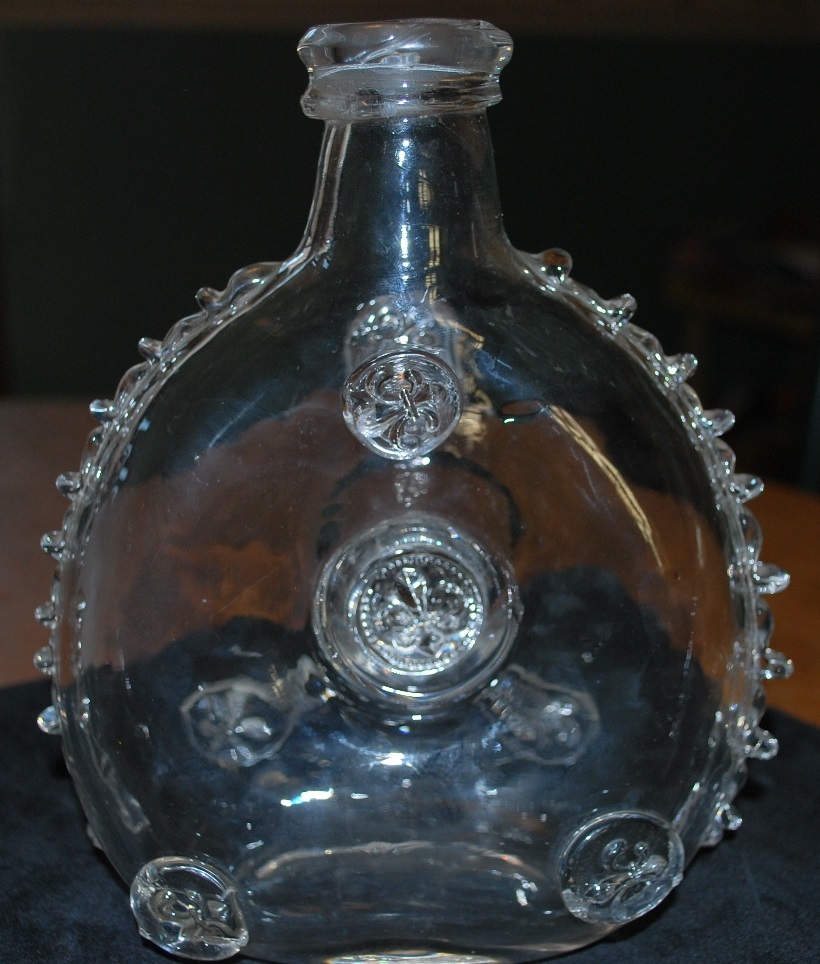 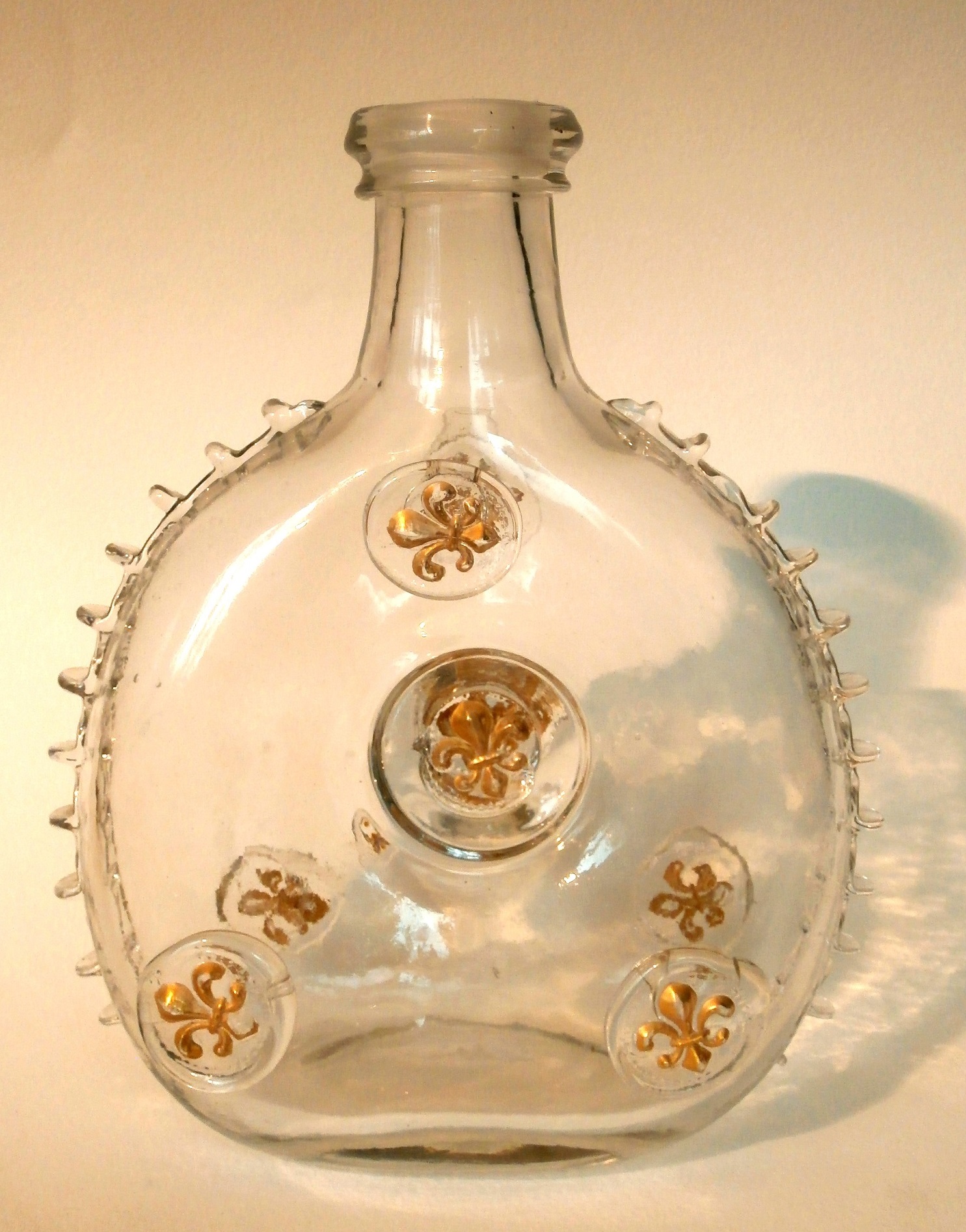 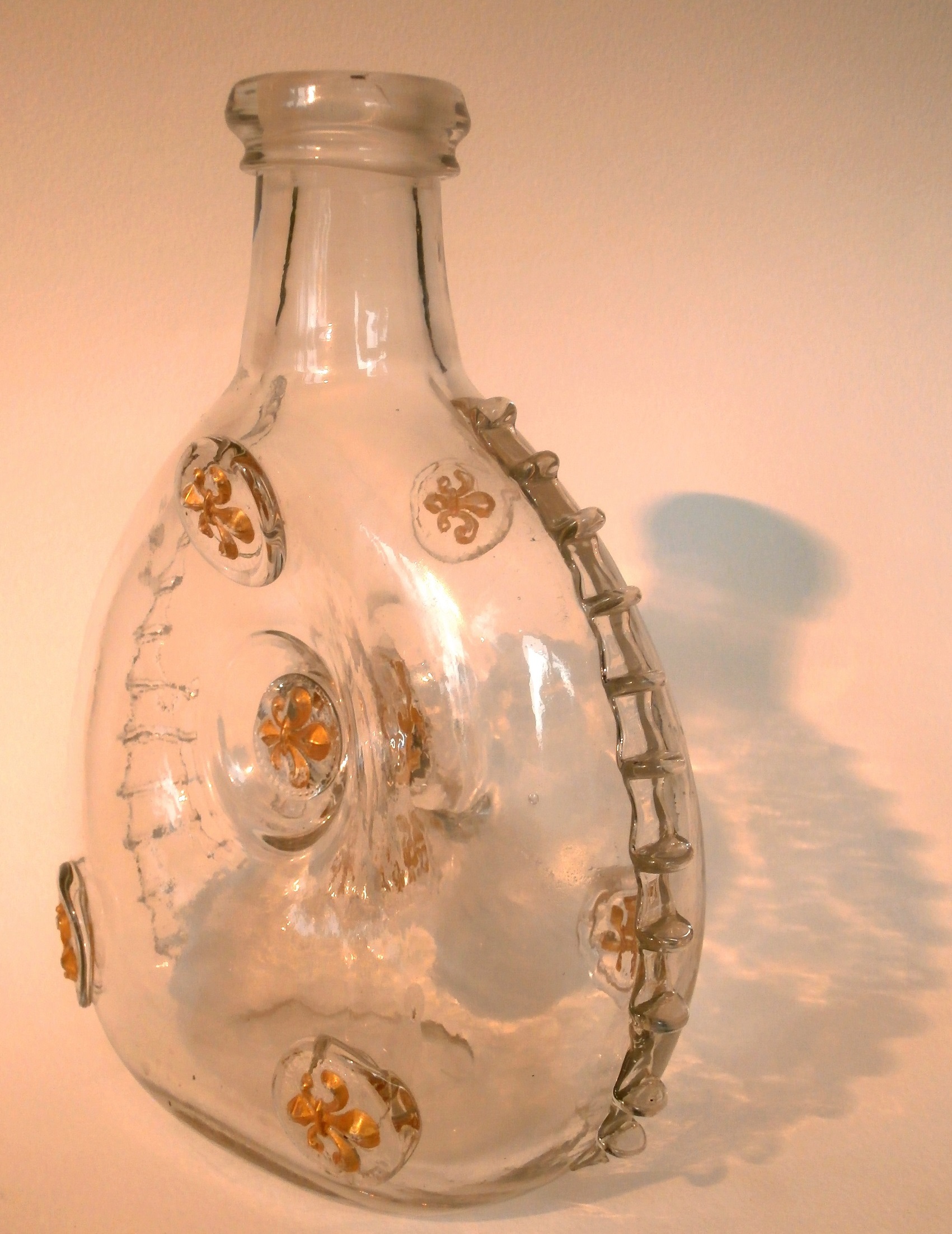 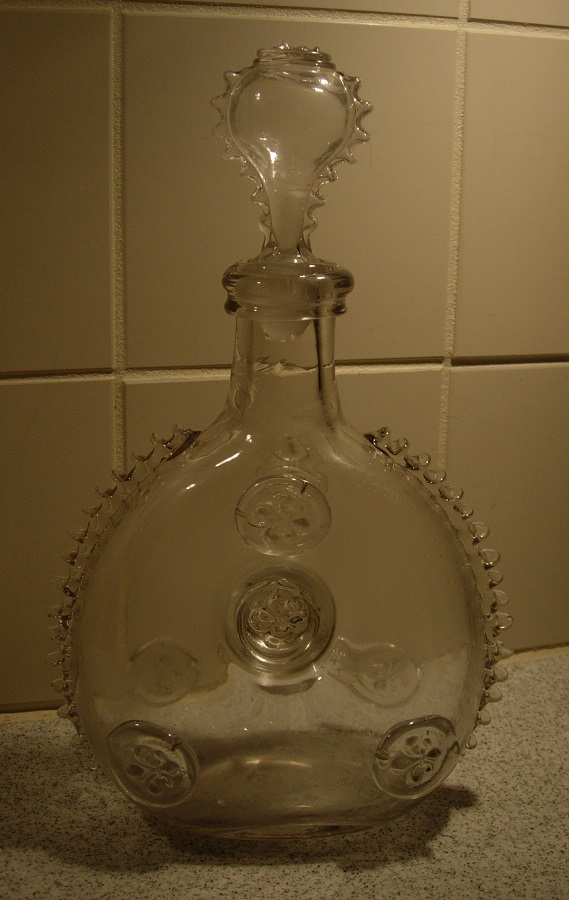 |
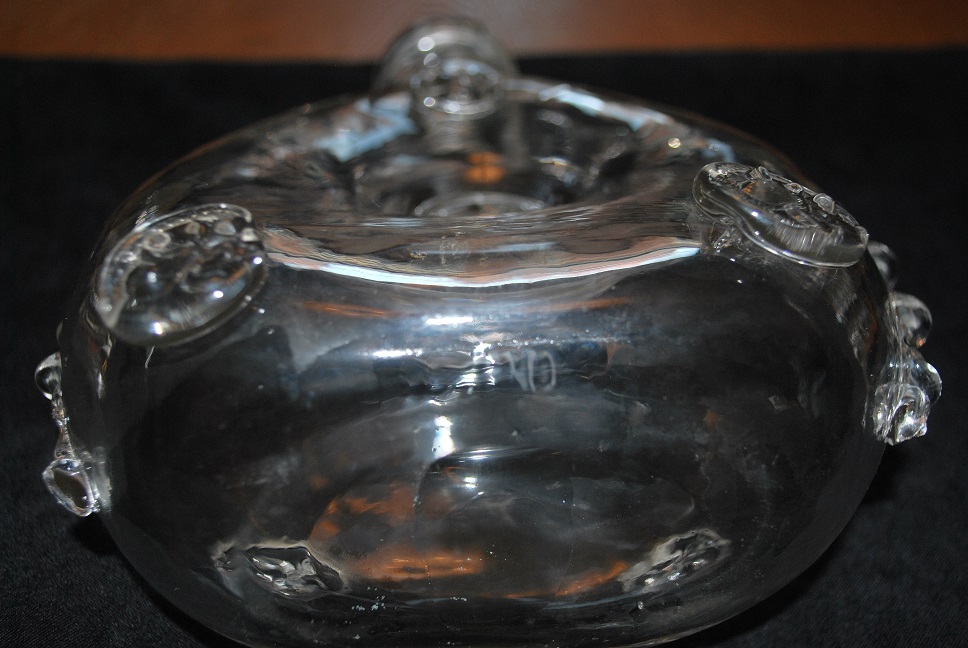 No Engraving 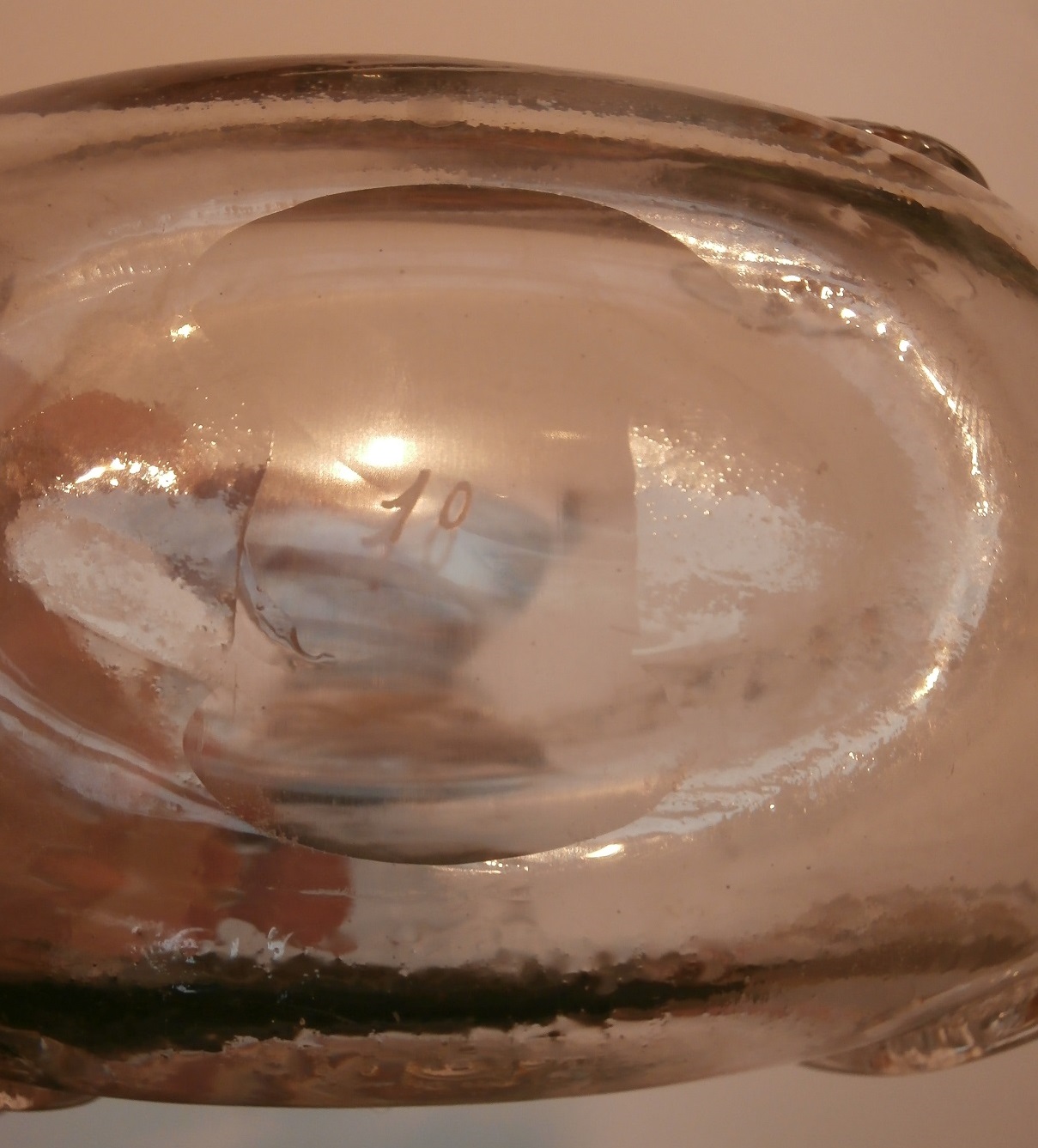 Engraved Number 10 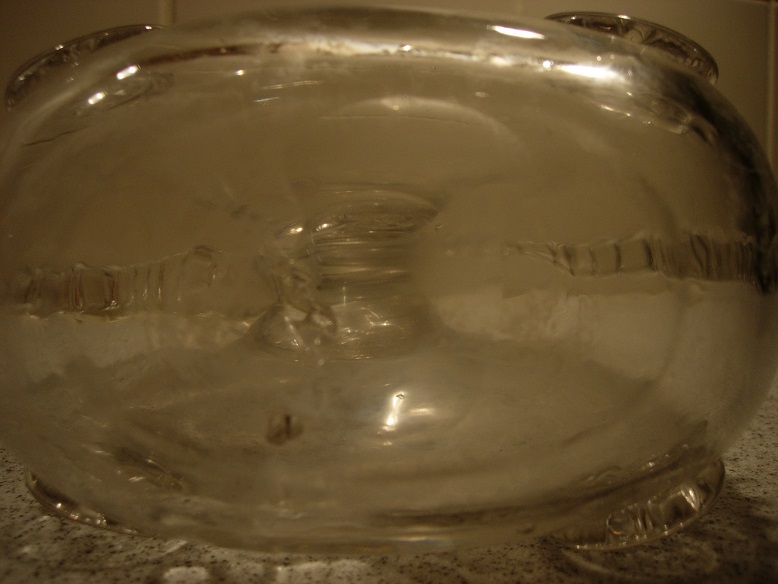 No Engraving - Word "Depose" cast into glass, barely visible. |
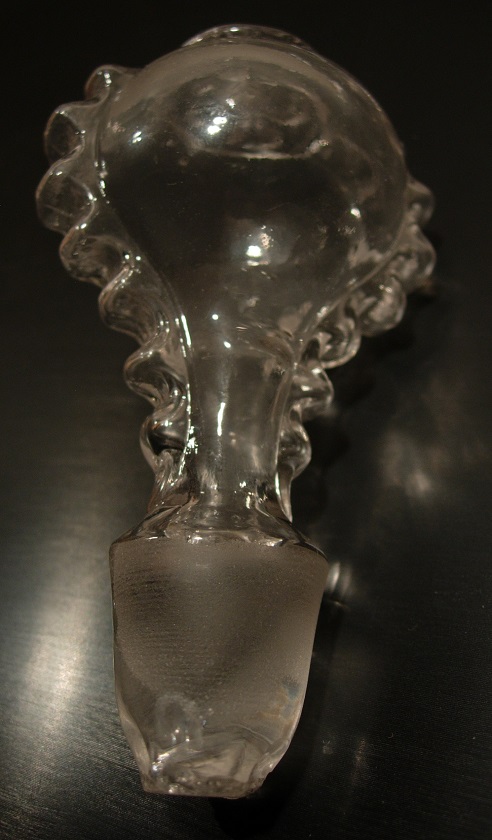 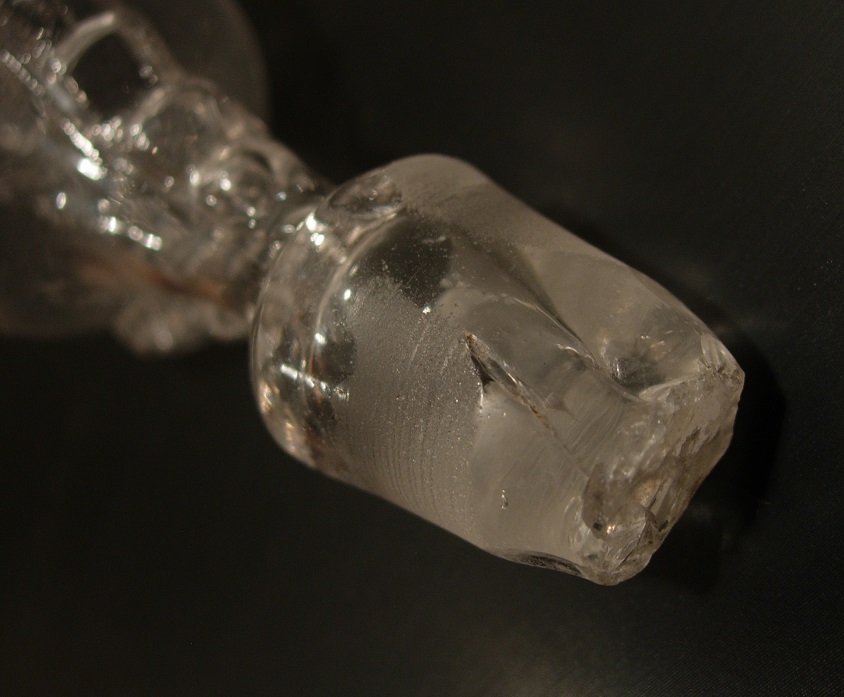 Very coarse design. Irregular hand ground insert. Rough cut off under the insert. |
Unknown | According to Remy Martin all of the bottles sold between 1874 to 1937 were labelled "Age Inconnu" and sold under that name. | Unknown | Unknown | Unknown | Top Bottle: No markings, irregular shaped hand-blown bottle with 8 & 9 fins. Fleur-de-Lys medallions with varying orientation. Manufacturer unknown. Middle bottle: Marked No.10 but no other engraving. 11 fins on each side, very irregular. Fleur-de-Lys gold plated with random orientation. Bottom bottle: Glass. No markings. 17 and 16 fins on the sides. Fleur-de-Lys are all in horizontal orientation and shape is not crisp as if stamping was done quickly and without giving the glass enough time to set, resulting in some slumping. This bottle shows signs of rapid manual manufacturing. Core bottle was probably blown into a mold where it acquired the basic shape and the word "DEPOSE". Additional features were added by hand, which explains the great variations in bottles of this generation. There are many bubbles and foreign matter trapped inside the glass. Manufacturer unknown. These three bottles are the earliest types of Louis XIII decanters I have uncovered to date. I never seen a full one. The dates of production are entirely speculative. |
| 1900 TO 1936 |
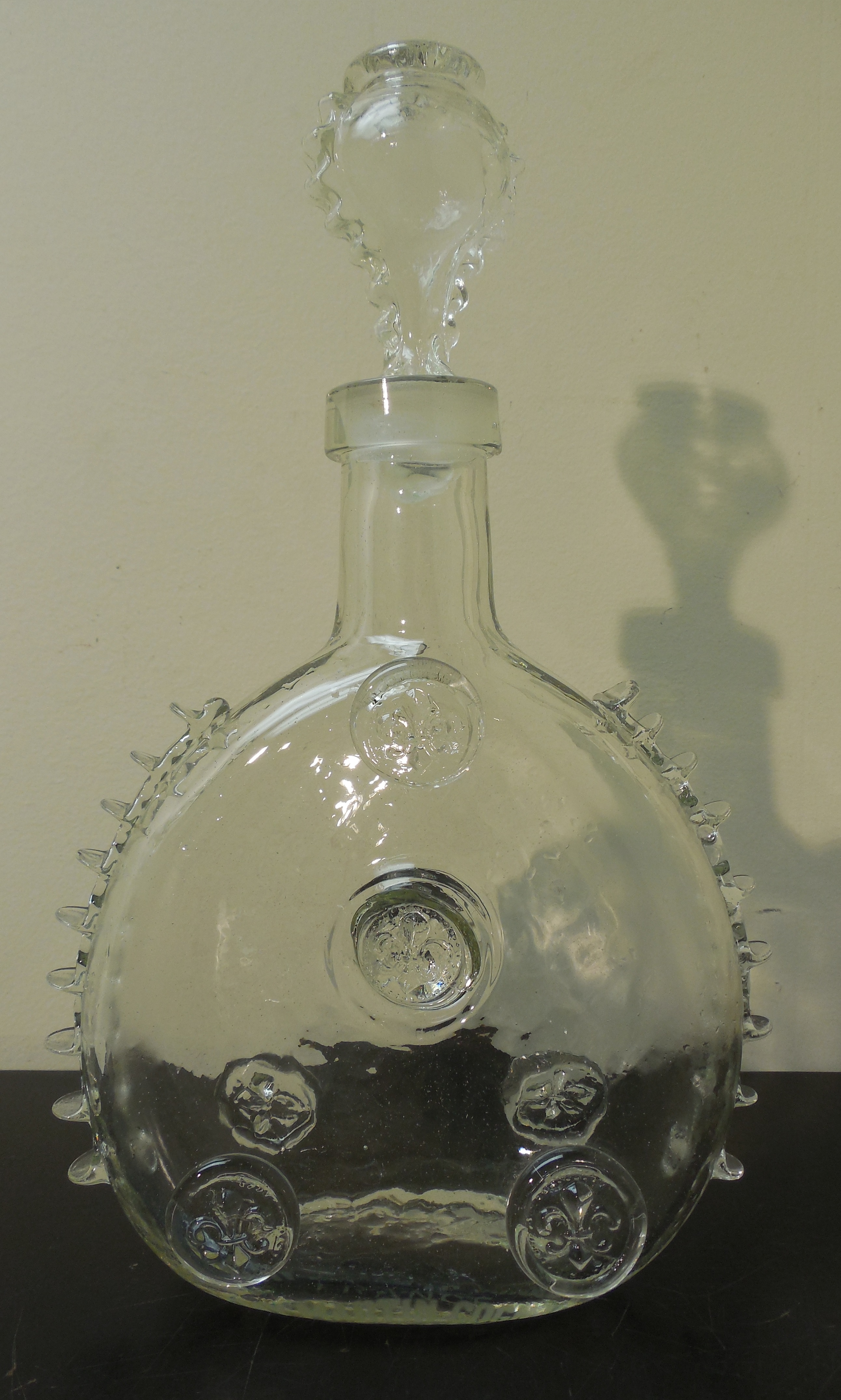 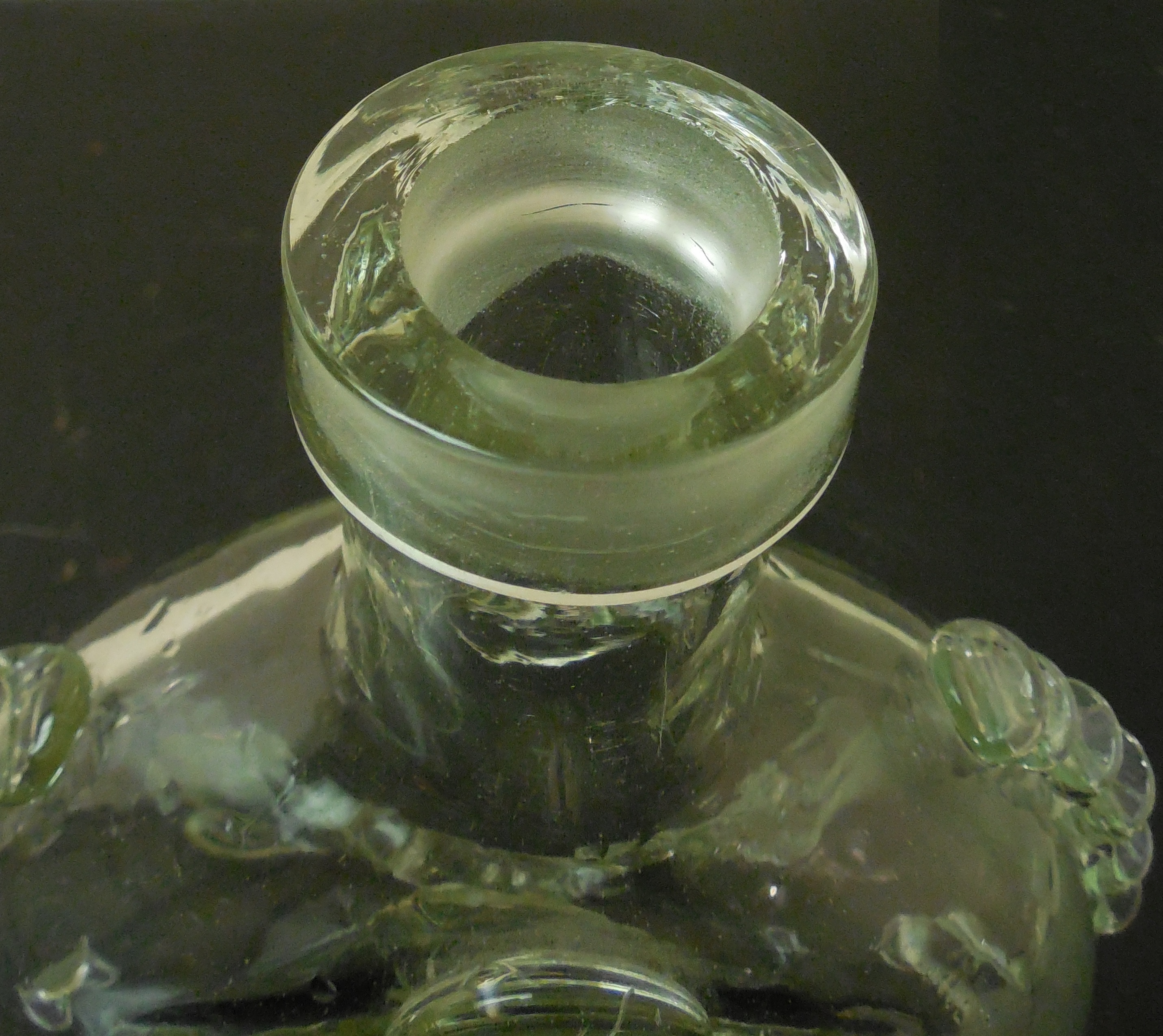 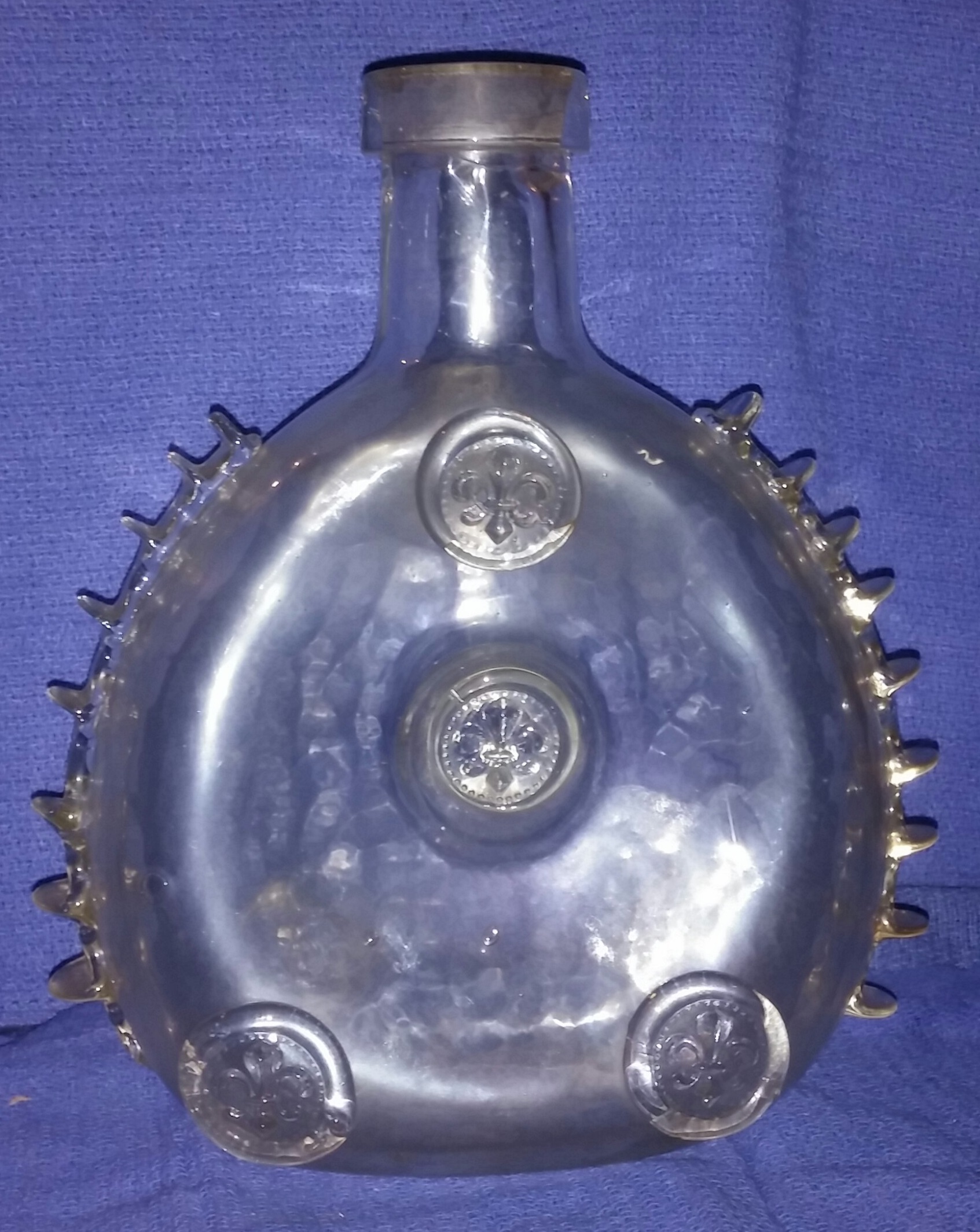 |
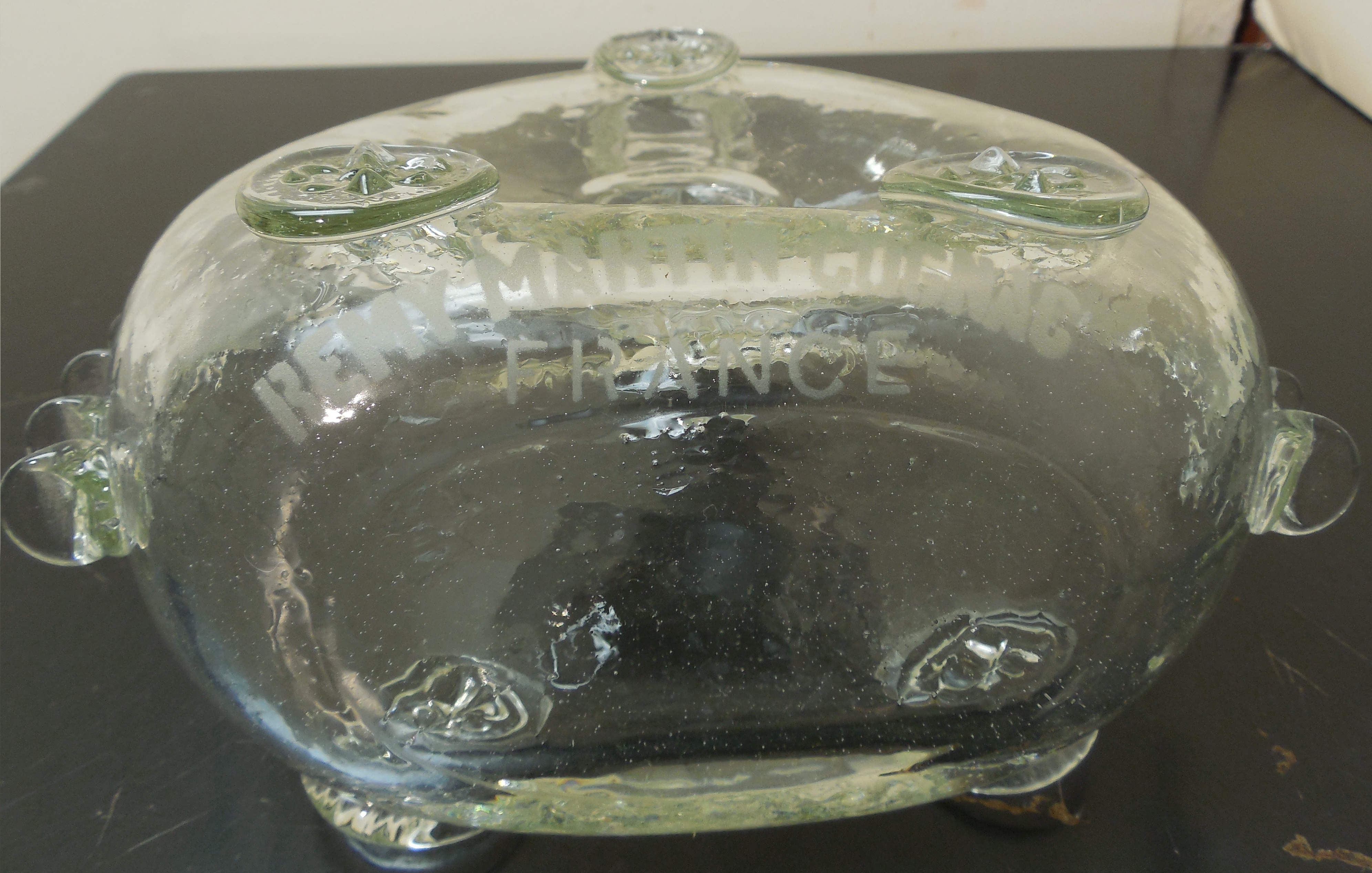 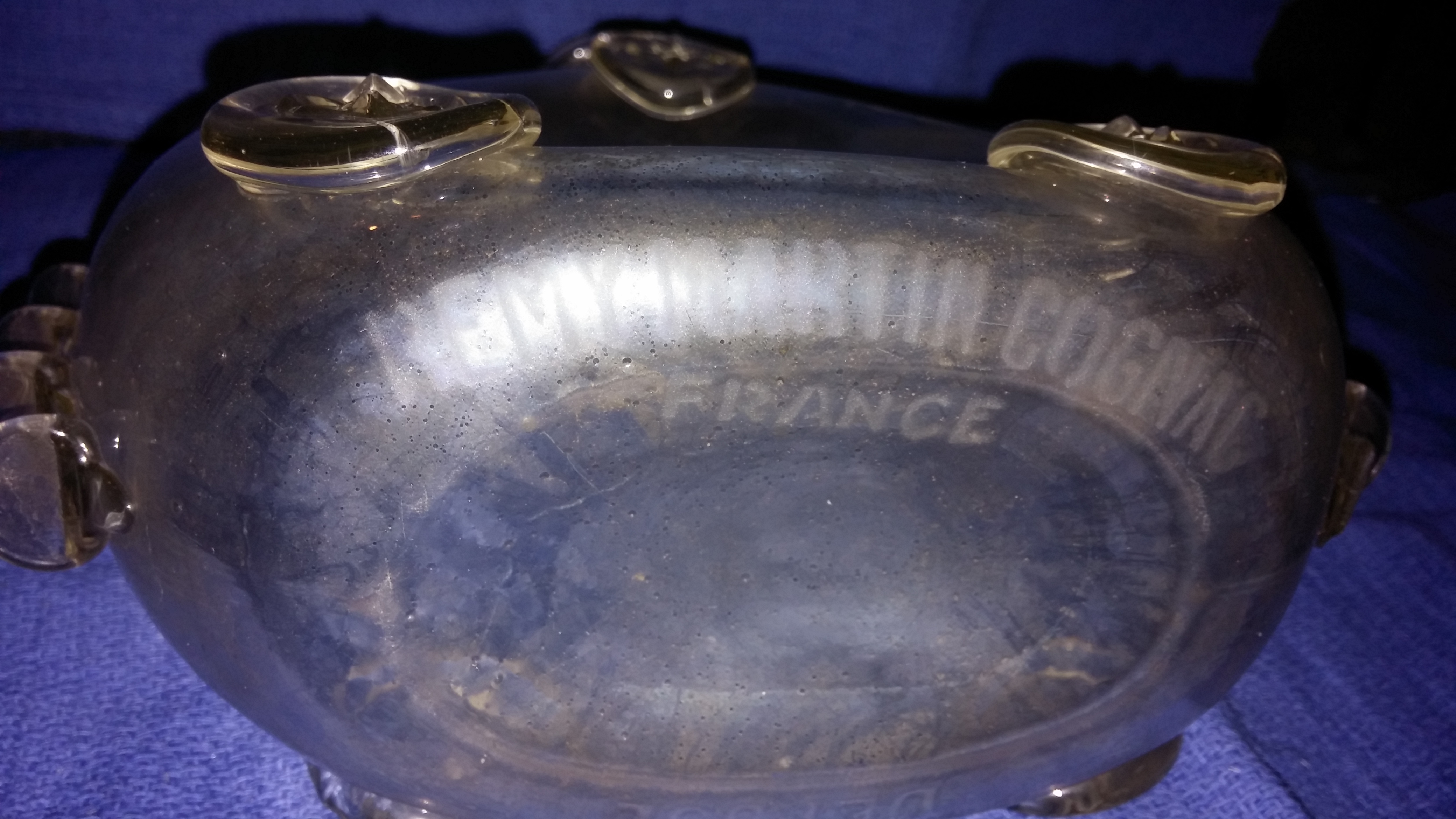 Remy Martin Cognac - France - Acid Etched Markings. |
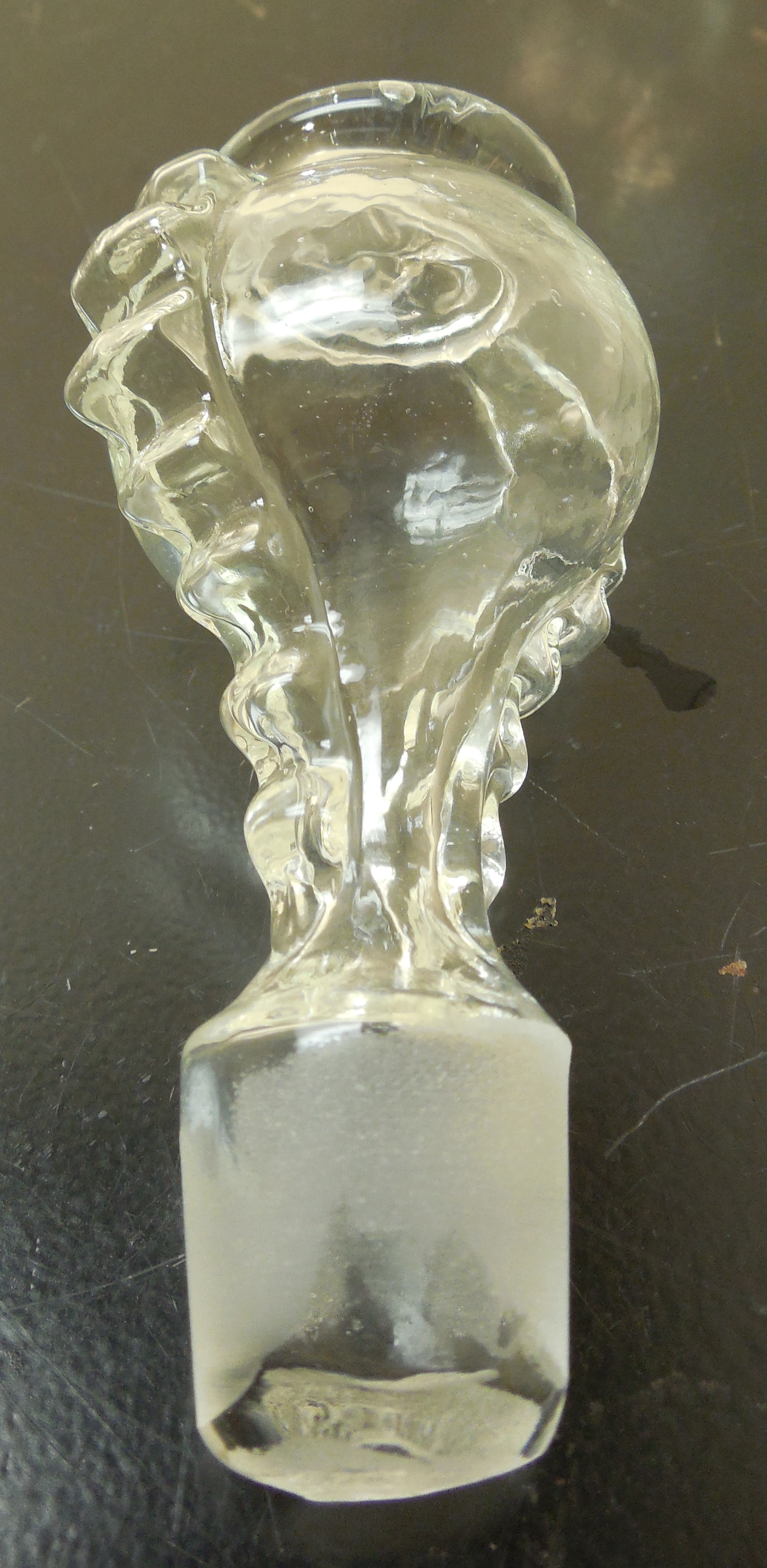 Very thin glass. Irregular hand ground insert. Small round opening under the insert |
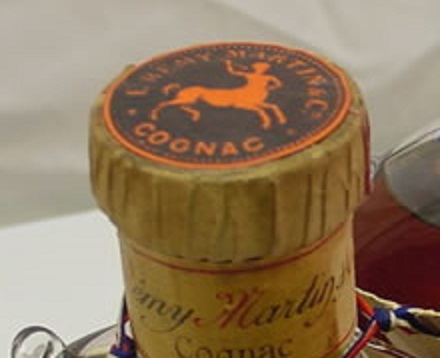 This appears to be a pre-Baccarat glass bottle. It is presented by the owner with a 1938 Royal visit card. Possibly incorrectly added to a pre-1938 bottle. |
According to Remy Martin all of the bottles sold between 1874 to 1937 were labelled "Age Inconnu" and sold under that name. | Unknown | Unknown | Unknown | Irregular hand-blown glass bottle. Base very irregular. 9 fins per side. Cylindrical neck with significantly offset opening. Manufacturer unknown. This is probably the standard commercial glass bottle used from 1900 until the first use of Baccarat crystal bottles in the 1930s. |
| 1937 TO 1940 |
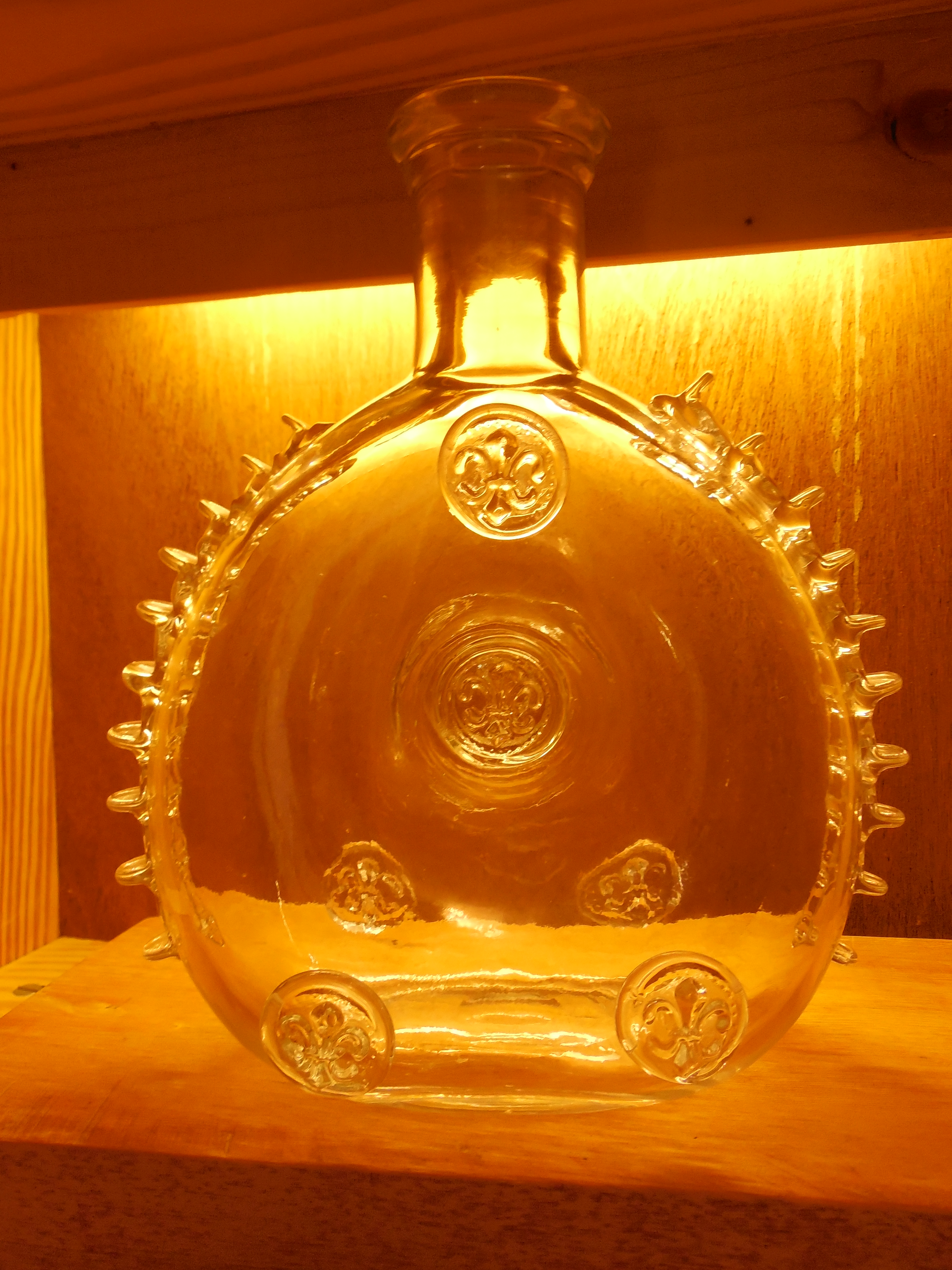 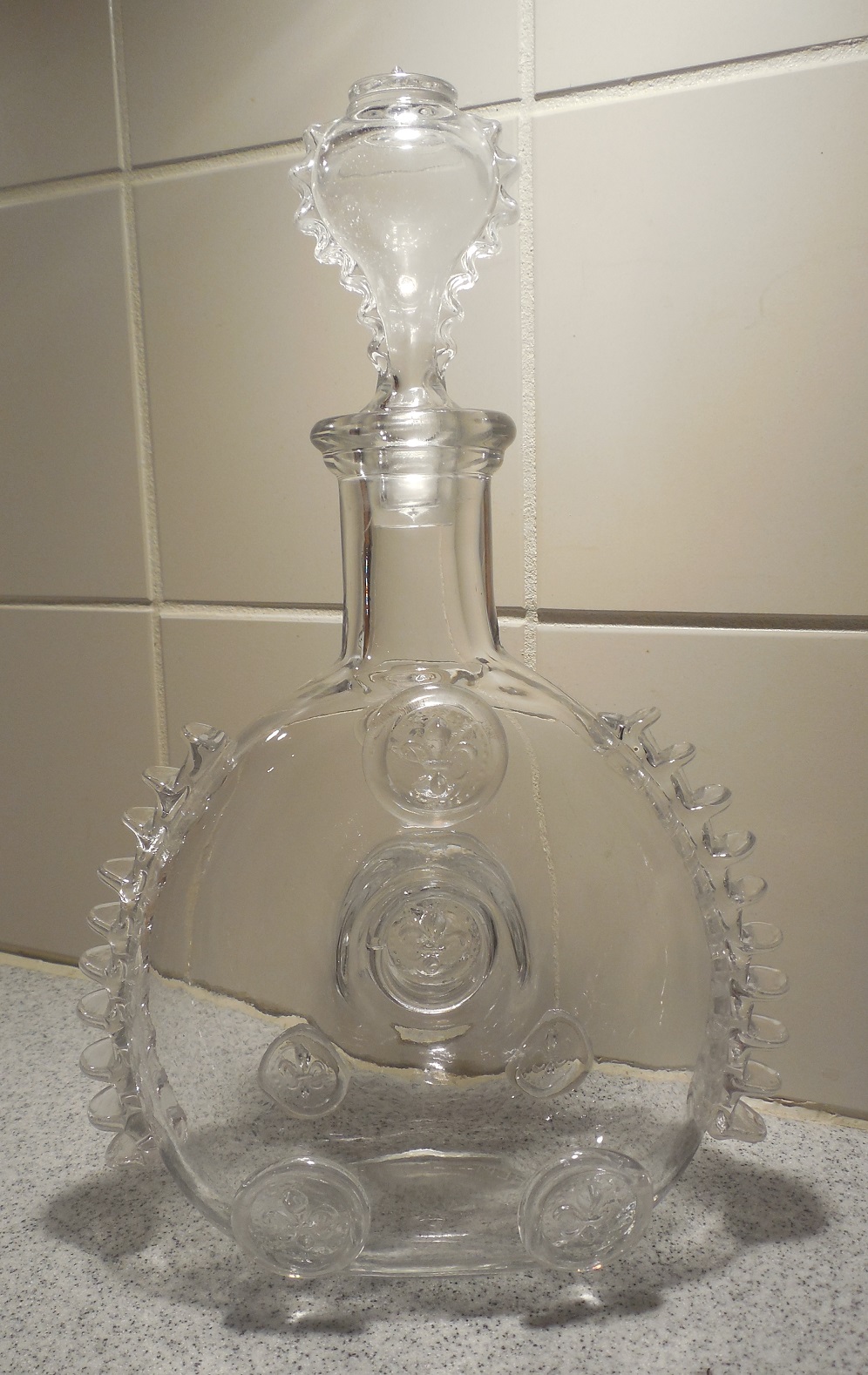 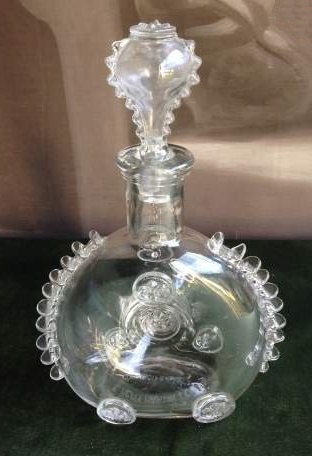 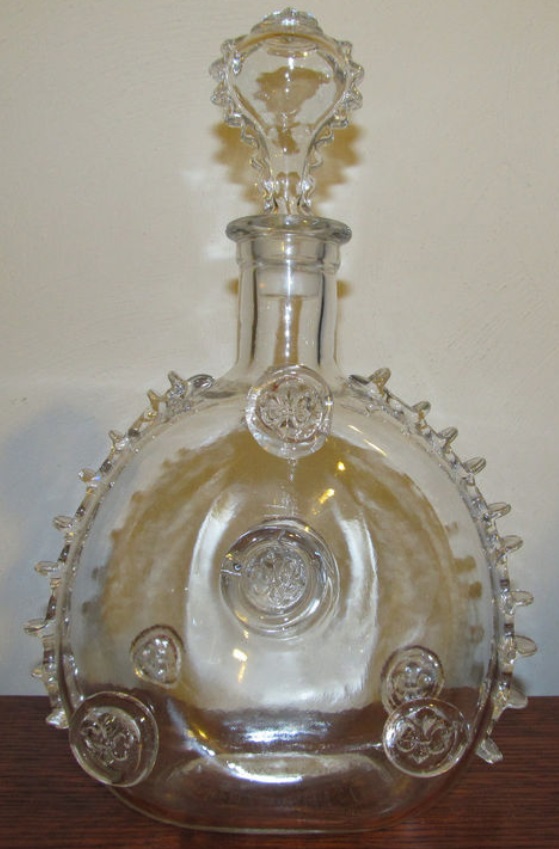 |
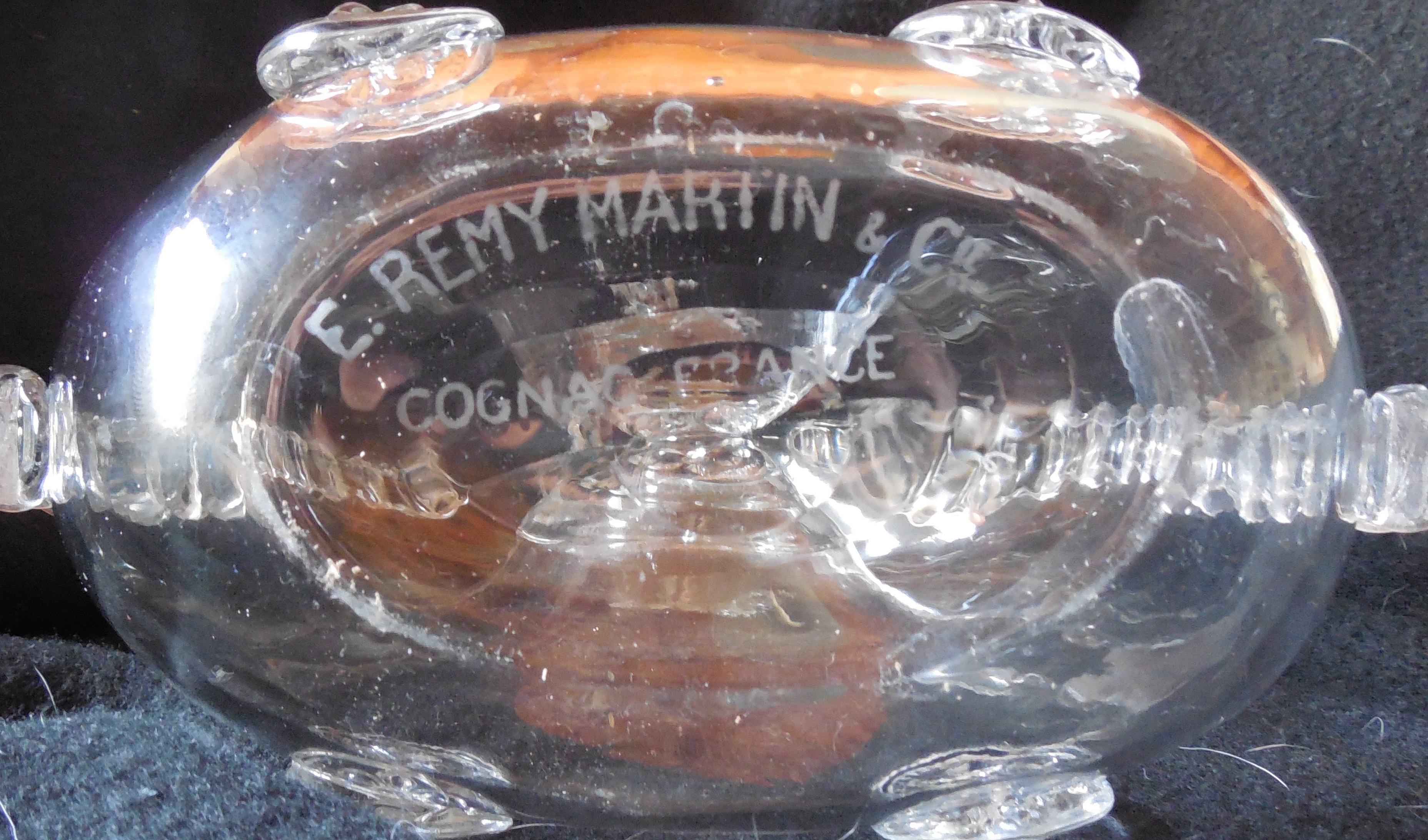 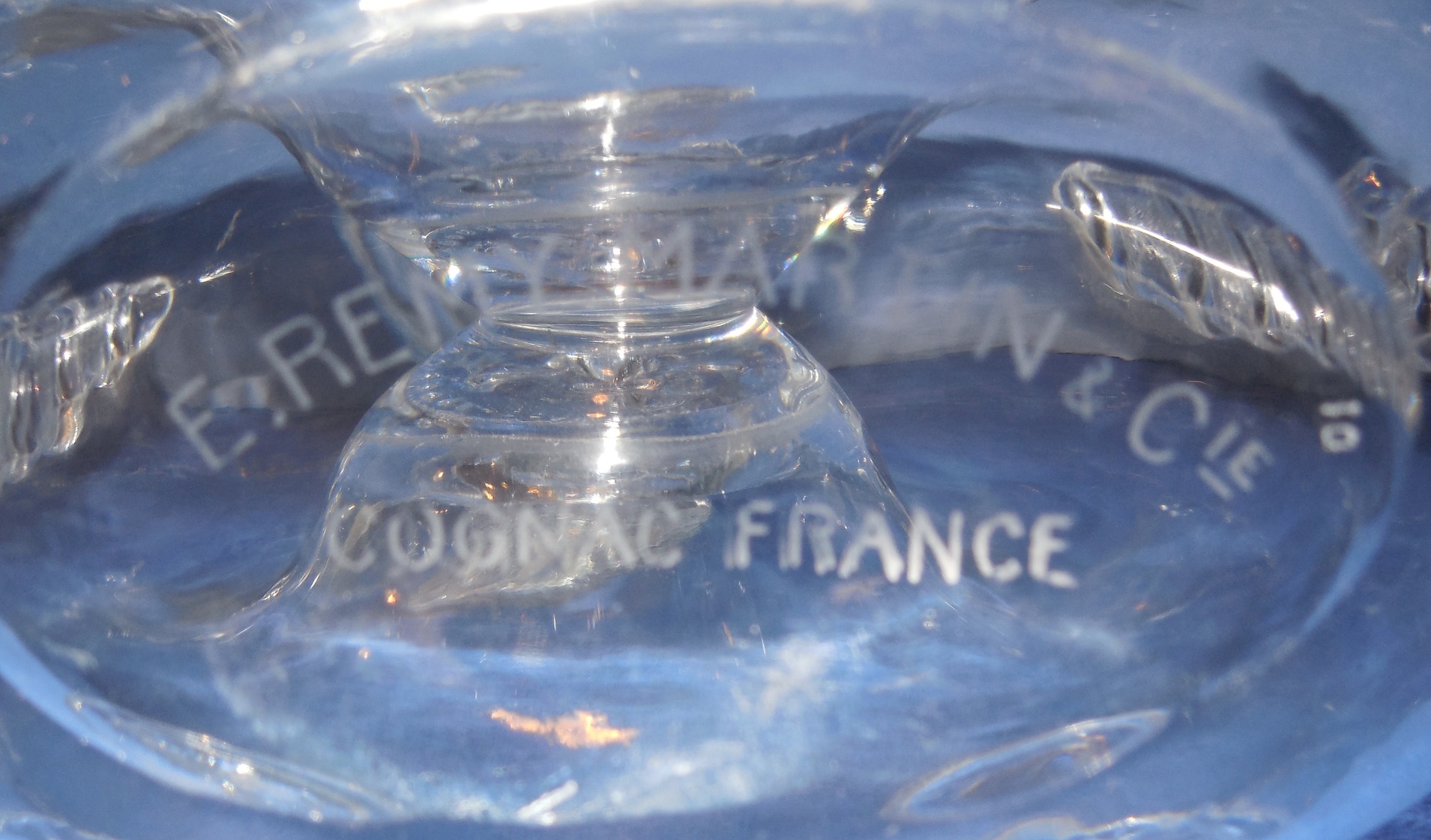 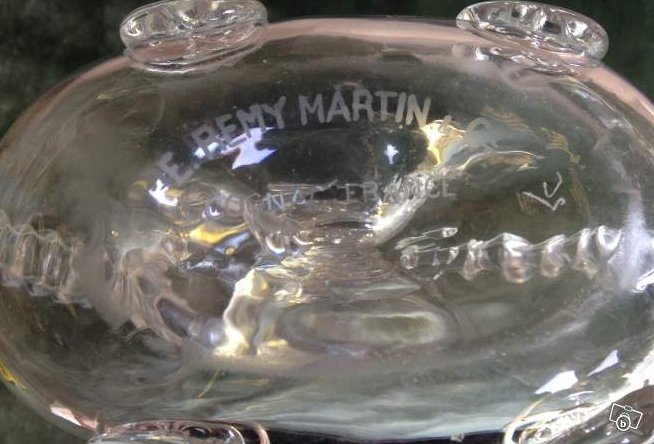 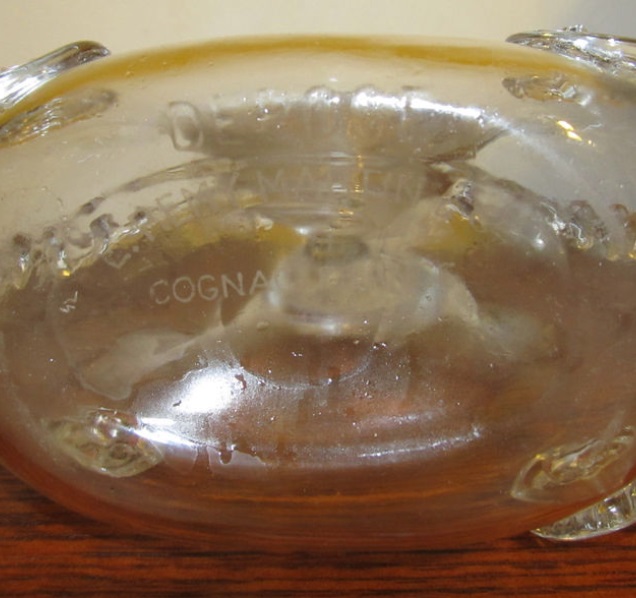 E.Remy Martin & Cie Cognac France Empty bottles are identical to the 1938-1939-1940 bottles below but missing Paper Logo Label so they are probably Baccarat. Engraved No.6, No.10, No.39, No.42 |
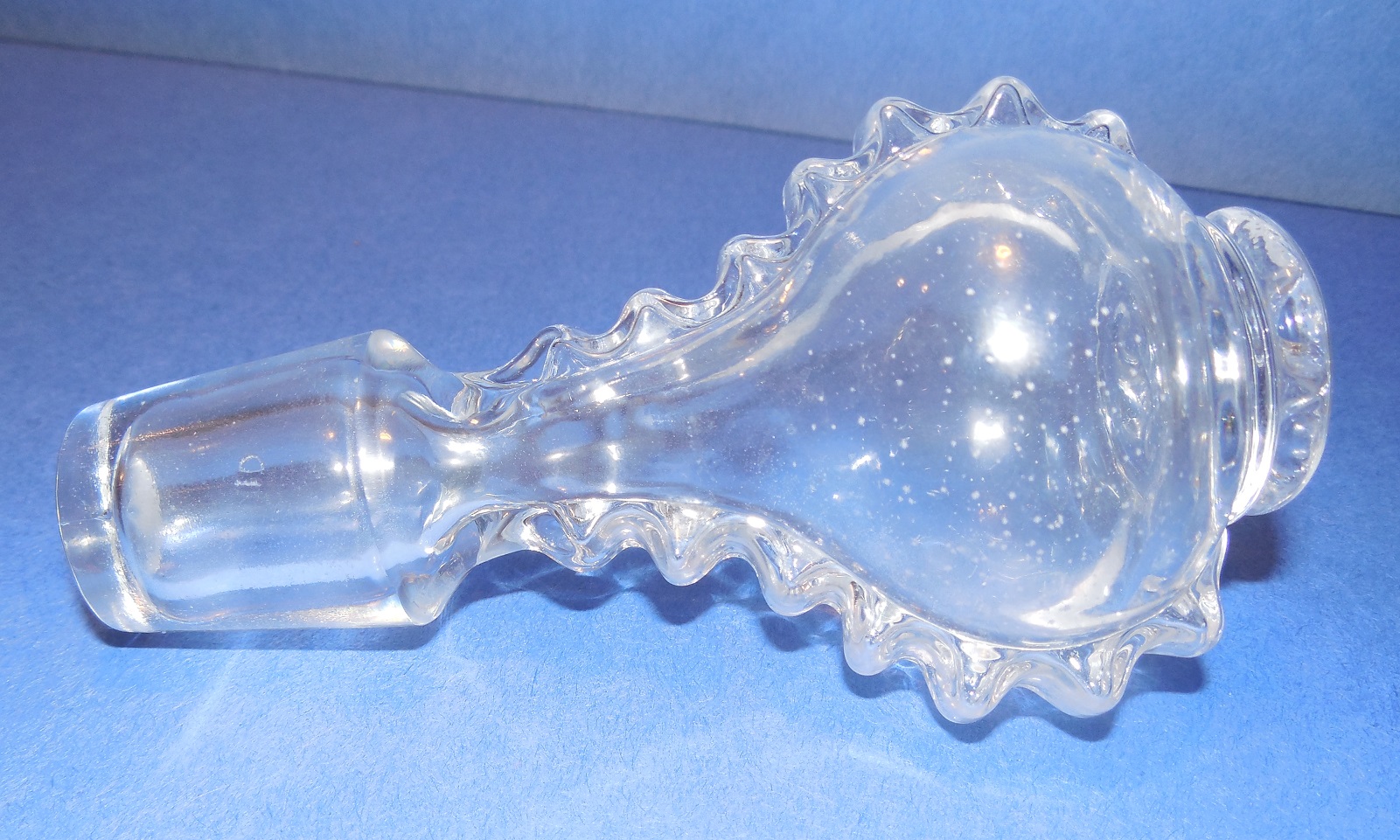 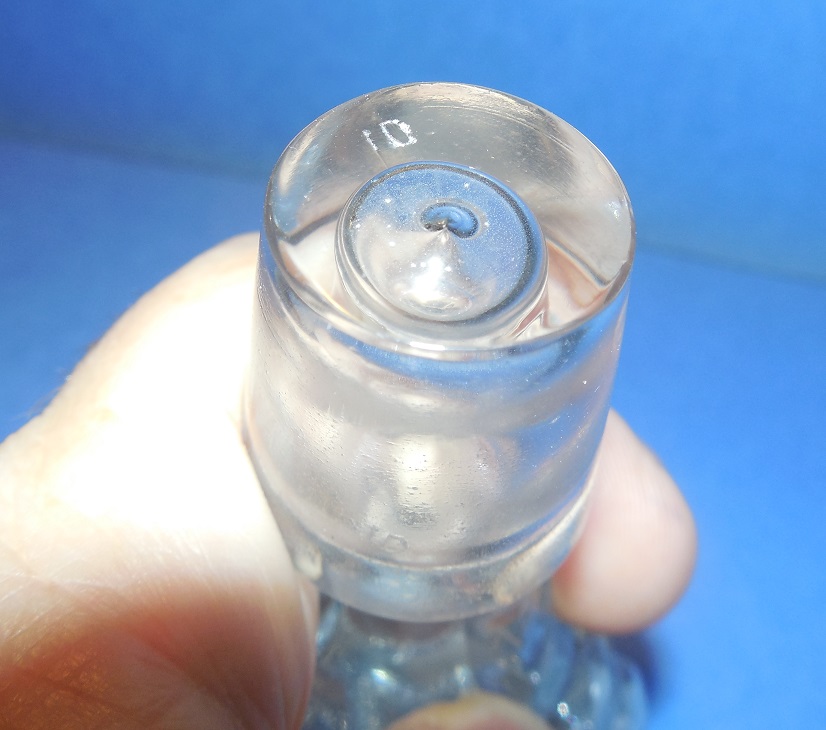 Stopper engraved on side and under the tip with same number as decanter. Stopper interior space "contaminated" with white "specks". Stopper is fully sealed so contamination must have occured during fabrication. |
Unknown | Unknown | Unknown | Unknown | Unknown | Empty early Baccarat bottles. No Baccarat name or logo engraved on the bottle just as the full bottles pictured below. Decanters are individually numbered and stoppers were also numbered although only one has retained its original stopper. Note size and position variations in Fleur-de-Lys medallions on these bottles compared to post-WW2 Baccarat design. |
| 1938 TO 1940 USA |
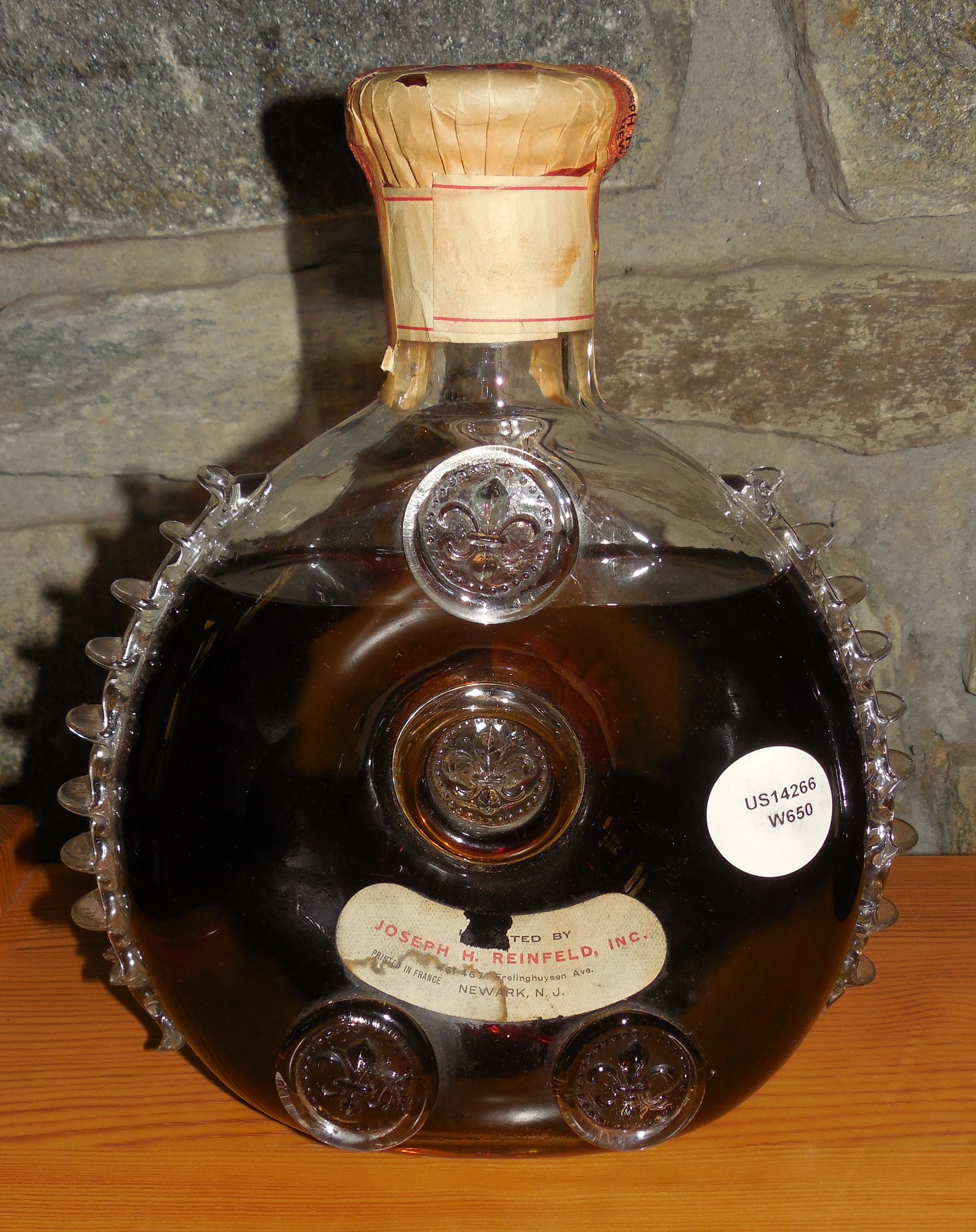 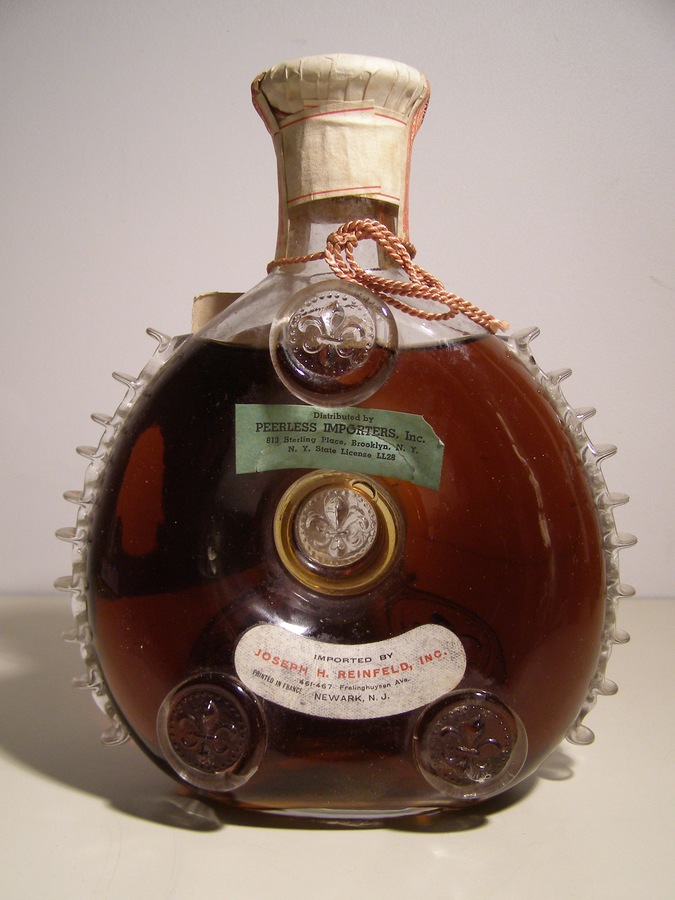 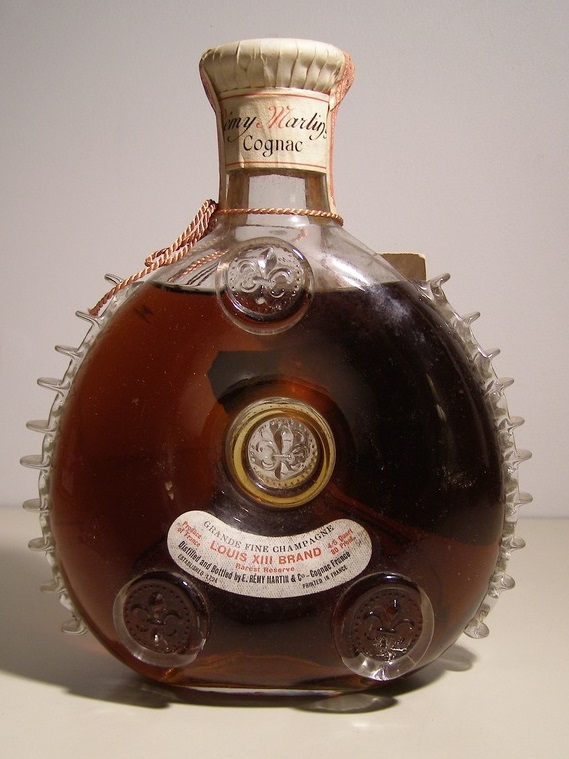 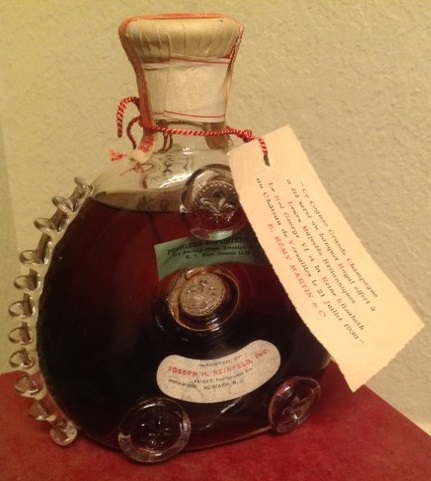 |
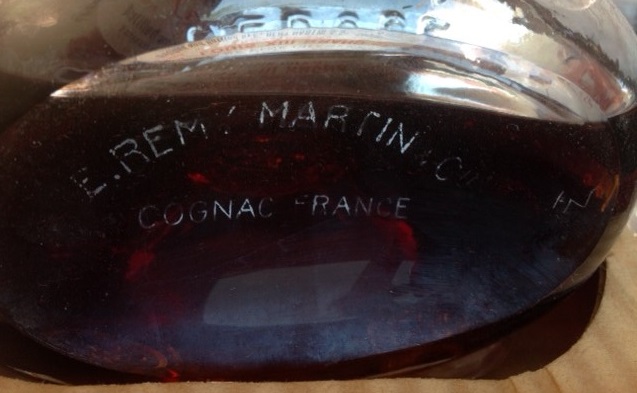 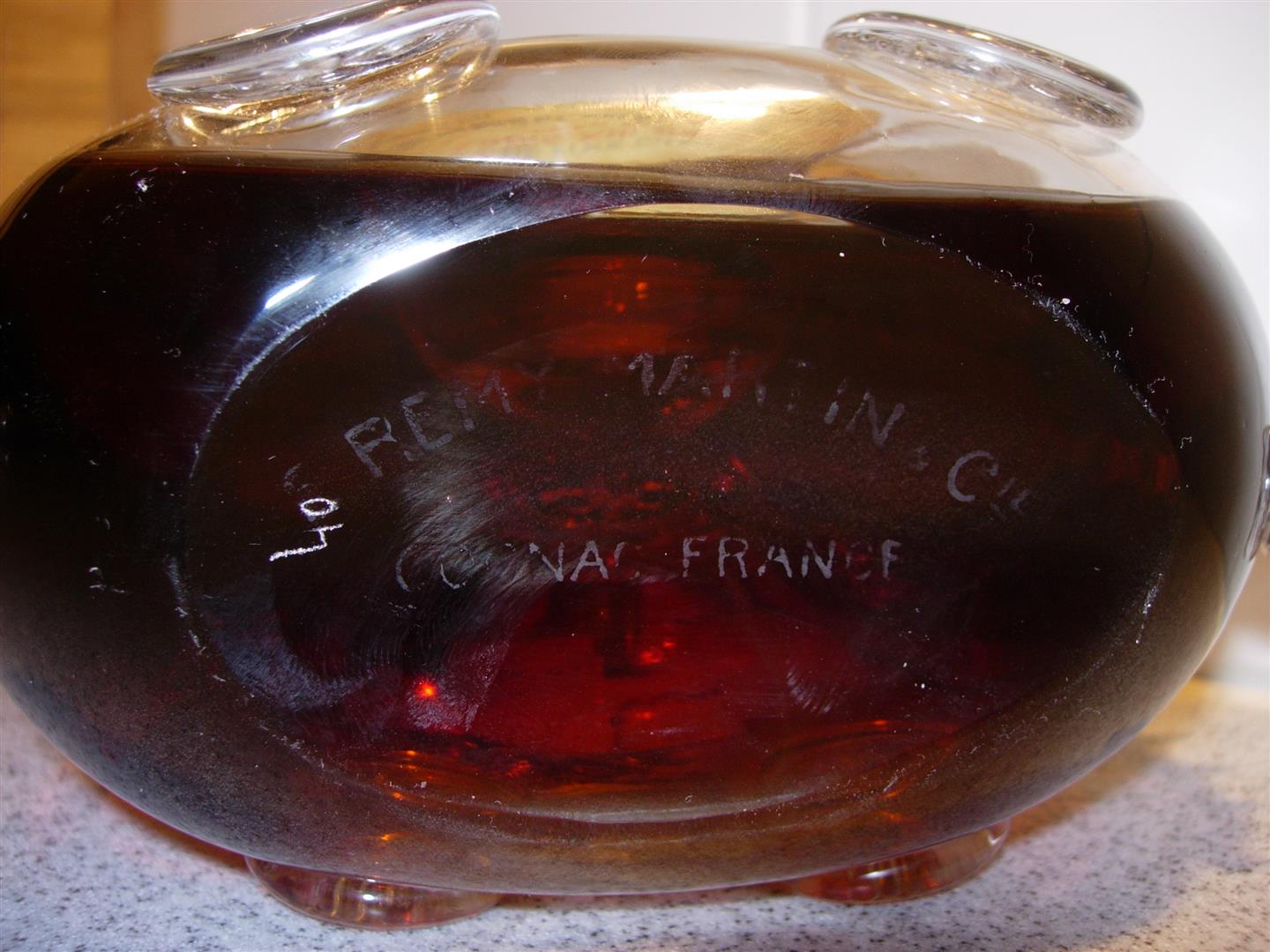 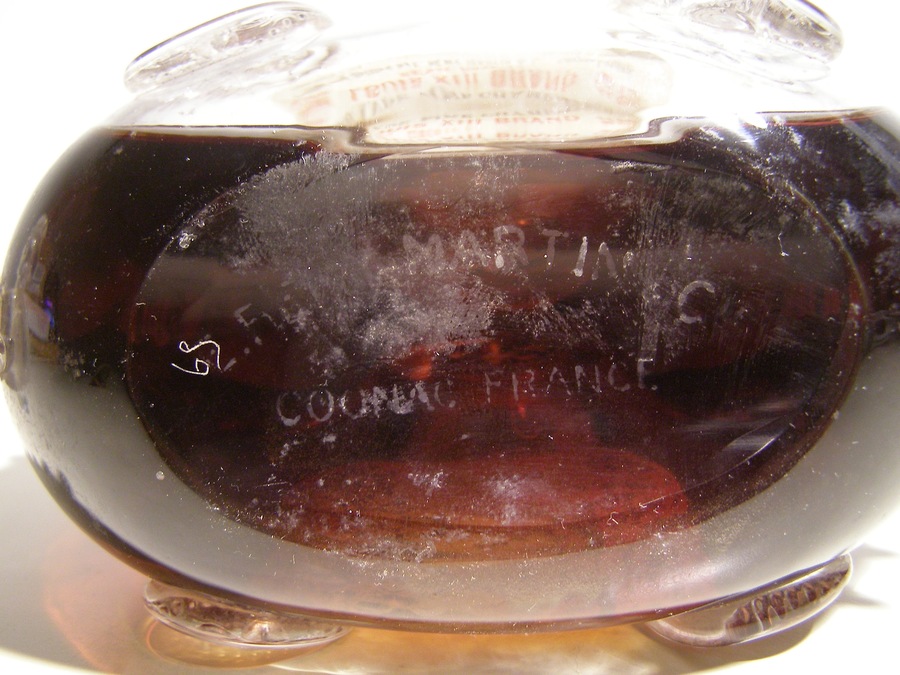 E.REMY MARTIN & Cie COGNAC FRANCE Decanters No. 2, 40 & 59 Did these bottles have a Baccarat paper Logo like the bottle below? 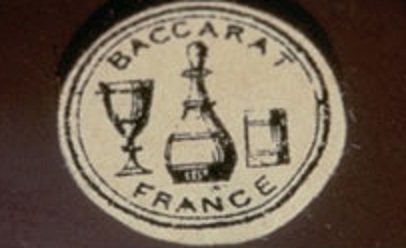 |
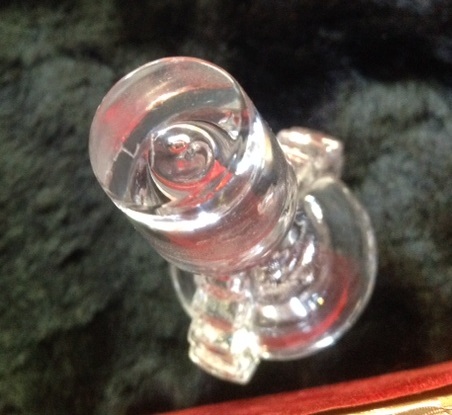 Numbered stopper (No.2) with stamped glass "Fleur de Lys" medaillon on top. |
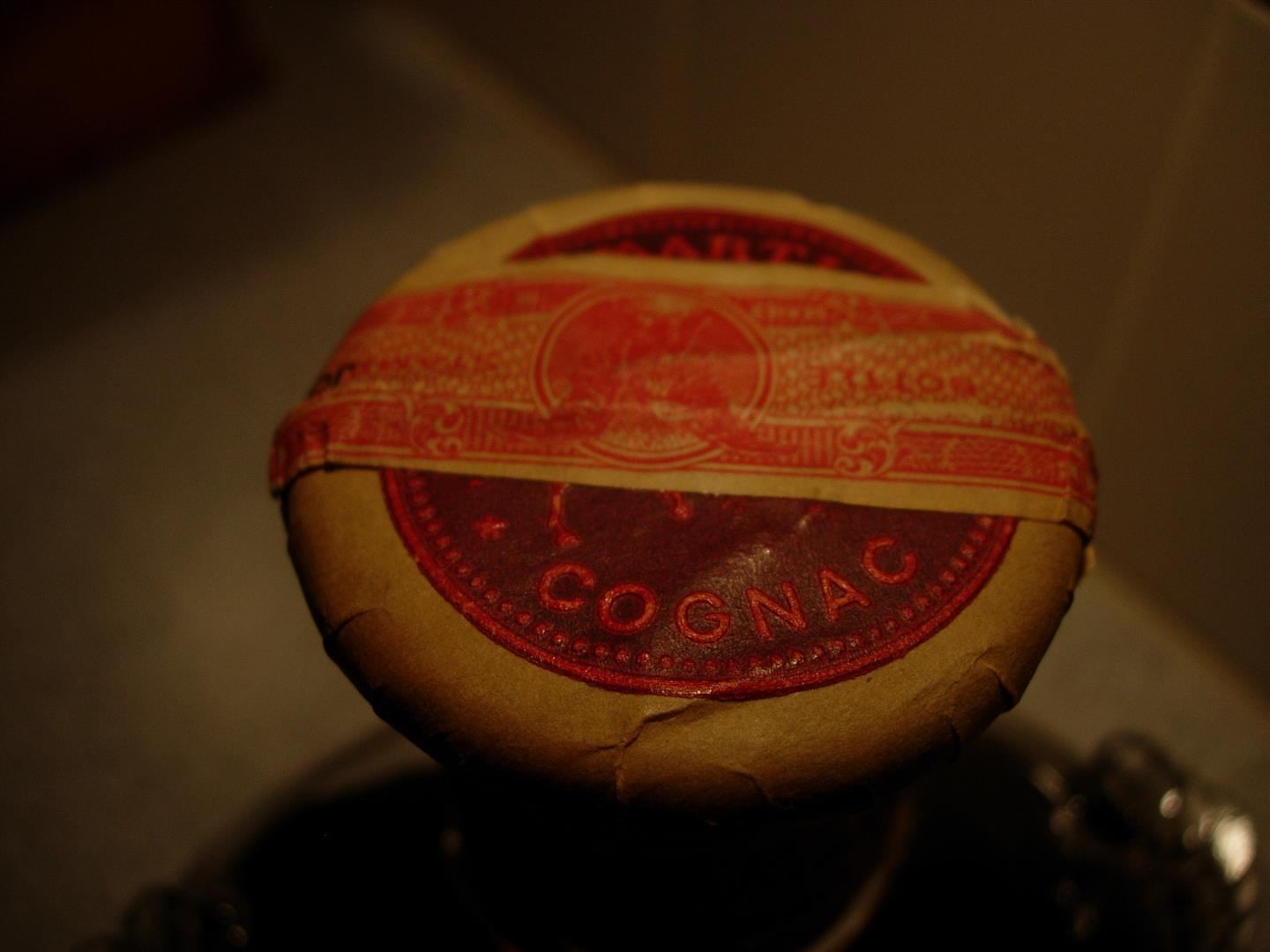 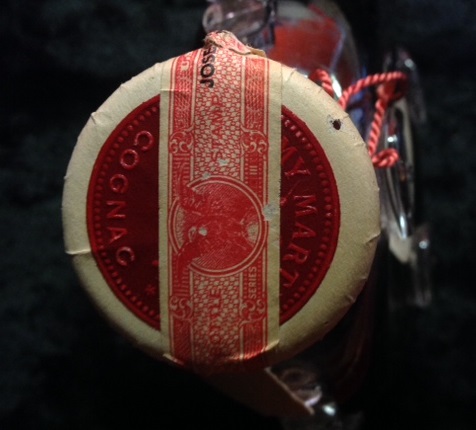 |
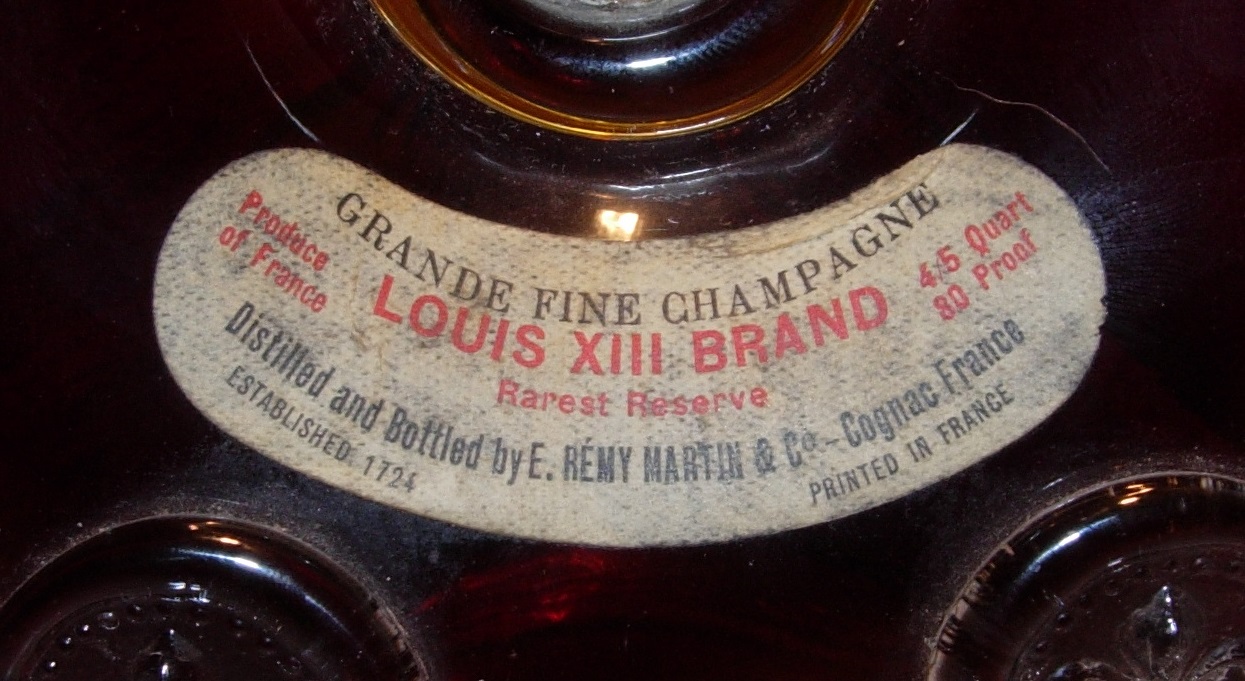 Note use of the "Louis XIII Brand" designation prior to WW2. Remy Martin erroneously claims that this name was introduced in the USA in the 1950s. 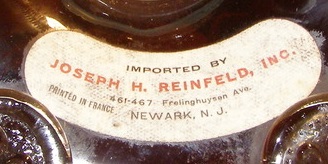 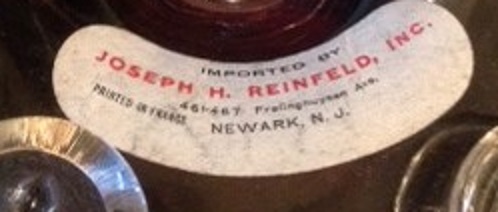 Joseph H. Reinfeld Inc. imported these three bottles. Not to be confused with Renfield Importers Ltd. the primary Remy Martin importer after World War II. |
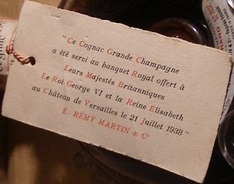 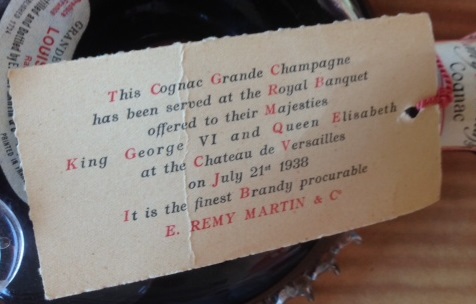 1938 Royal Banquet Card. This one two sided, in French & English. |
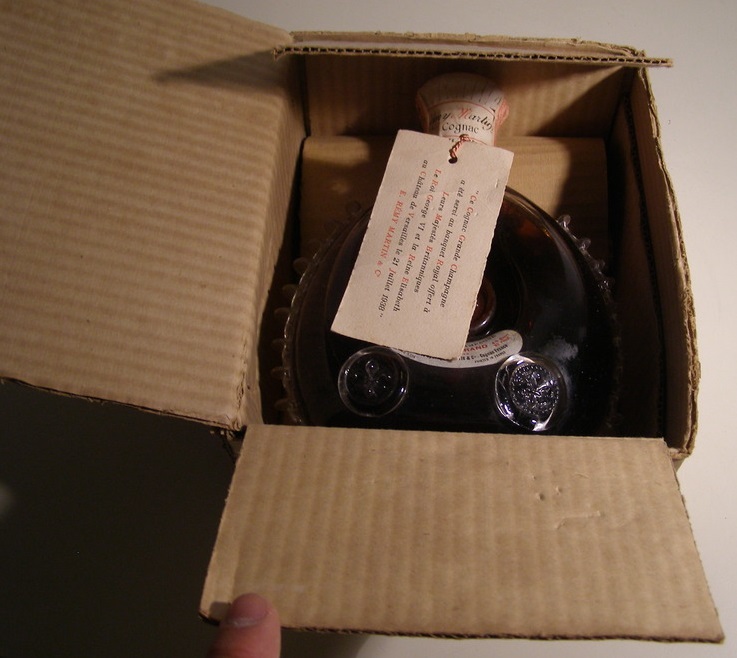 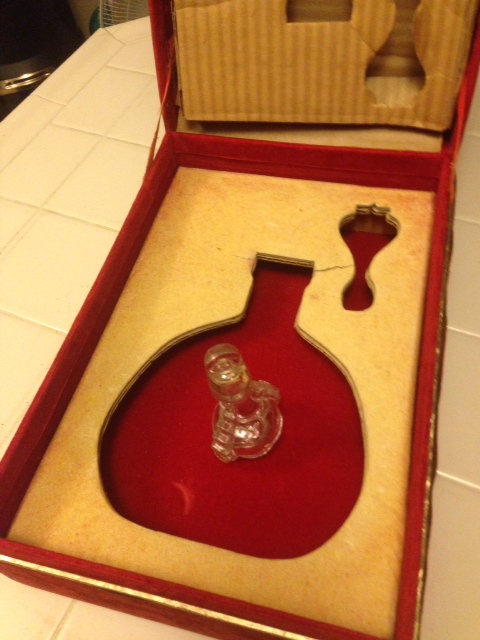 Note that the interior support platform in the velvet case is cut out exactly in the same pattern as the ones in the green cases from 1946. |
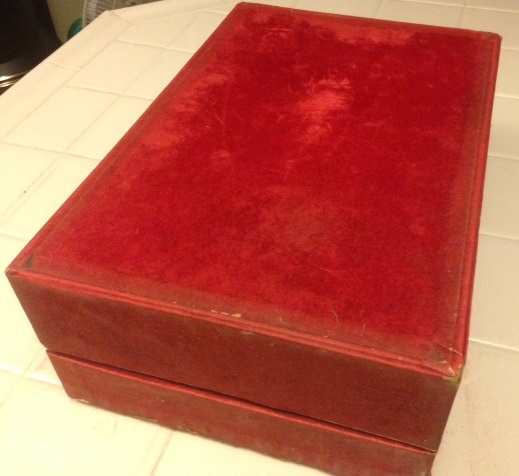 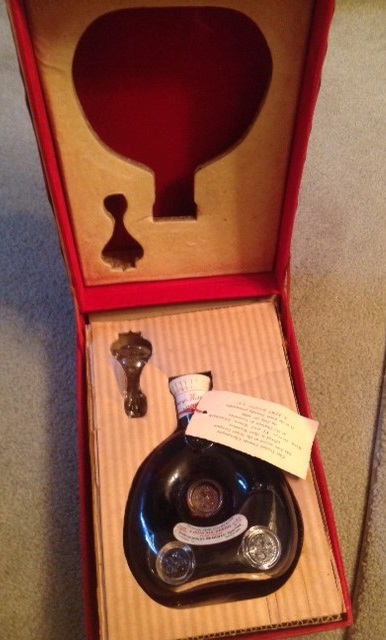 In 1938 to 1940 there were at least these two versions of Louis XIII sold. One in a plain cardboard shipping box, the other in a Red Velvet Case similar to the green cases of 1946. |
These are early crystal bottles probably made by Baccarat. No Baccarat Logo or Name engraved on the bottle, but individually numbered. Joseph H.Reinfeld received a US Liquor Importers License in 1933. He was one of the largest bootleggers during prohibition. The company was rolled into Browne Vintners in the late 1930s and disappeared when Browne Vintners was sold to Seagrams in 1940. Hence these three Baccarat bottles with 1938 Royal Banquet Cards can only be from the years 1938 1939 or 1940. It is notable that these bottles bear the "Louis XIII" name 12-15 years before Remy Martin claims to have introduced it in the USA. The Cognac was known as "Age Inconnu" before this time. Baccarat started engraving their Logo on perfume bottles in 1920 and gradually on other crystal wares after 1935. The round paper logo label was used extensively between 1860 - when Baccarat registered the trademark - and 1945. |
| 1939 USA |
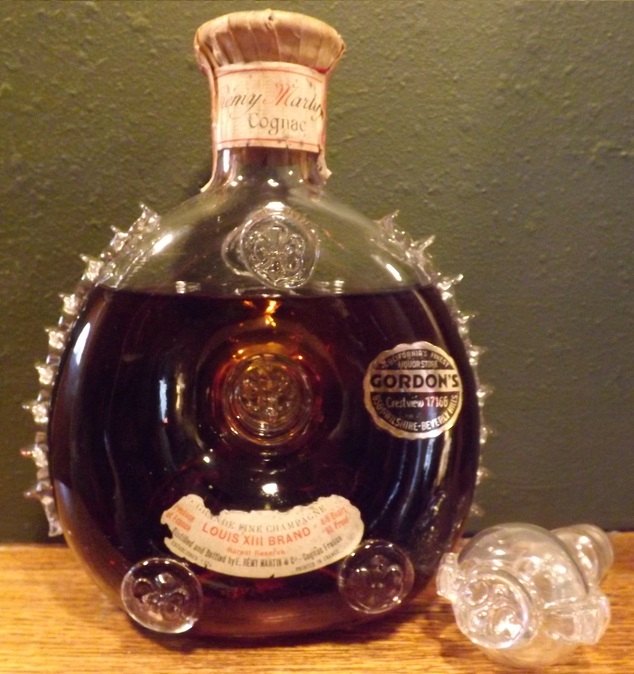 |
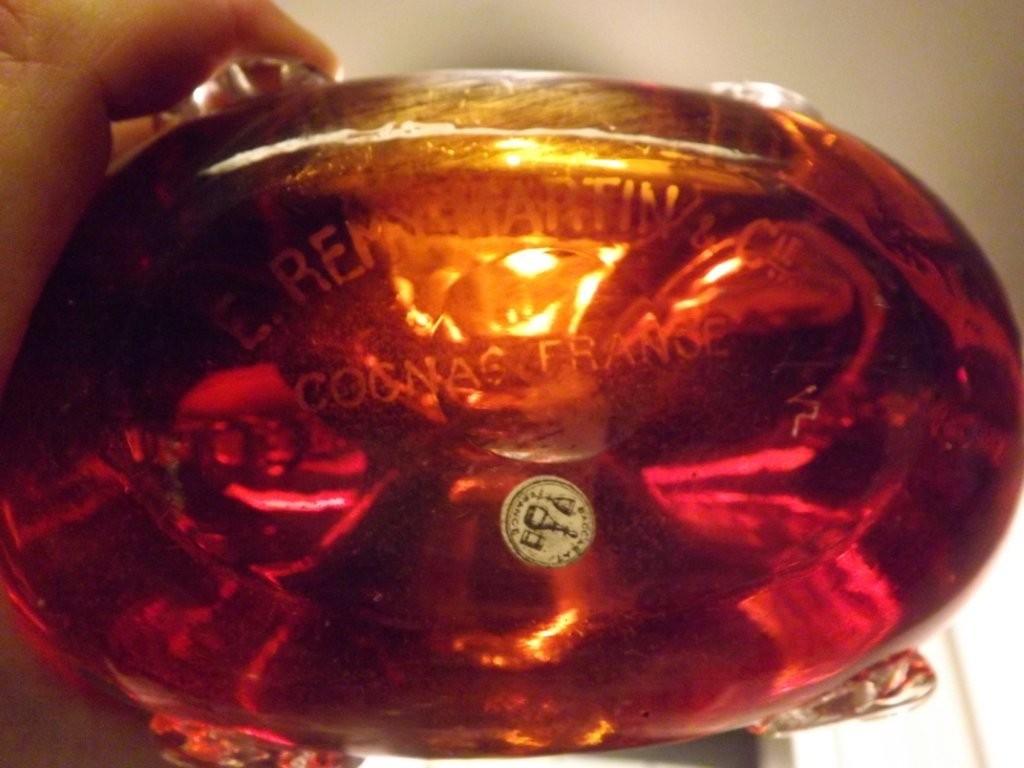 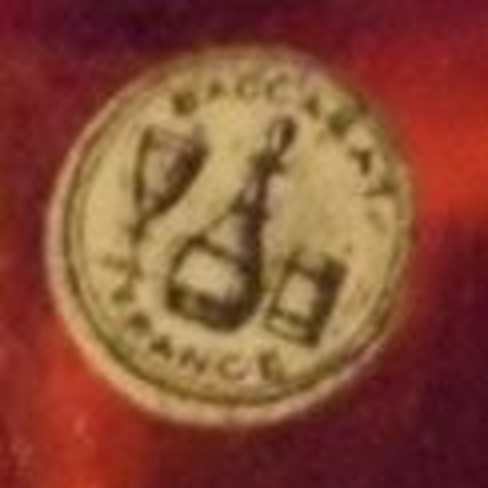 Small Baccarat Logo Paper Label otherwise no indication of manufacture. Decanter hand-engraved No.12. This surviving Baccarat paper Logo indicates that the first generation of Baccarat decanters had no other marking than the paper label. |
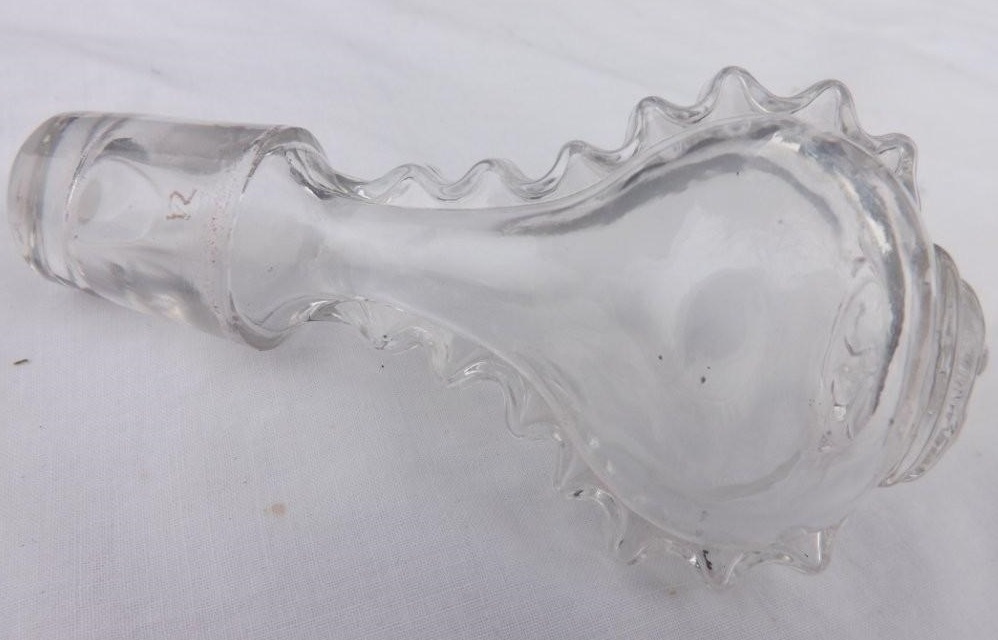 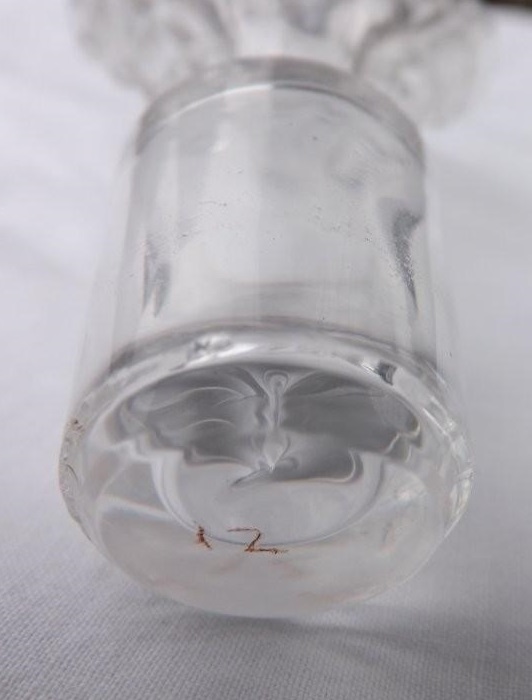 Numbered stopper (No.12) with stamped glass "Fleur de Lys" medaillon on top. |
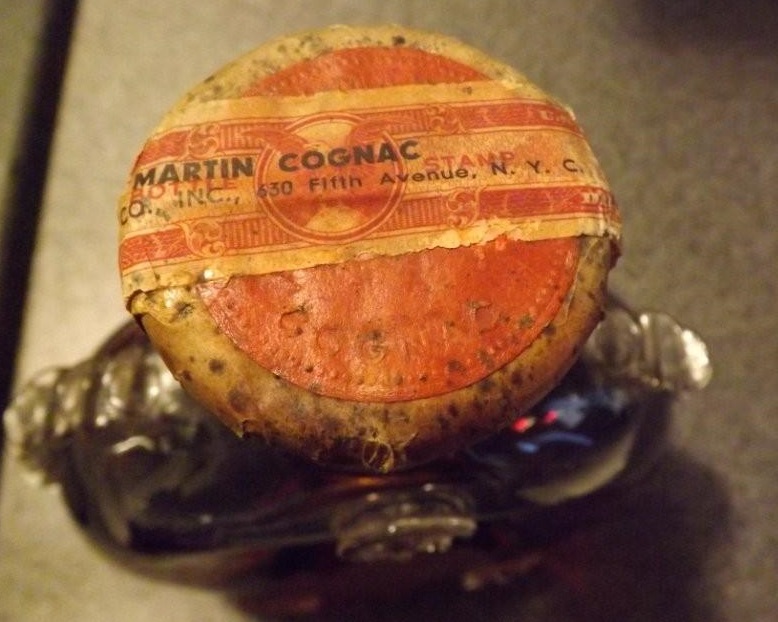 |
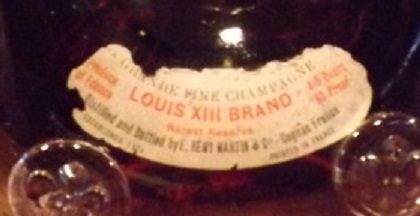 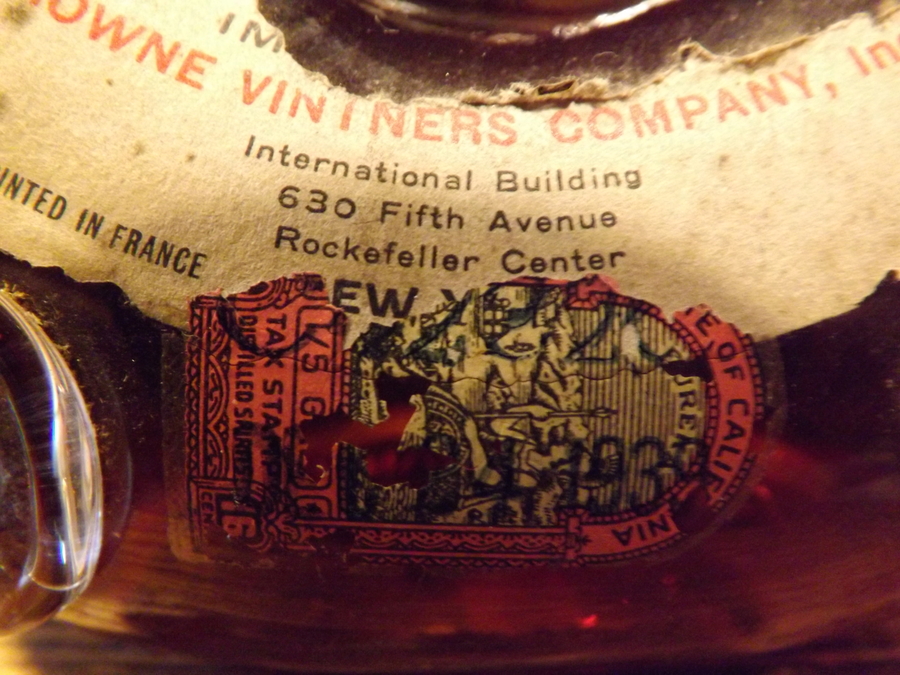 1939 California Tax Stamp. Bean-shaped Label designated as "Louis XIII Brand - Rarest Reserve". |
Unknown (Probably 1938 Royal Banquet card) | Unknown. See 1937-1940 section above for possible packaging. | Unknown | Early Baccarat crystal bottle. No engraved Baccarat Logo or name. Browne Vintners Company Inc. was formed in 1933 (Federal Tax Stamp 33-XXX). Joseph H.Reinfeld, Harold Renfield, Samuel & Allen Bronfman and James Rutkin all were co-owners in one or more of the three liquor import businesses controlled by Joseph H.Reinfeld. The exact purpose of the co-existence of three liquor-Import businesses owned by the same people appears to have been to defraud one or more of the partners. In 1940 Browne-Vintners Inc. was sold to Seagrams but not before it secretely transfered several liquor agencies, including Remy Martin, to Renfield Importers, Ltd. controlled by Joseph Reinfeld and Harold Renfield. This brackets the age of any Browne Vintners-imported Louis XIII bottle to 1933-1940. |
| 1941 TO 1945 |
None | None | None | None | None | None | None | None | Louis XIII production suspended during World War II. |
| 1946 TO 1950 EUROPE |
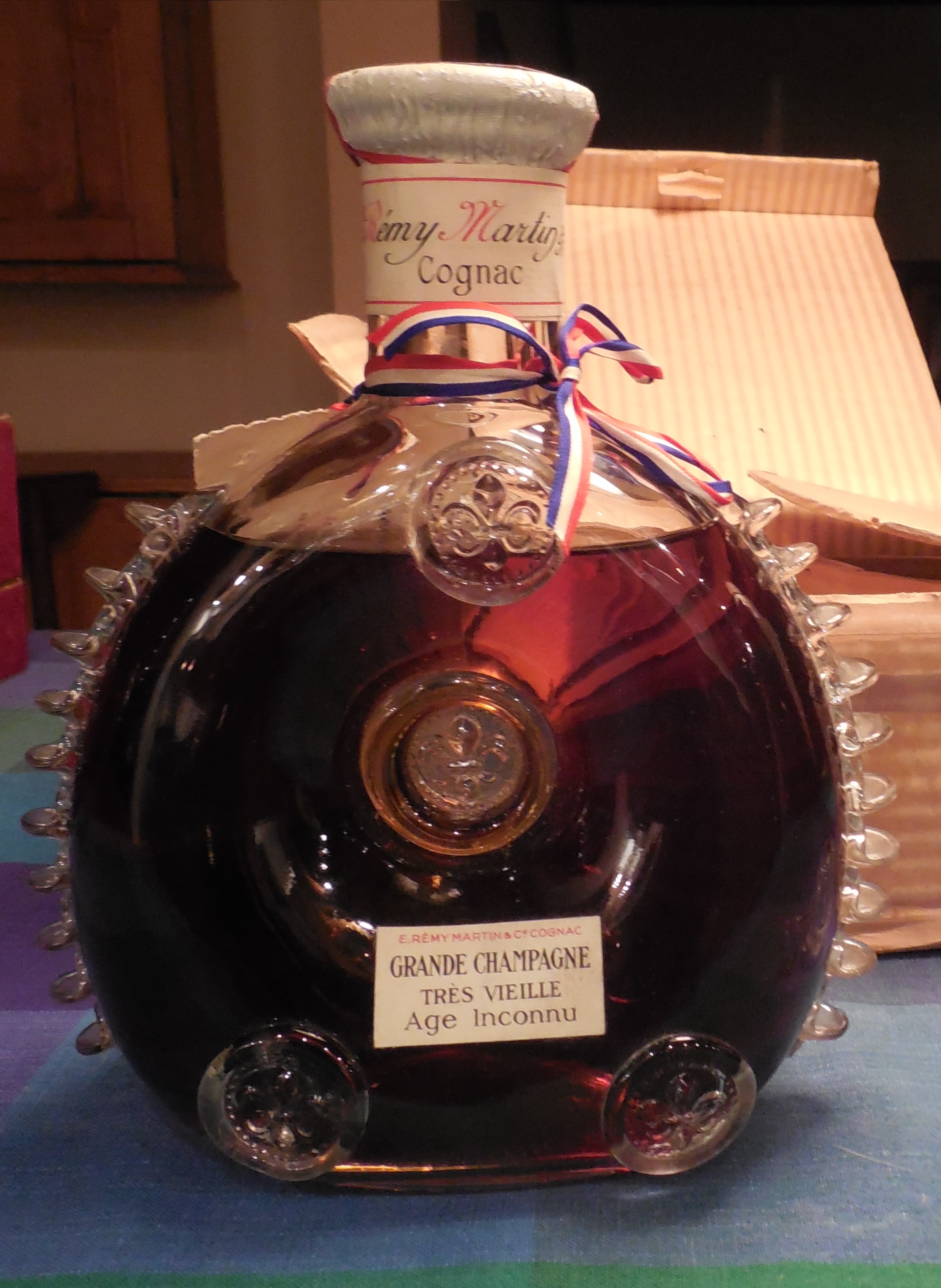 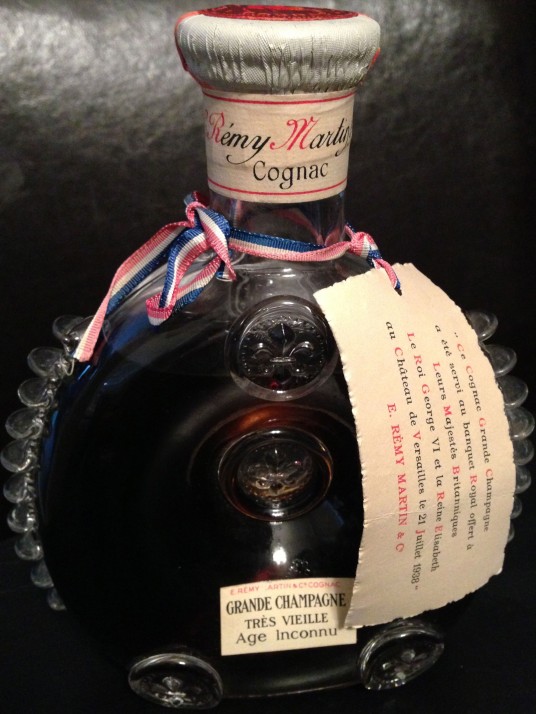 |
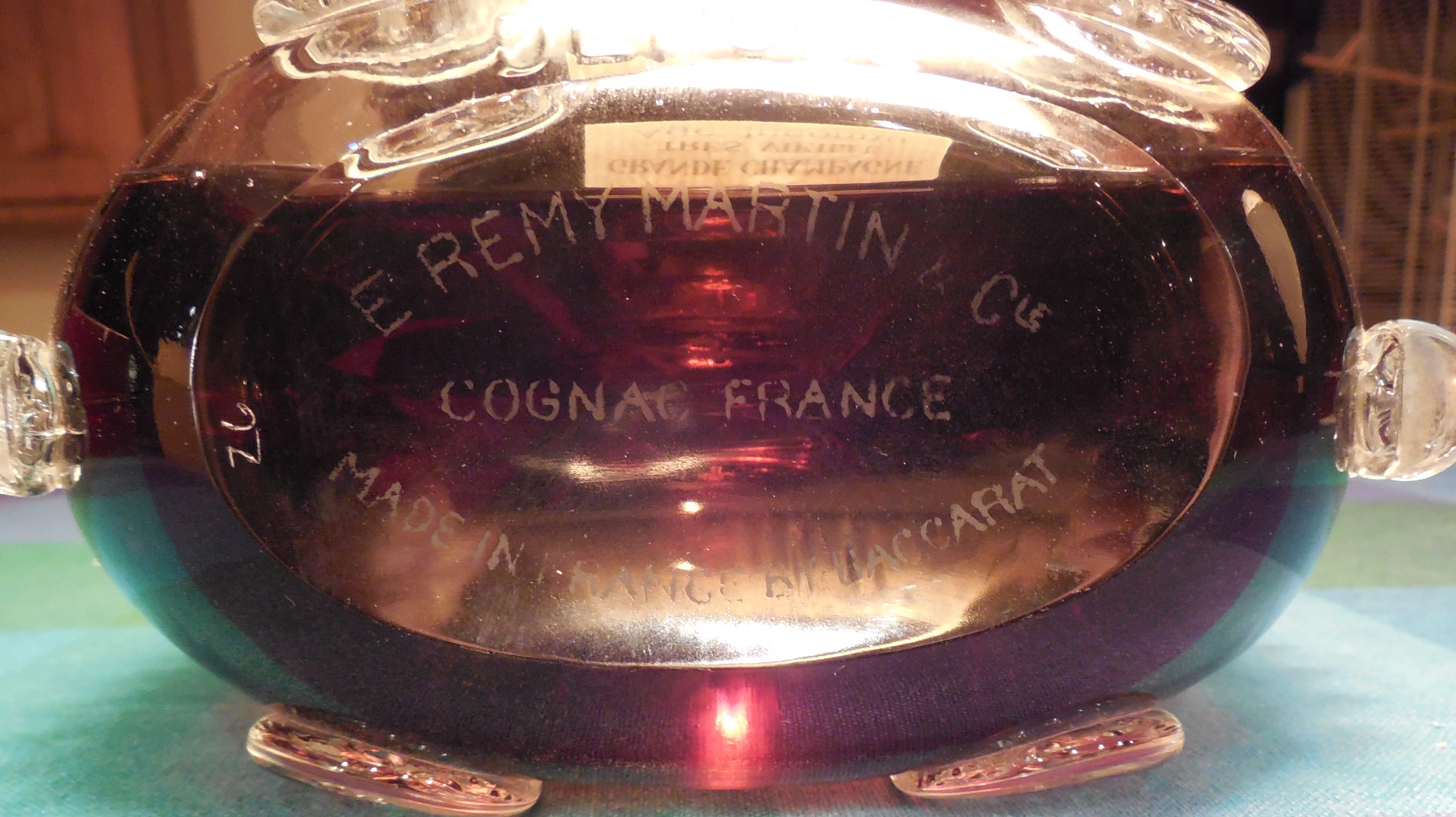 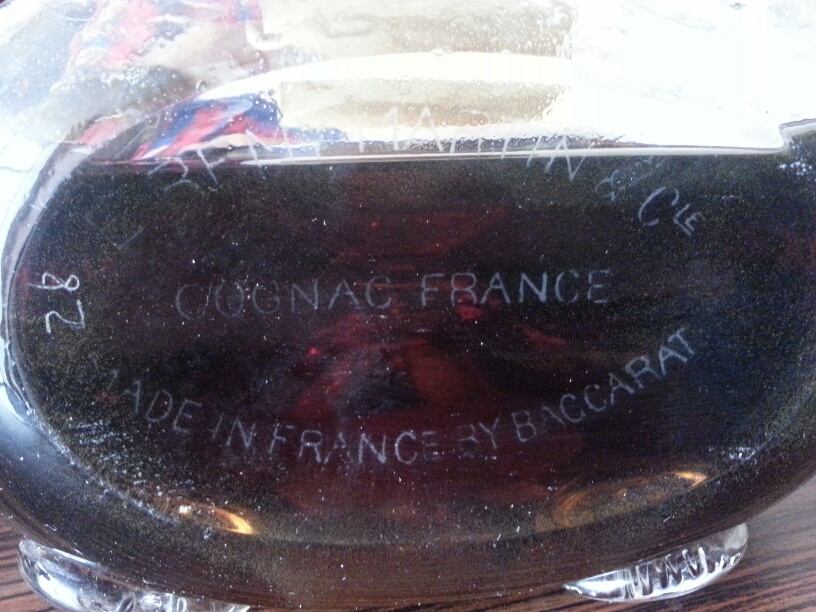 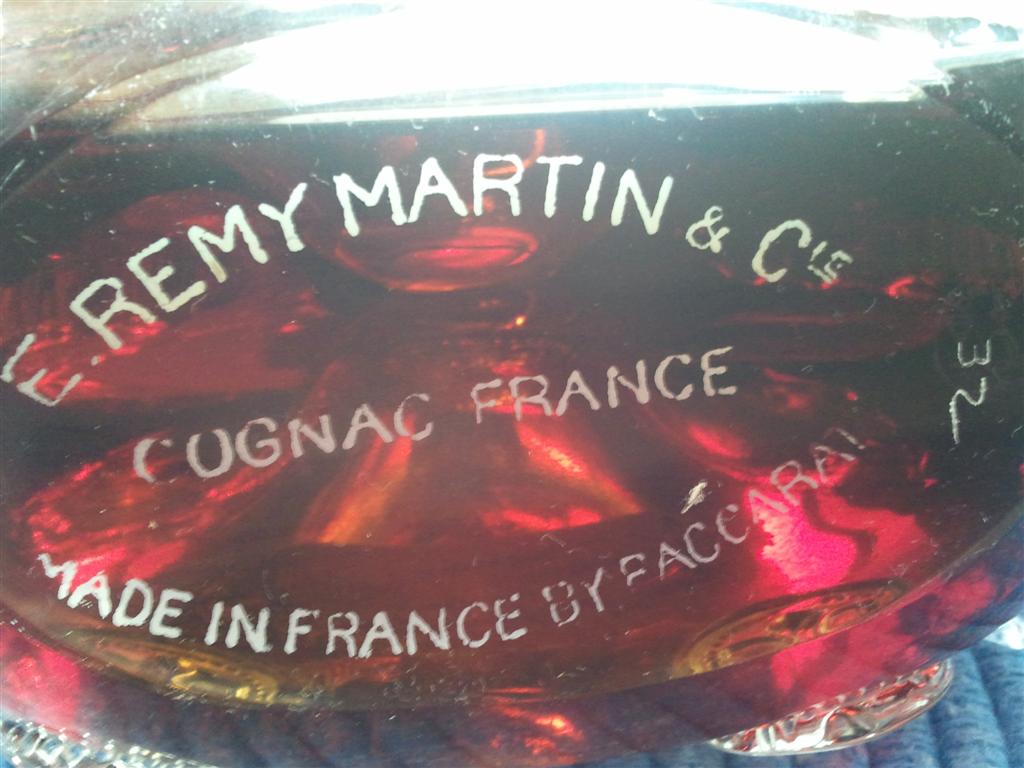 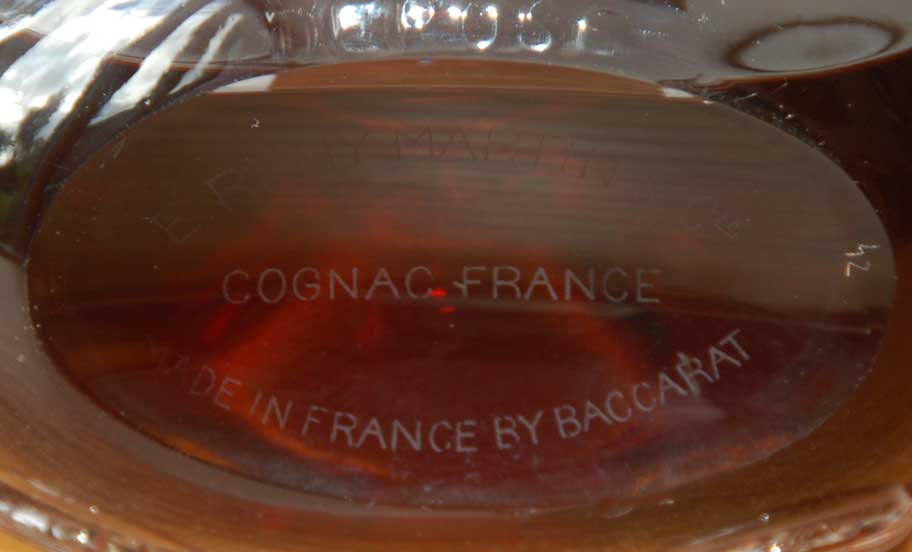 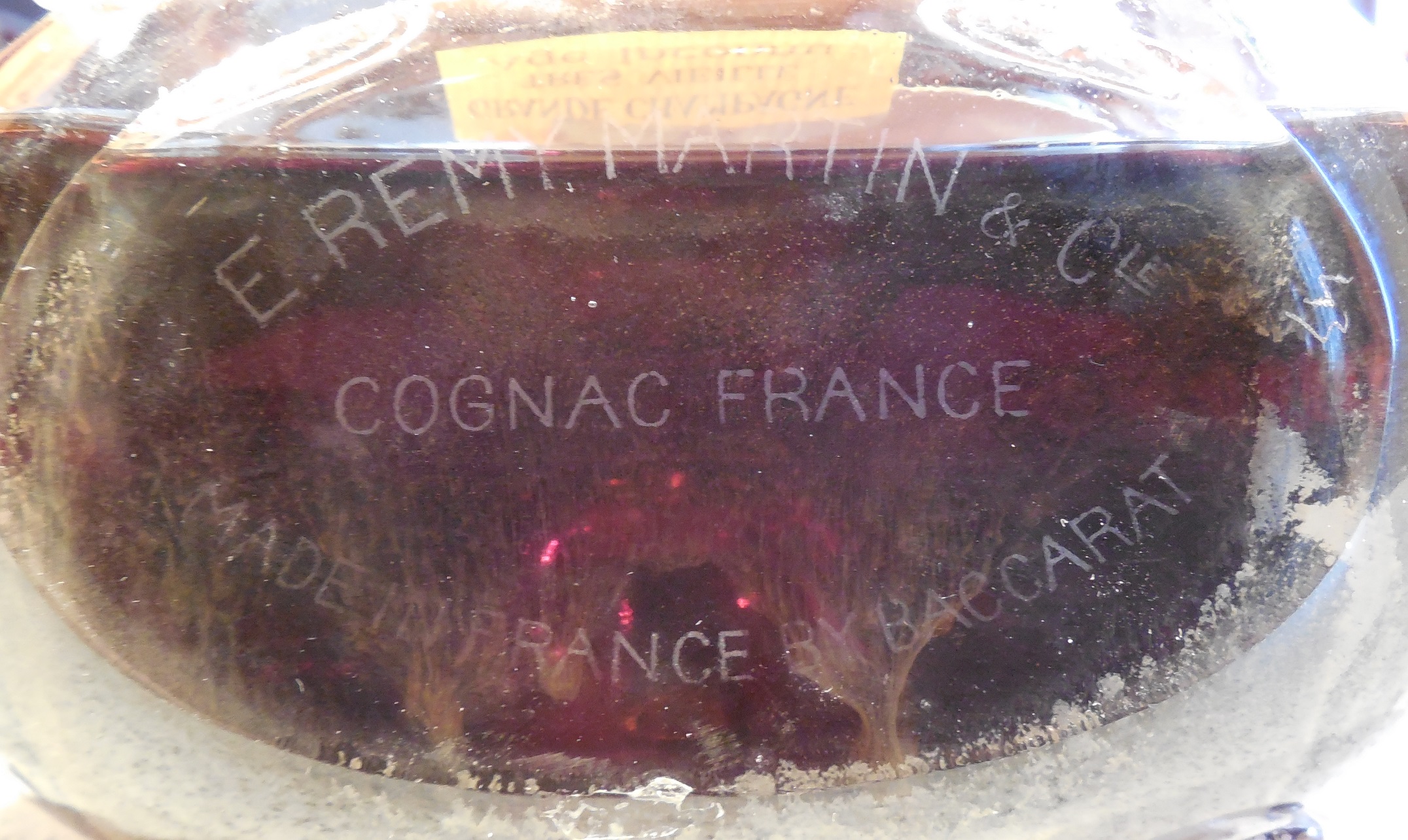 Made in France by Baccarat No Logo Engraved number (26, 28, 32, 42 & 43) |
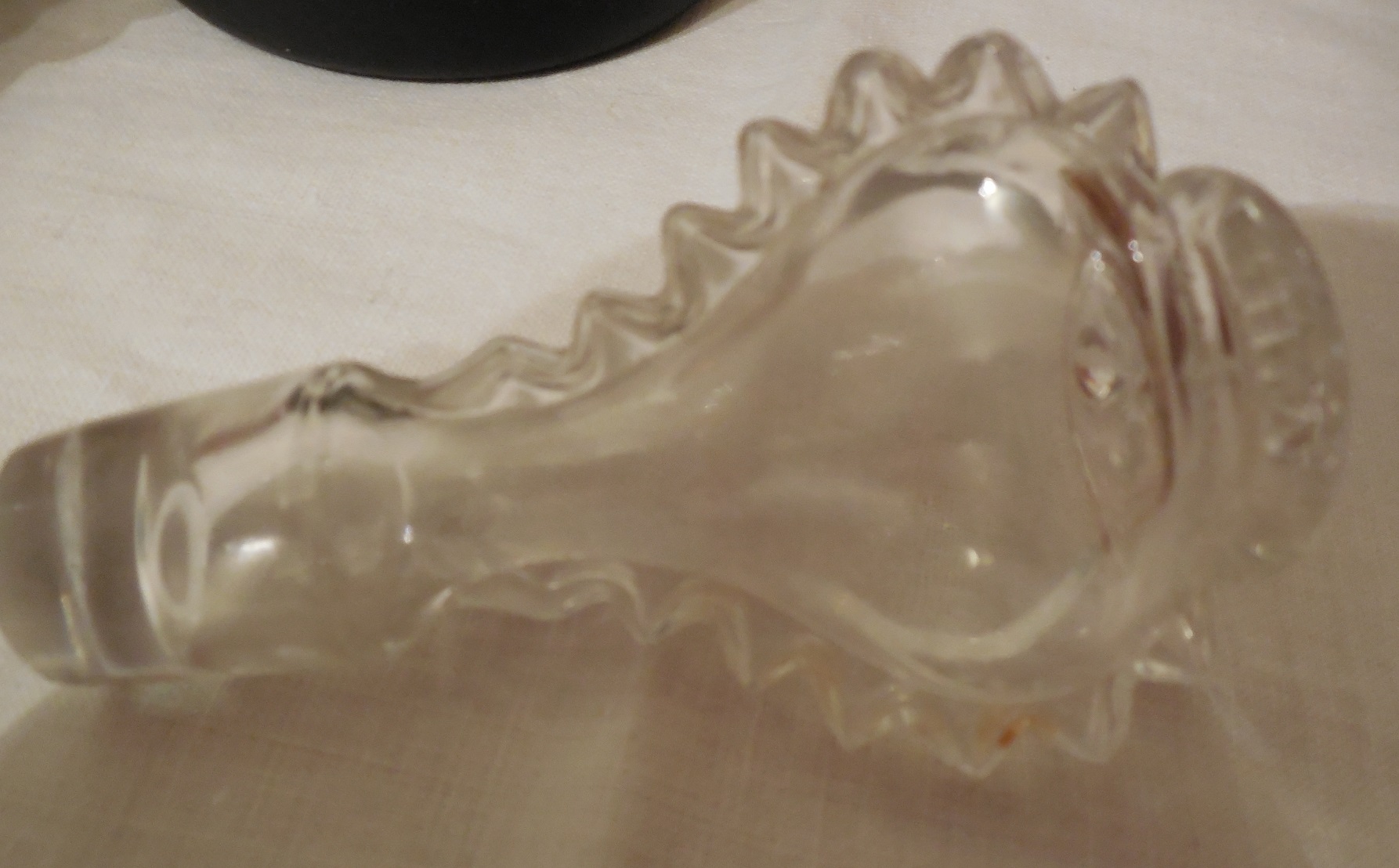 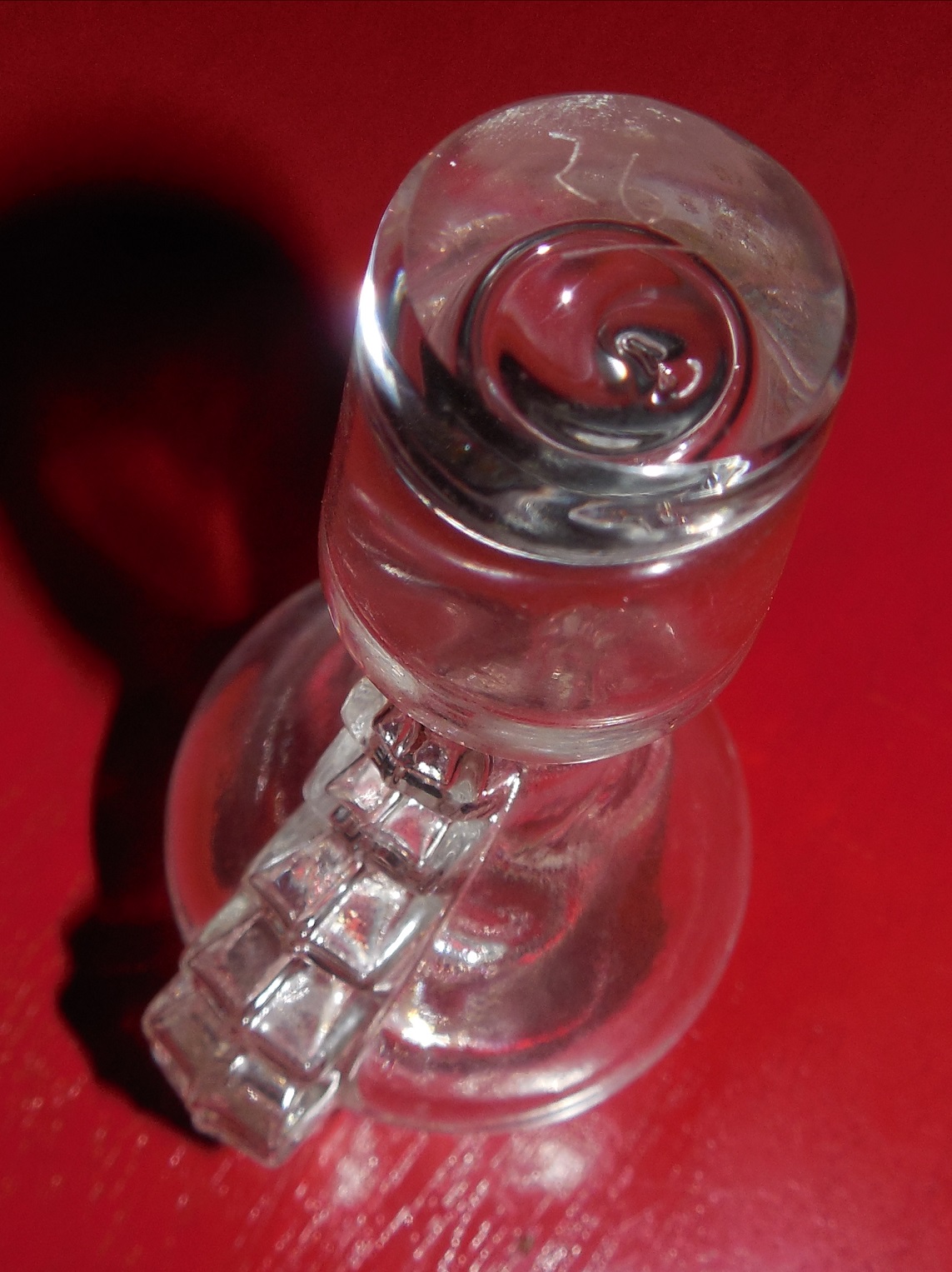 Number matching bottle number engraved under the stopper tip. |
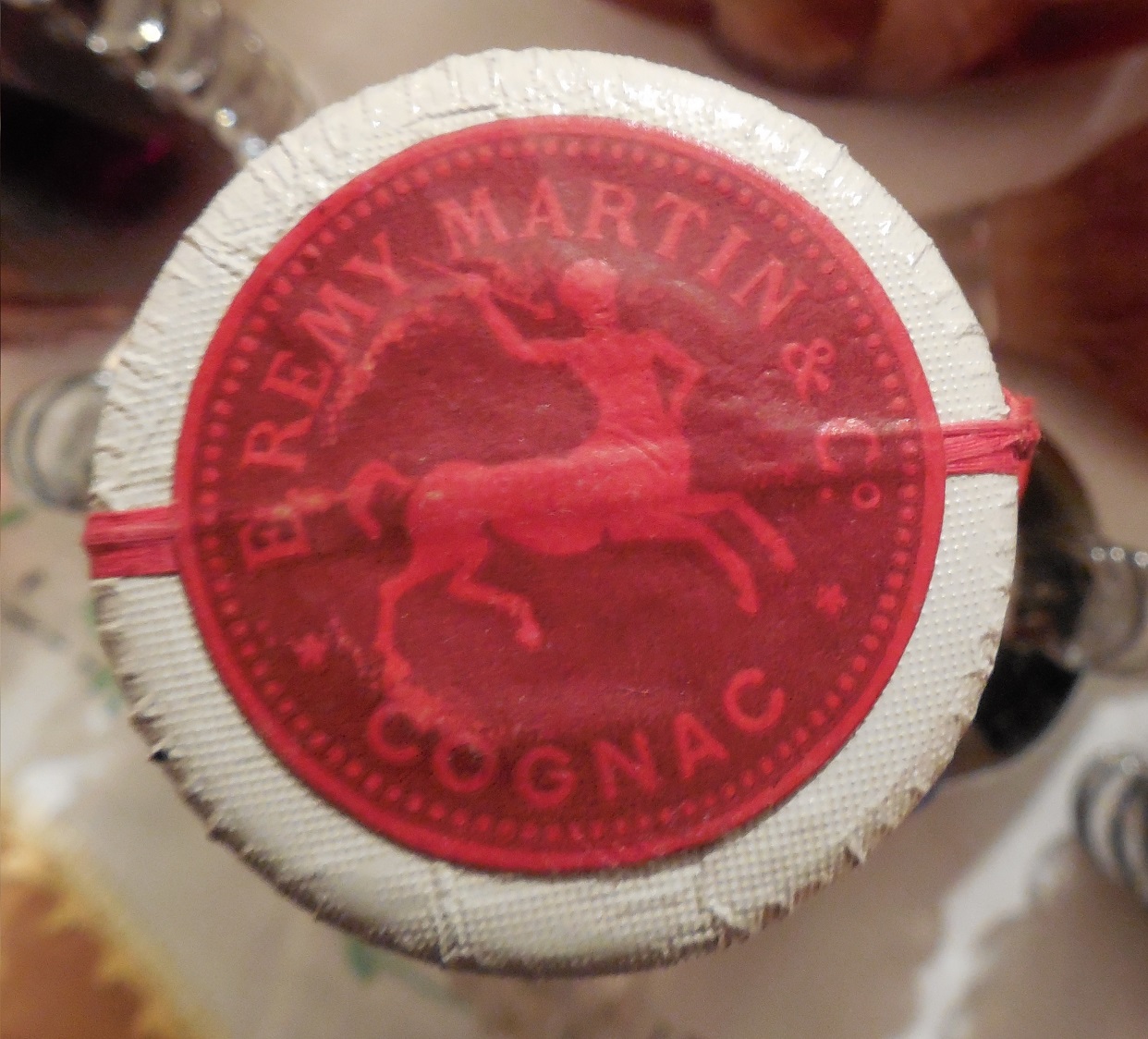 Slim Centaur with spear handle pointing at the "Y" of Remy. |
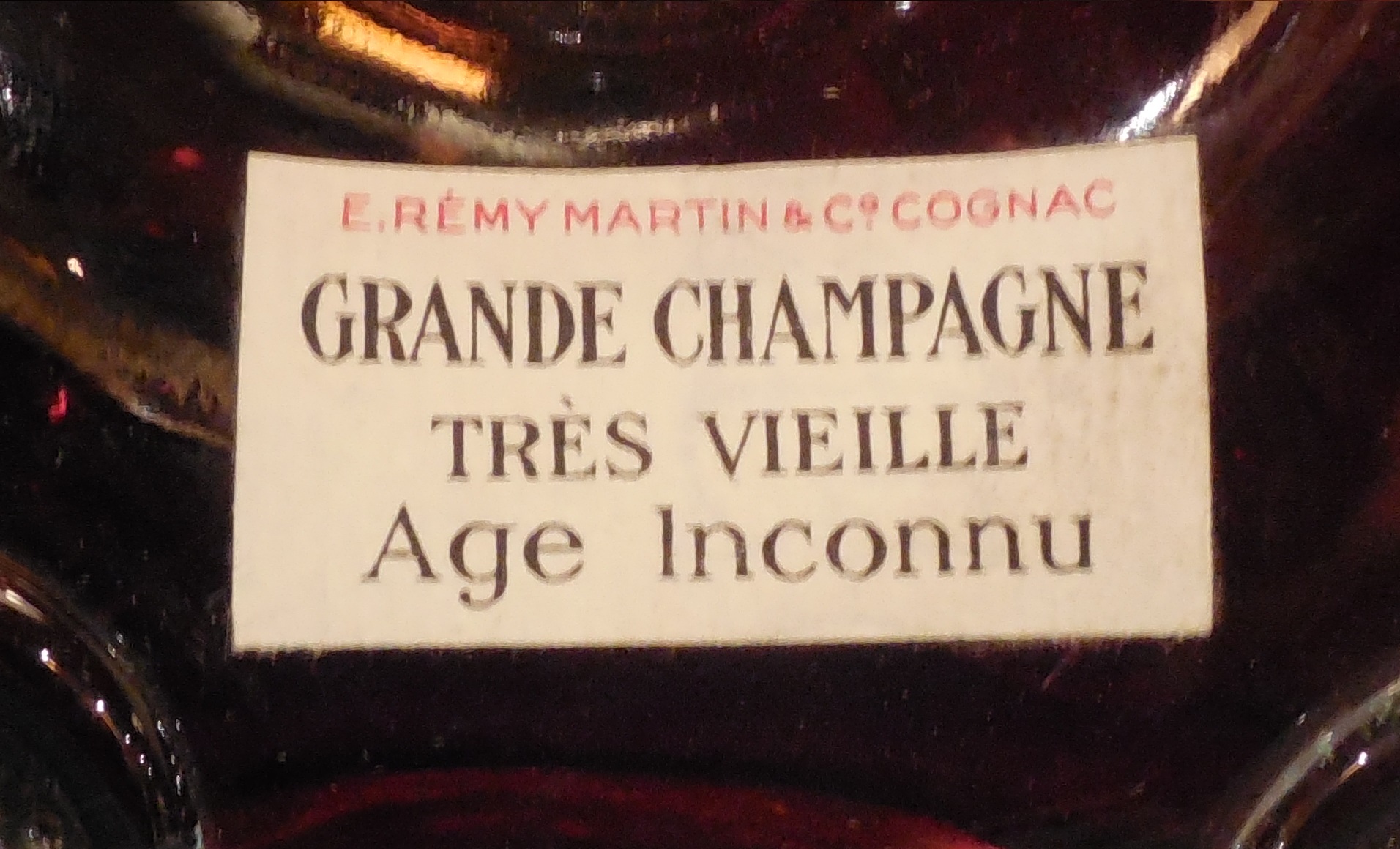 This is the older rectangular label with the original name of this cognac "Age Inconnu". It was replaced by the bean-shaped label on US import bottles after repeal of prohibition in 1933 and on European bottles about 1962. For about 30 years the US cognac was known as "Louis XIII" while the rest of the world still bought "Age Inconnu". This explains the simultaneous existence of both types of labels. |
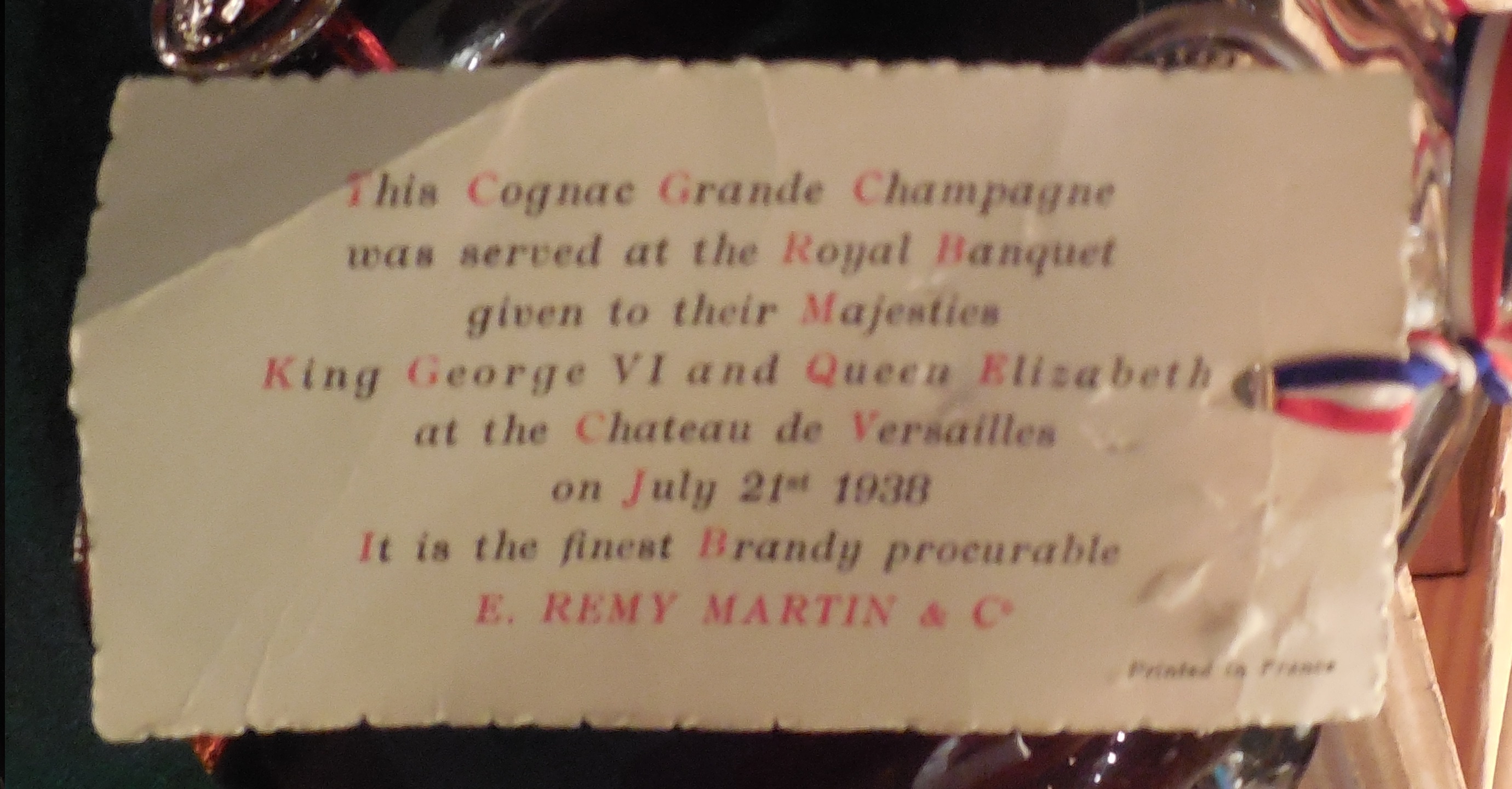 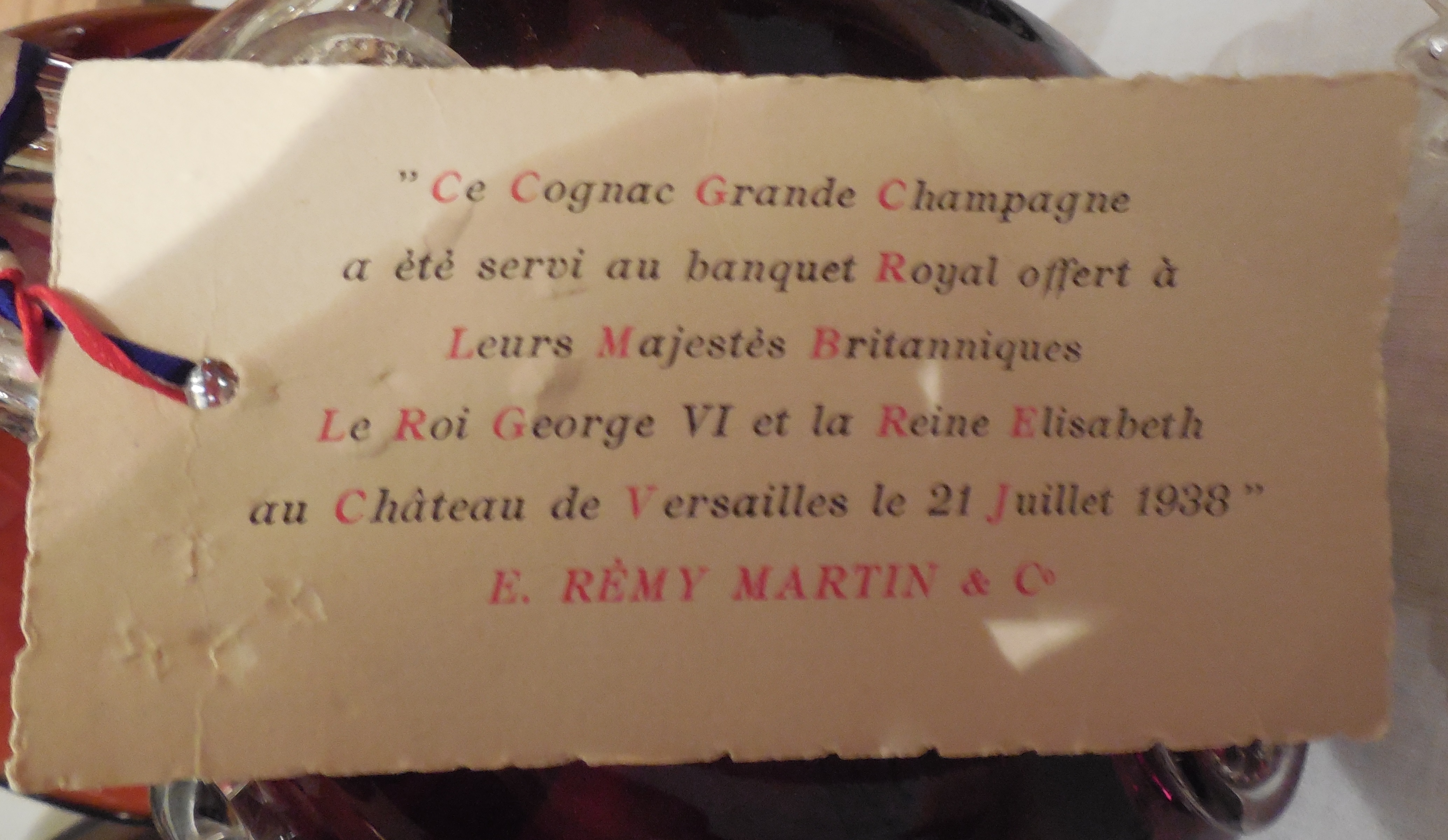 1938 Royal Banquet Card. Some cards are blank on one side, others have French text on one side and English on the other like this one. |
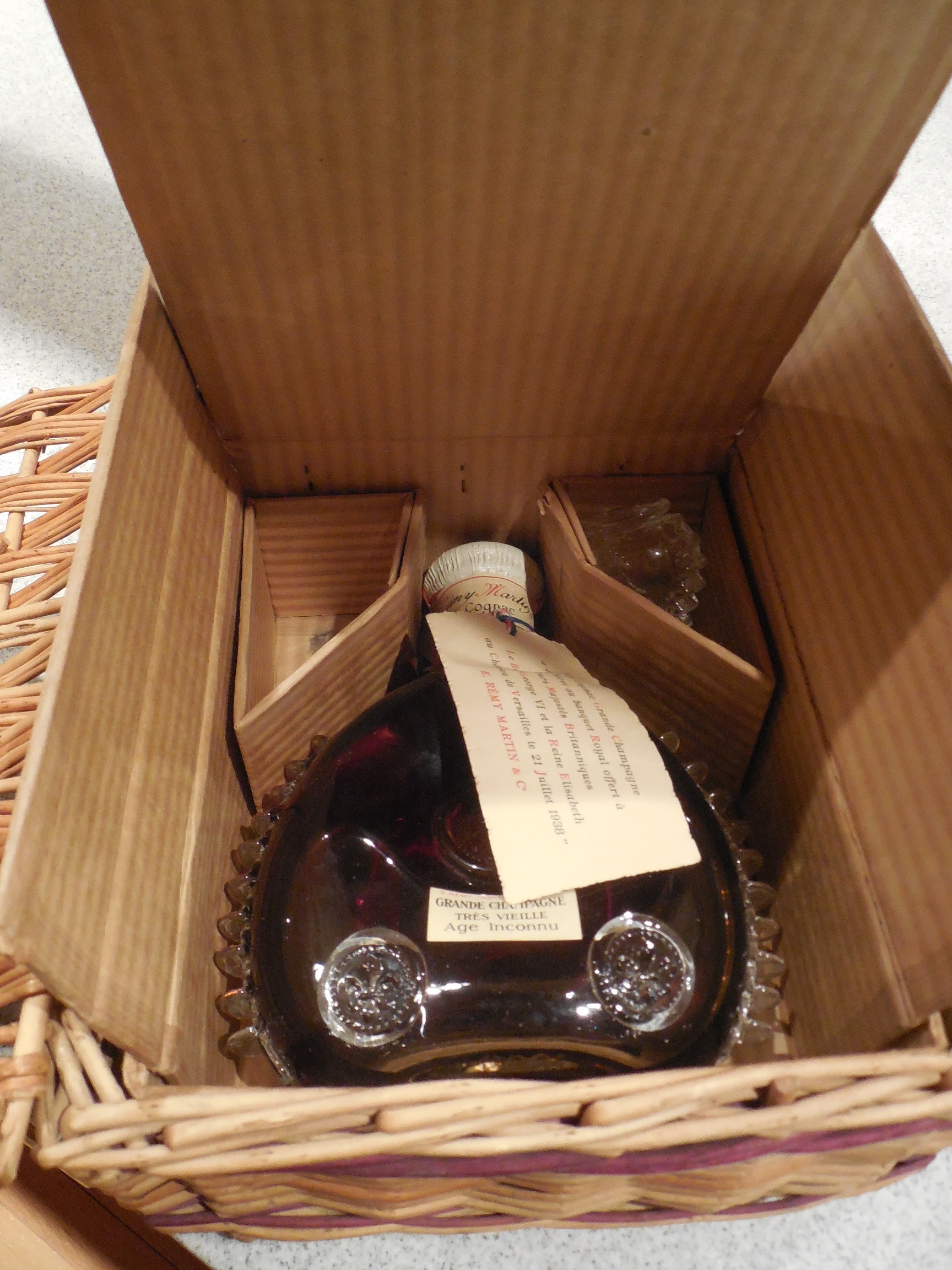 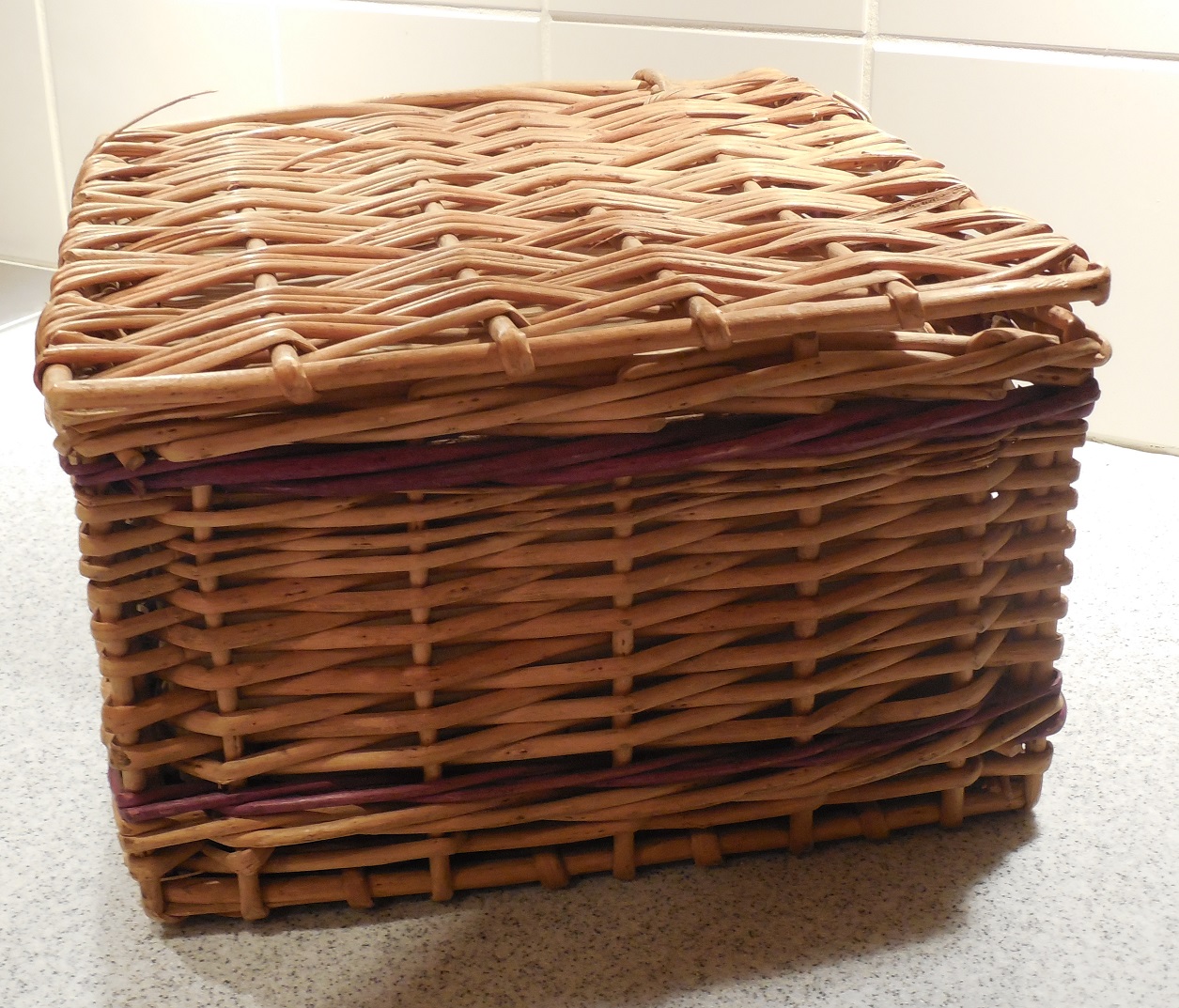 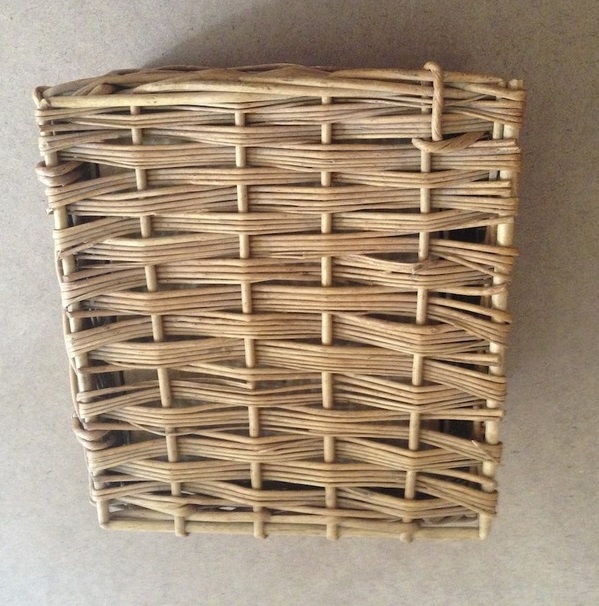 |
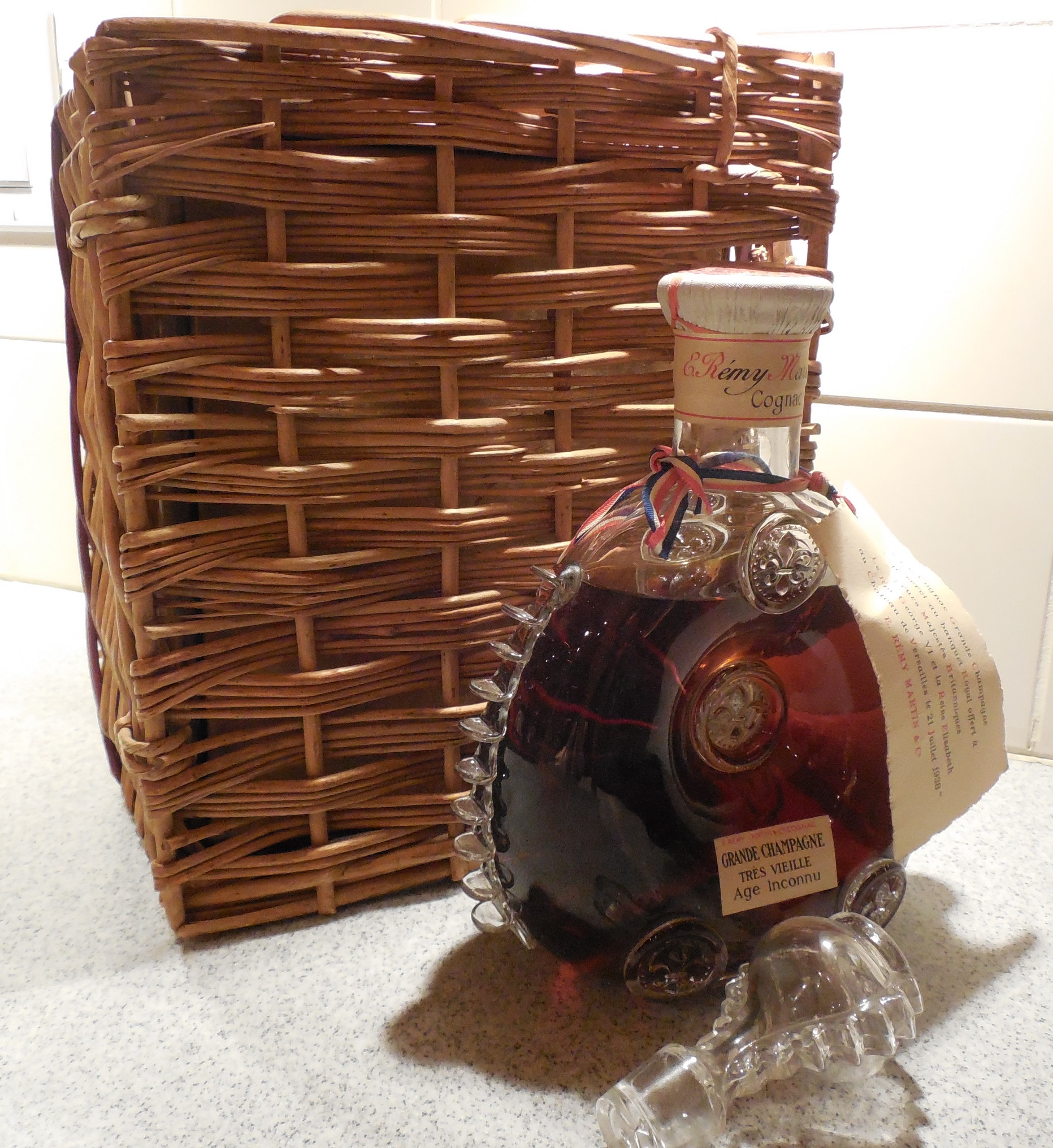 Coarse rattan basket with cardboard liner used for "Age Inconnu" bottles only. |
Card indicating British Royal visit/banquet of 1938 similar to the pre-WW2 one. It has been generally accepted among Louis XIII collectors that the Baccarat bottles without the Baccarat Logo are from before 1940. This is wrong. I am doubtful whether ANY pre-WW2 decanters had the name Baccarat engraved on them. Many post WW2 bottles do not have Baccarat logos so the only thing that can be postulated about these bottles is that if there is a Baccarat logo the bottle is newer and probably from after 1950. Low serial numbers would indicate small yearly production for 1946-1950. Engraved numbers on left side and right side of these bottles may reflect two different years. It is notable that although quite a few "Age Inconnu" bottles are found in the USA they never have US importer labels so they are definitely European bottles privately brought to the US. |
| 1946 TO 1950 USA |
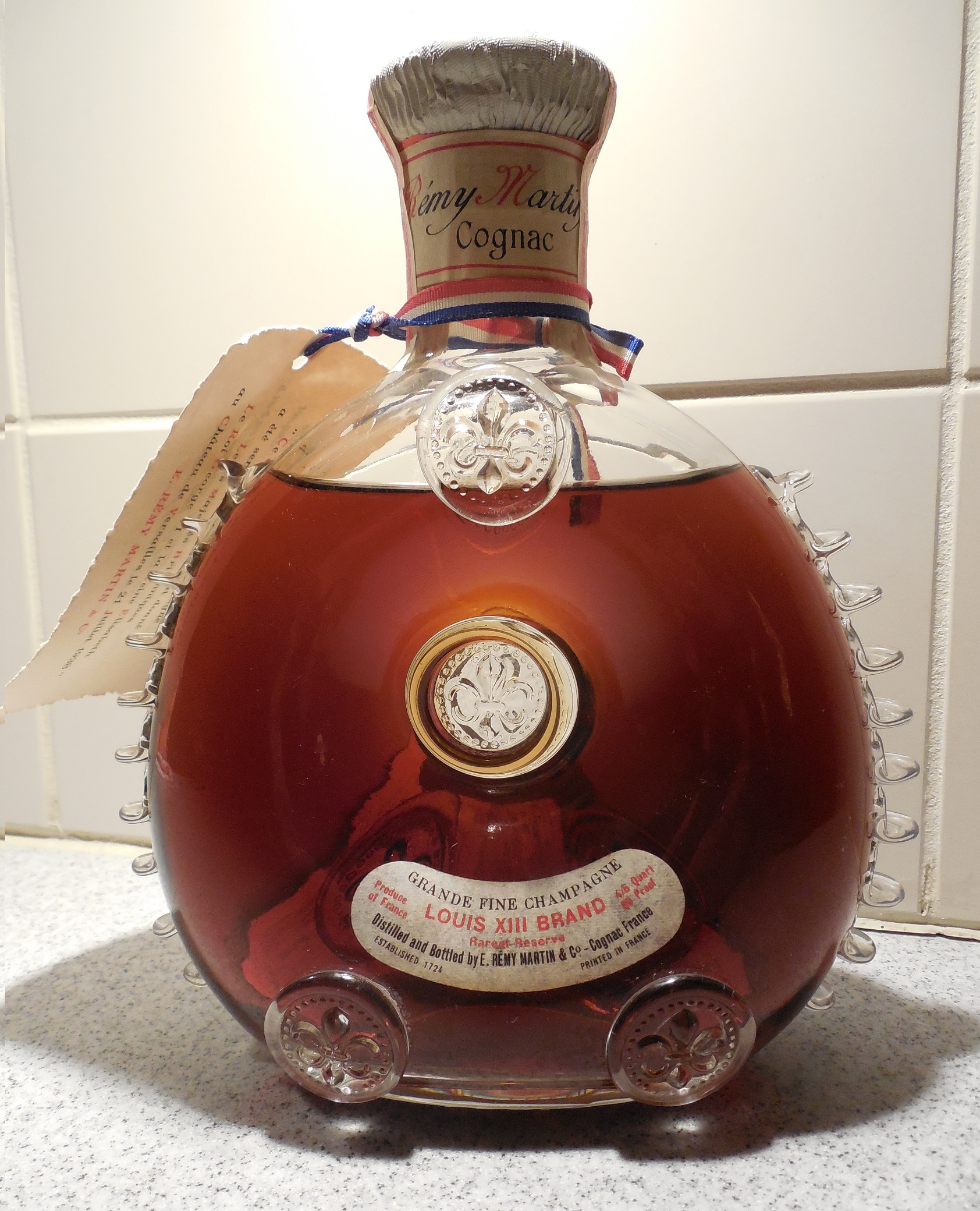 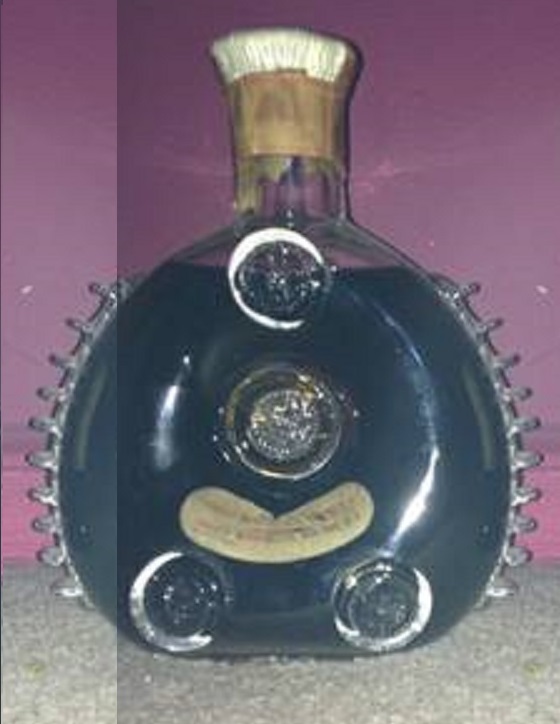 |
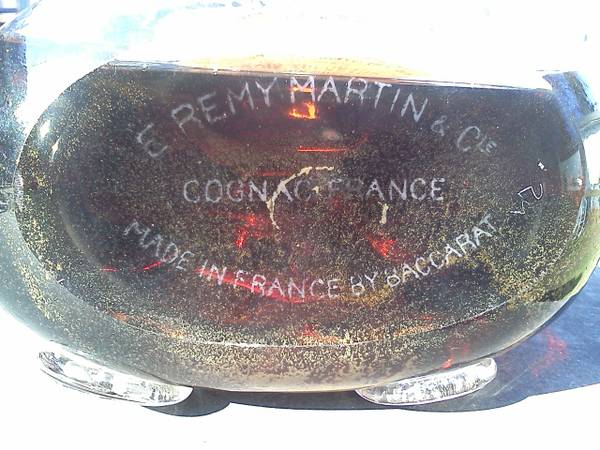 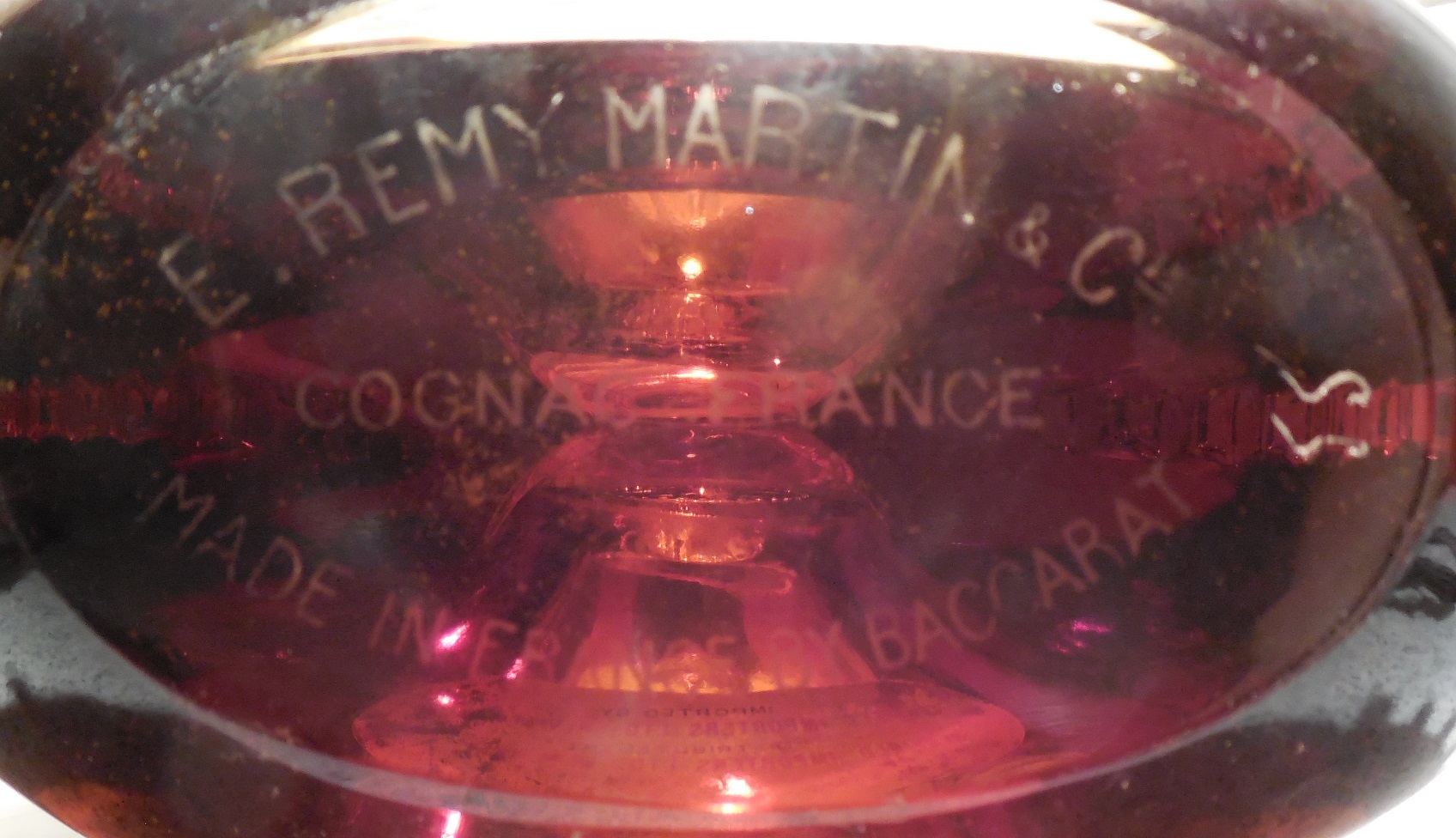 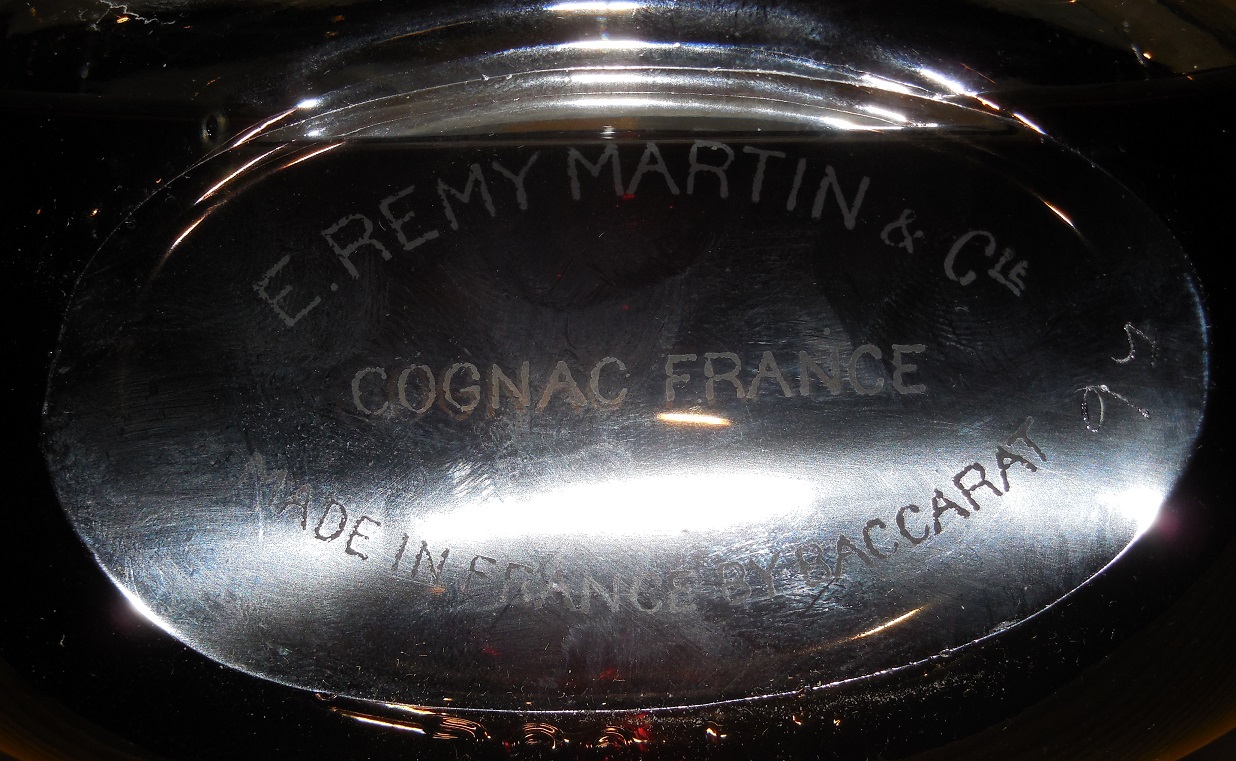 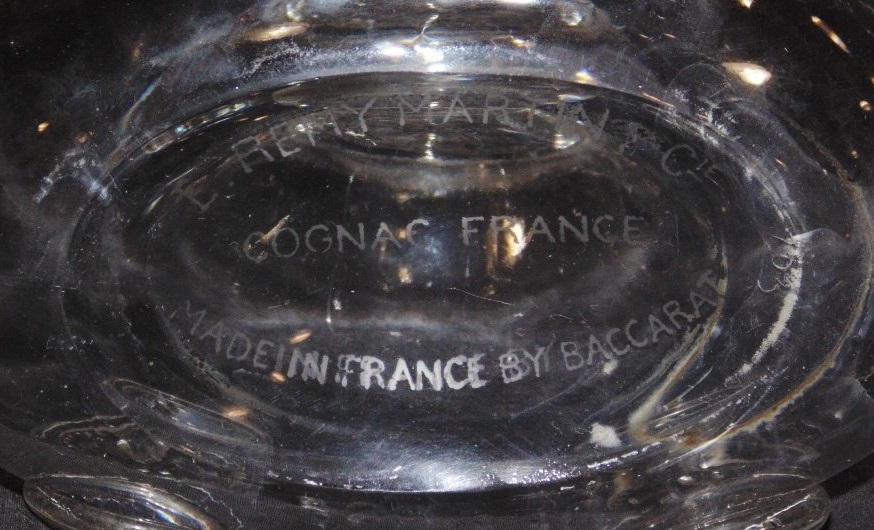 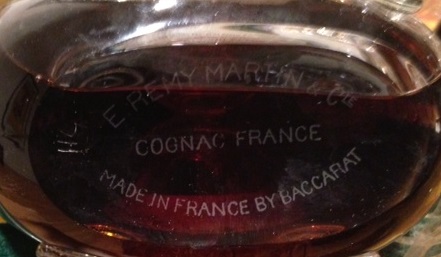 Made in France by Baccarat No Logo Engraved number (29, 55, 56, 103 & 114) |
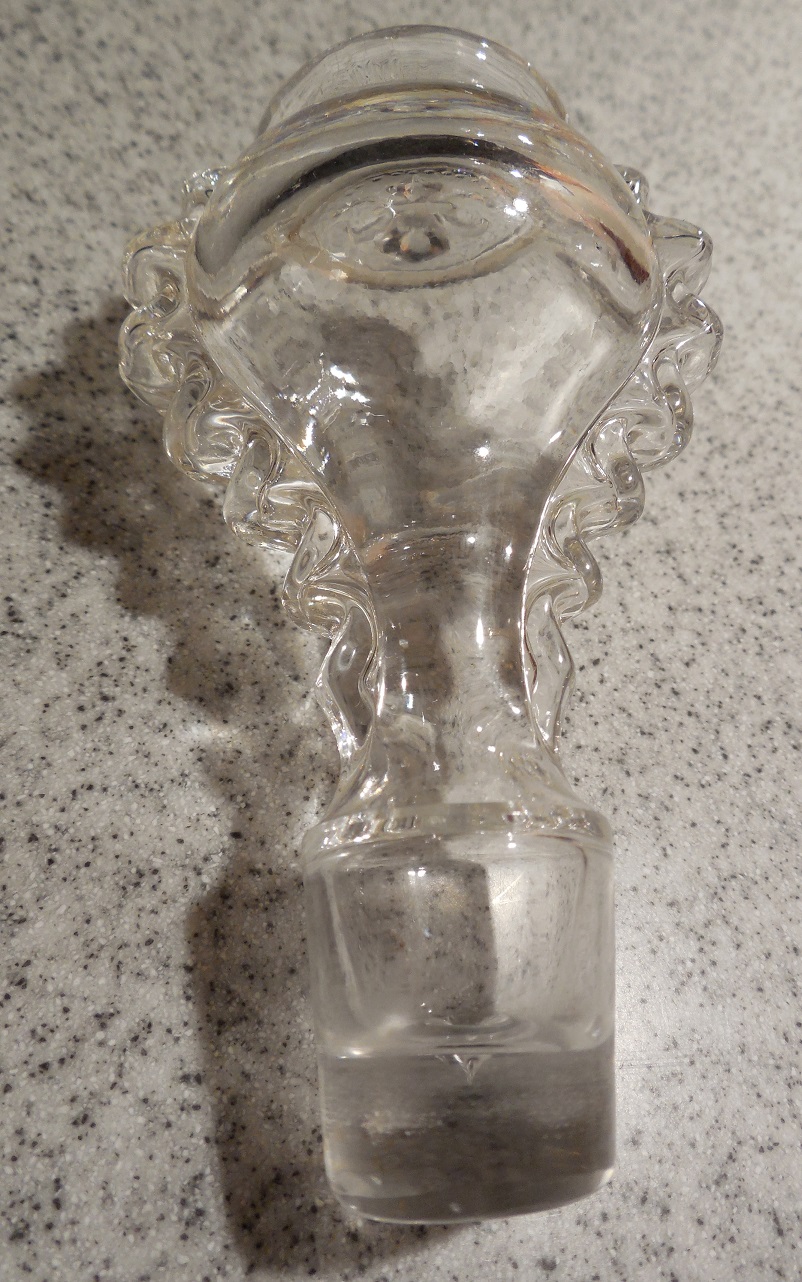 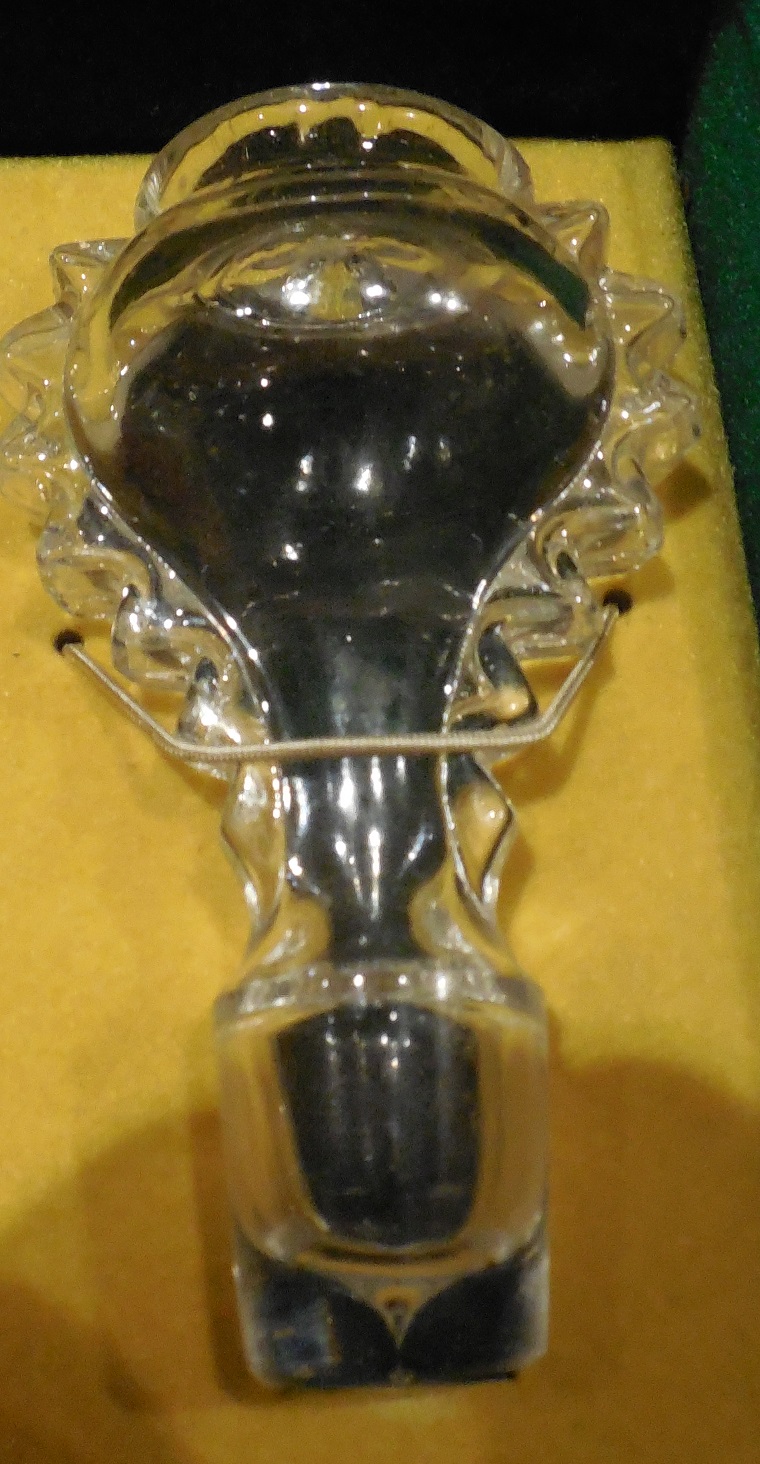 Number matching bottle number engraved under the stopper tip. |
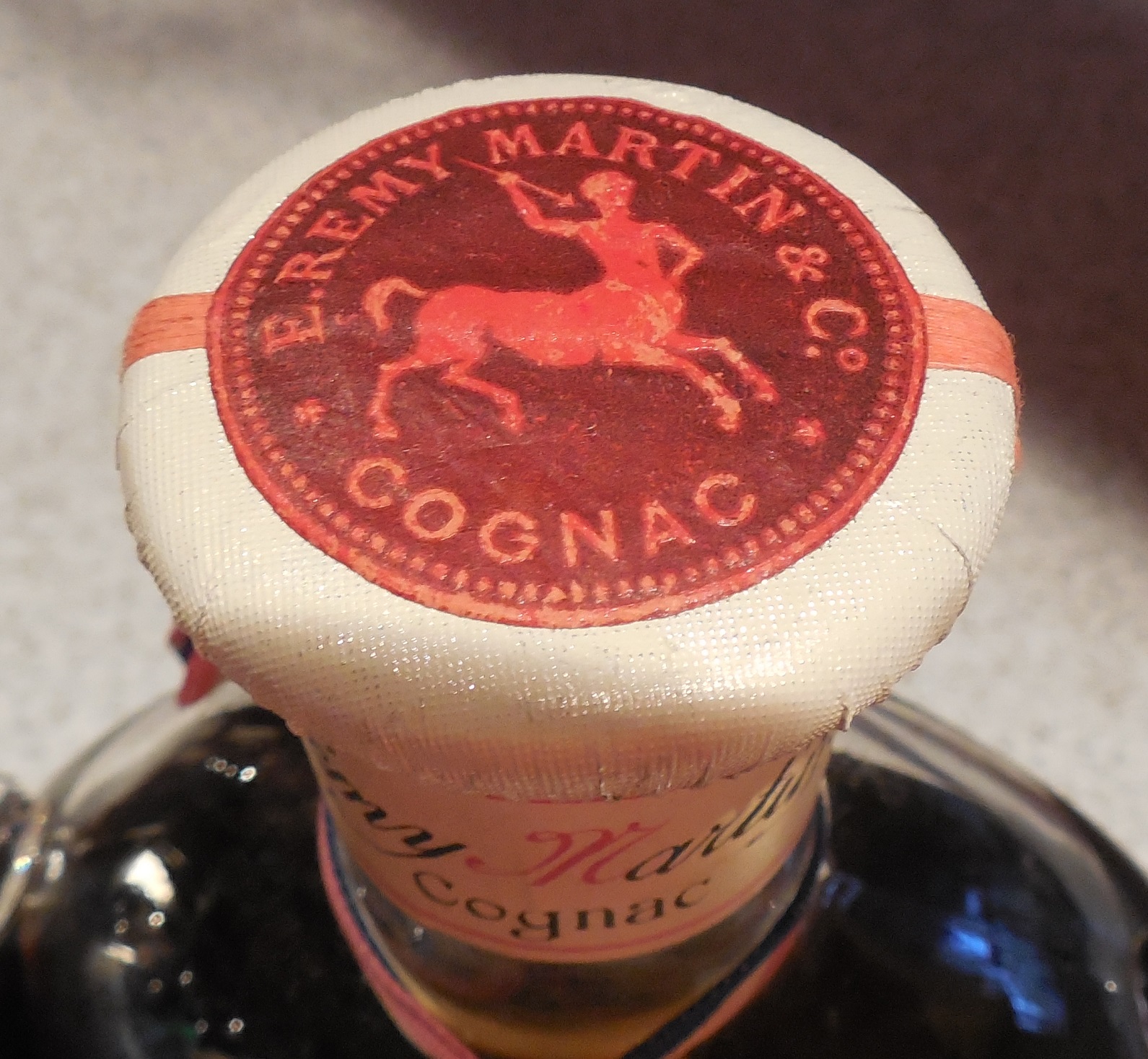 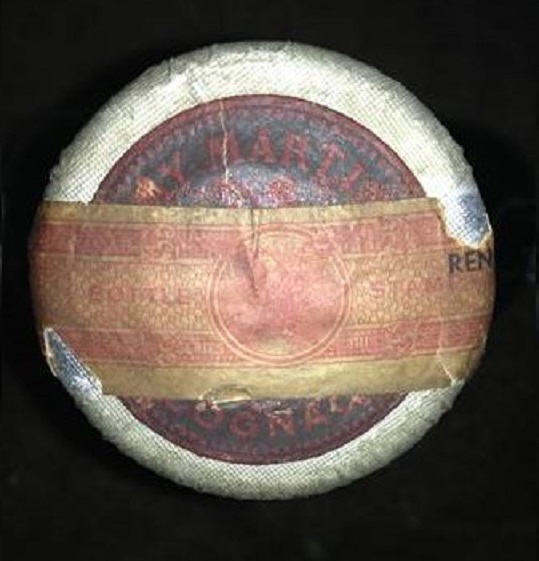 Same slim Centaur logo as "Age Inconnu" above. |
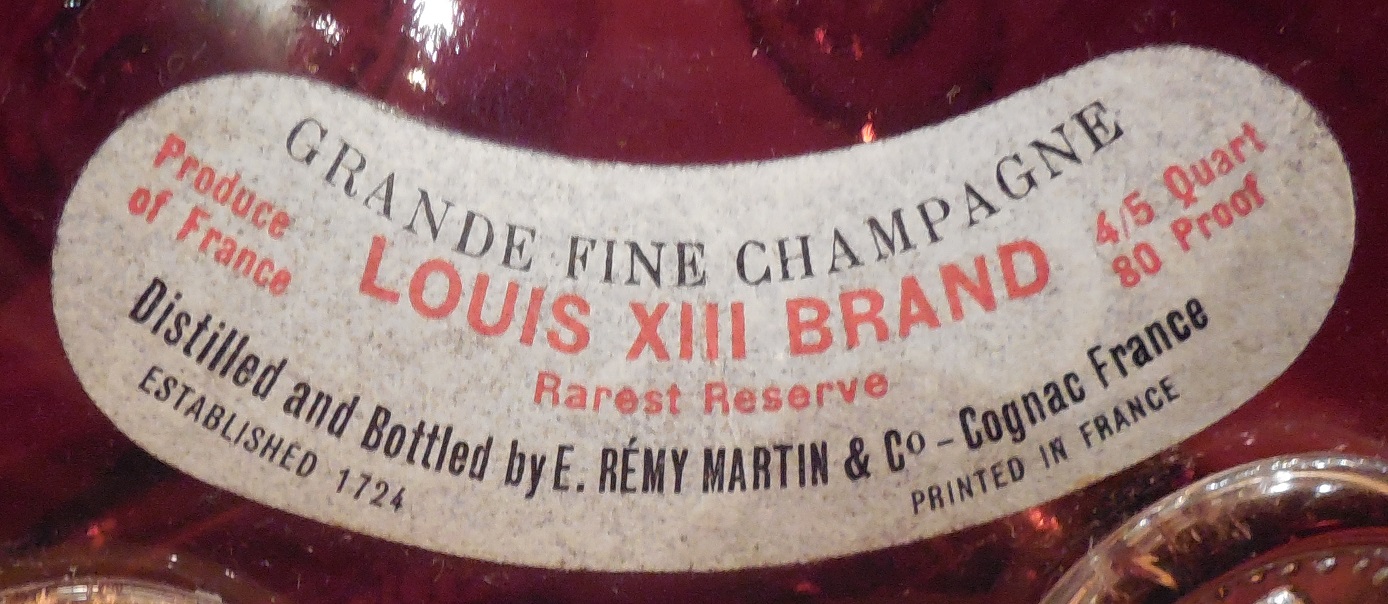 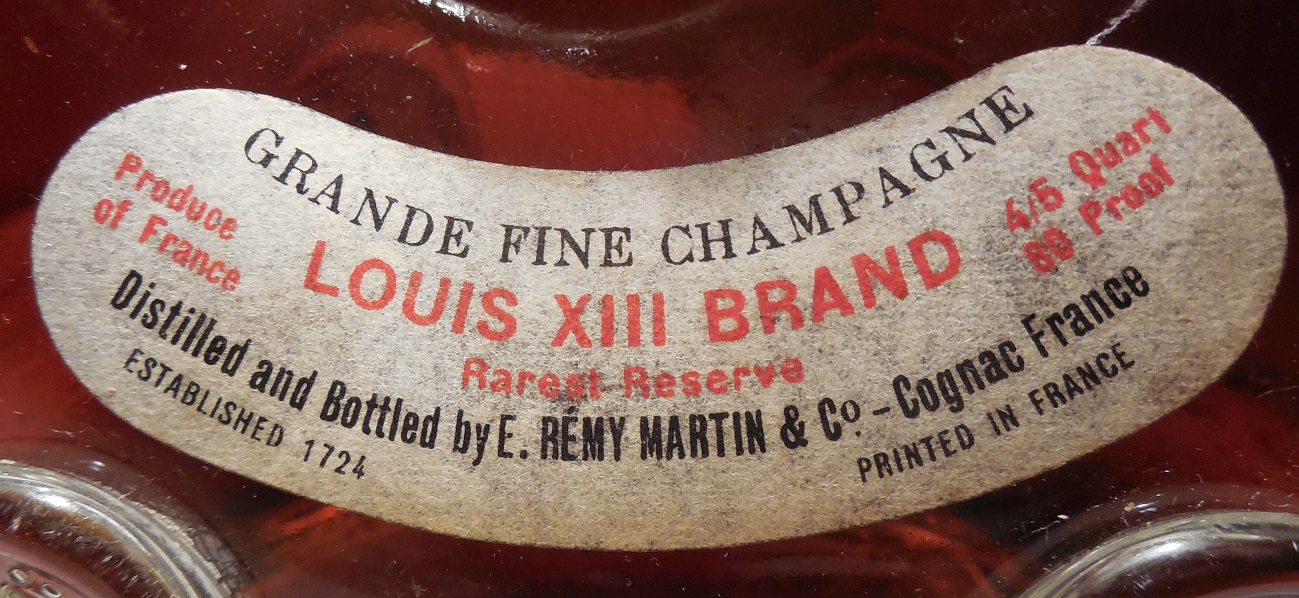 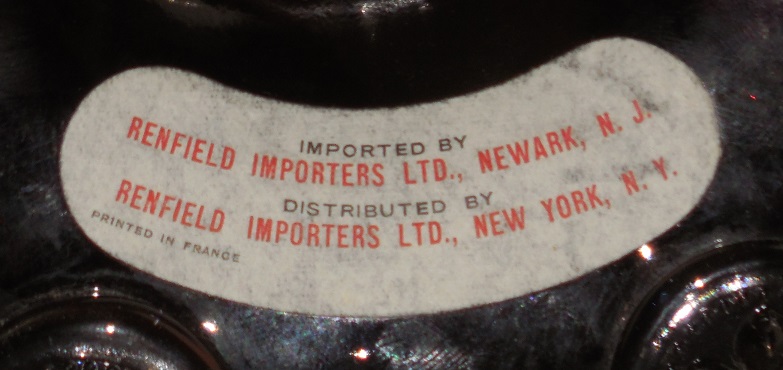 Same "Louis XIII Brand - Rarest Reserve" Label as on the 1937 Baccarat bottles. Note Renfield Importers Ltd. on back side Label |
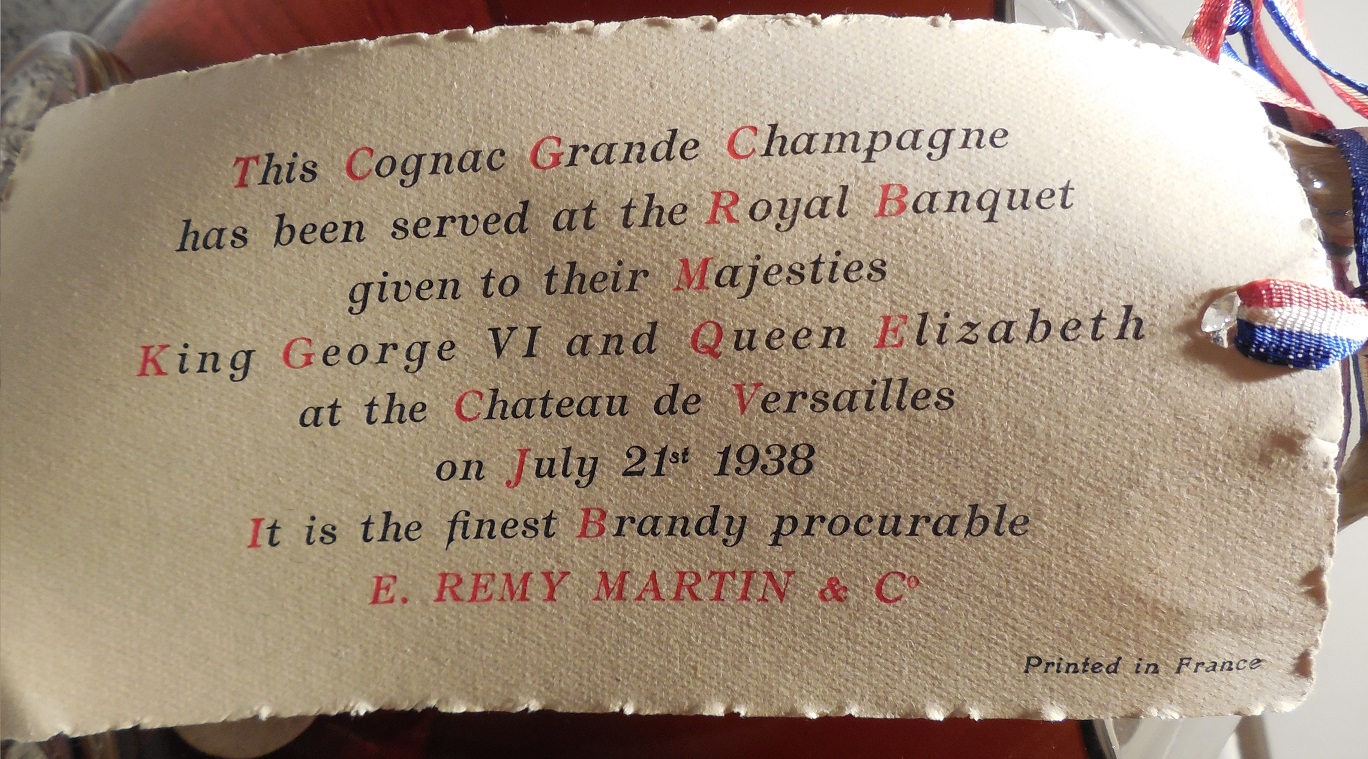 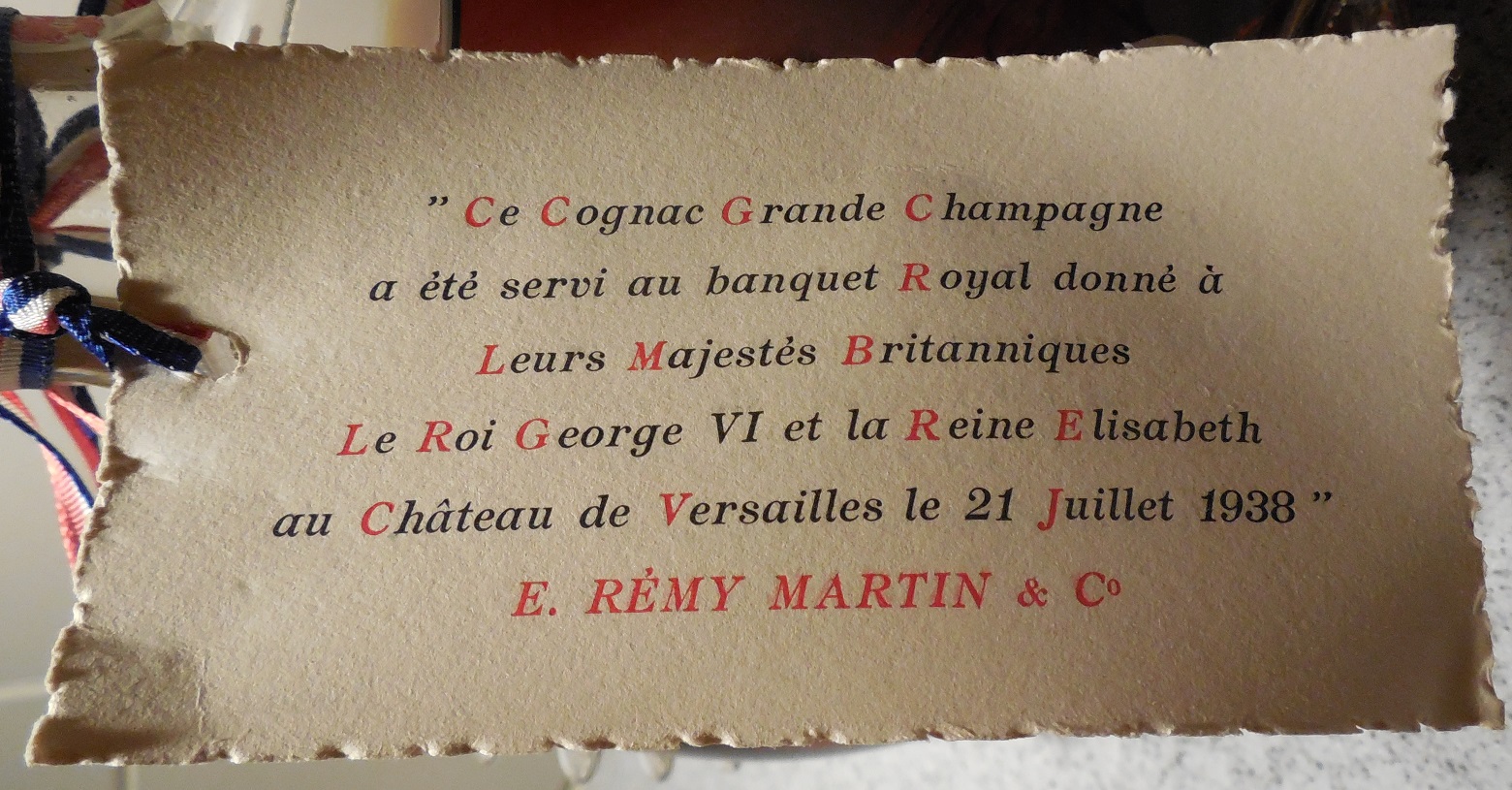 1938 Royal Banquet Card. Bilingual. |
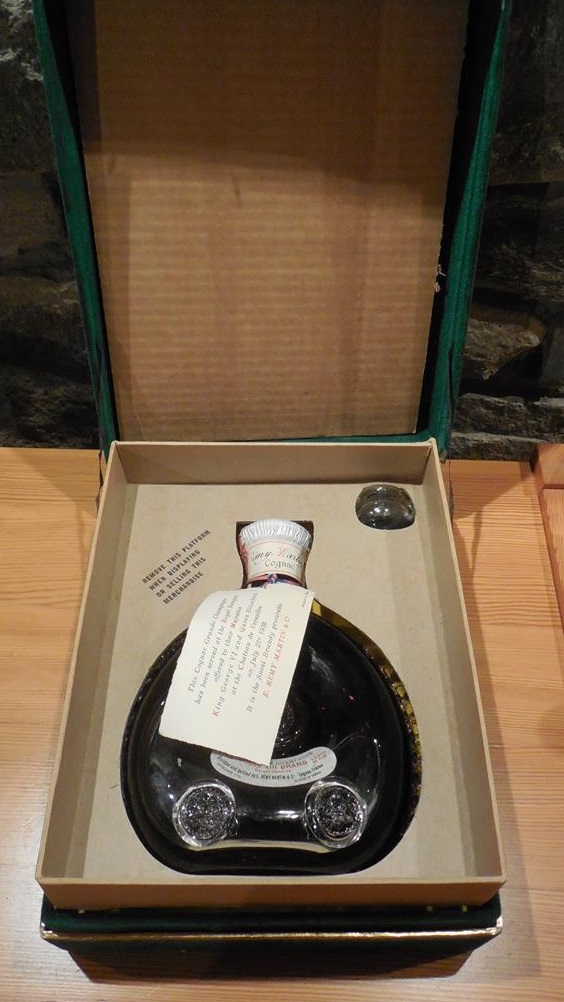 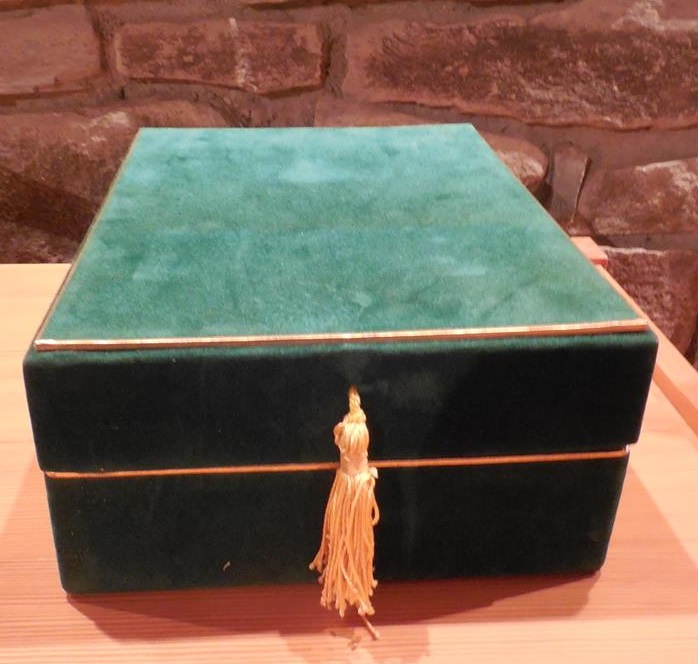 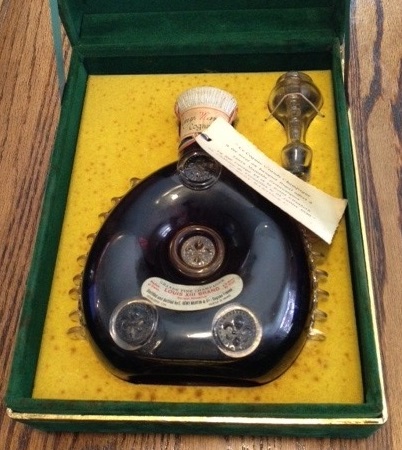 |
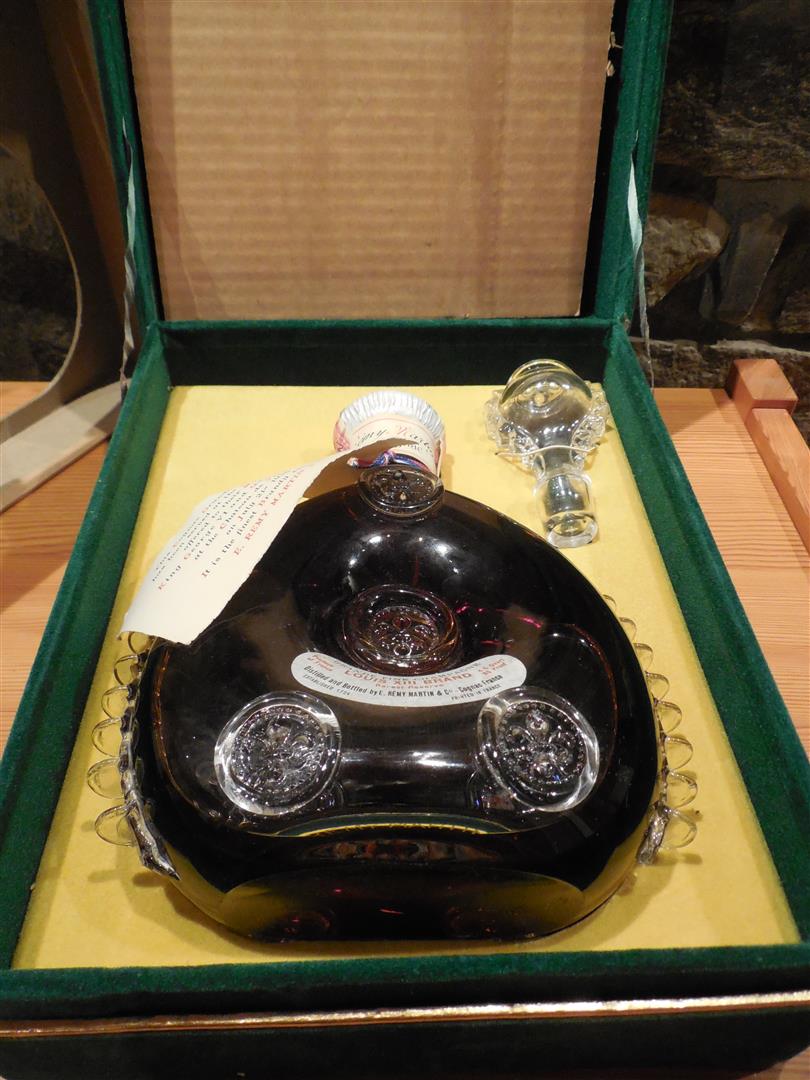 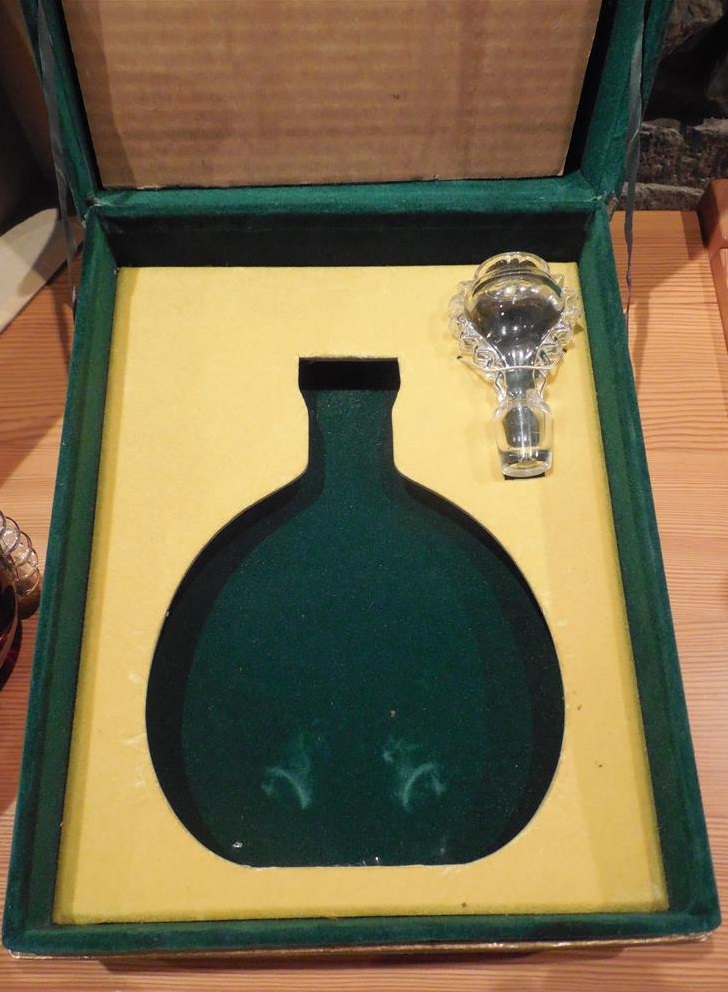 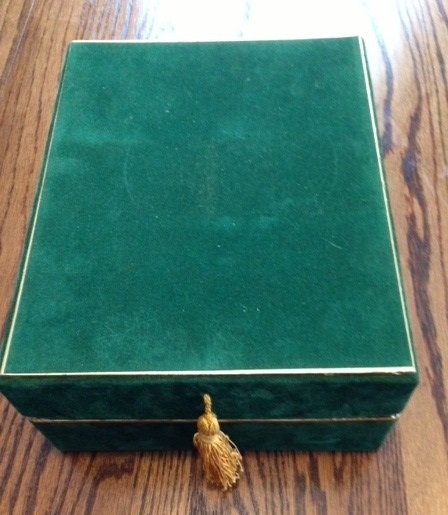 |
Three of these green velvet presentation boxes were purchased together and two have consecutive serial numbers which all but garanties authenticity. Renfield Importers Ltd. was formed in 1936 but took over Remy Martin imports from Browne Vintners in 1940. Louis XIII bottles imported by this company are likely from 1946 and later. These bottles do not have Baccarat logos only the Baccarat name engraved under the base. No logo bottles are still older than bottles with logos but neither type is pre-WW2. All low serial numbers < 120 is an indication that yearly production/sale of Louis XIII was small in those years. The 1938 Royal Visit cards are identical to those used on "Age Inconnu" bottles. Gold tassel, hole for stopper. |
| 1951 TO 1961 EUROPE |
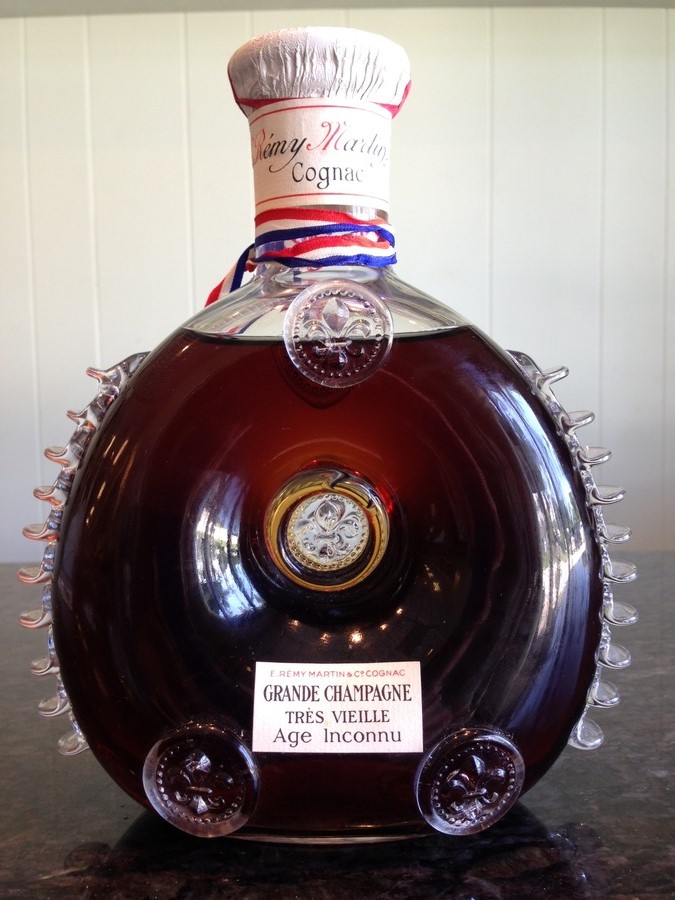 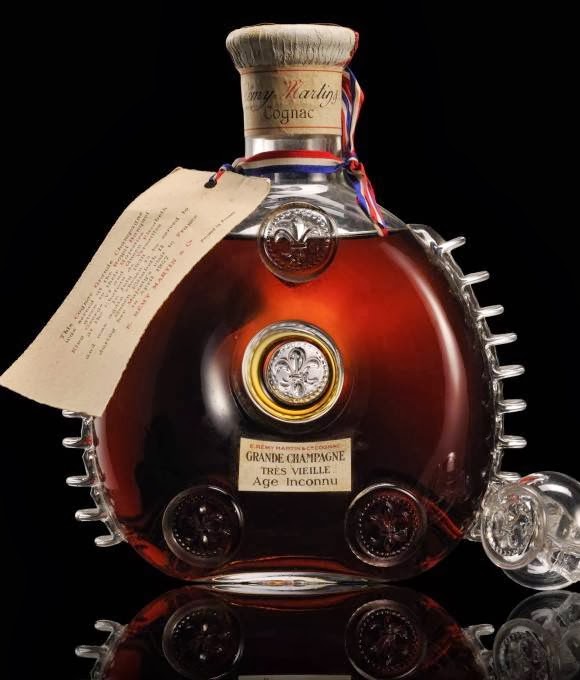 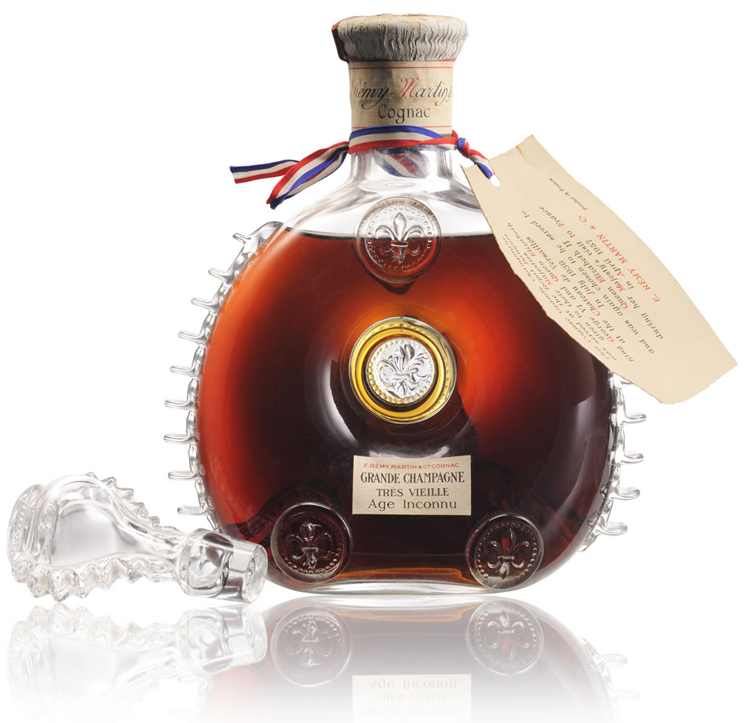 |
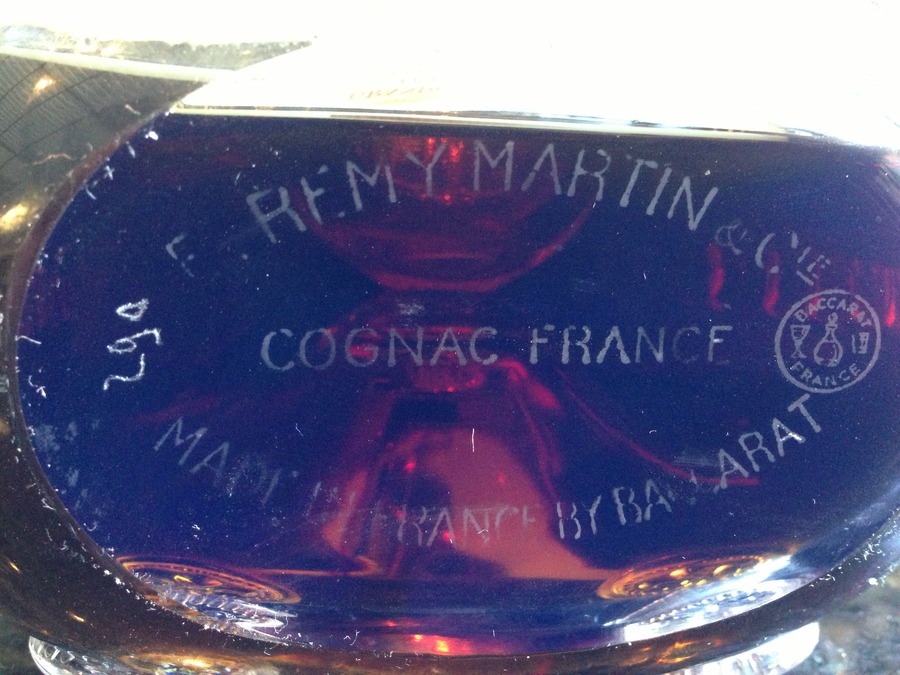 Made in France by Baccarat with Logo. Engraved number (290) |
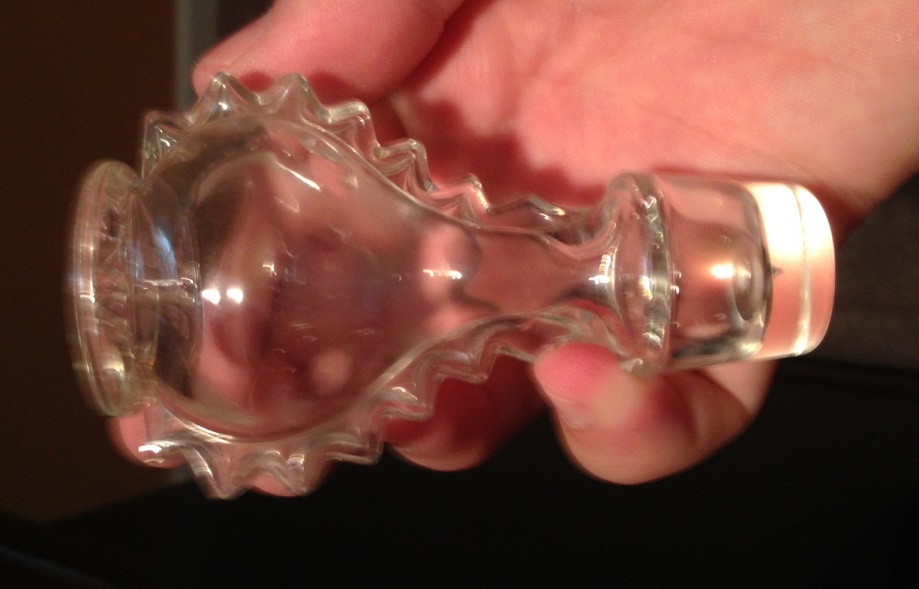 Stopper engraved with same number as decanter |
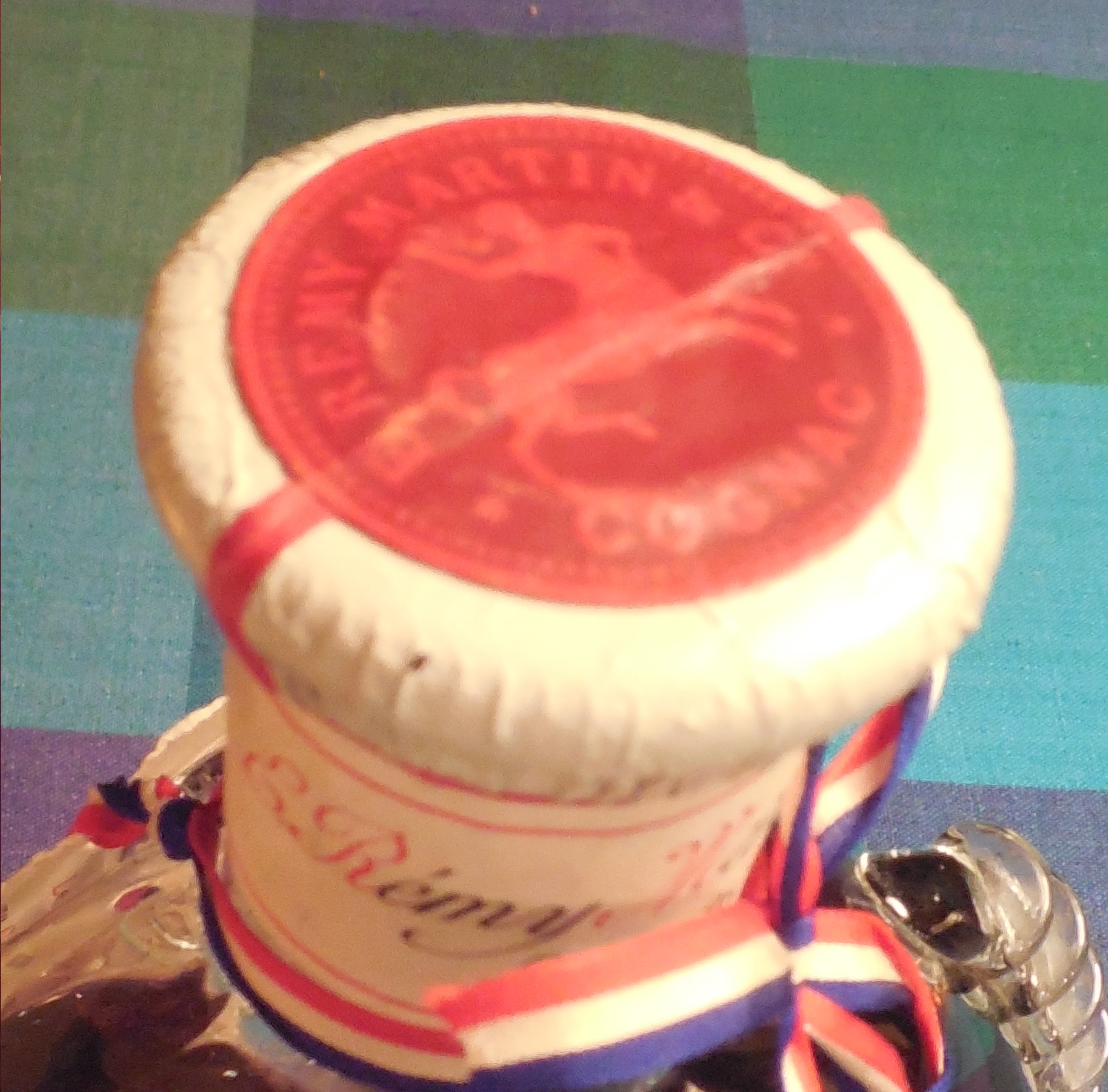 Same Centaur logo on cork seal. |
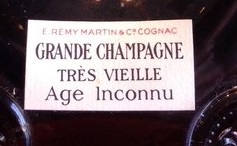 Rectangular "Age Inconnu" name continues to be used in Europe in the 1950s. |
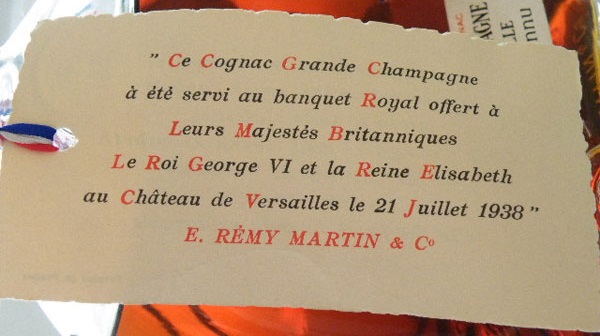 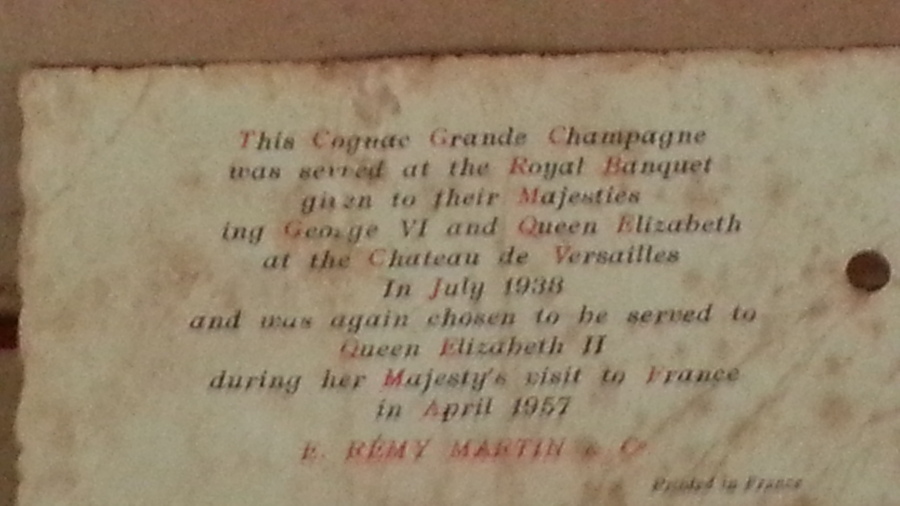 These bottle exist both with 1938 Royal Banquet Card and with the 1957 Royal Banquet Card. |
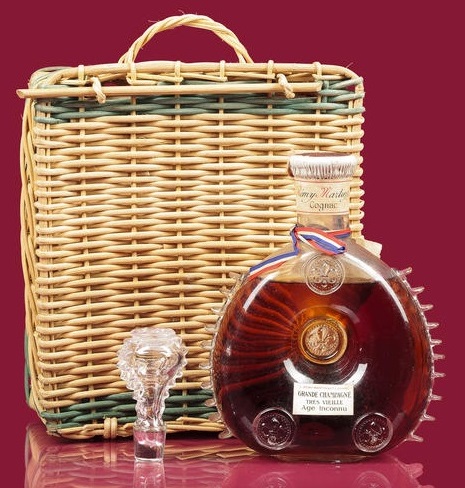 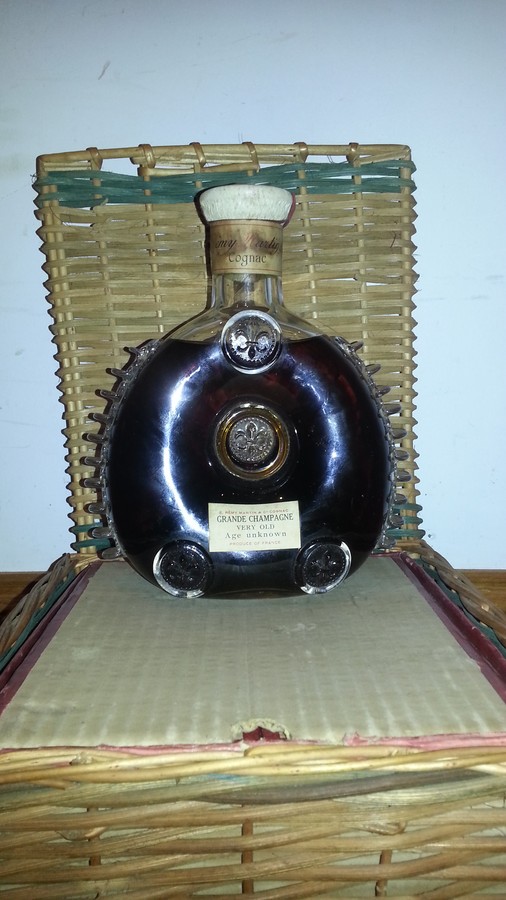 |
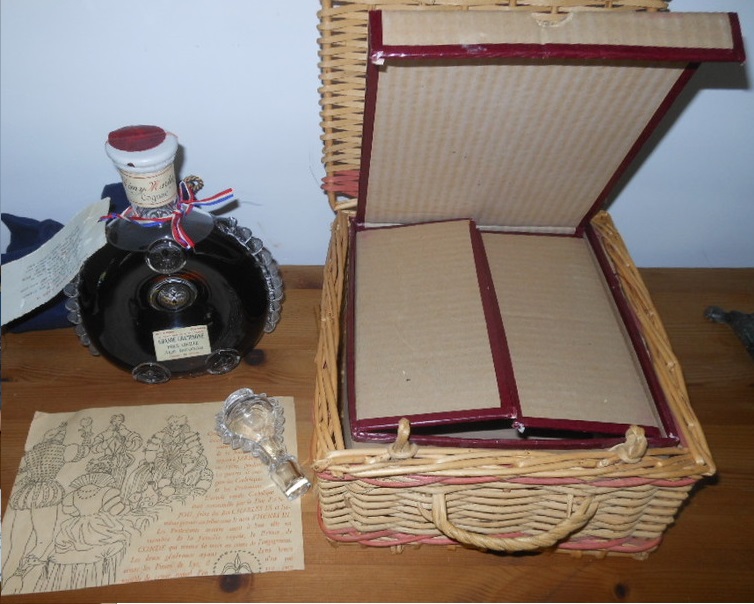 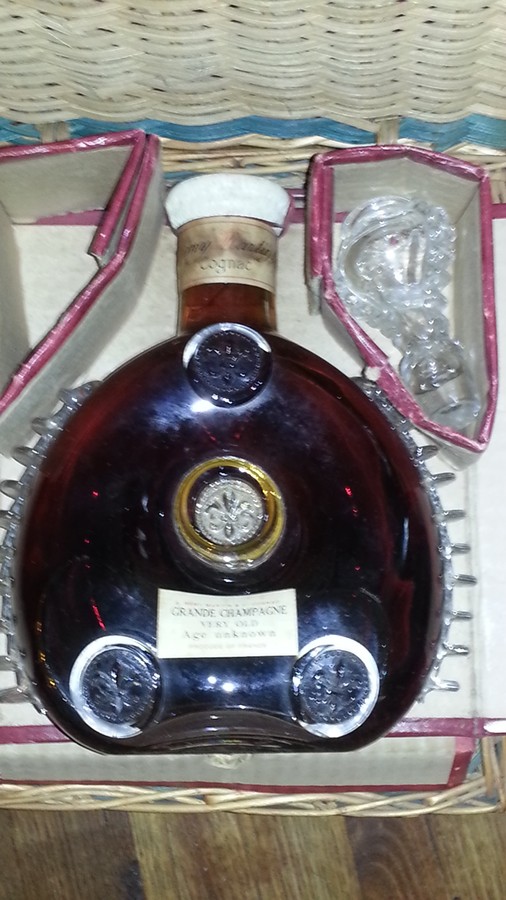 |
Both "Age Inconnu" and "Rarest Reserve" were produced together in the post WW2 years with neither type clearly preceding the other. After 1950 the bottles will have a Baccarat Logo under the base in addition to the name. The "Age Inconnu" Louis XIII continues to be sold in the traditional Rattan basket in Europe while the "Rarest Reserve" is sold in a more modern velvet box in USA. This appears to last until 1961 when US imports and European bottles start sharing the same beige box. |
| 1951 TO 1956 USA |
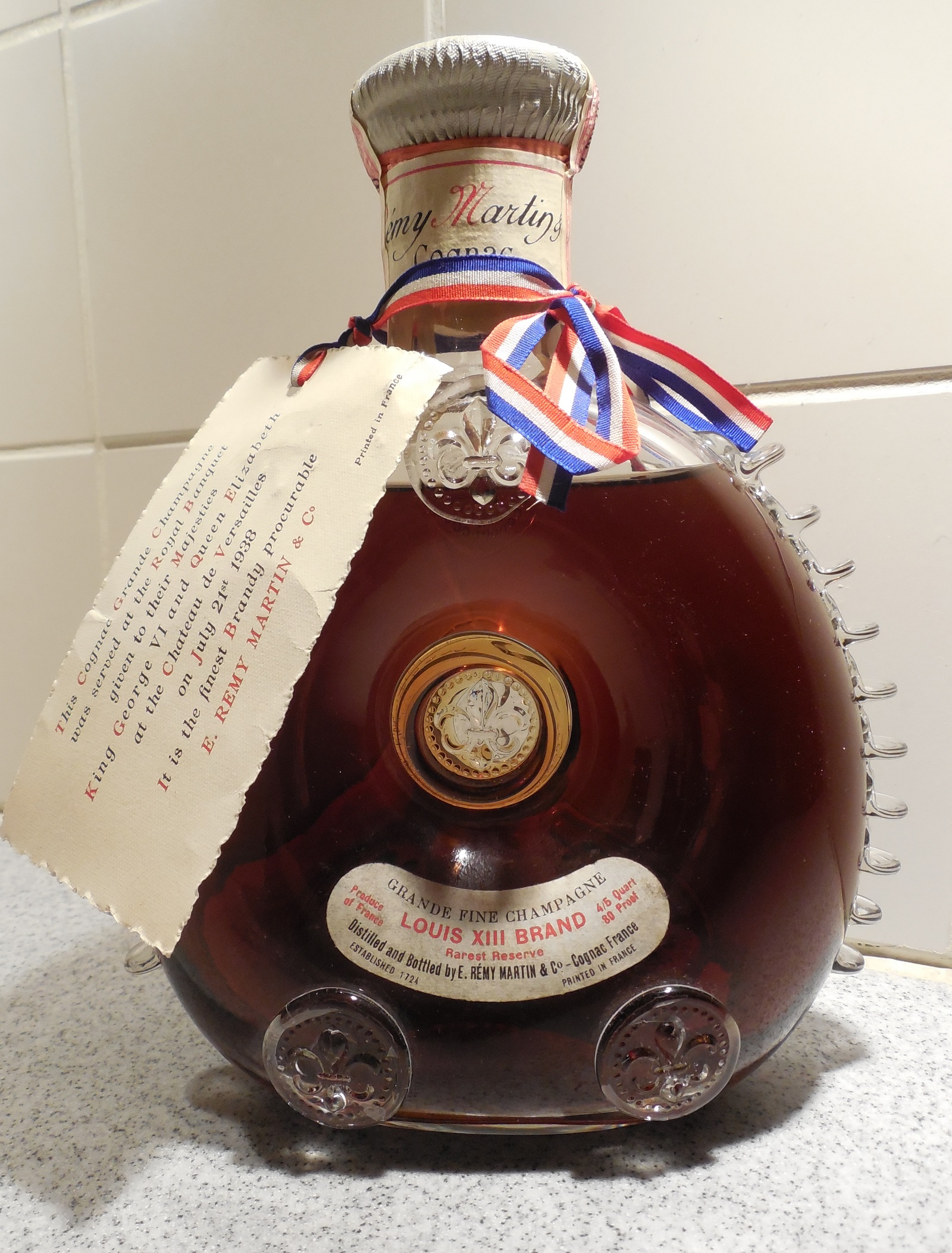 |
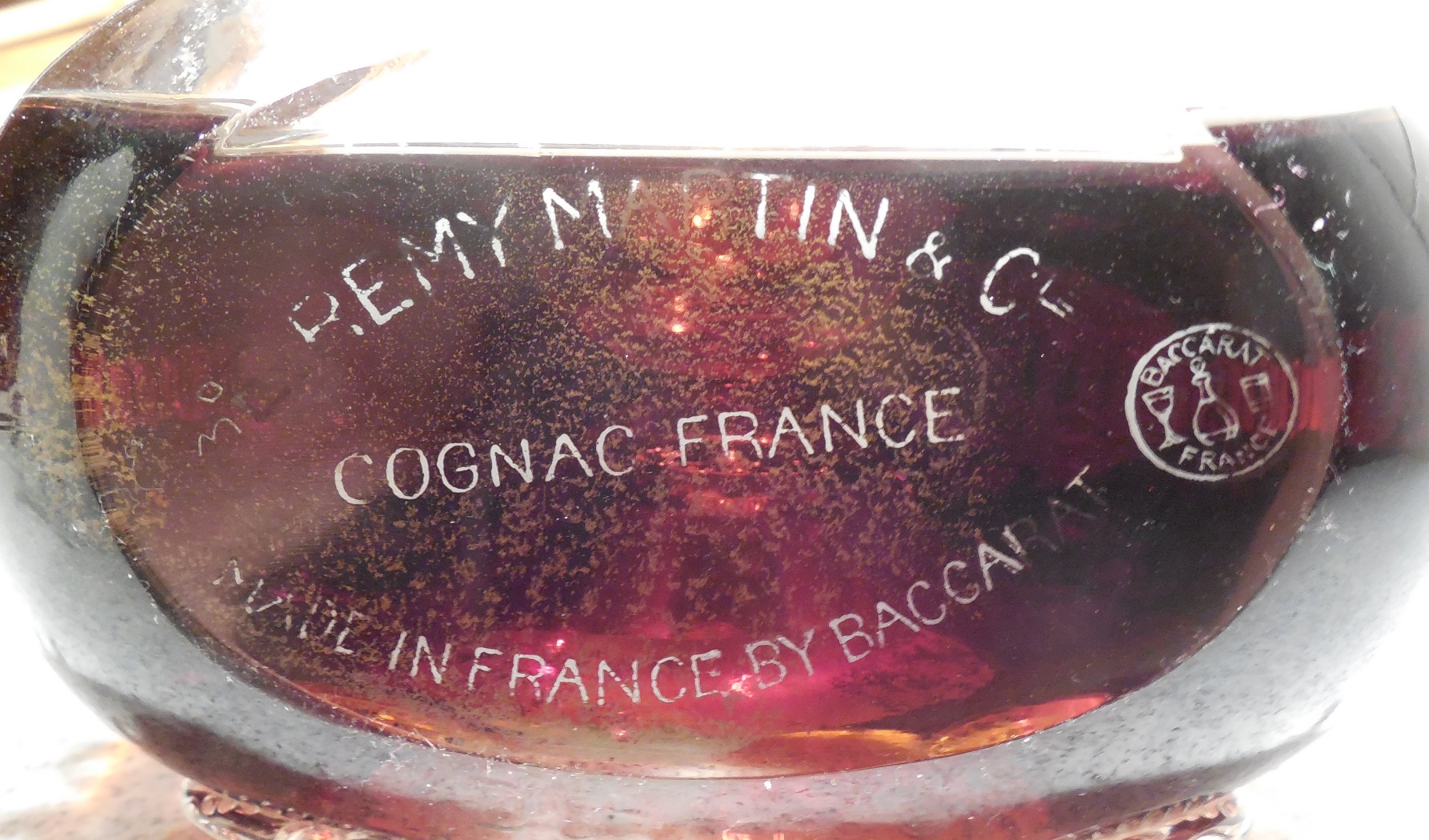 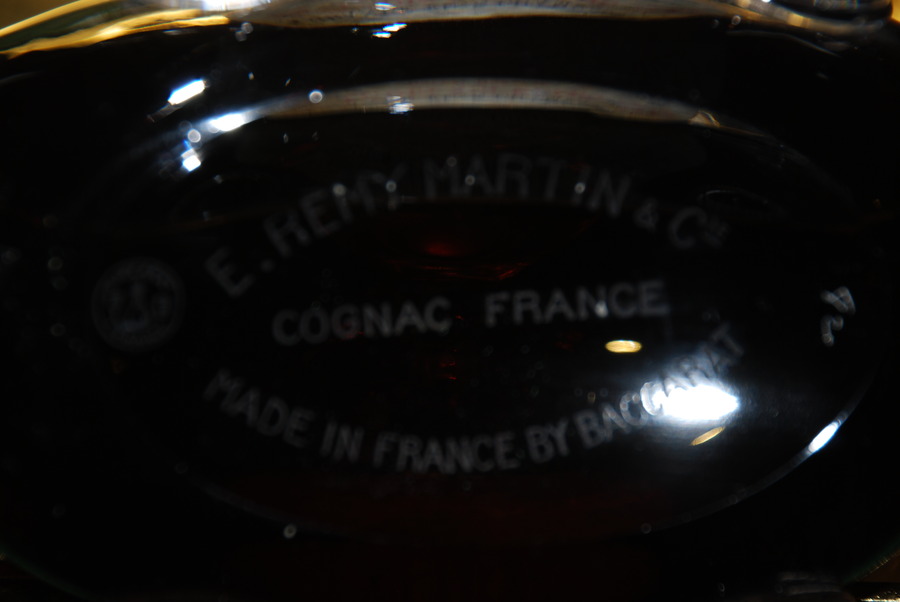 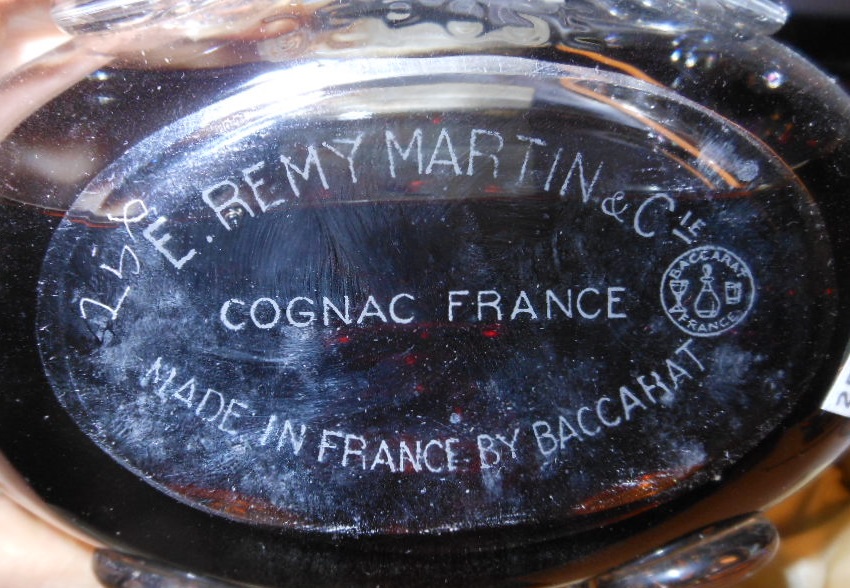 Made in France by Baccarat With Logo. Hand-engraved number (30, 82 & 256) |
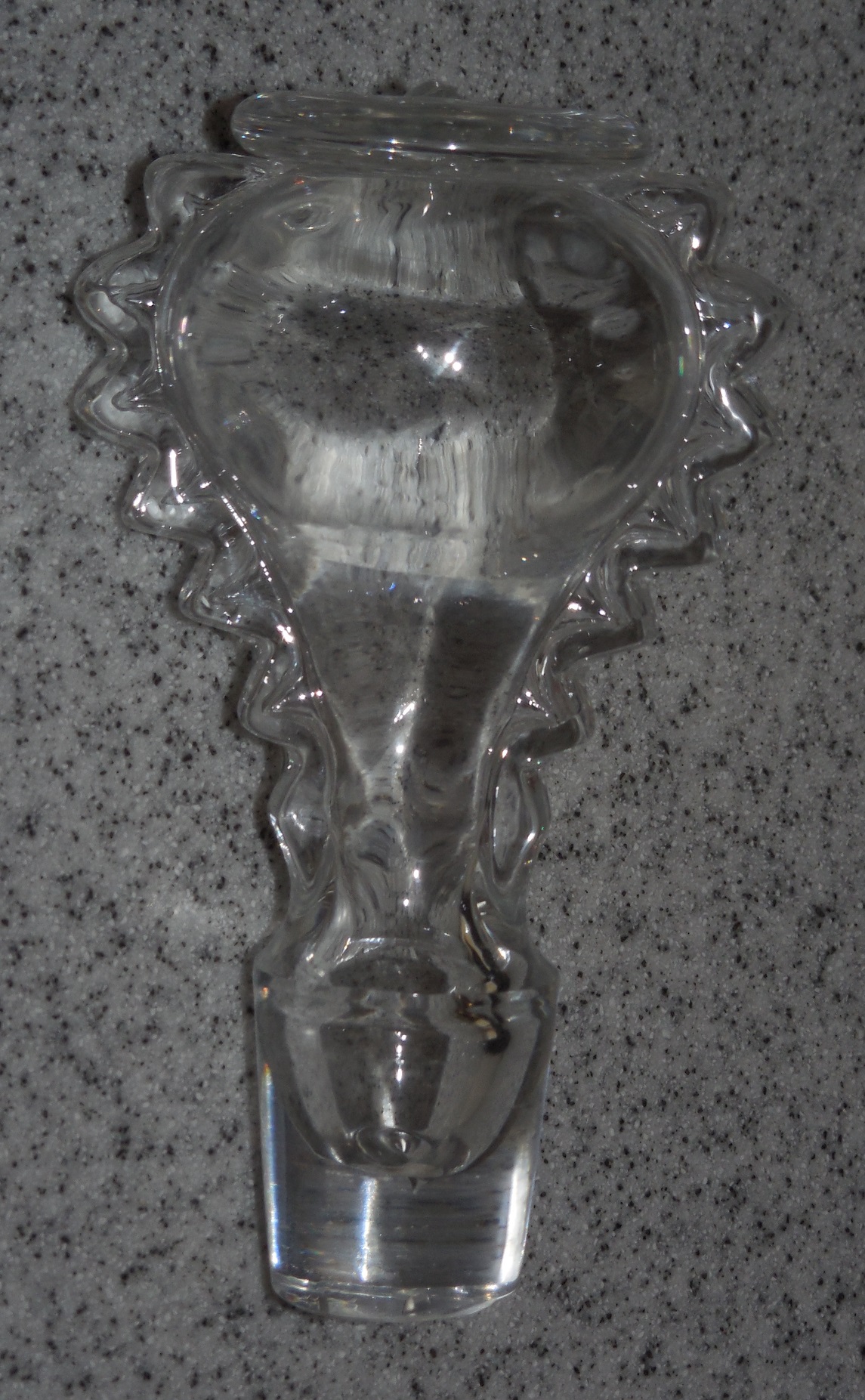 |
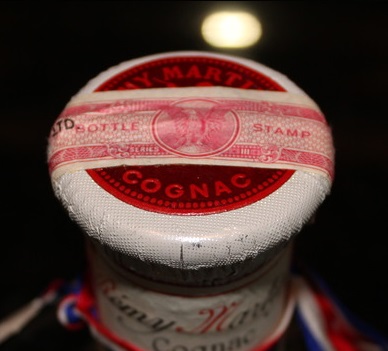 |
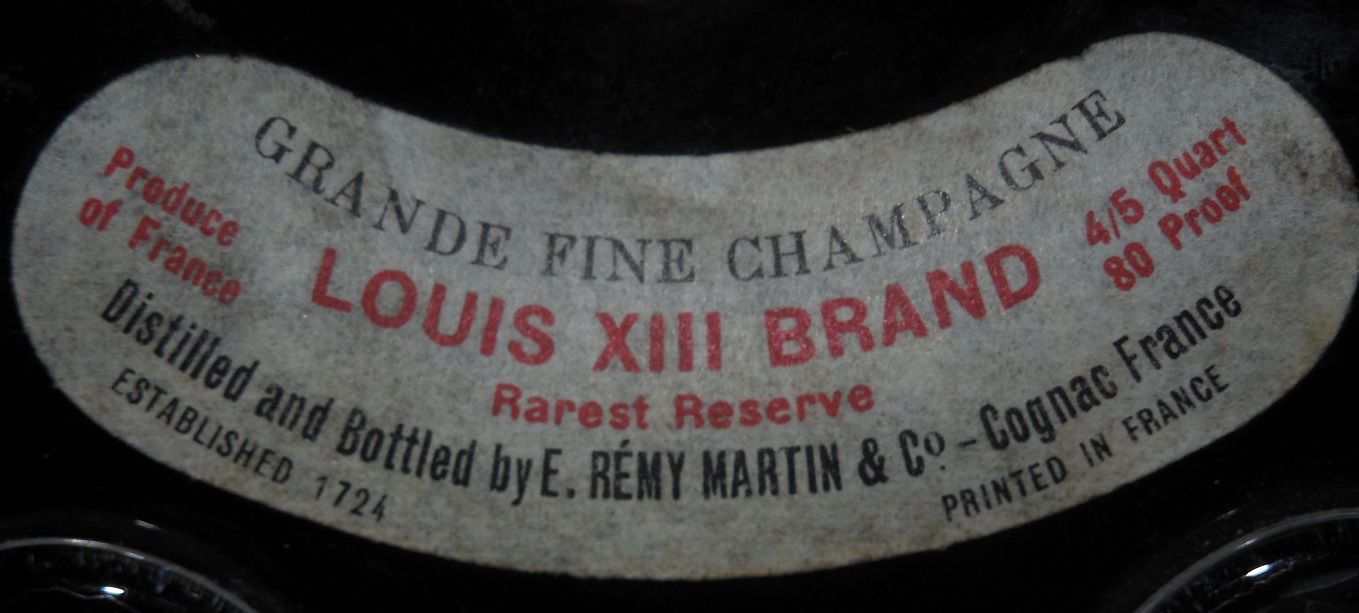 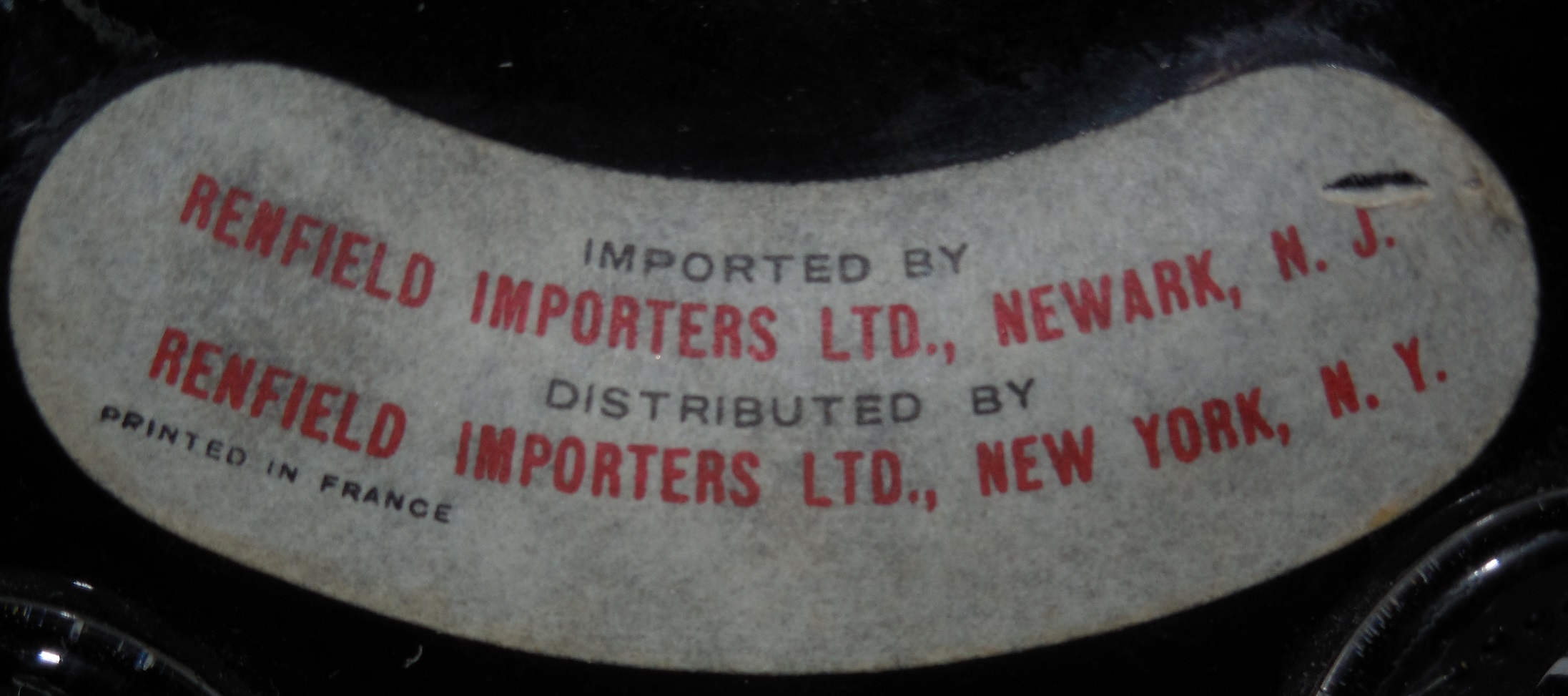 Bean-shaped "Louis XIII Brand" Label US importer name listed on similar back Label. |
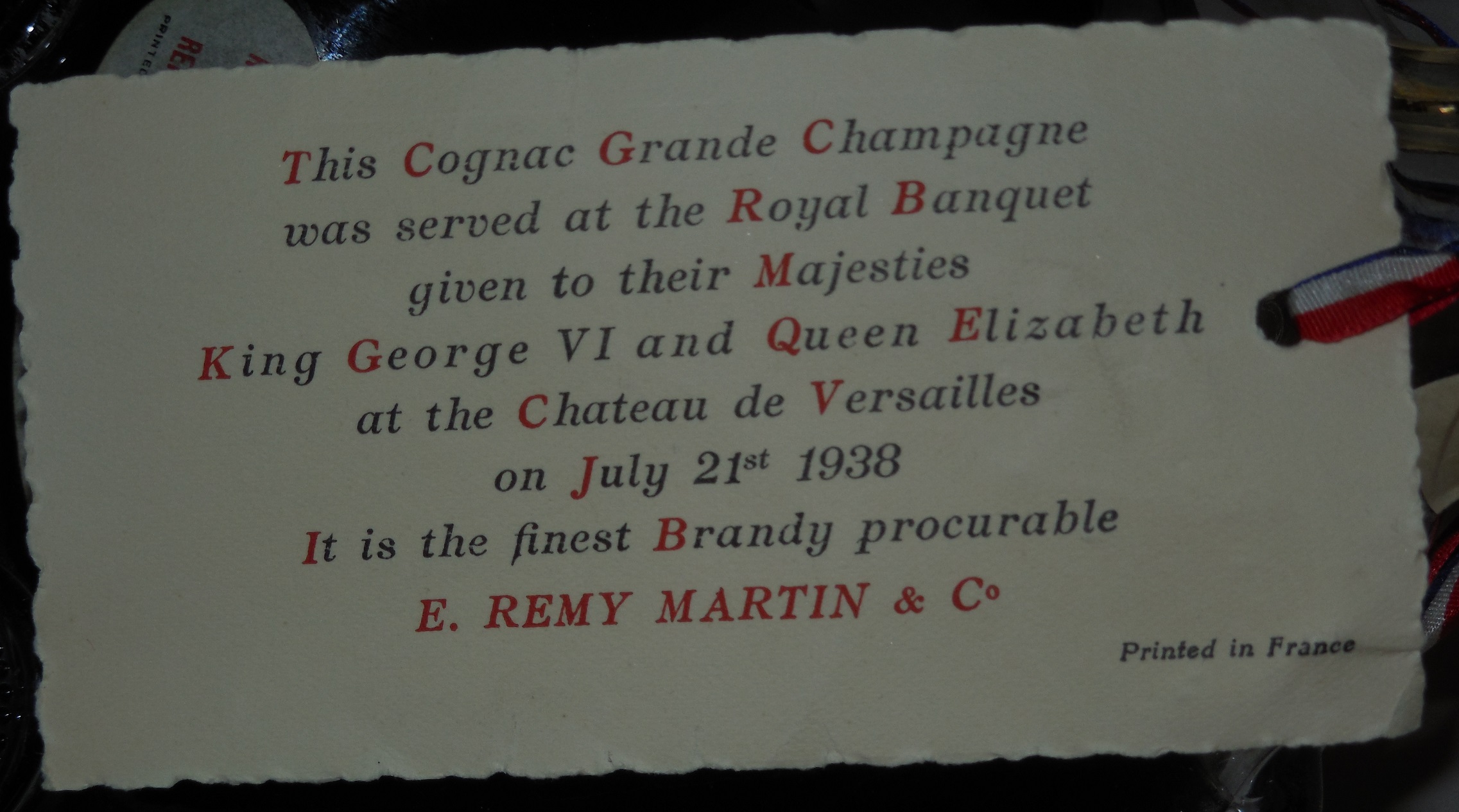 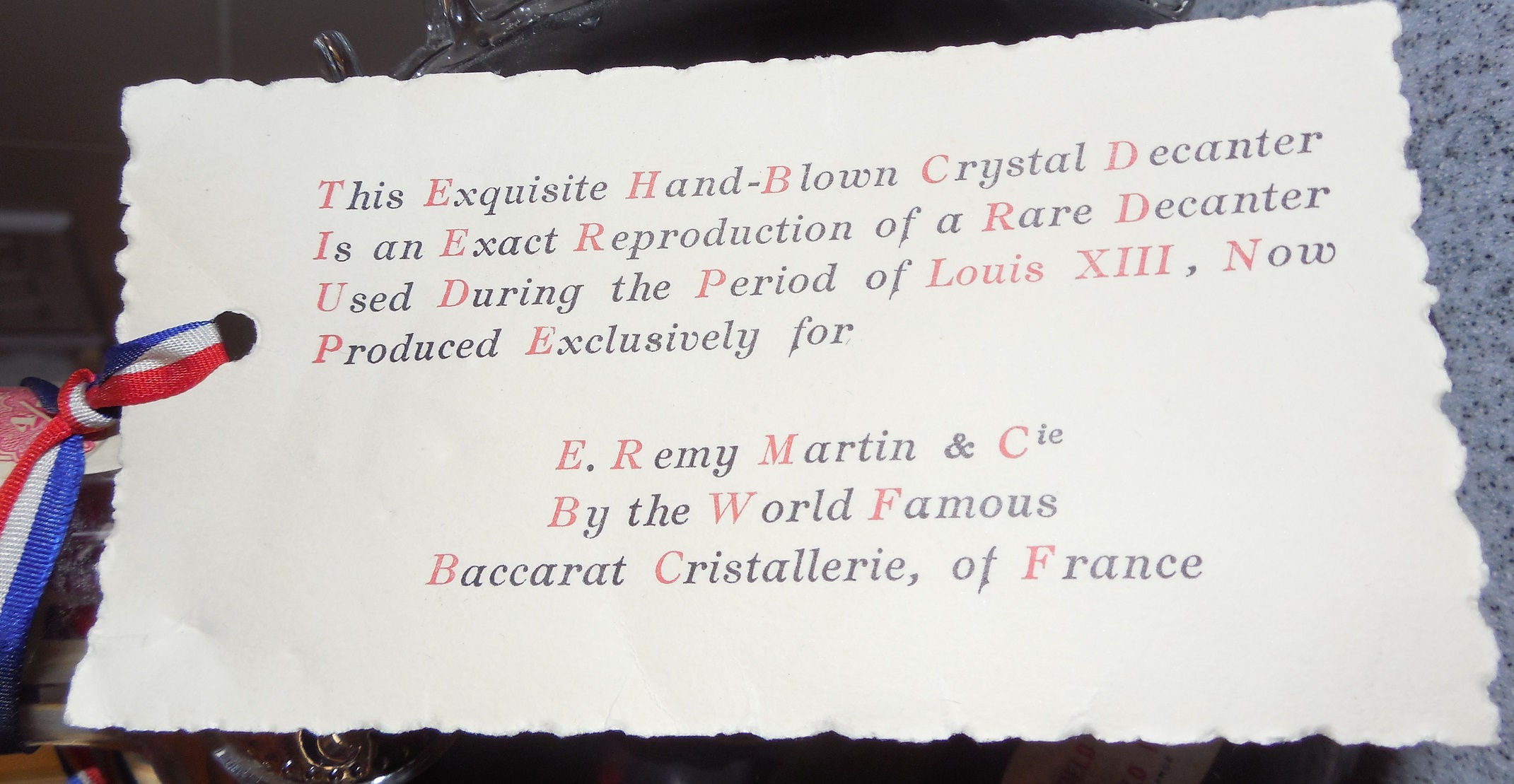 1938 Royal Banquet Card Back side has short bottle history |
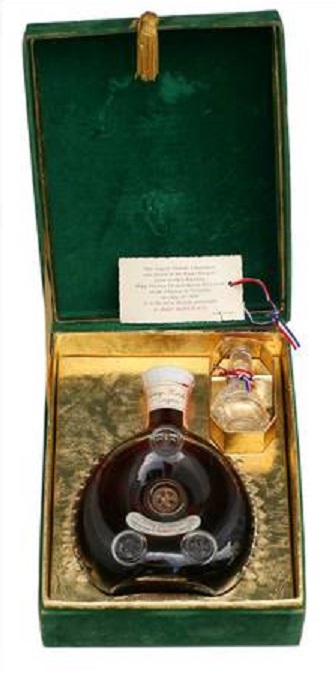 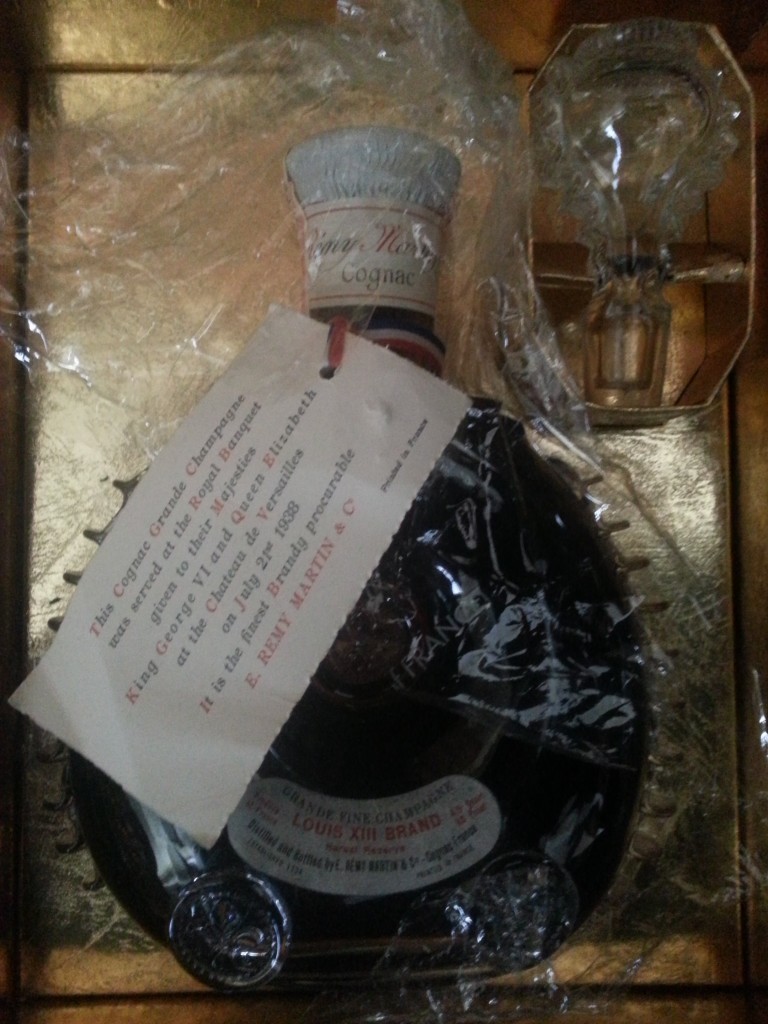 |
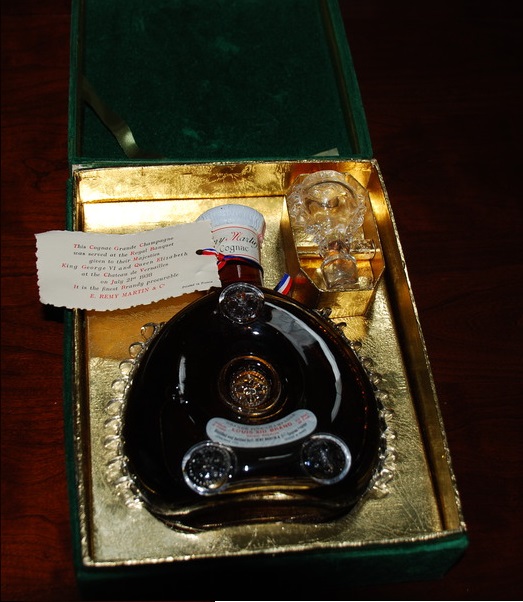 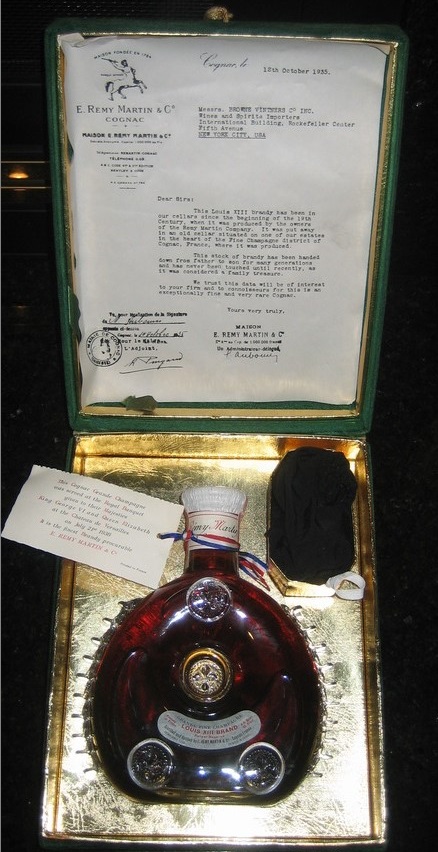 |
"Velvet-covered" green cardboard presentation cases with gold tassel and gold cardboard liner. Cardboard compartment for stopper. Some boxes had a mirror inside the lid as shown in the 1953 advertisement. See year 1958 below for one such bottle. |
| 1957 TO 1958 USA |
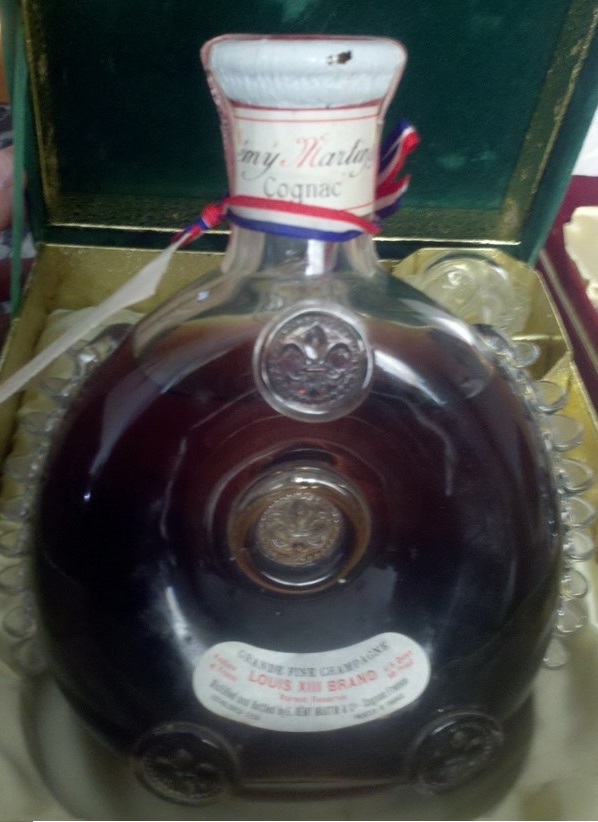 |
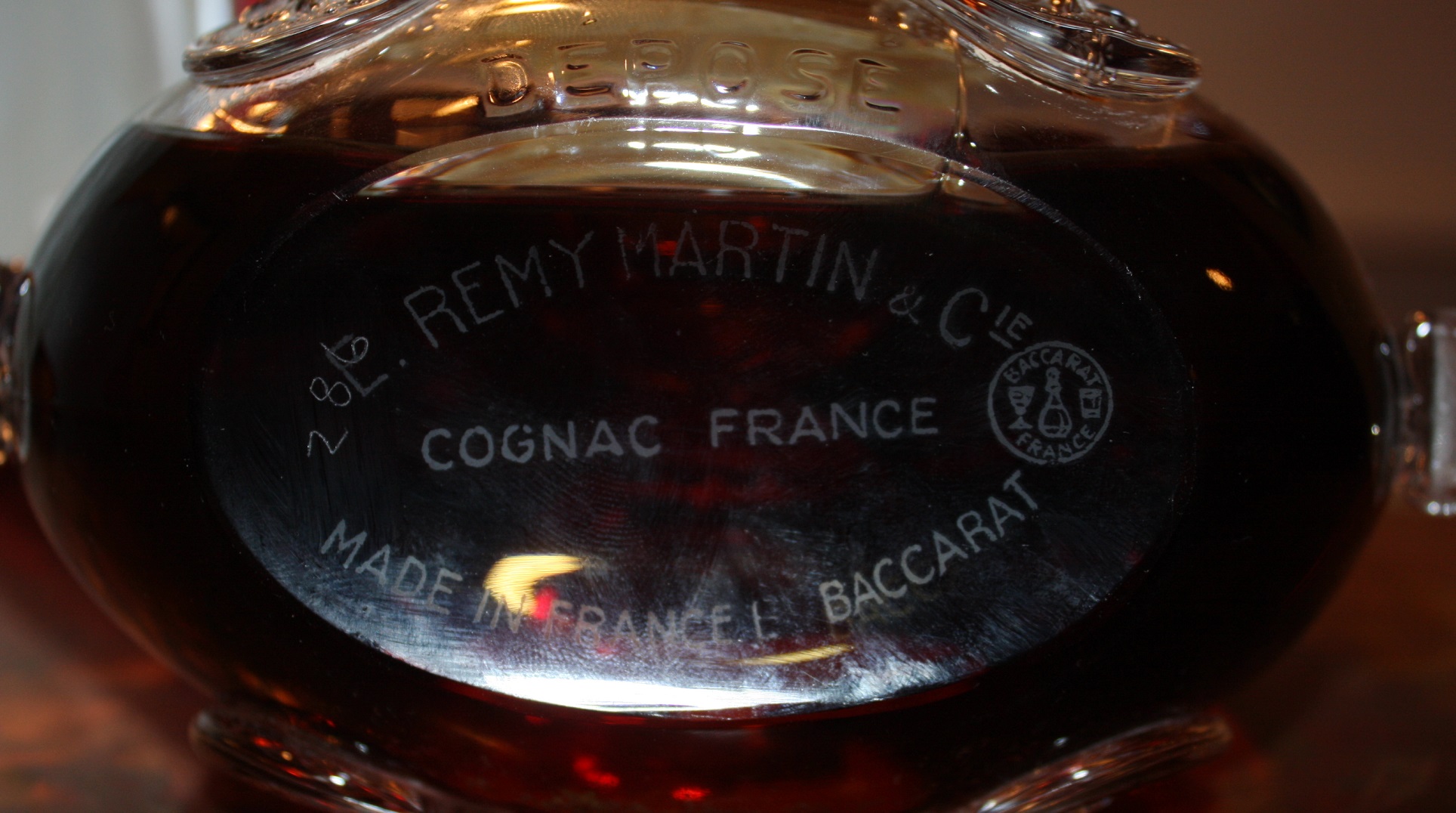 Made in France by Baccarat. With Logo and number (286). |
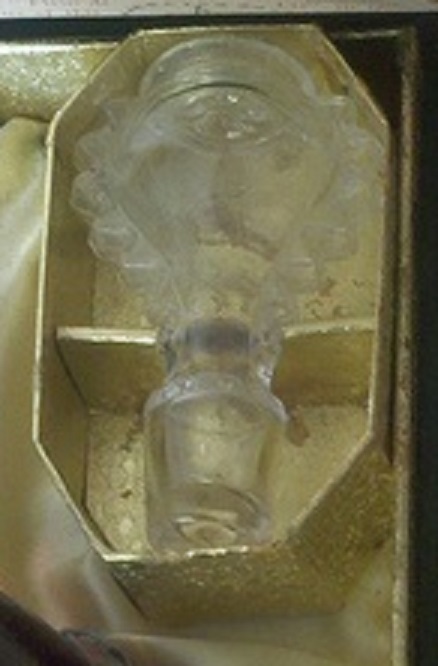 |
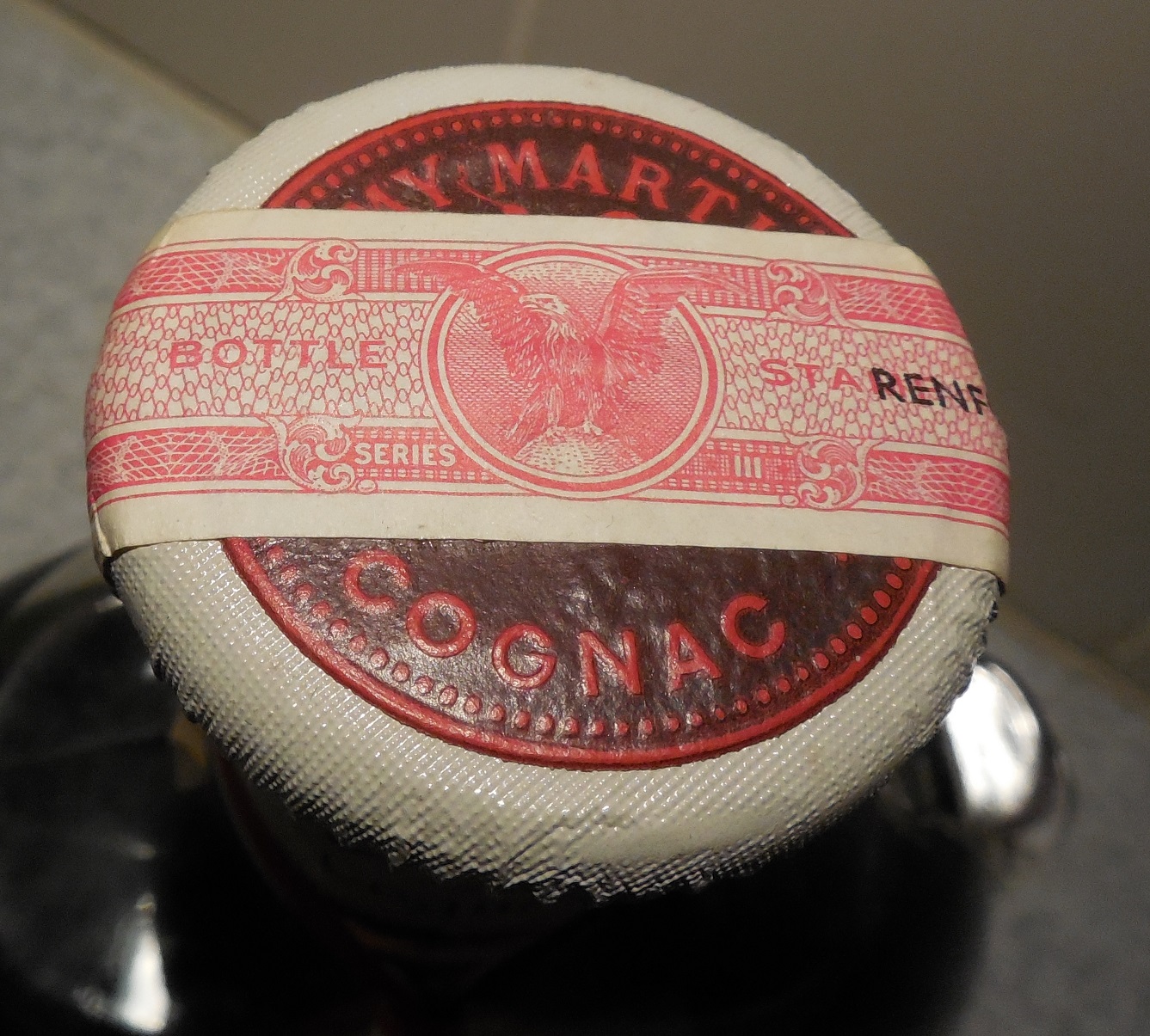 |
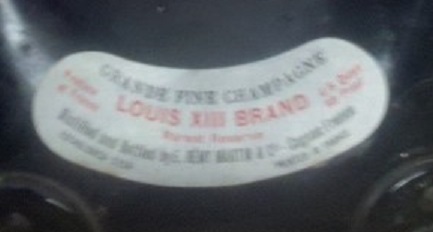 Bean-shaped "Rarest Reserve" Label |
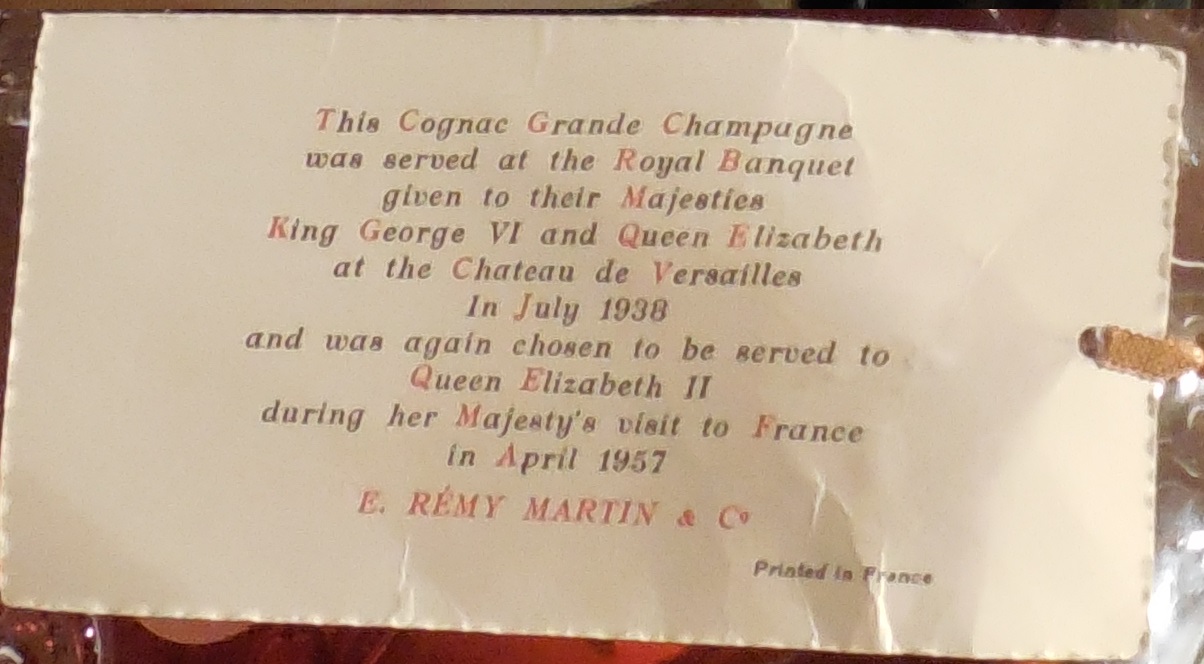 1938 & 1957 Royal Banquet Card |
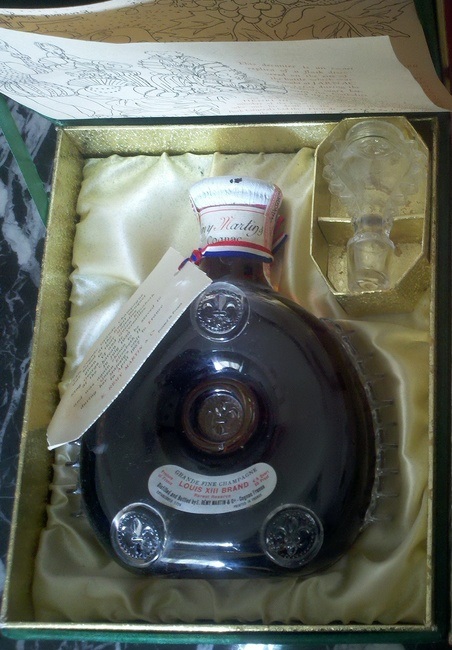 Green velvet box exterior is "plain" - No gold accents lines as on other green cases. |
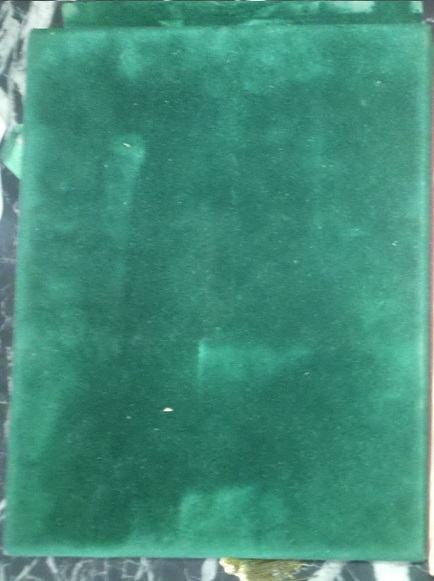 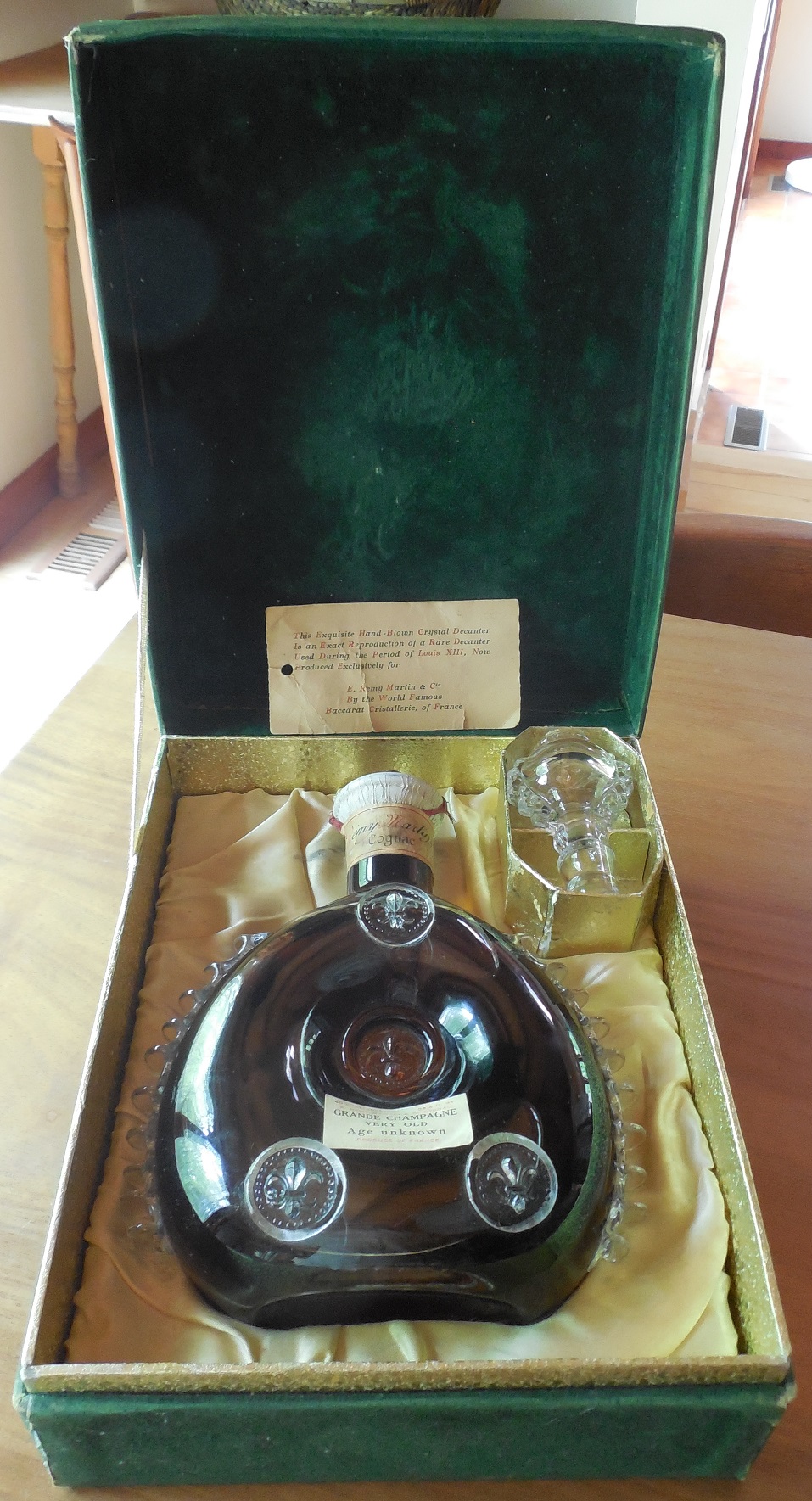 |
"Velvet-covered" plain green cardboard presentation case with gold tassel. Silk liner replaces gold cardboard interior but small stopper compartment remains from previous years. This version was probably sold for only one year. It appears to be the first bottle to get the new "1957 Royal Visit Card". Note: I purchased one case of this type with an "Age Inconnu" bottle (pictured on left) but I am doubtful of the authenticity of this combination. |
| 1958 USA |
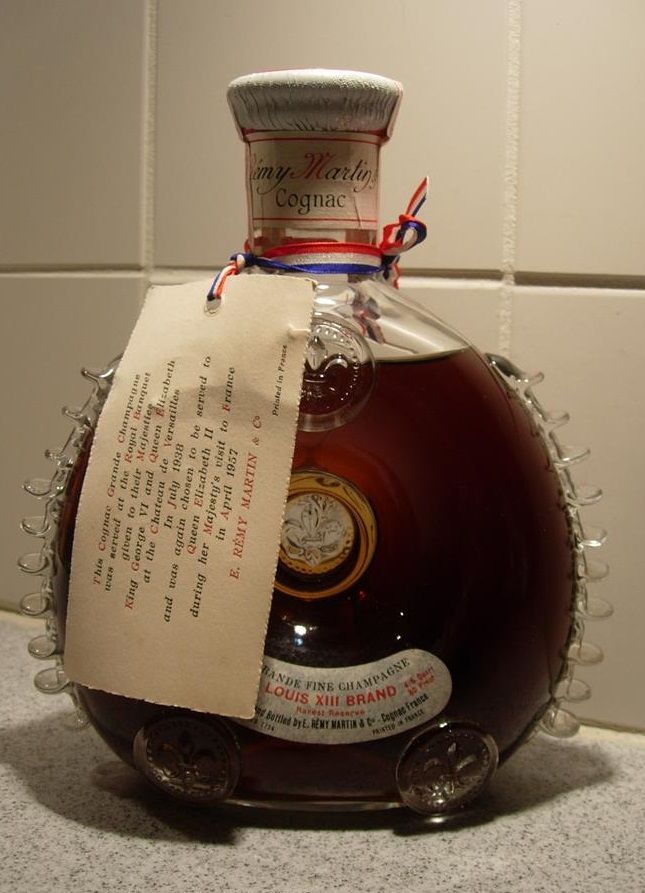 |
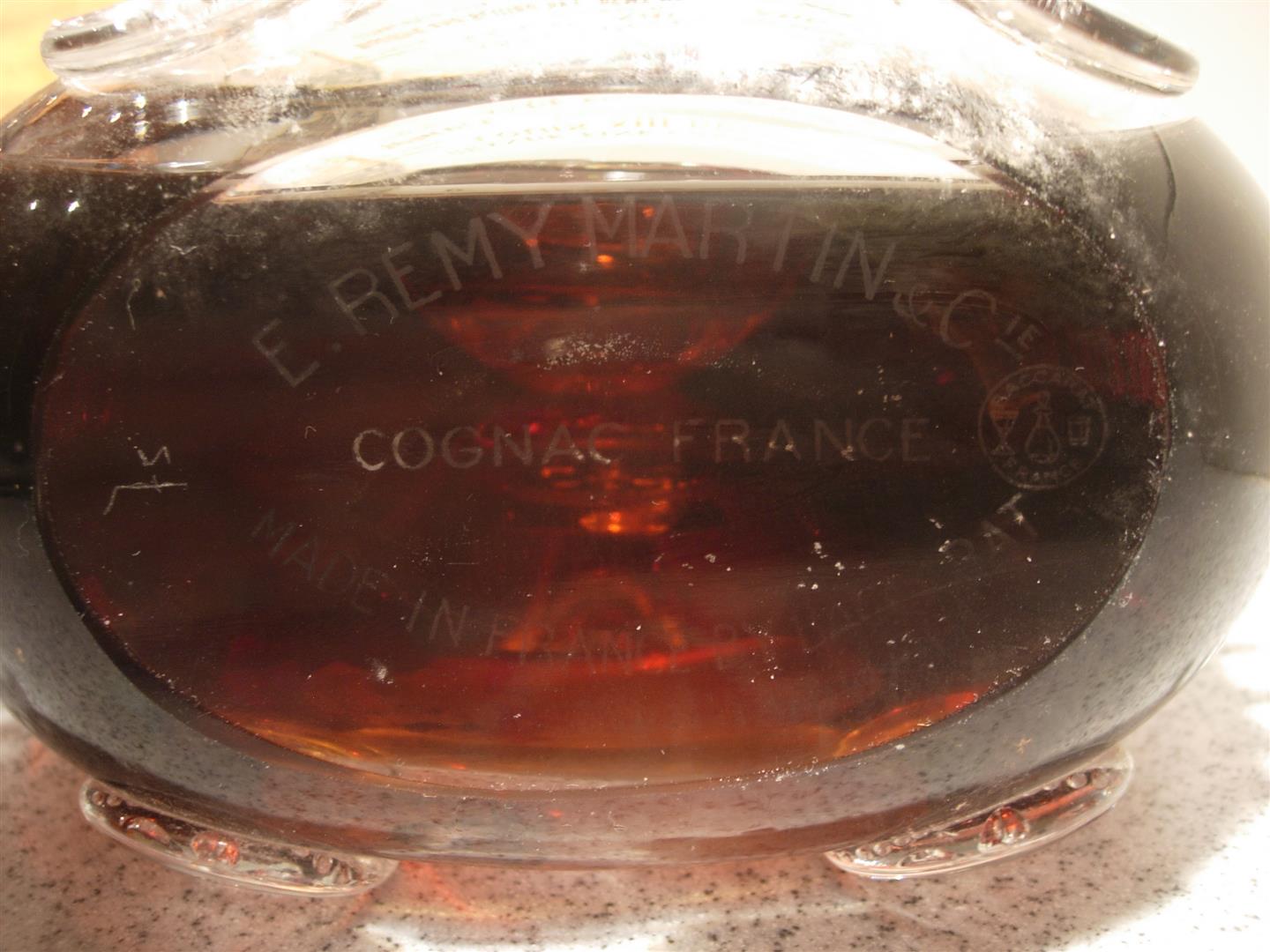 Made in France by Baccarat. With Logo and number (75). |
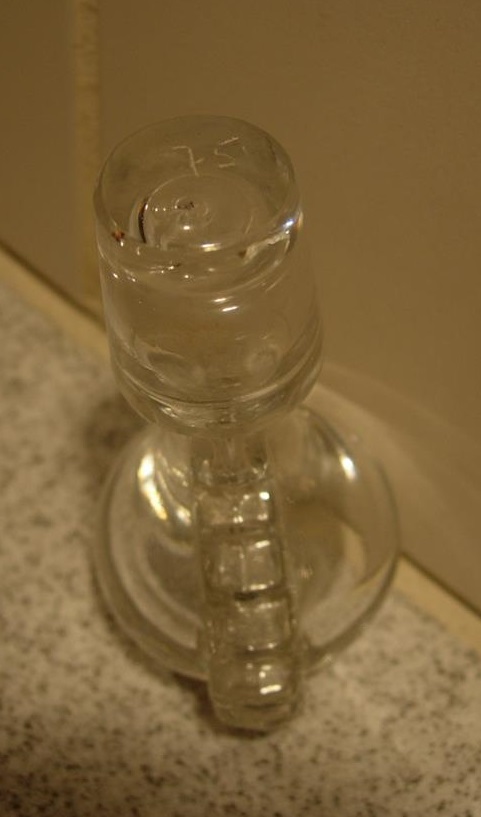 Engraved No.75 stopper. |
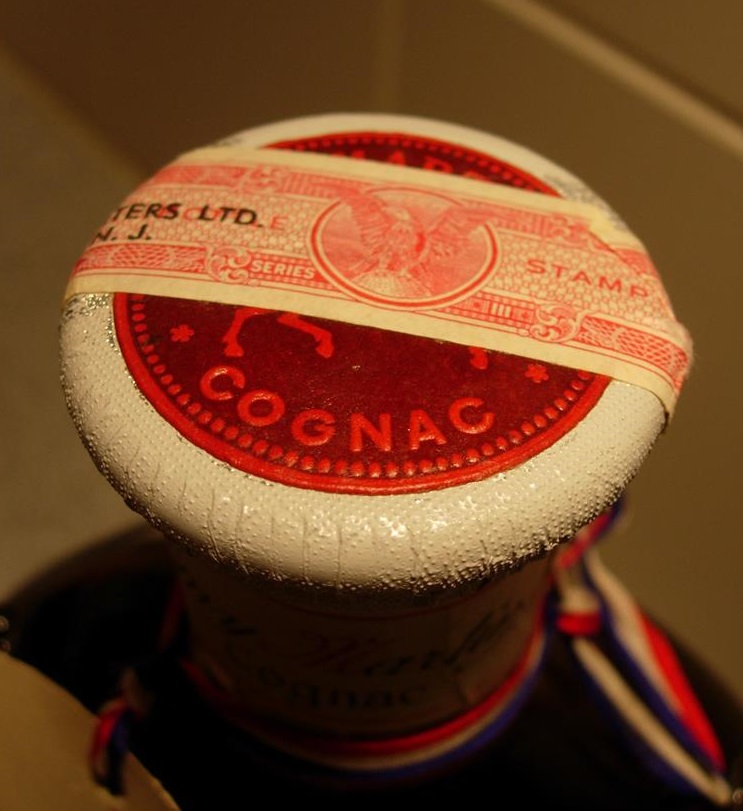 |
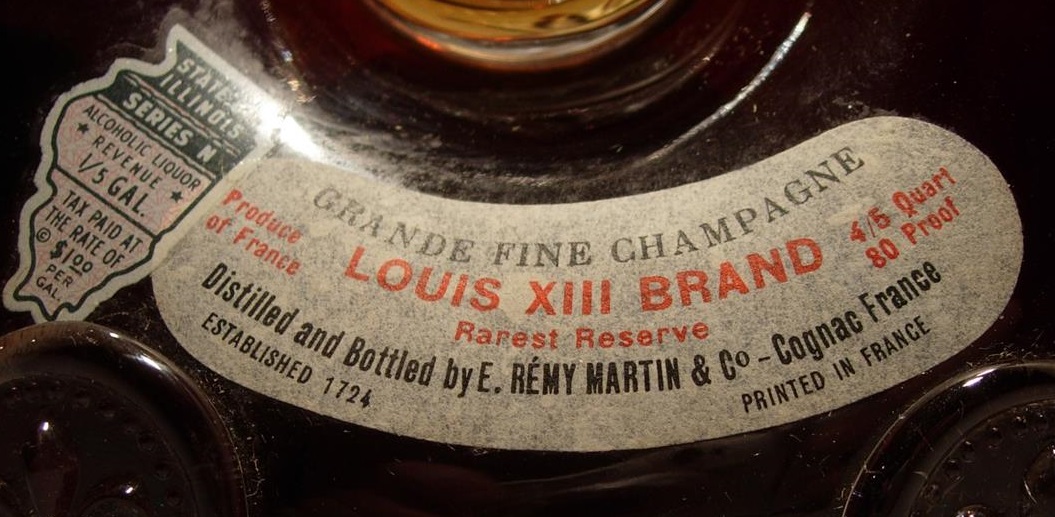 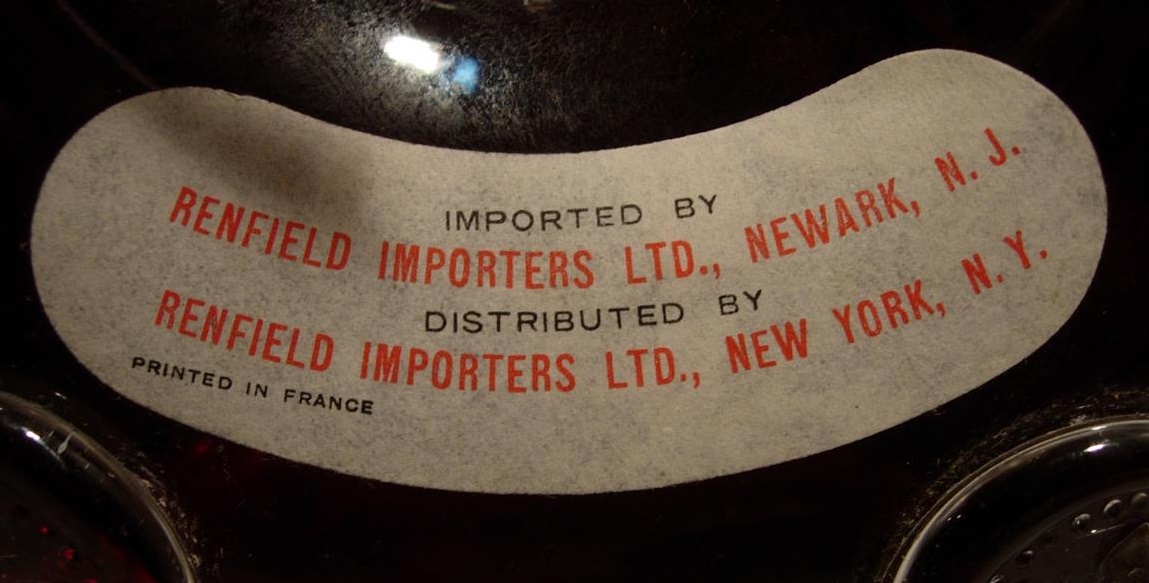 Bean-shaped "Rarest Reserve" Label with Renfield Importers LTD. on back. |
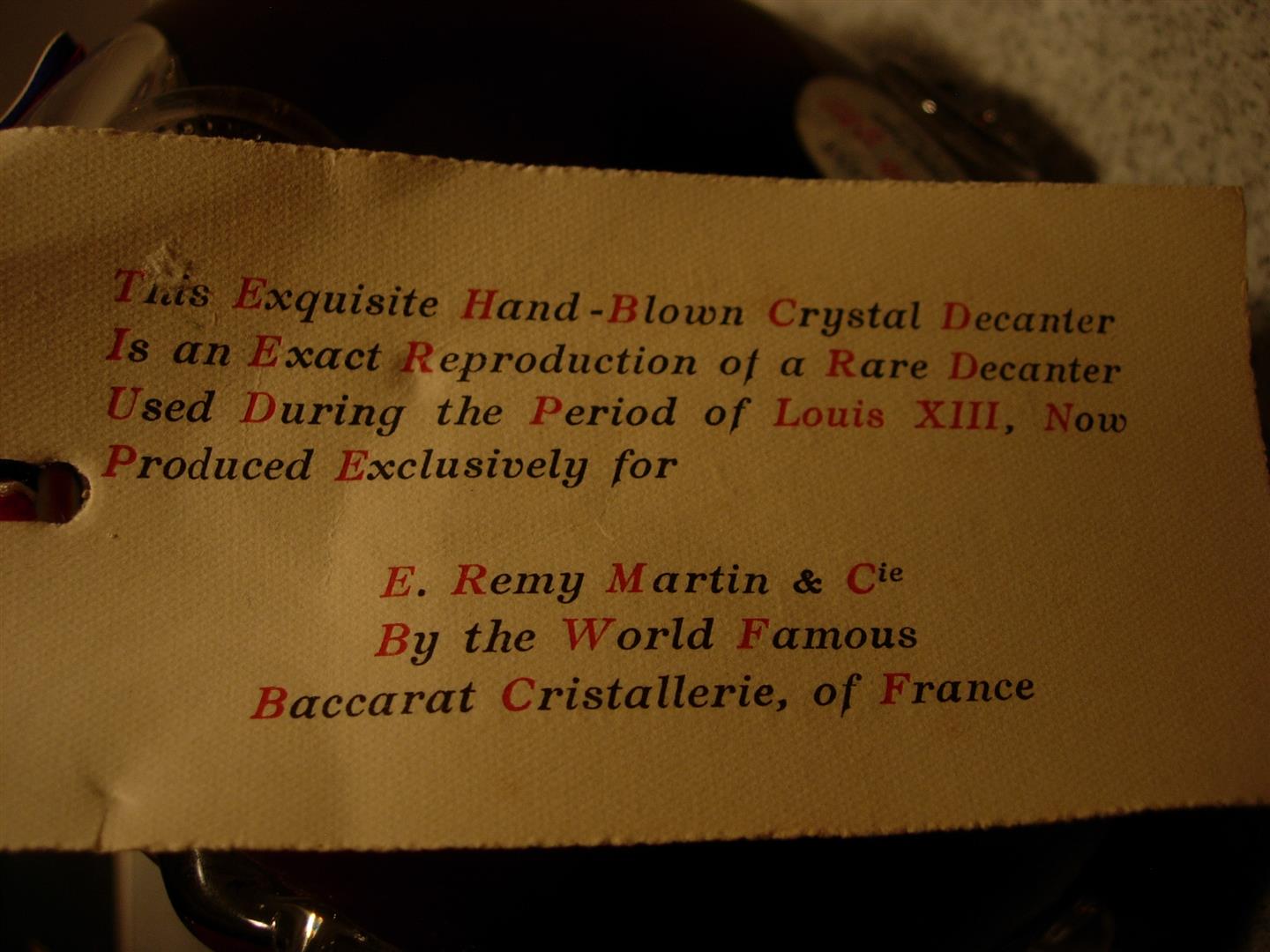 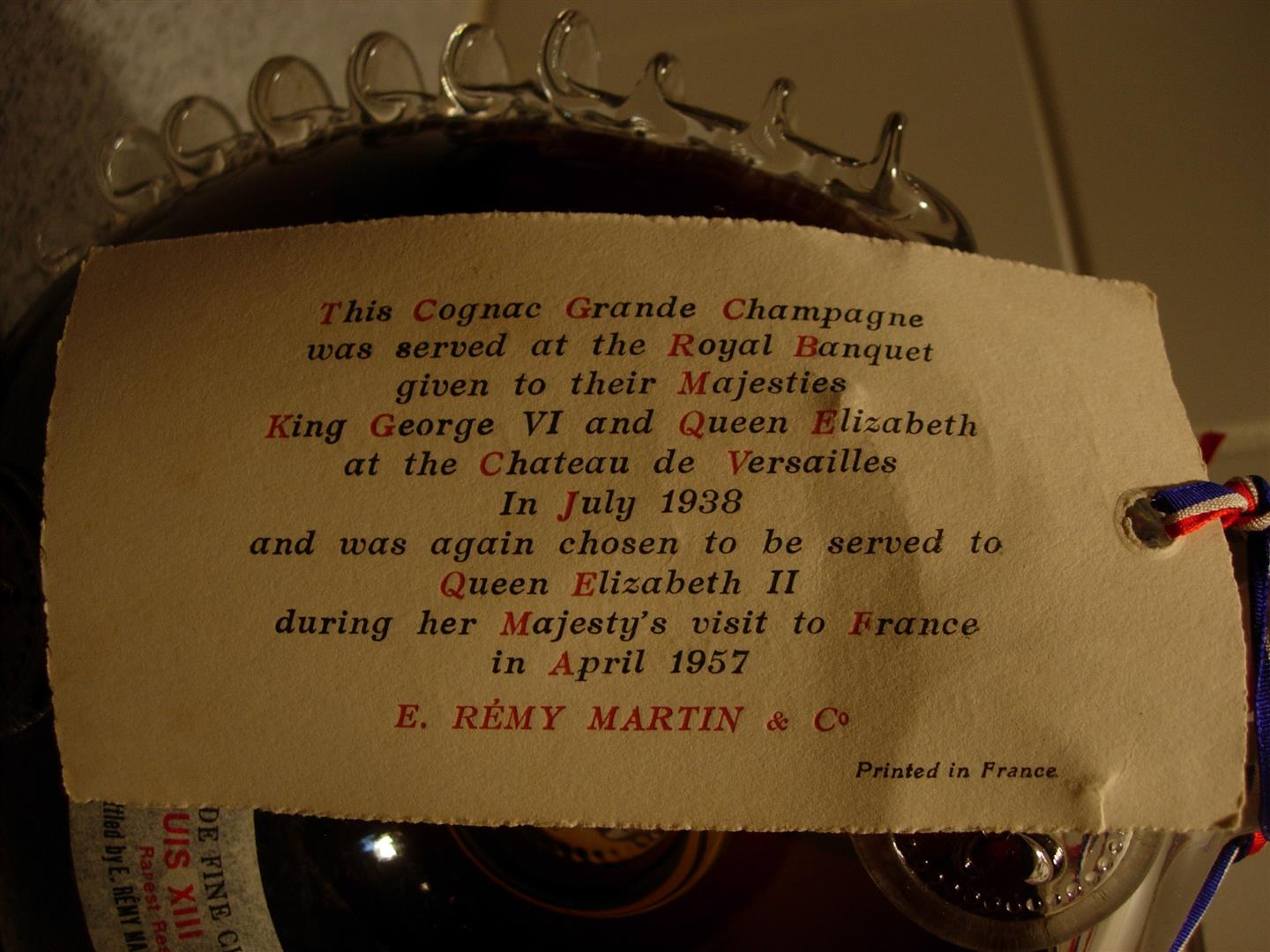 Recto: 1938 & 1957 Royal Banquet - Verso: Brief bottle history |
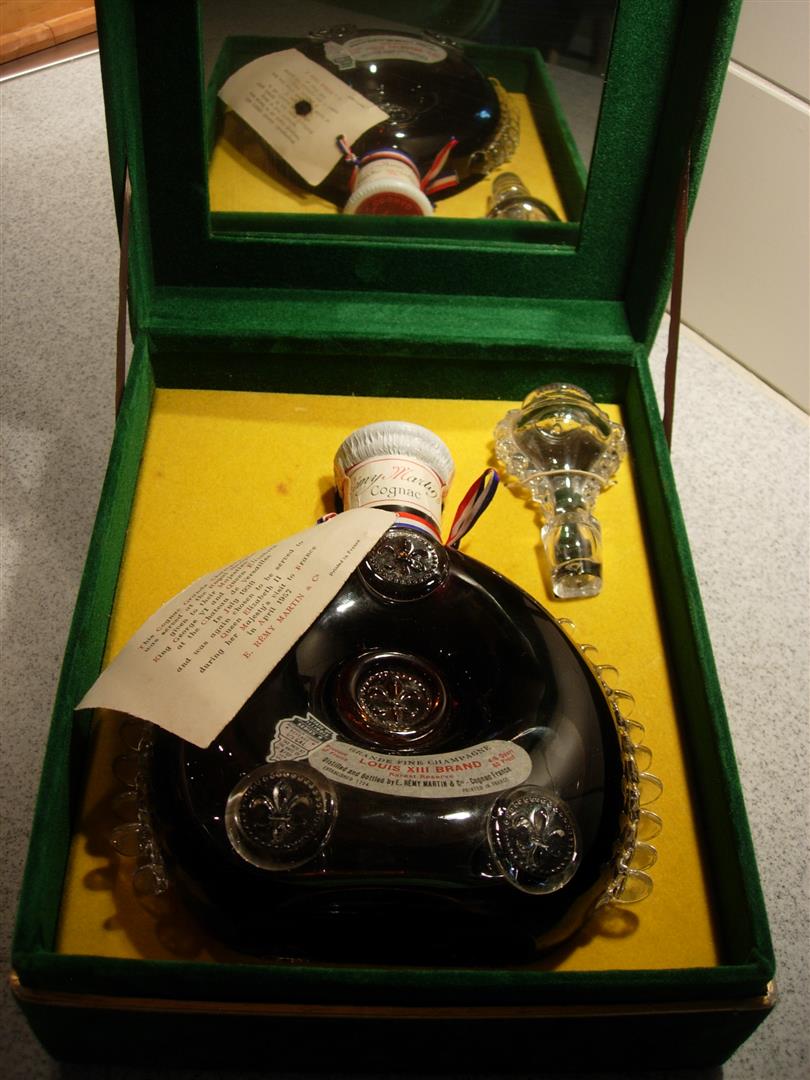 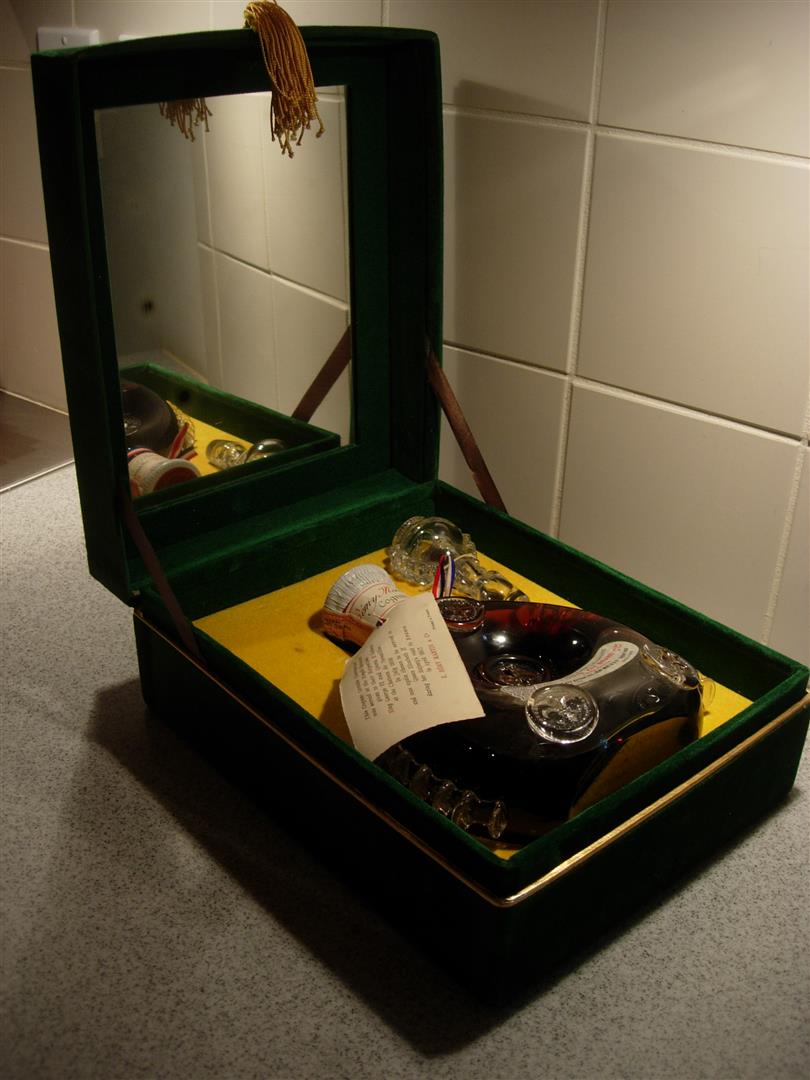 |
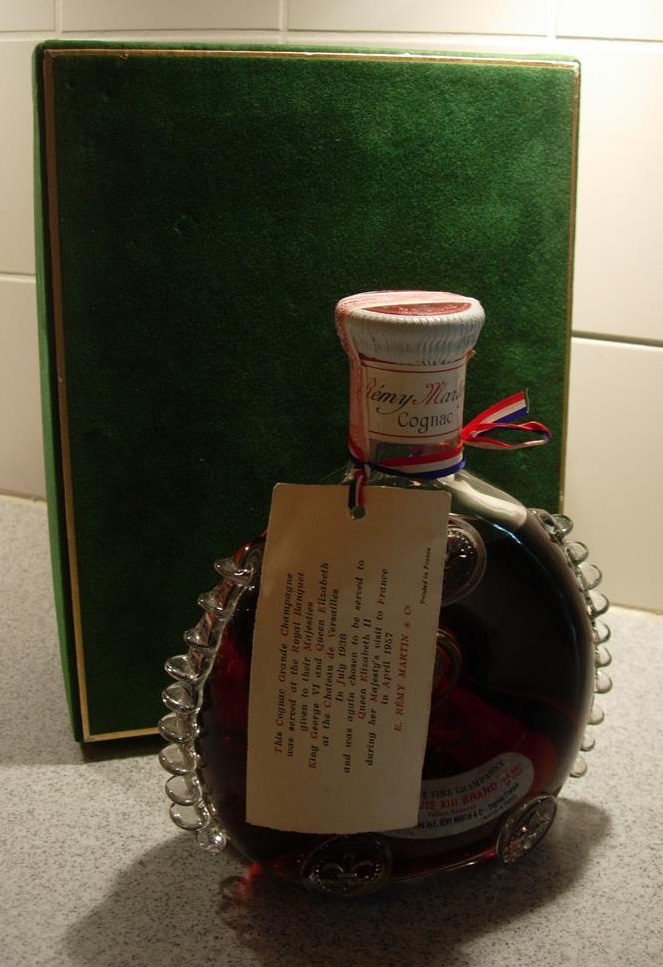 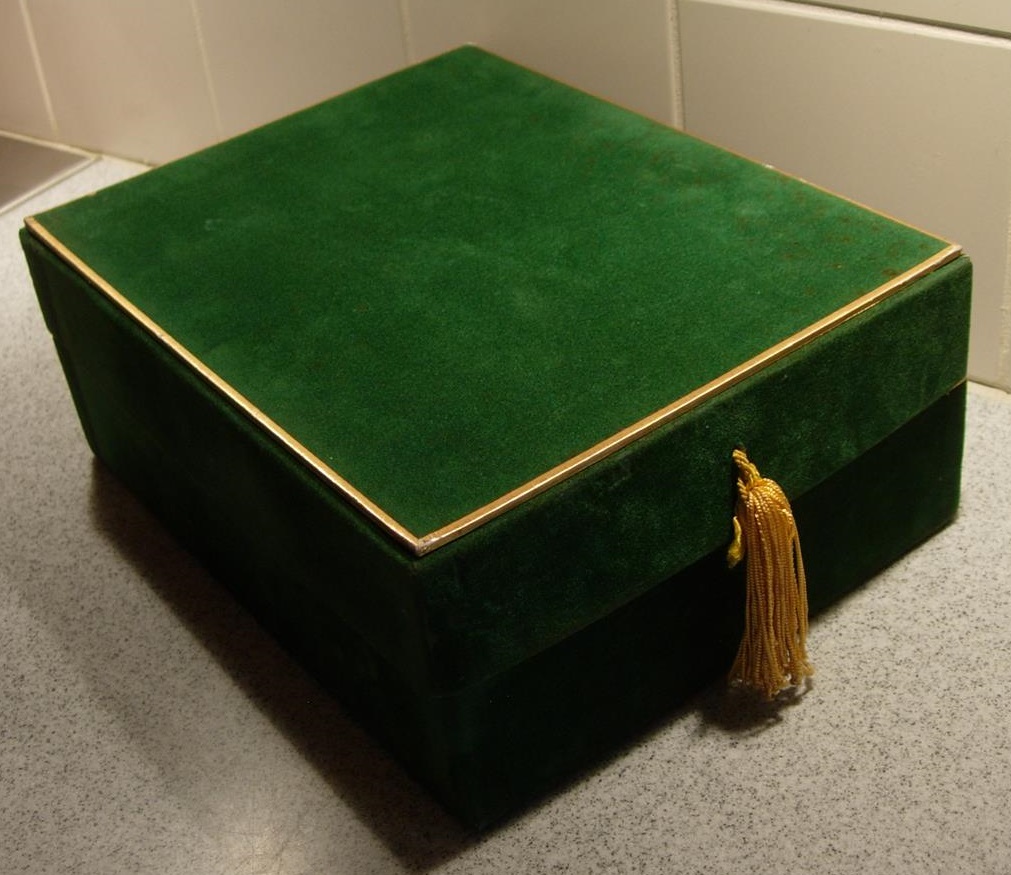 |
This is the famous "Mirror Case" featured in the 1953 advertisement poster. This version is from 1957 or 1958 because it came with the 1957 Banquet Card and the folded drawing explaining the origin of the bottle (Made in 1957 by Bernard Daydé). The case is similar to the 1946-1950 cases but the bottle has a Baccarat logo making it much newer. |
| 1959 TO 1961 USA |
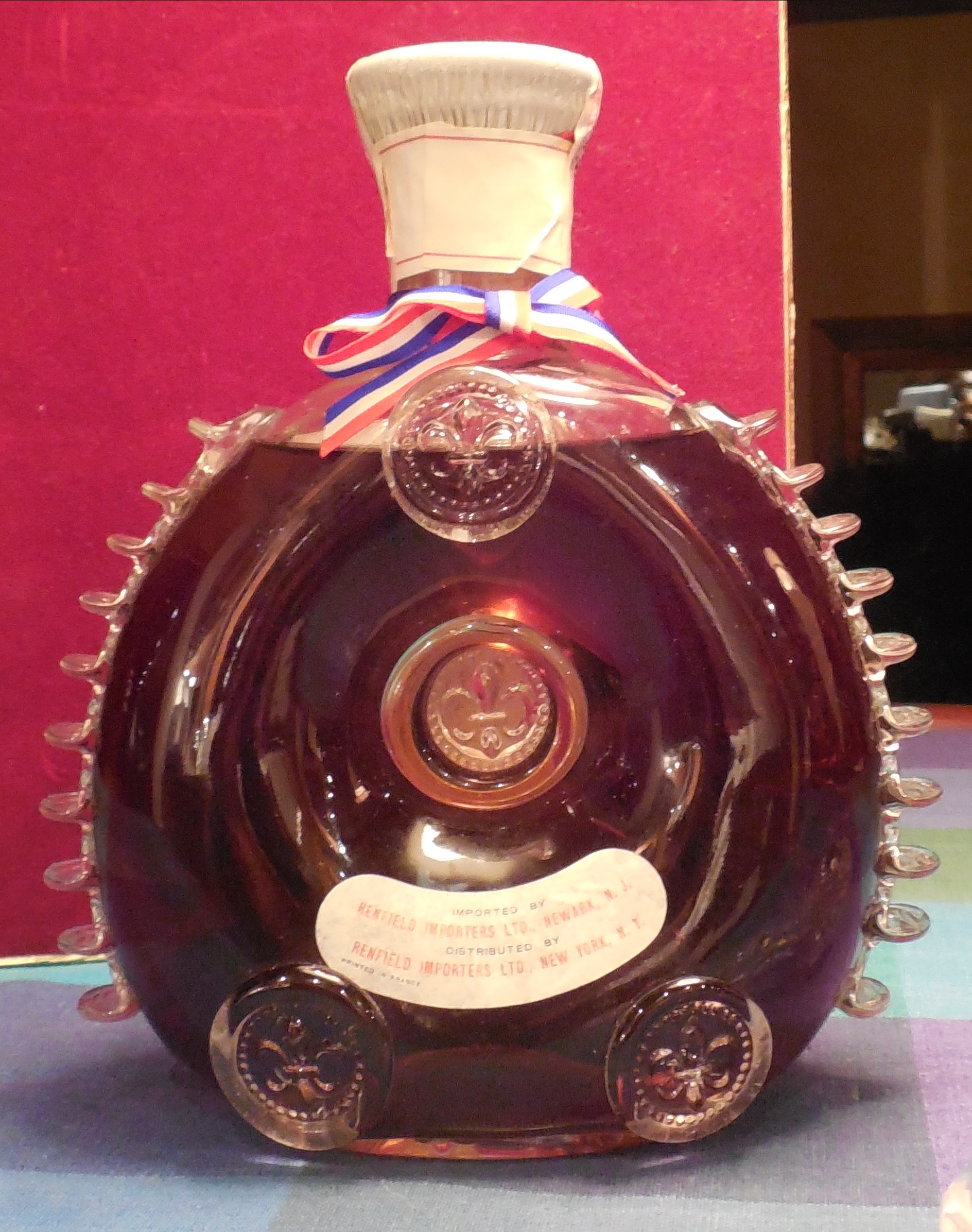 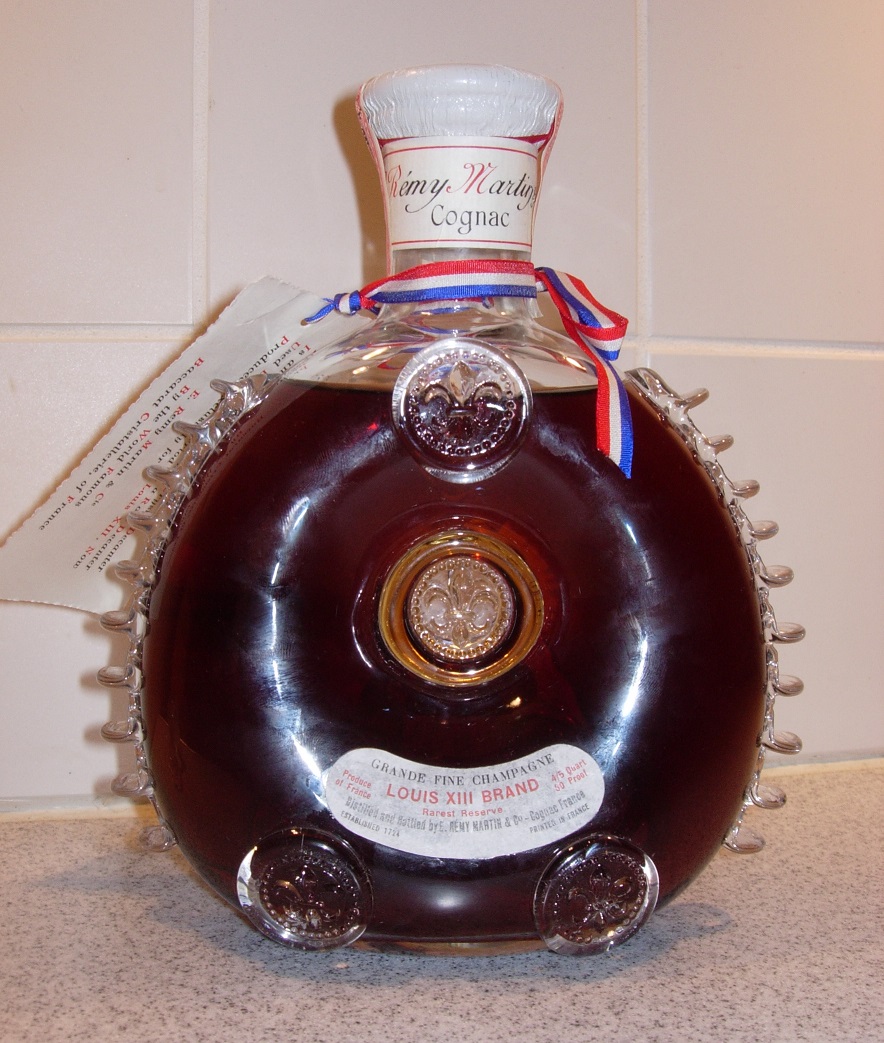 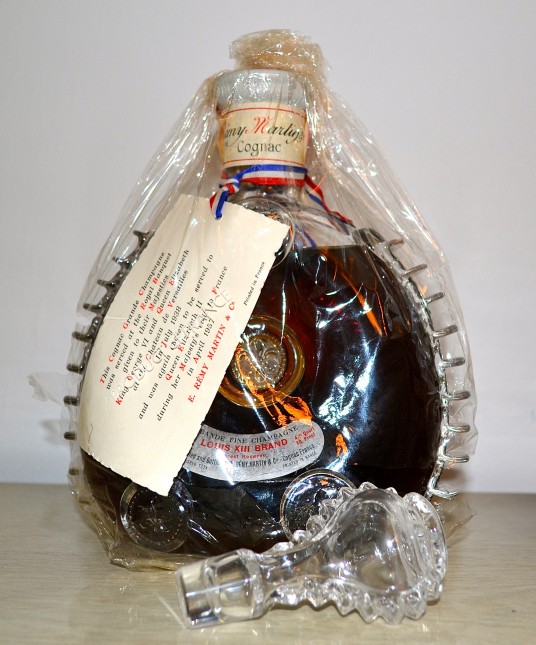 |
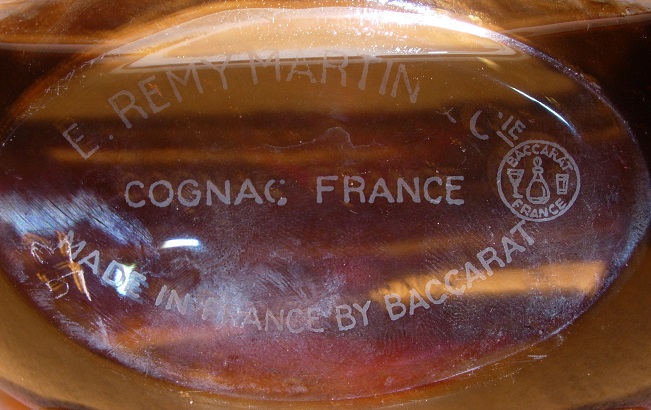 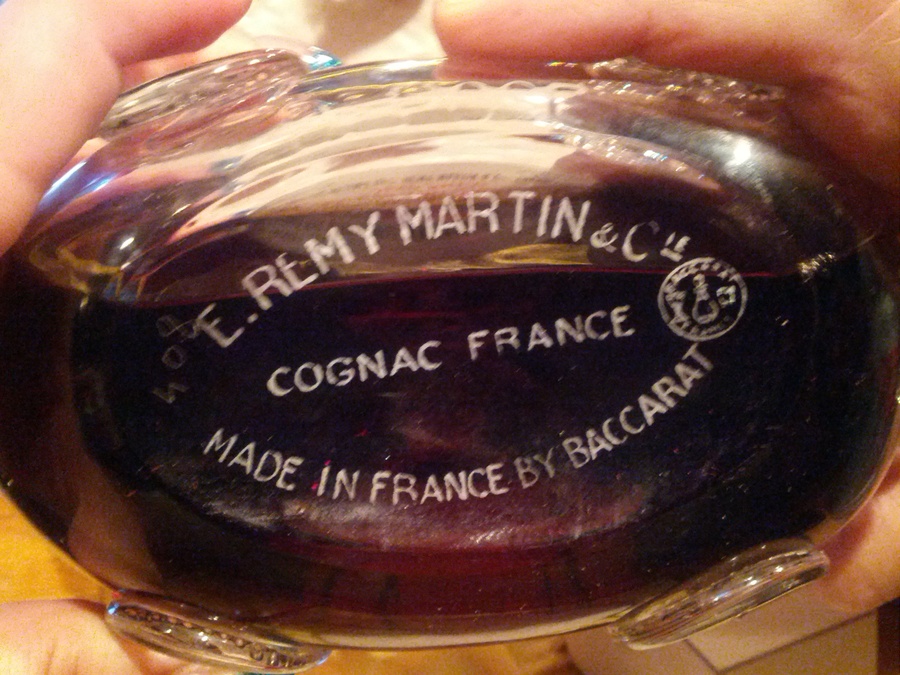 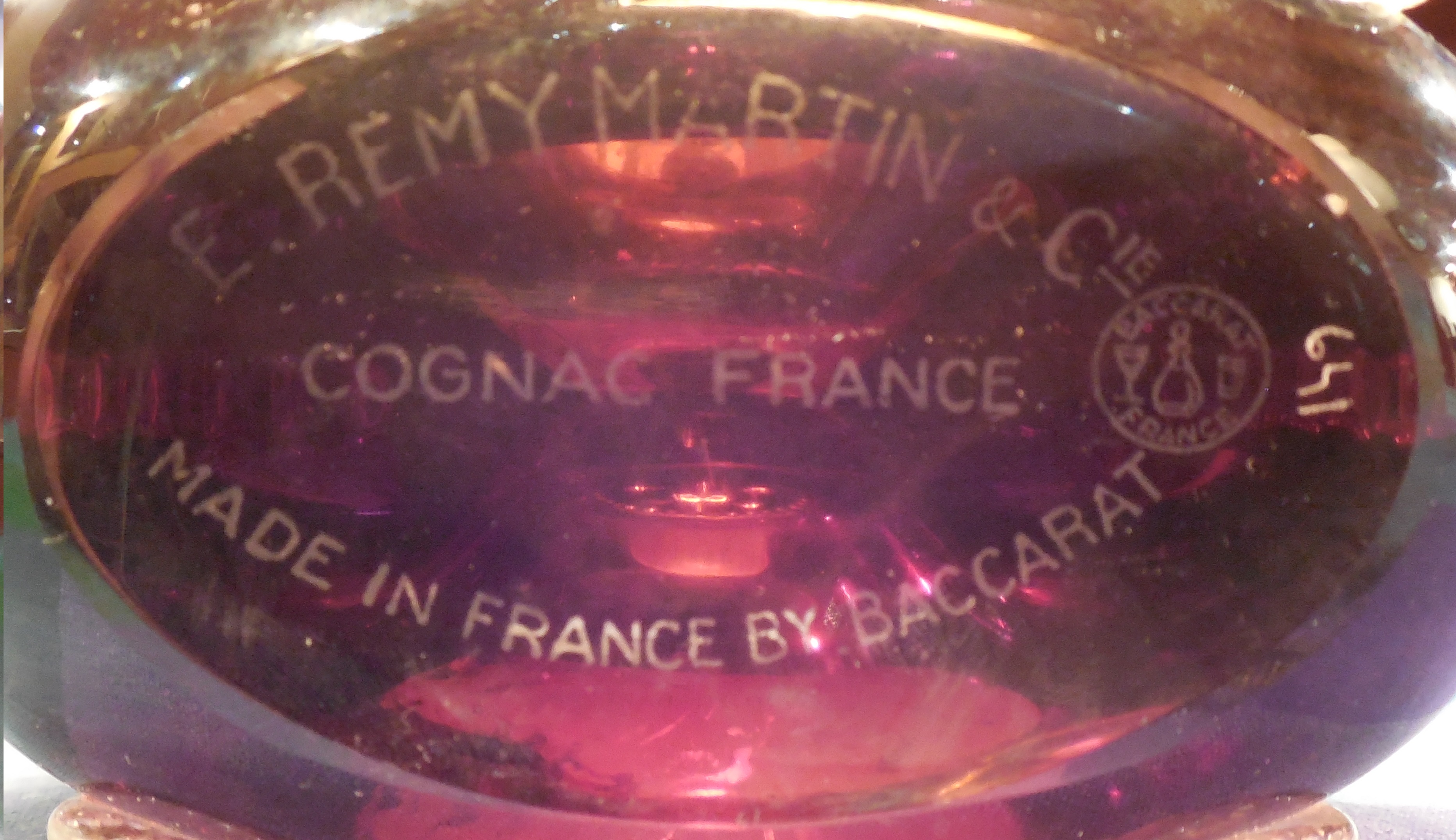 Made in France by Baccarat with Logo and number (93, 408 & 641) |
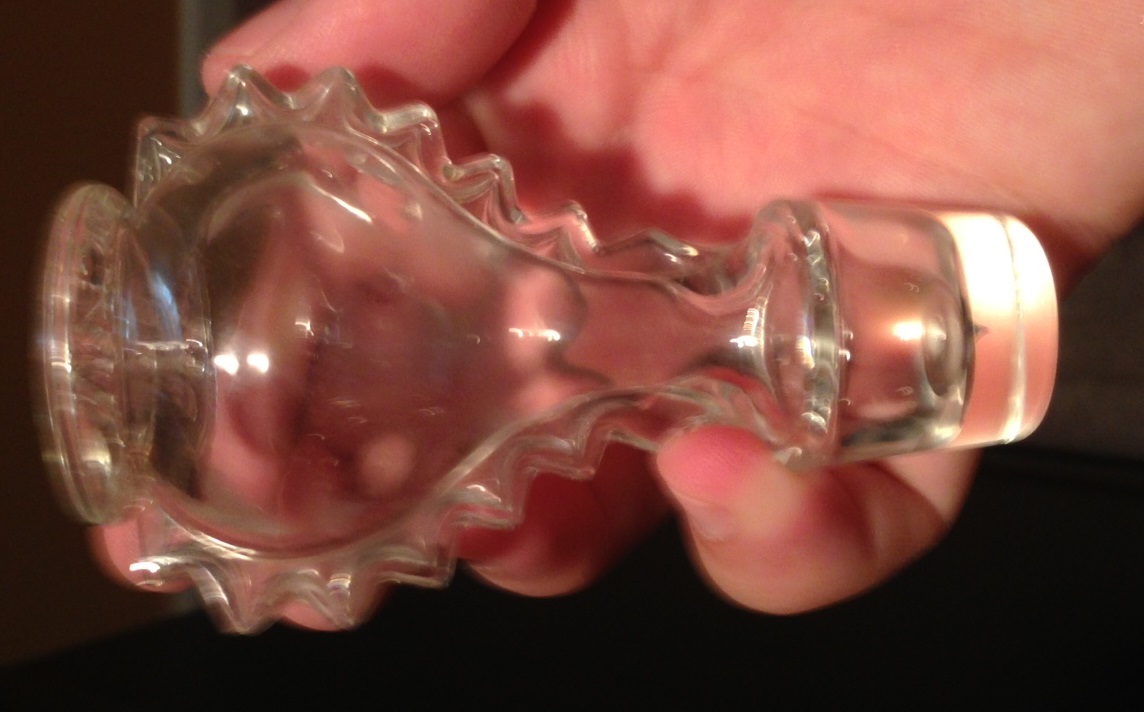 |
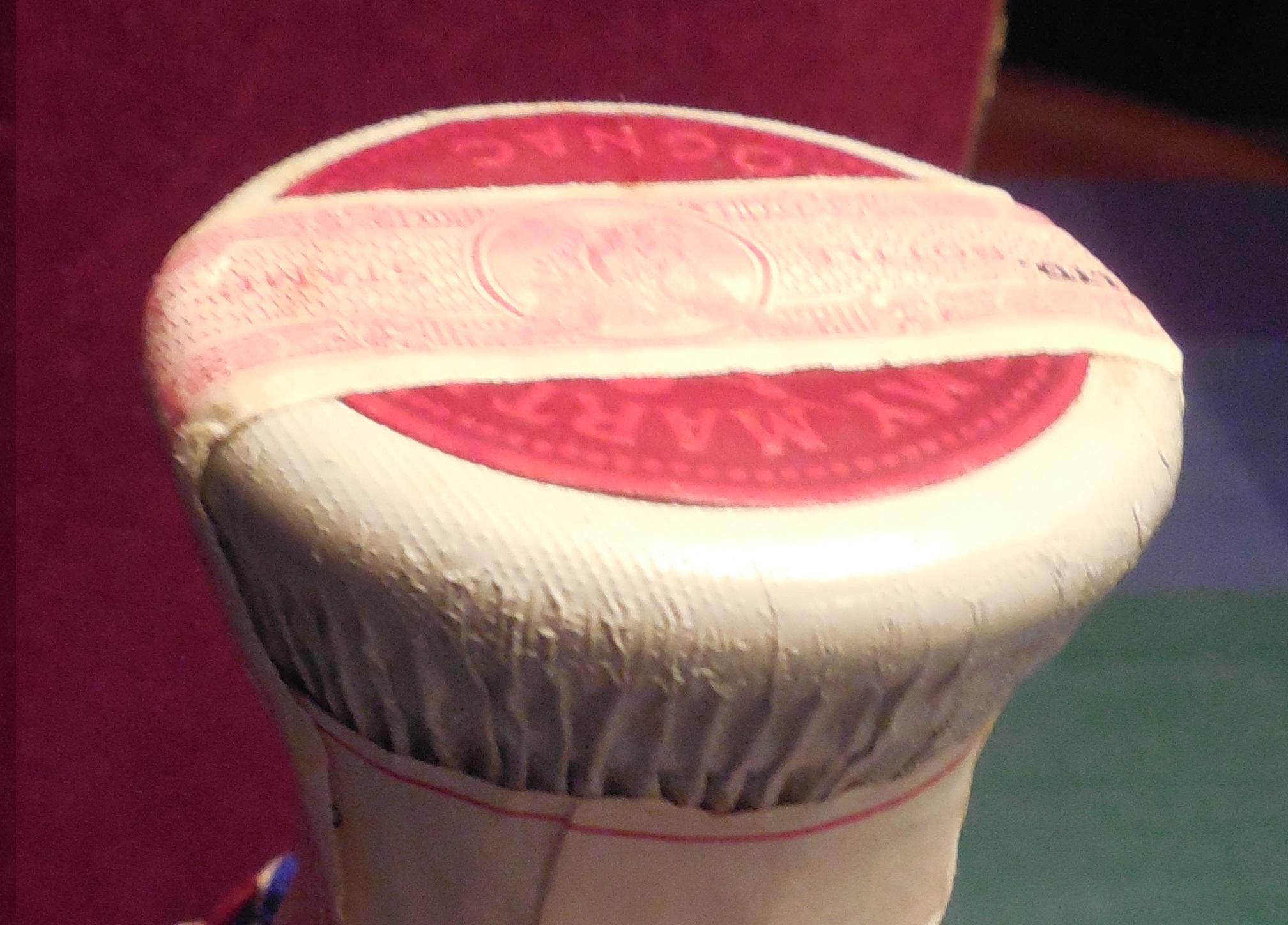 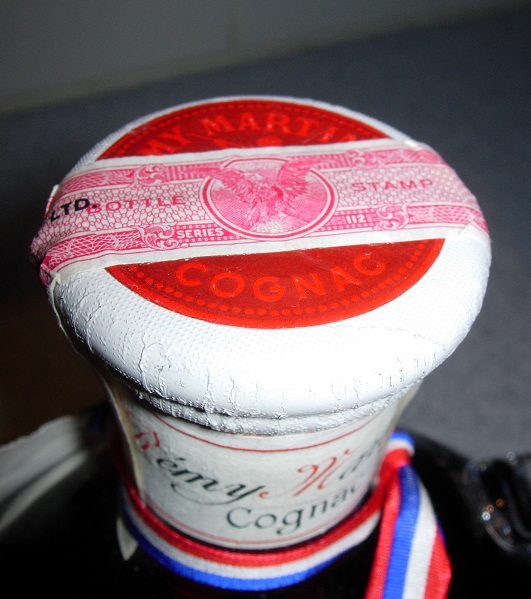 |
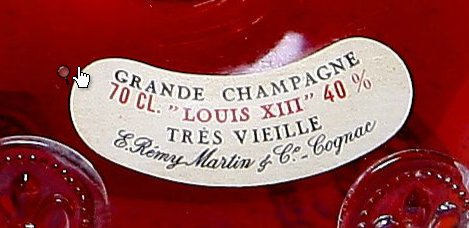 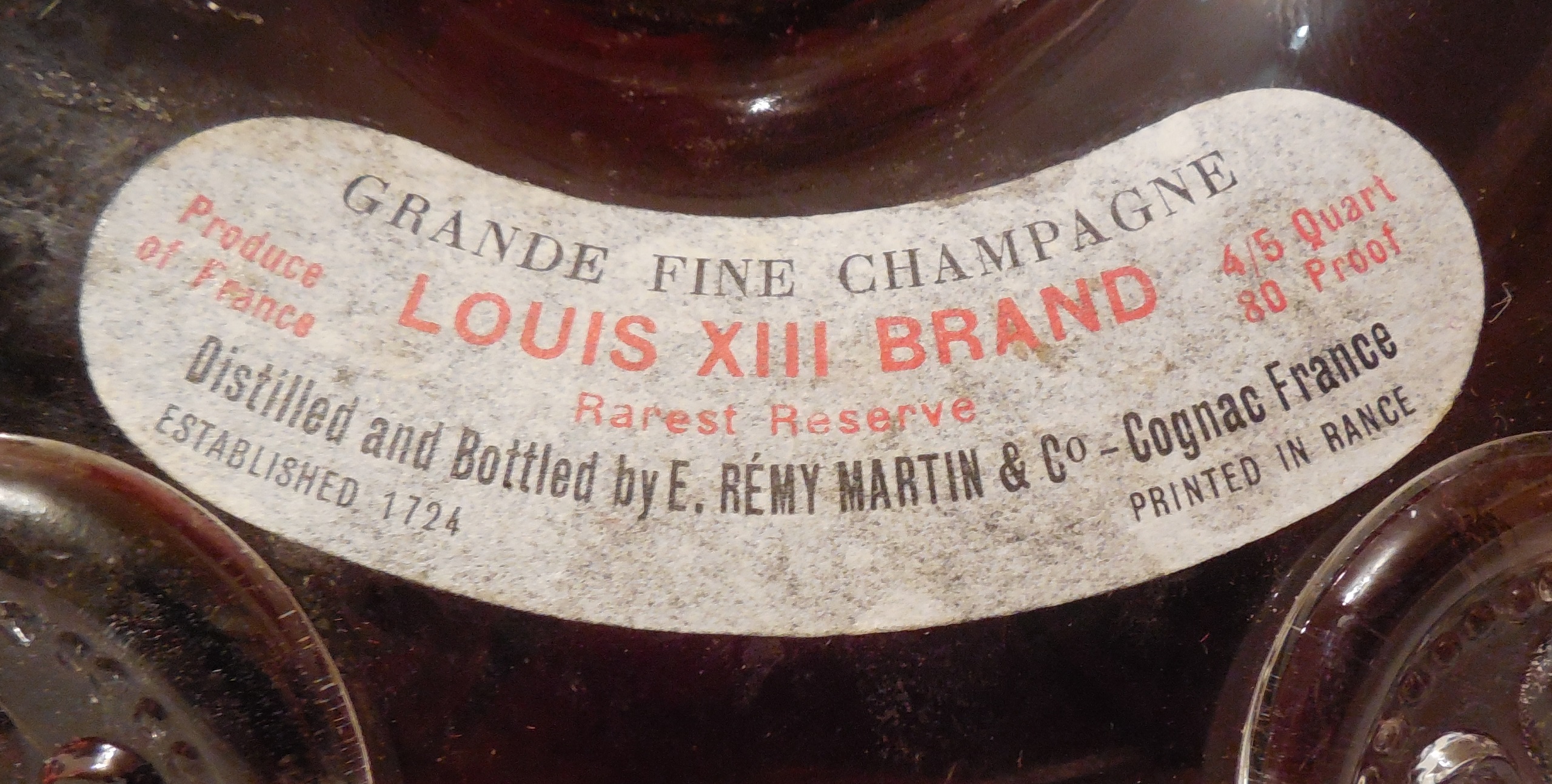 Bean-shaped "Louis XIII Brand" or "Tres Vieille" Label. |
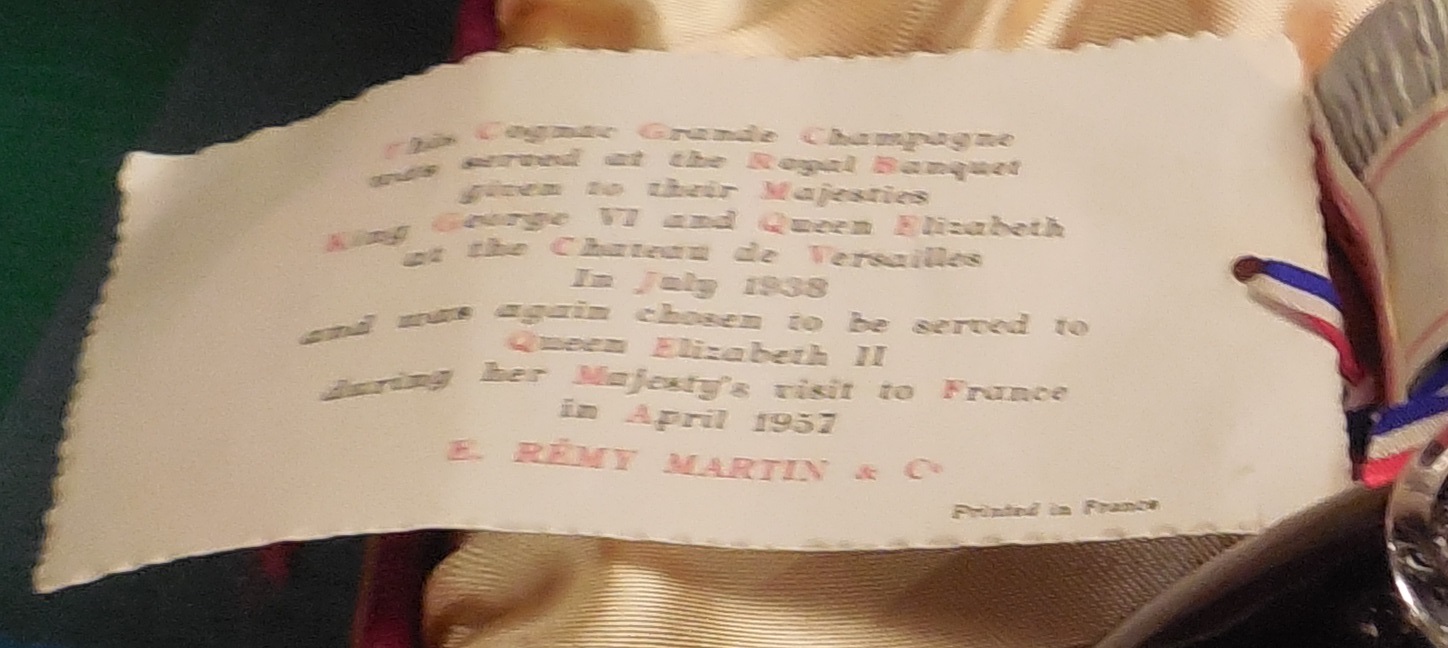 1938 & 1957 Royal Banquet Card |
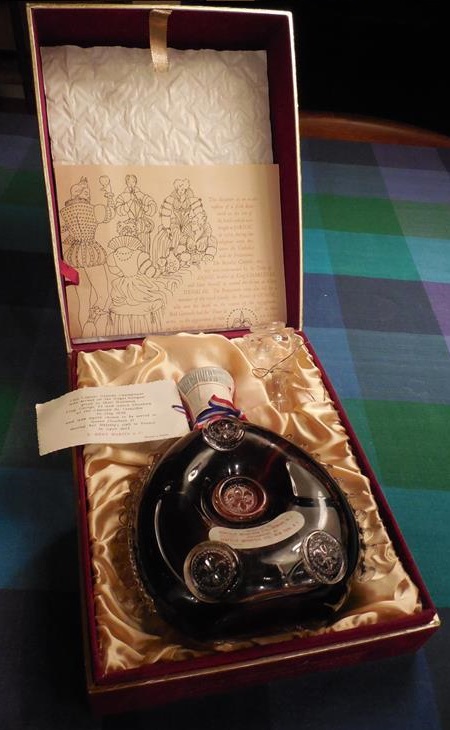 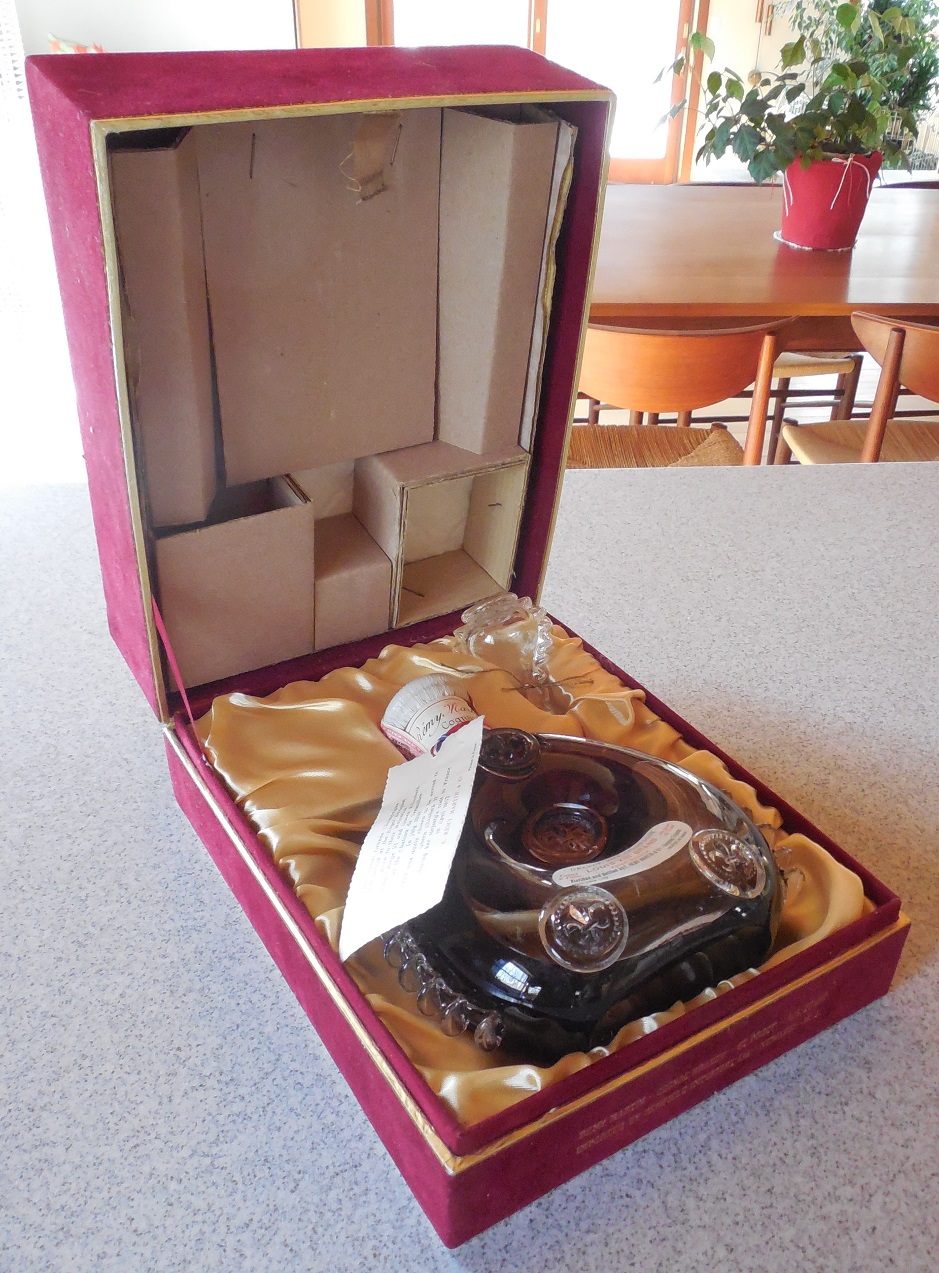 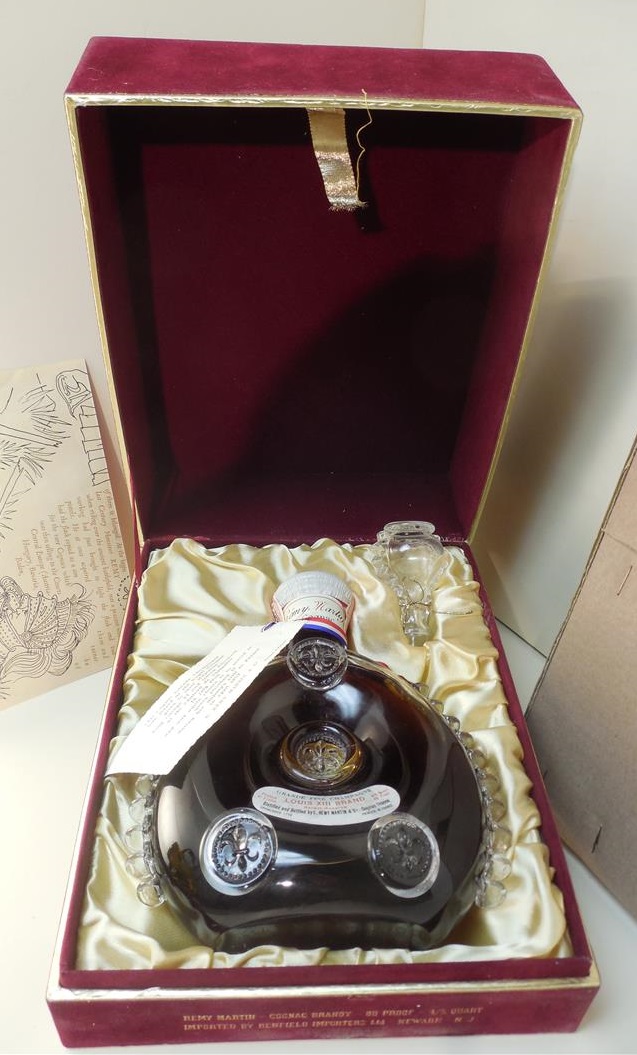 |
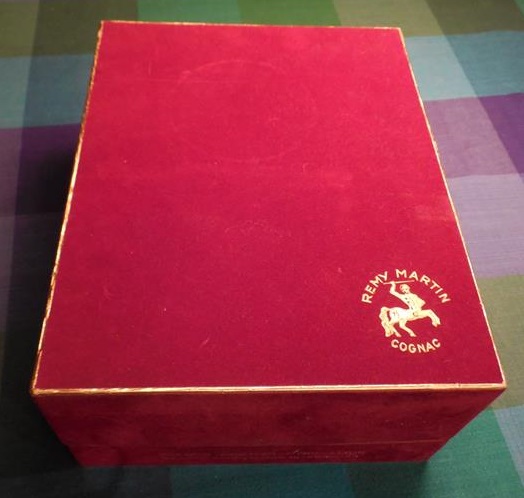 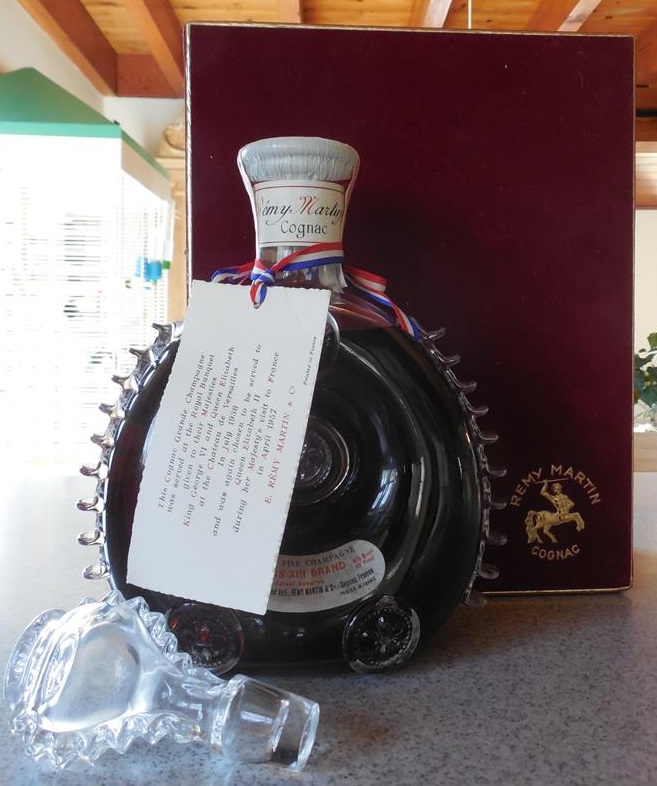 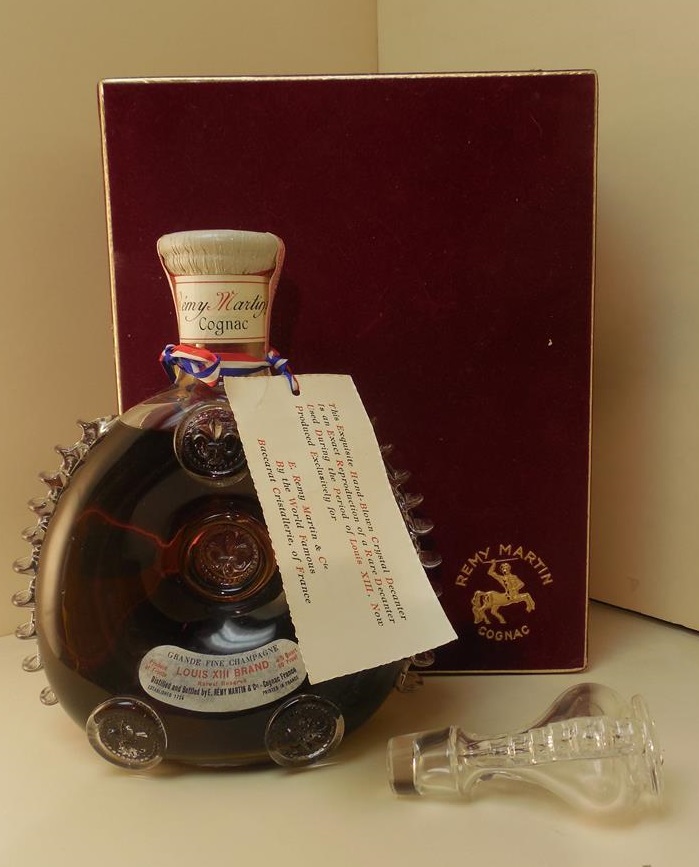 |
"Velvet-covered" red cardboard with silk liner - Gold Centaur on Lid. First verified inclusion of a two-sided page with drawings explaining the origin of the decanter. Drawing dated 1957 by the artist. |
| 1962 EUROPE |
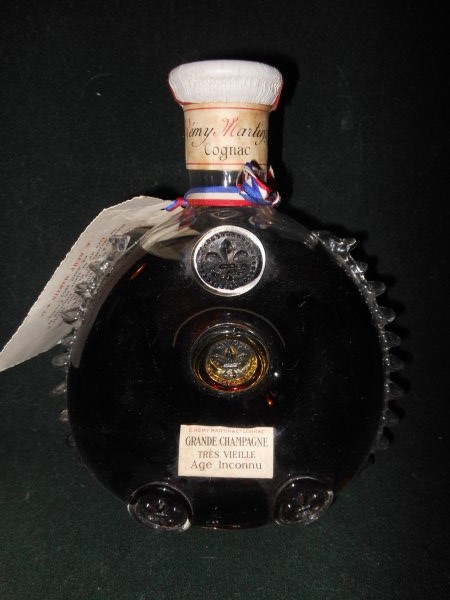 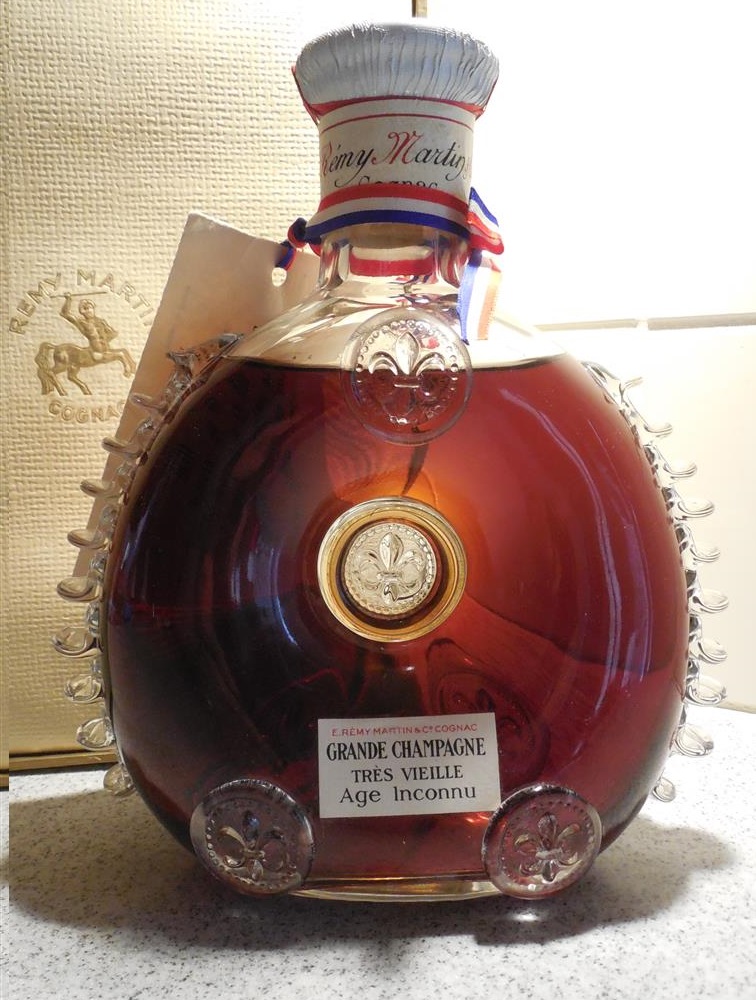 |
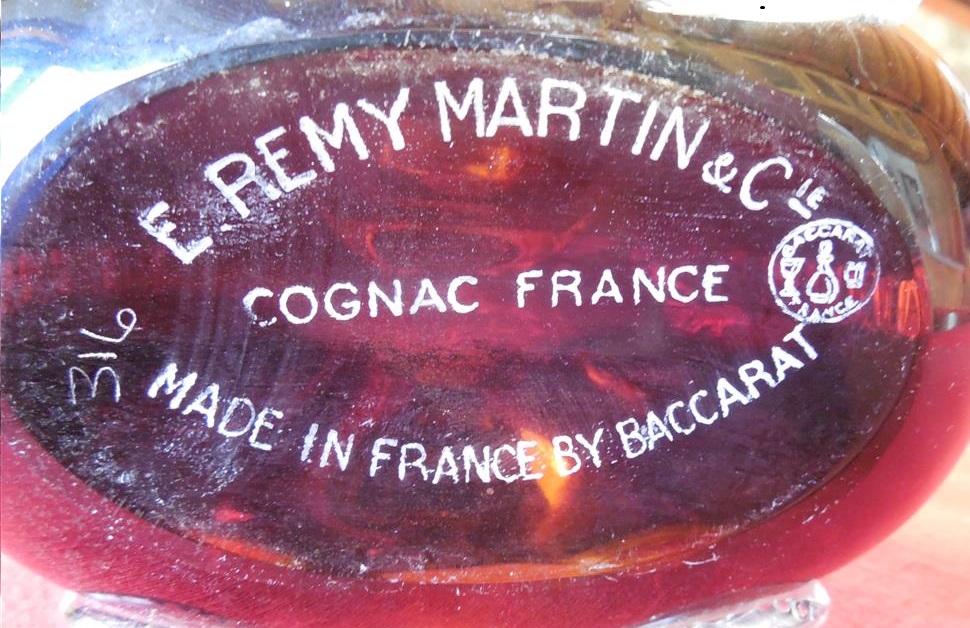 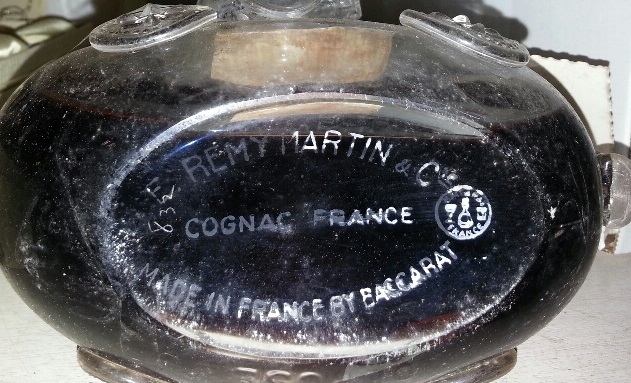 Made in France by Baccarat. With Logo & numbered (316 & 832) |
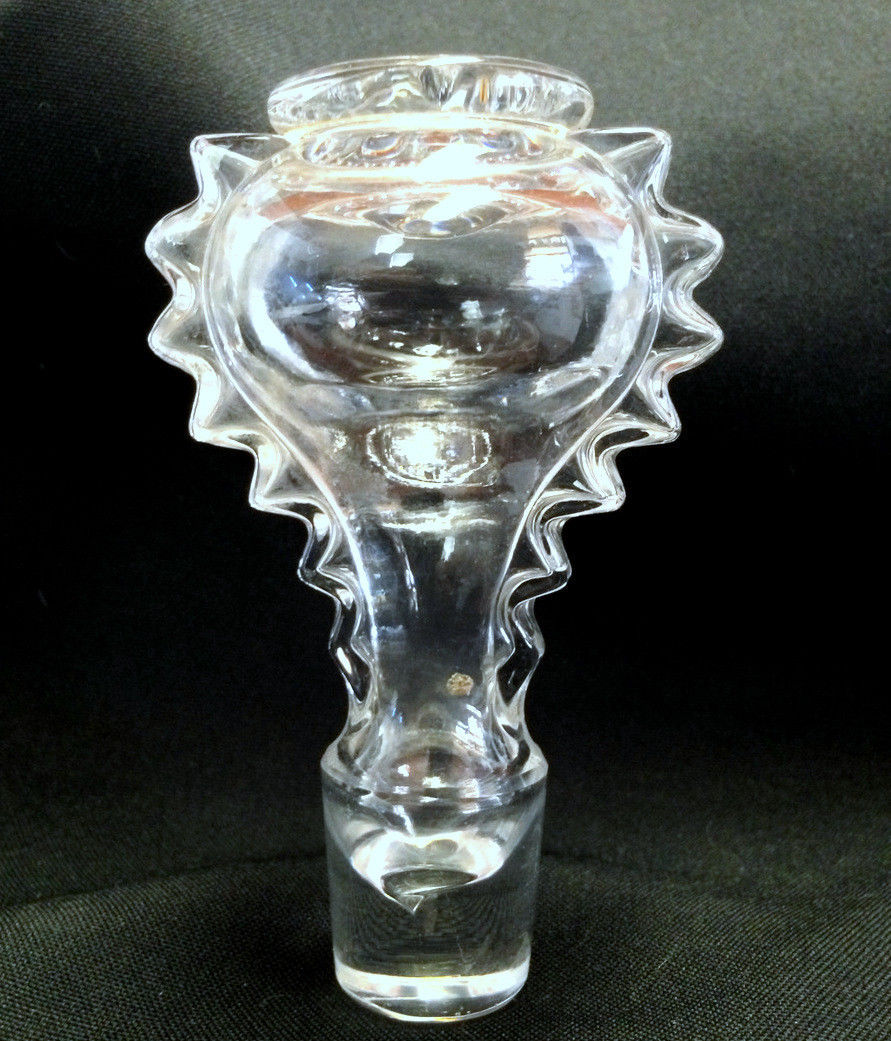 Stopper engraved with same number as decanter |
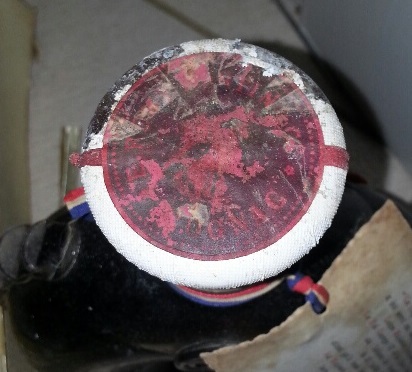 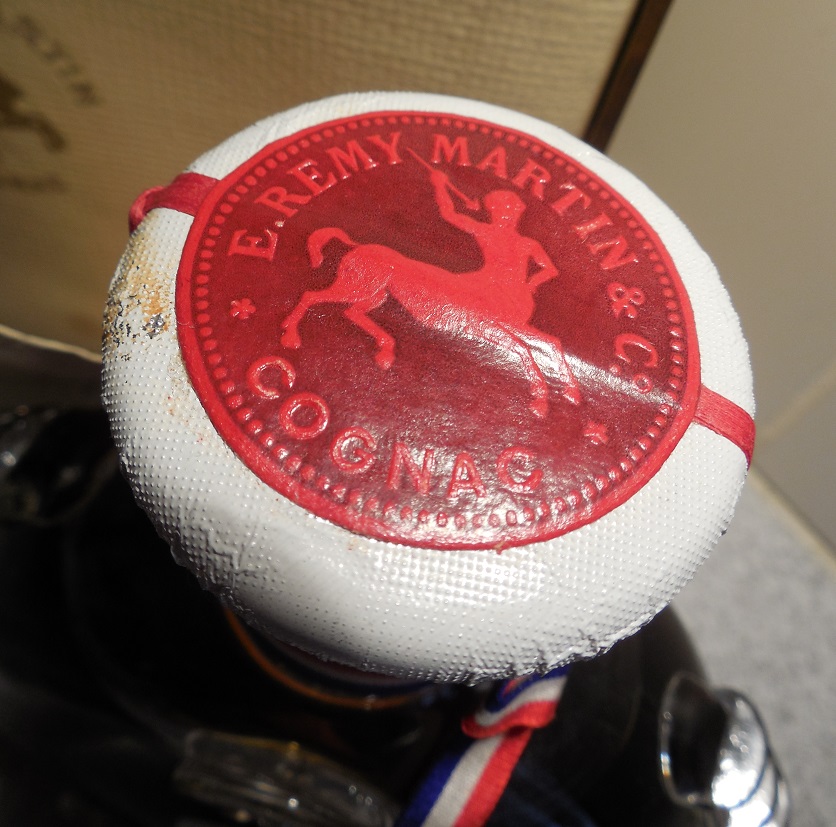 Damaged Remy Martin Logo on capsule appears to be New Logo - Bottle No. 316 has old logo - During transition year a mix of logos were used. |
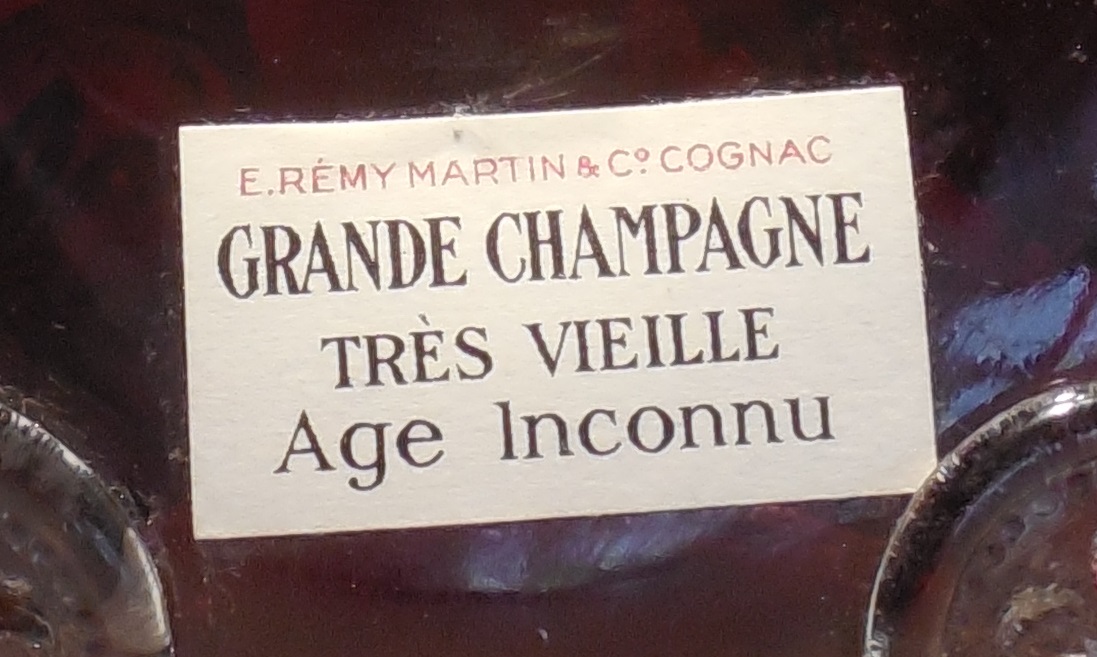 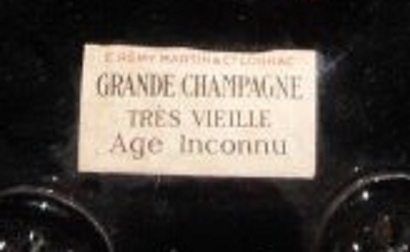 Last bottles with the "Age Inconnu" Label. The following year all bottles were sold under the Louis XIII name in Europe, Asia and USA. |
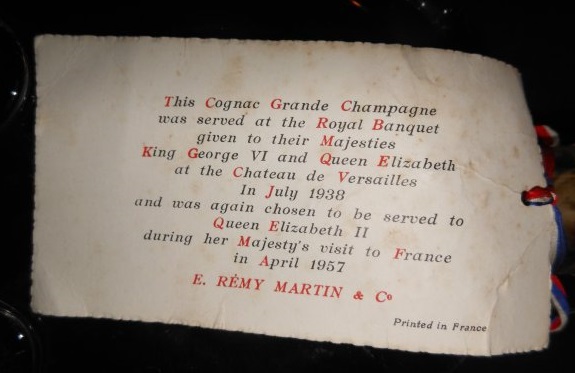 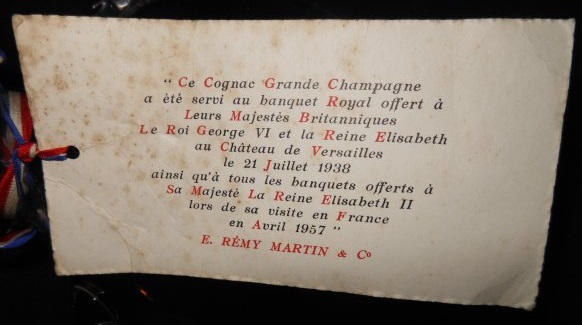 1938 & 1957 Royal Banquet Card - Bilingual version |
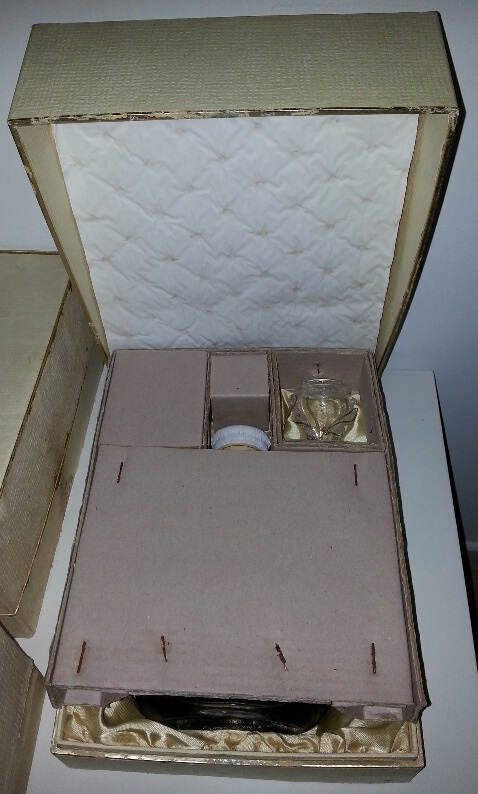 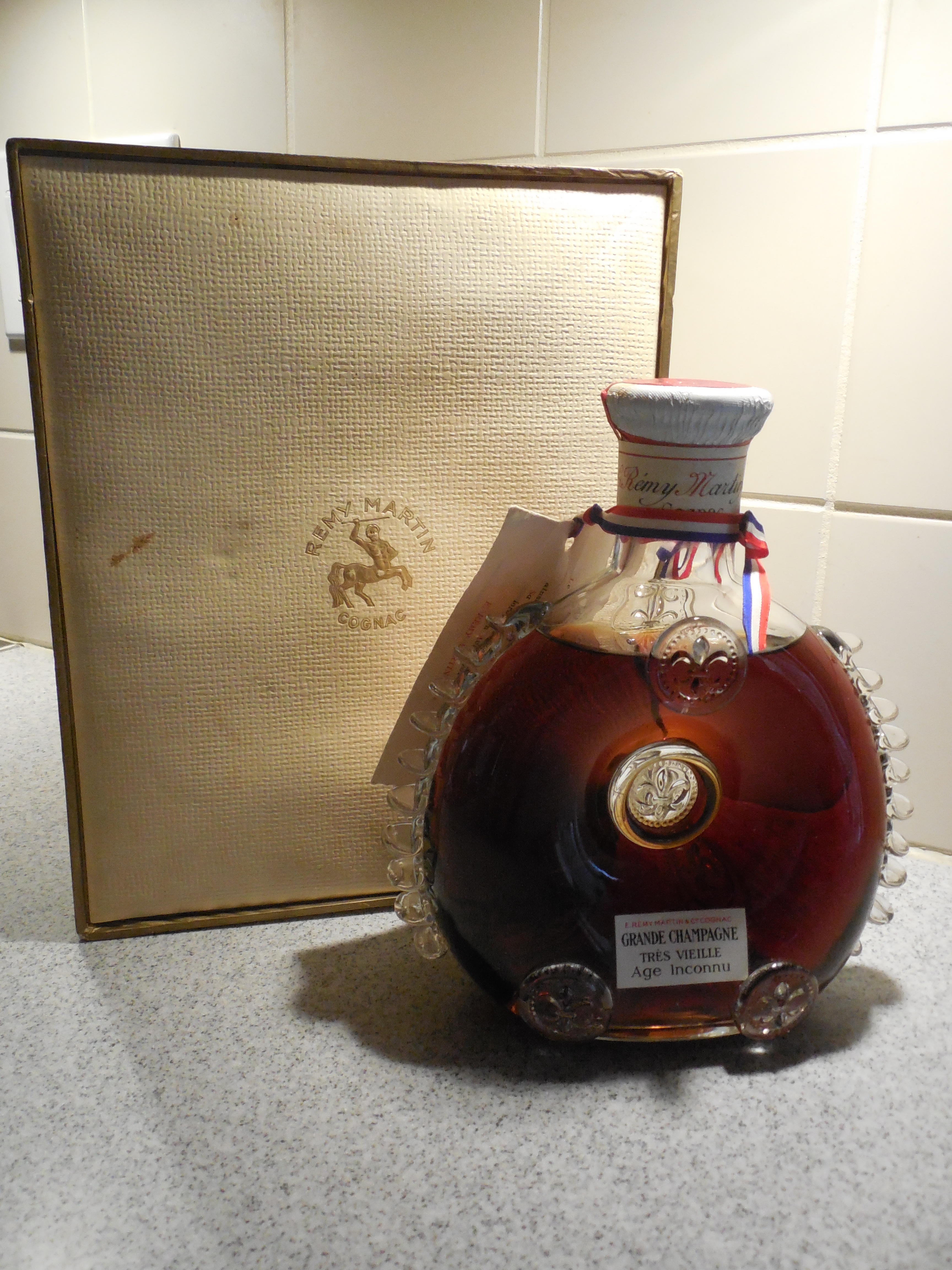 |
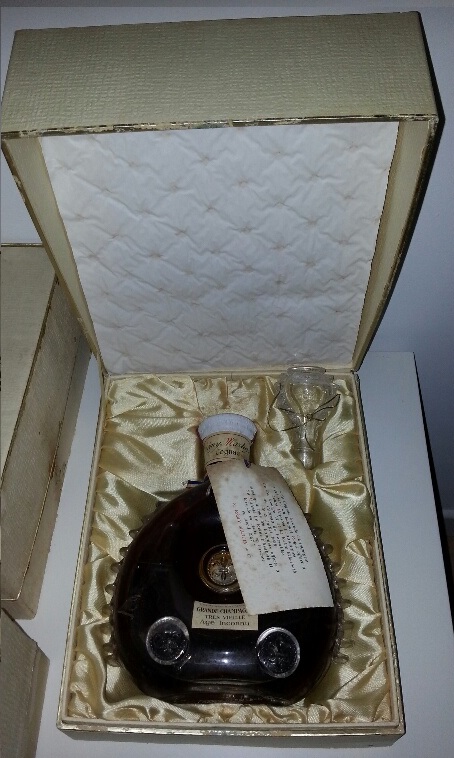 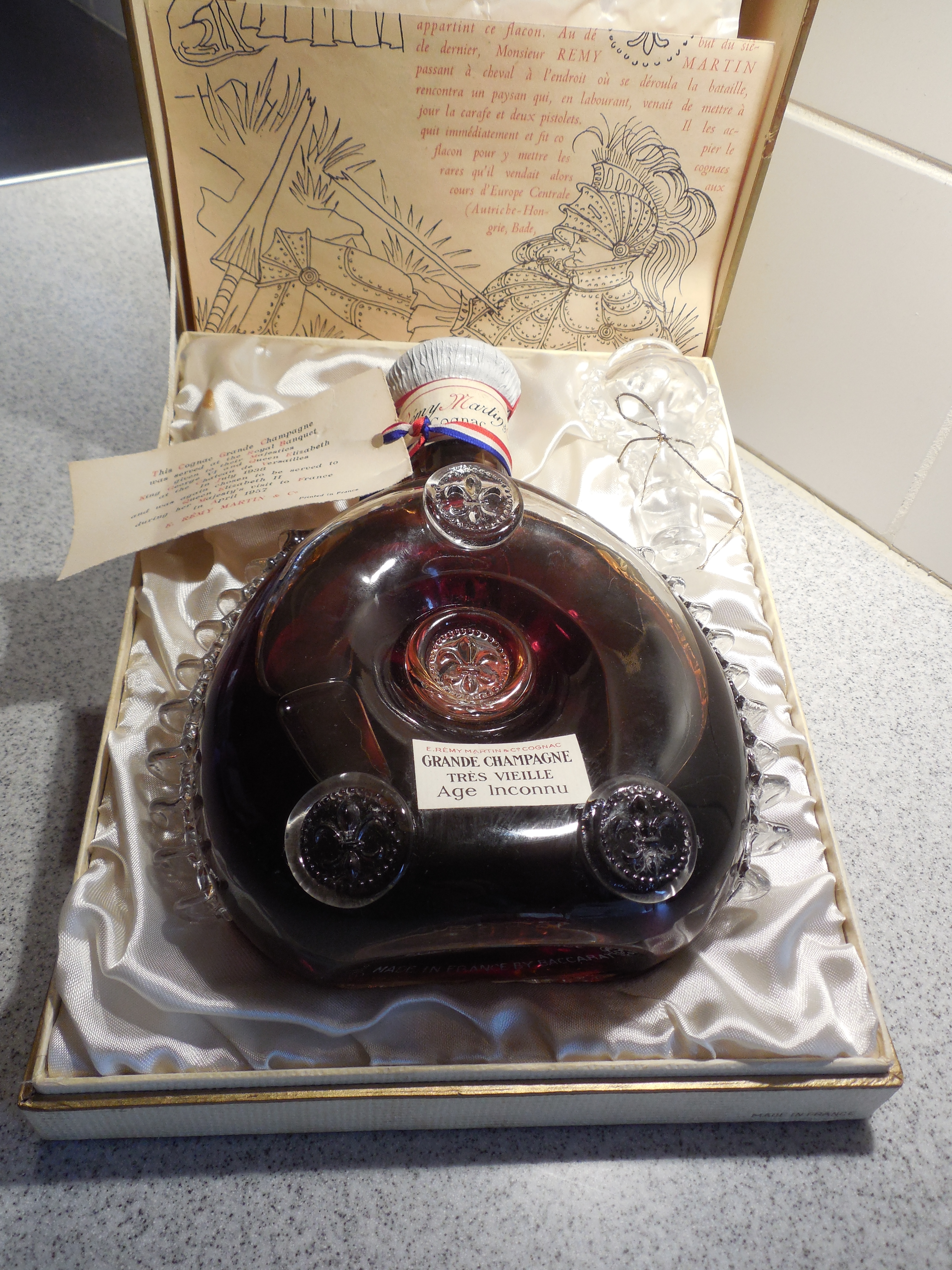 |
Multiple sets from 1962 (Before transition to New Centaur Logo) proves without a doubt that the "Age Inconnu" name was used by Remy Martin in Europe until at least 1962. These are among the few "Age Inconnu" I have seen in anything but a rattan basket. There is no doubt about authenticity as two identical sets were found together. Bottles still wrapped in cellophane. These bottles are numbered. |
| 1962 TO 1963 |
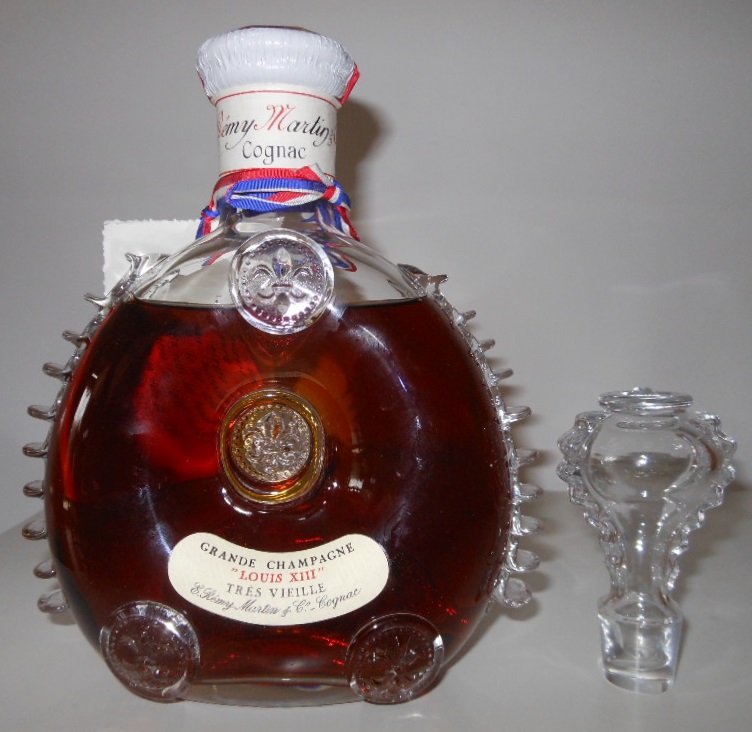 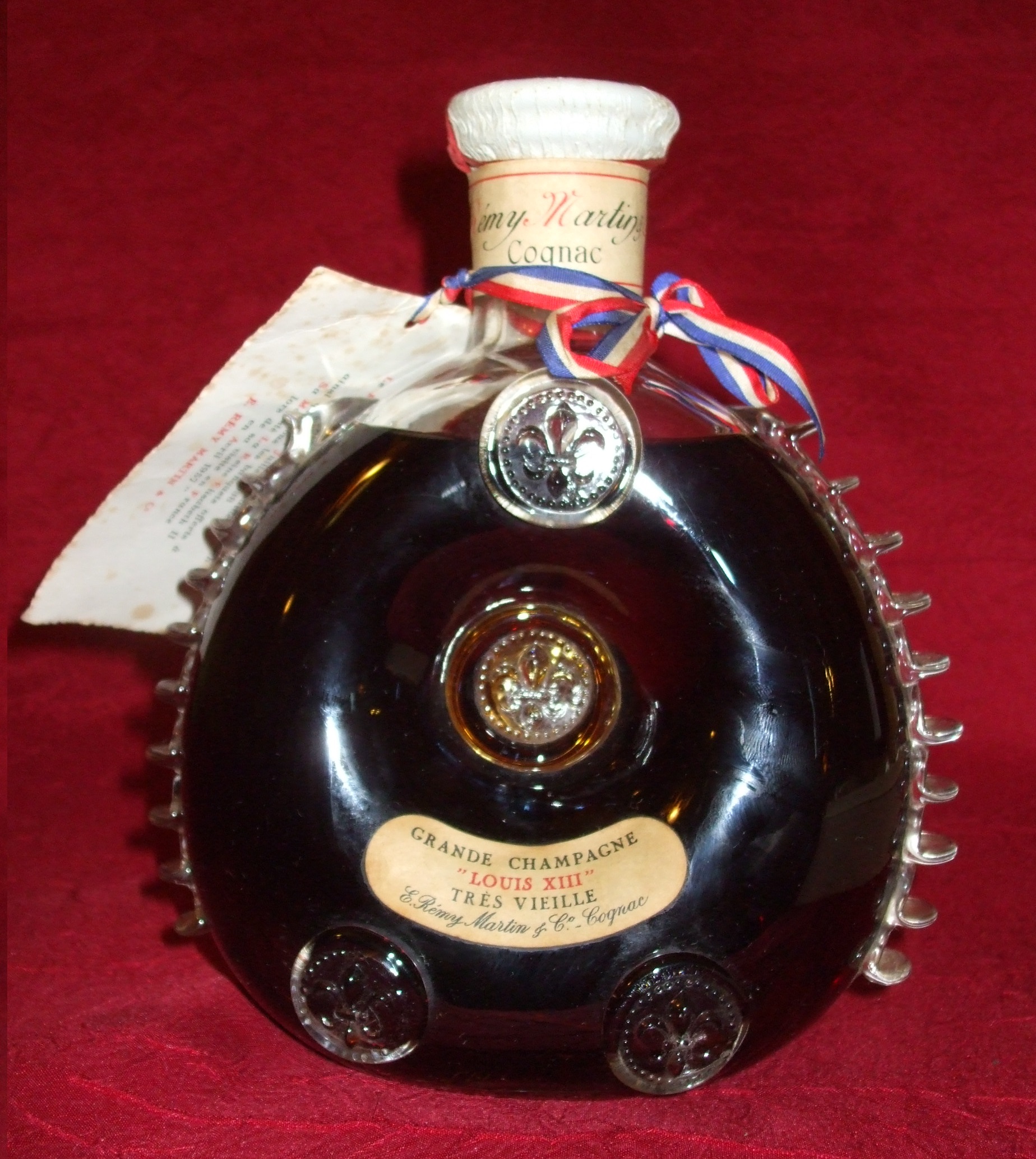 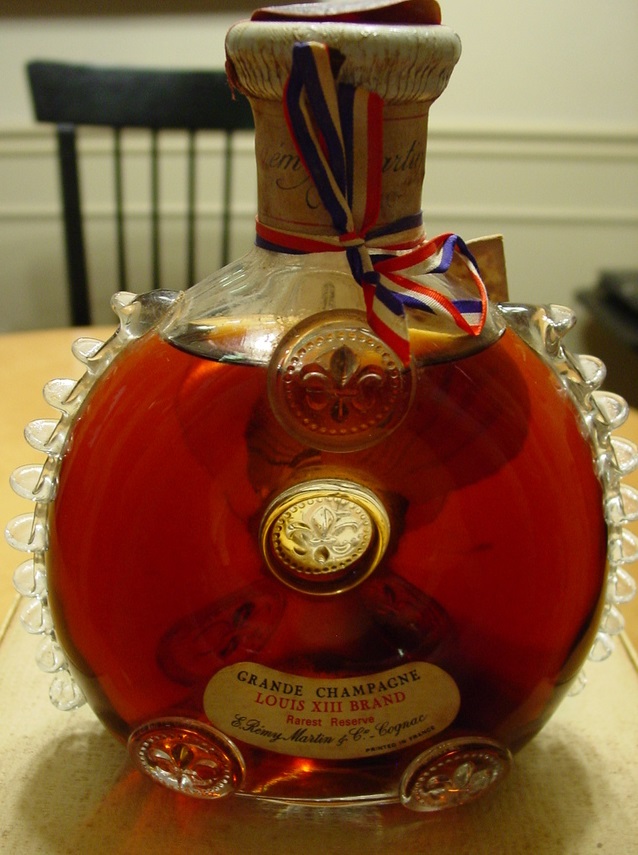 |
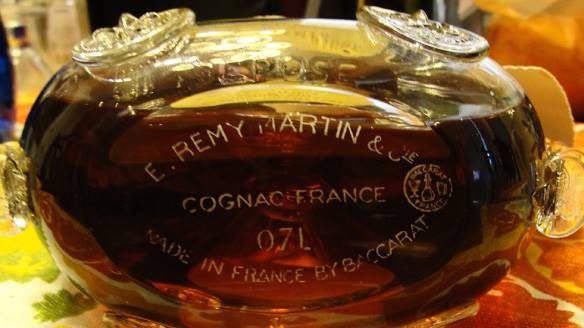 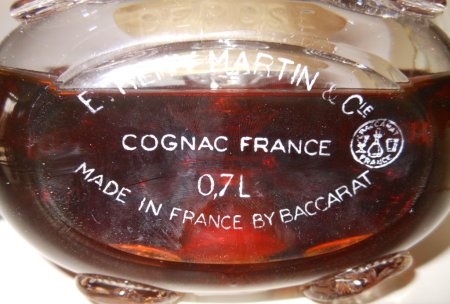 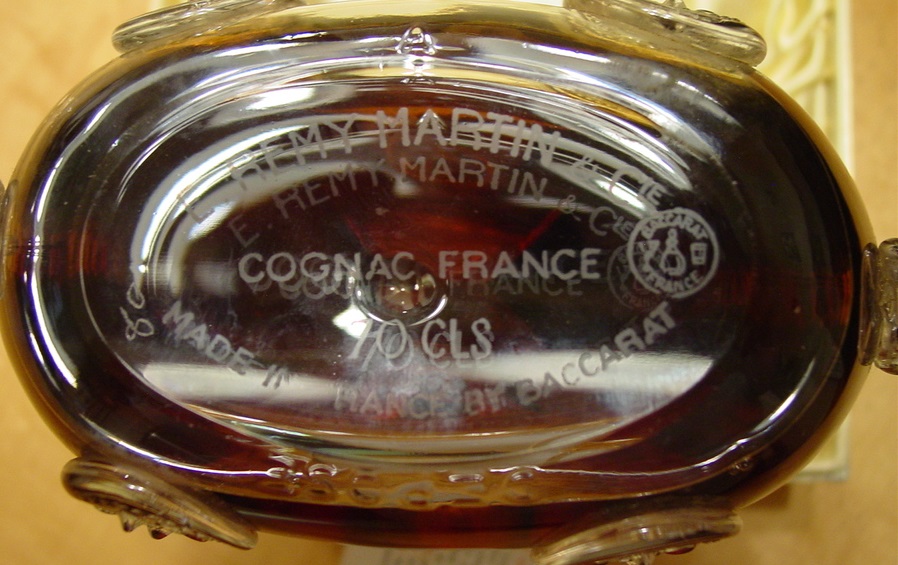 Made in France by Baccarat. With Logo. Some numbered (80) others not. Bottle volume 0,7L indicated for the first time on European bottles. |
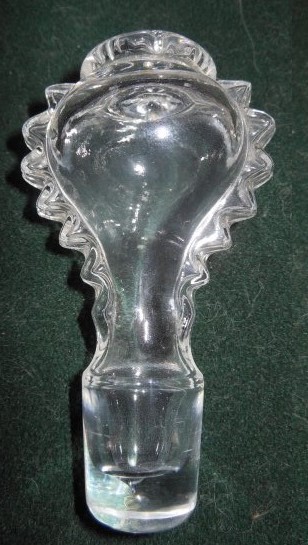 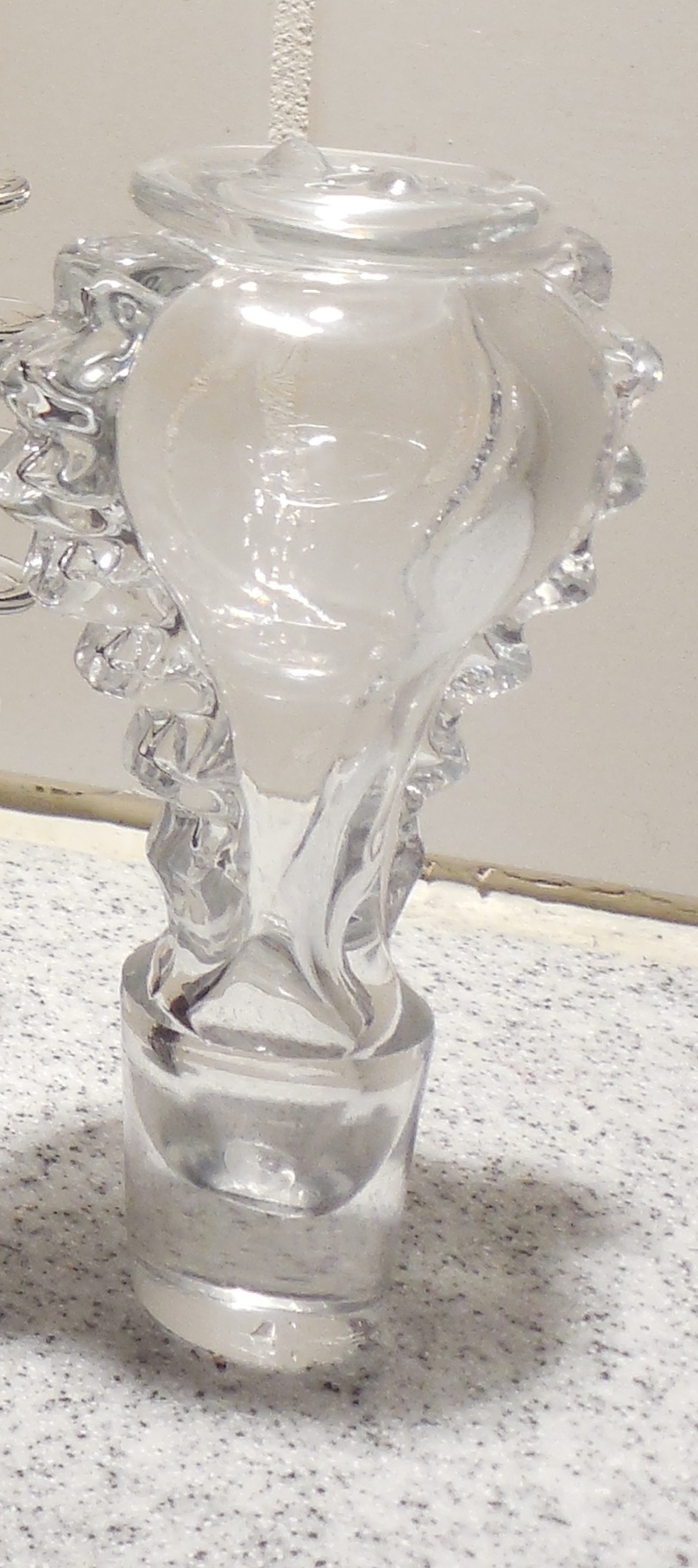 |
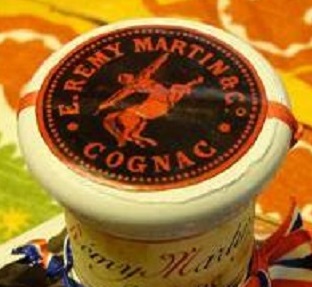 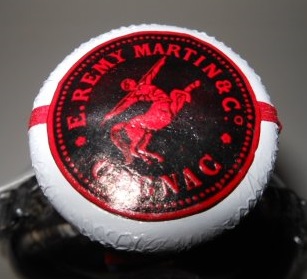 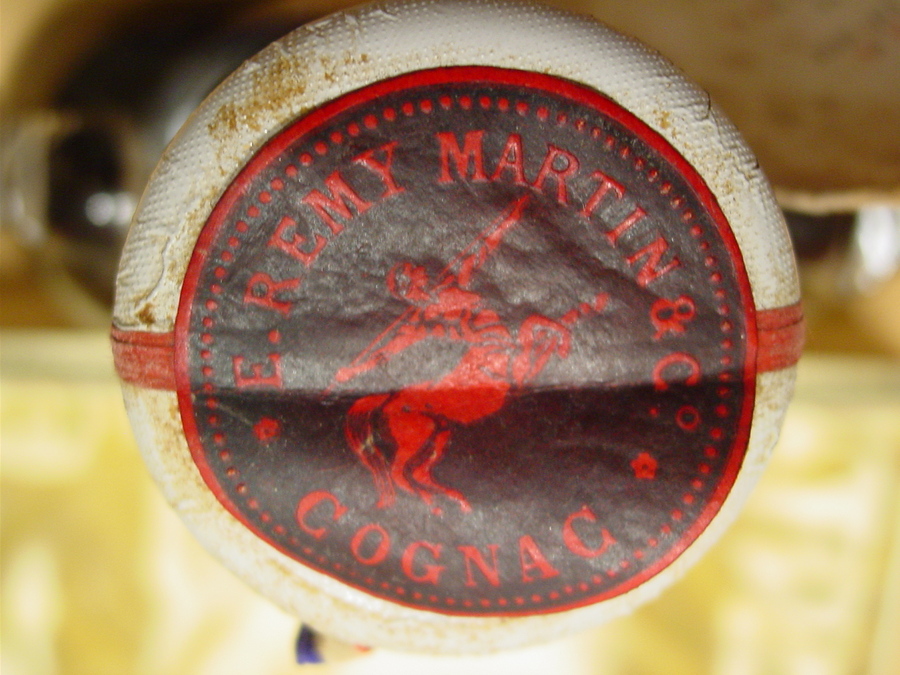 First use of Remy Martin new Logo - Centaur with spear pointing up at the "R" of Martin |
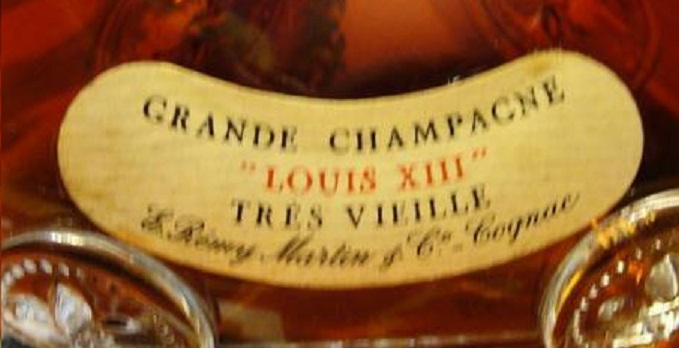 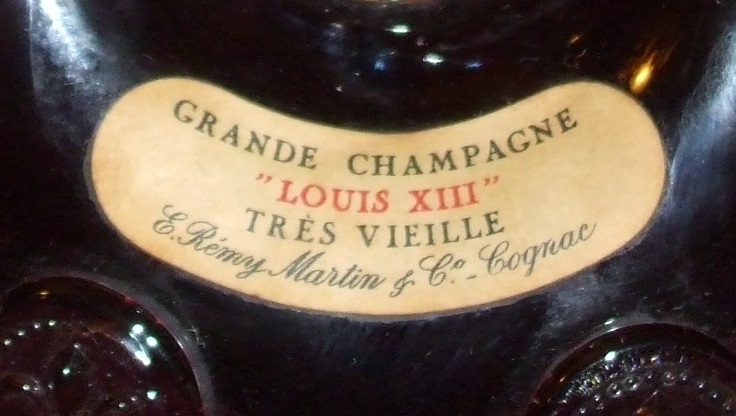 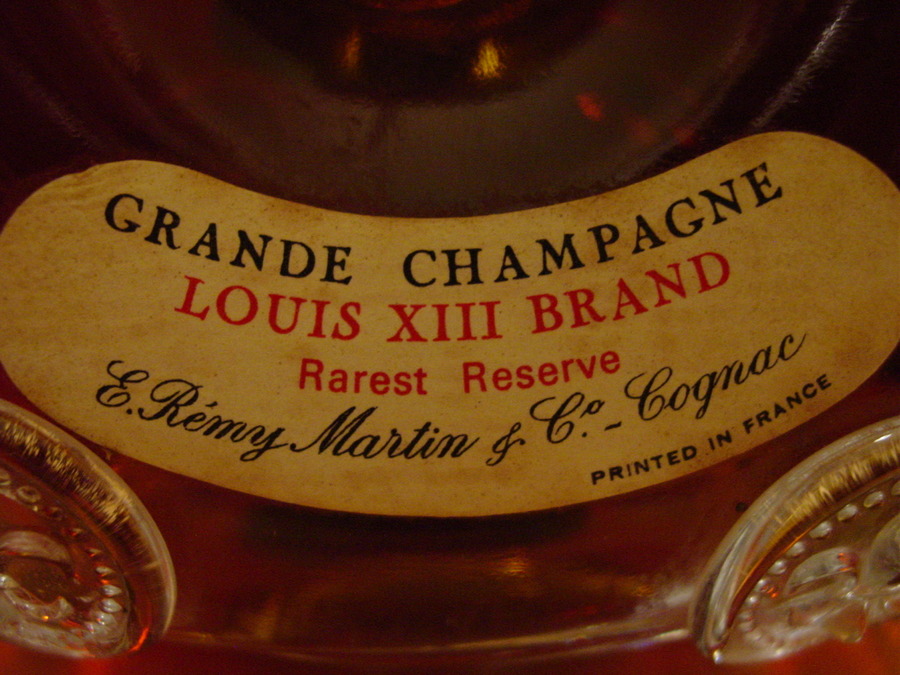 Bean-shaped "Tres Vieille" or "Rarest Reserve" Label. |
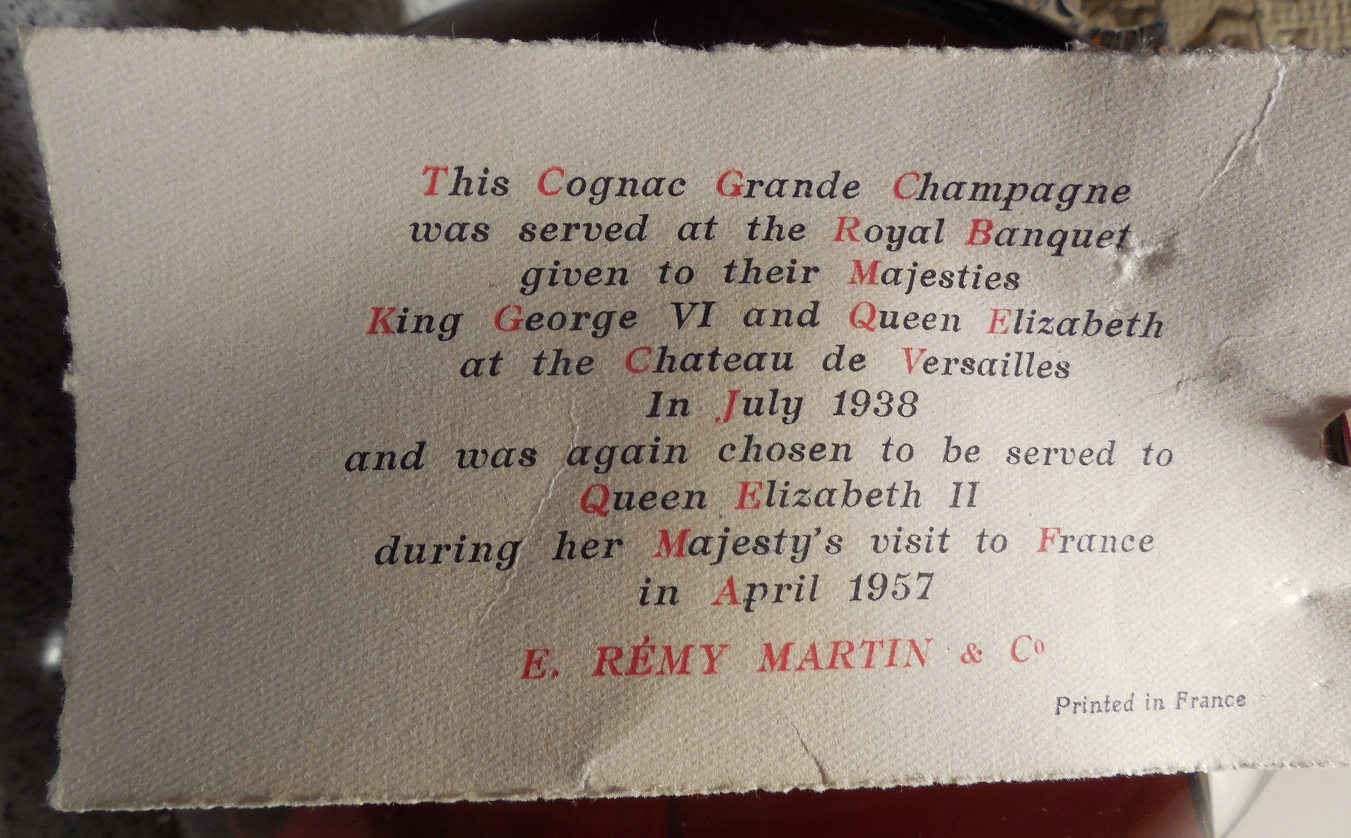 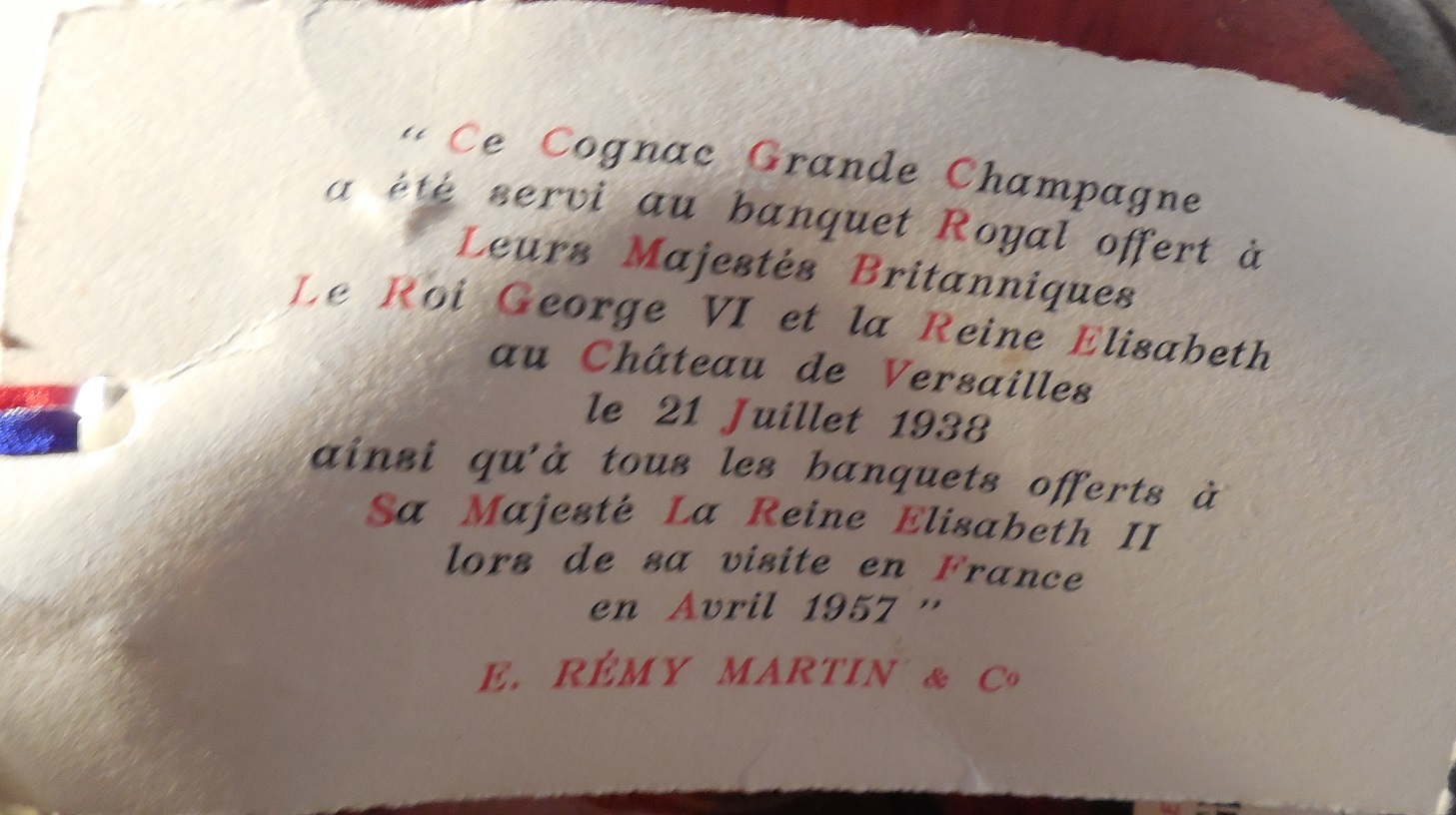 1938 & 1957 Royal Banquet Card - English/French version |
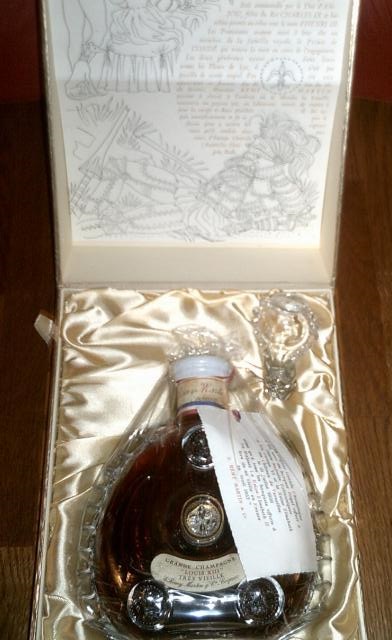 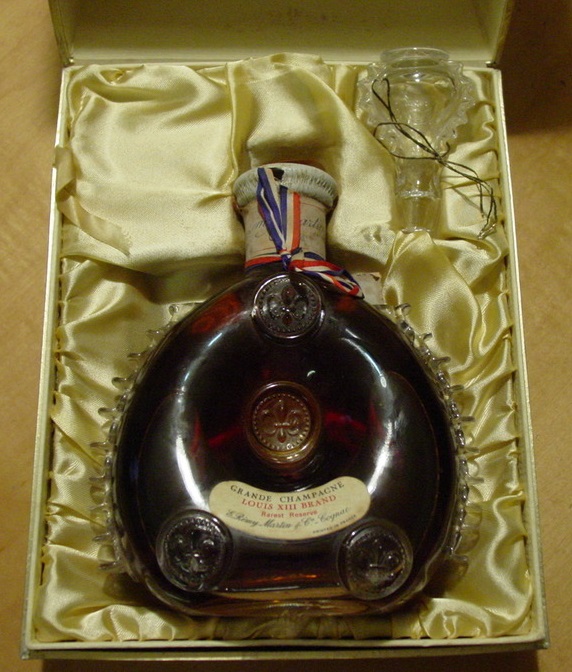 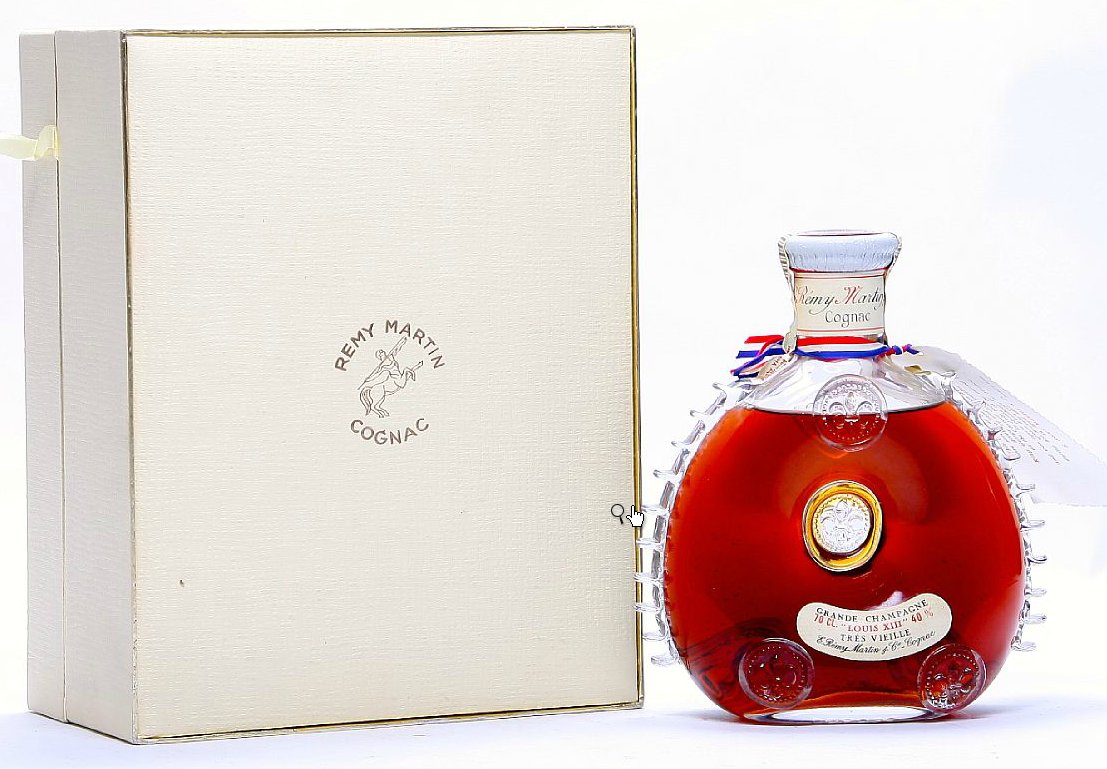 |
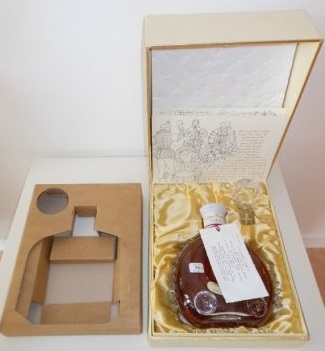 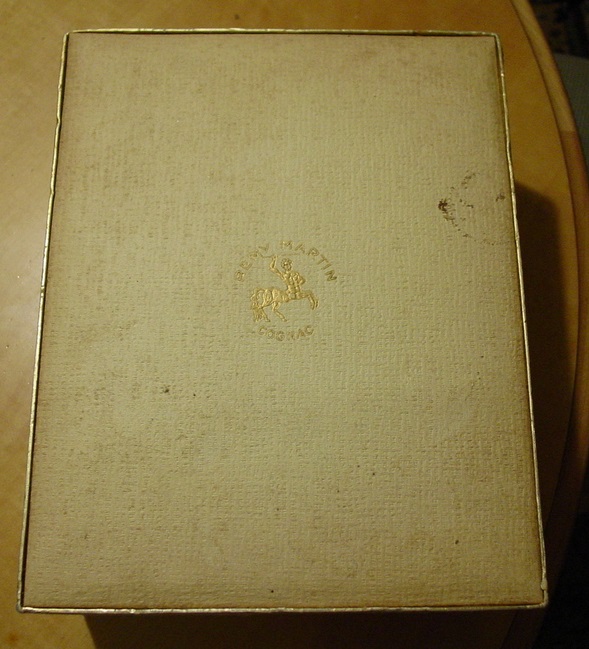 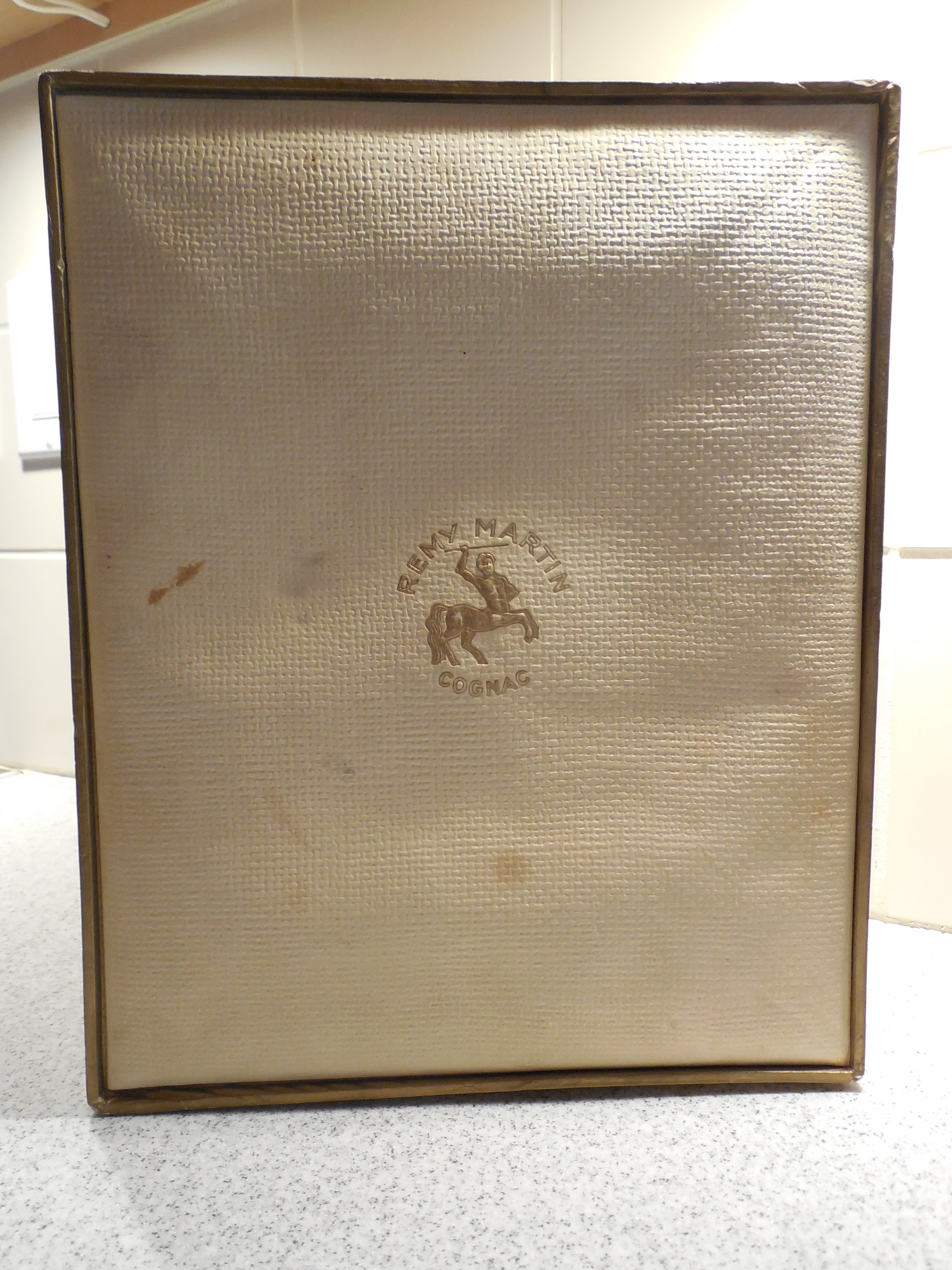 |
Plain white/cream cardboard with silk liner, gold trim - Some boxes have new design Centaur on lid and others have the old design so they were produced the year Remy Martin transitionned to the new logo. Some decanters were numbered, most were not. |
| 1964 TO 1968 USA |
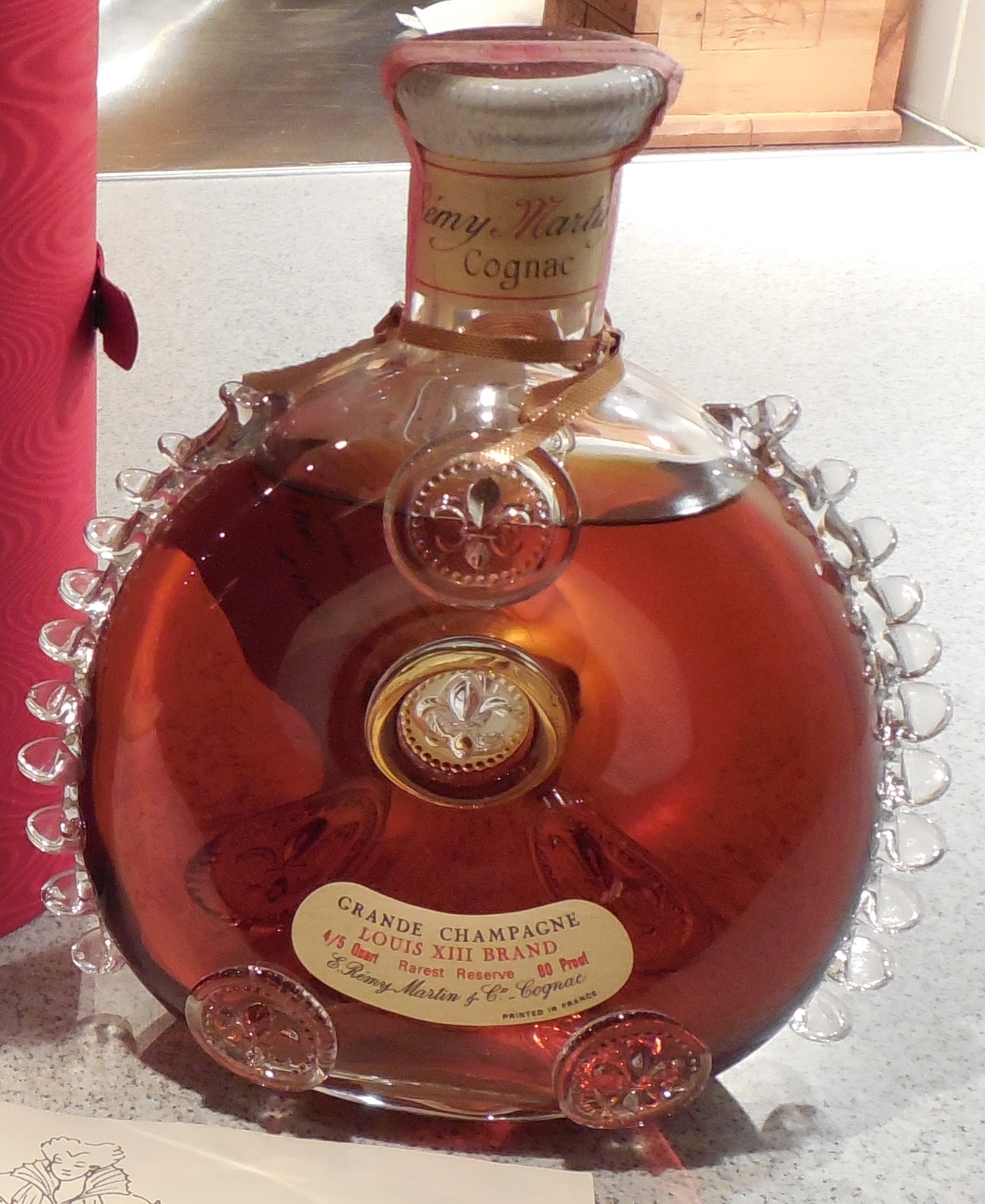 |
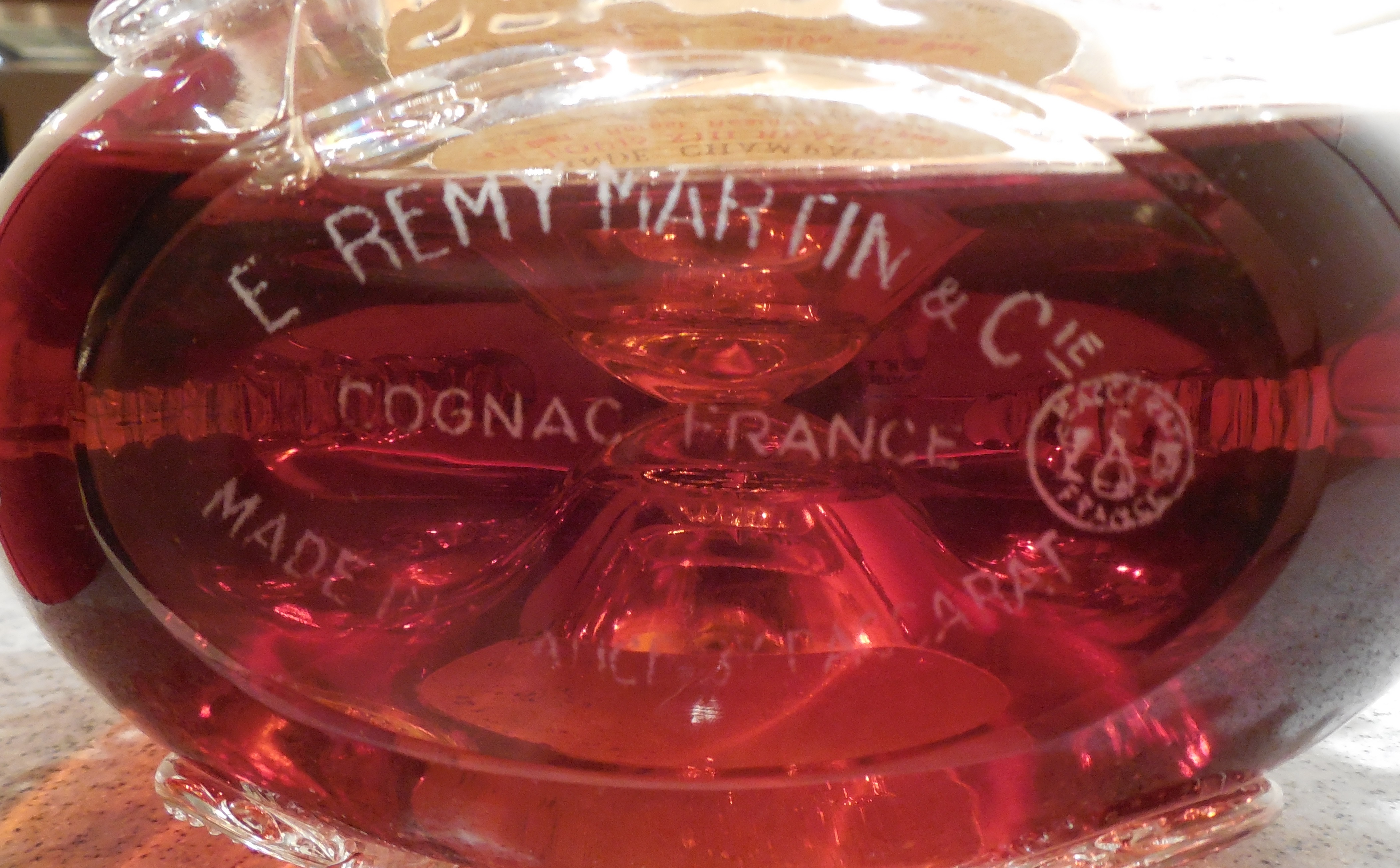 Made in France by Baccarat. With Logo but no number. |
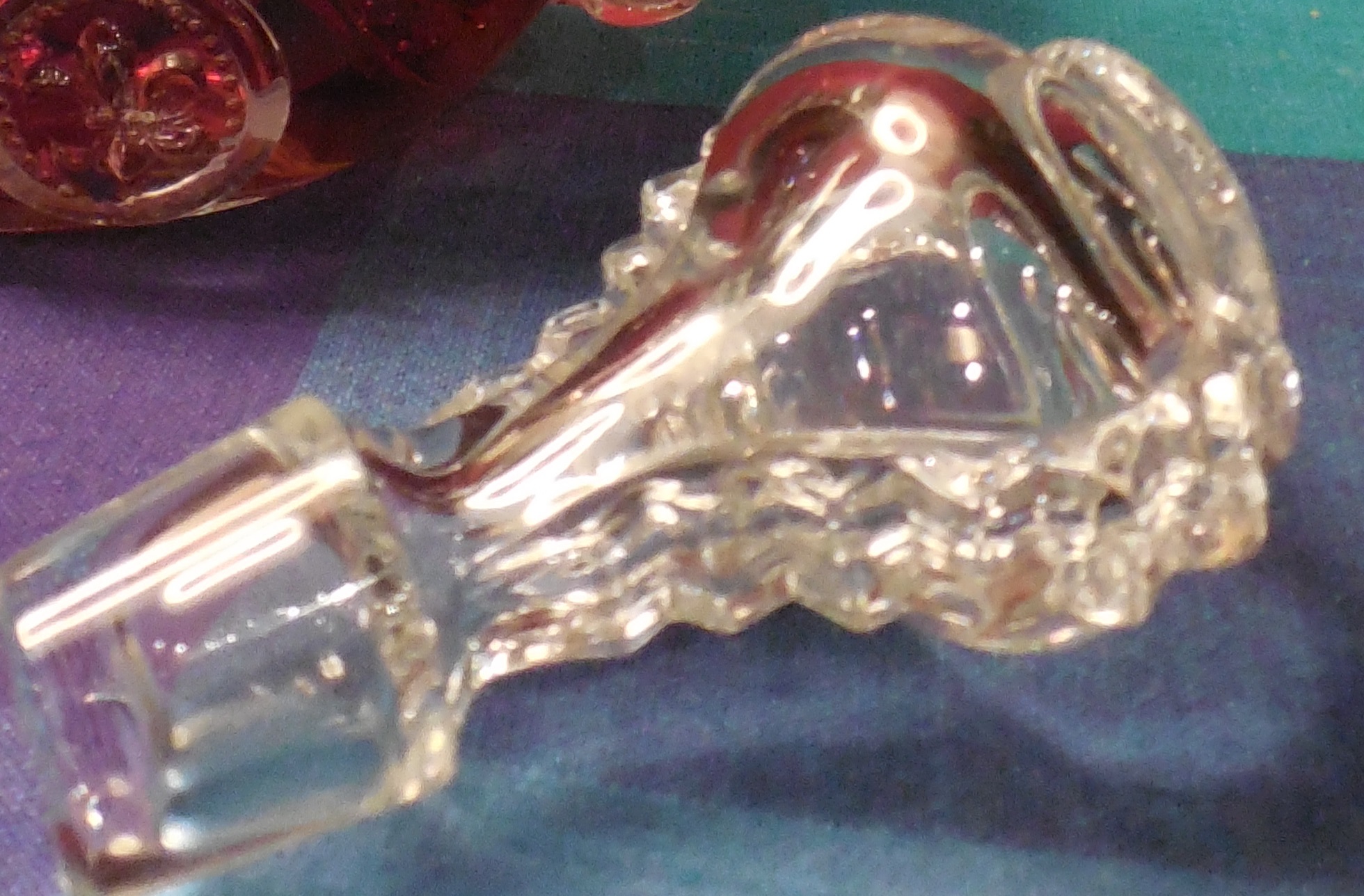 |
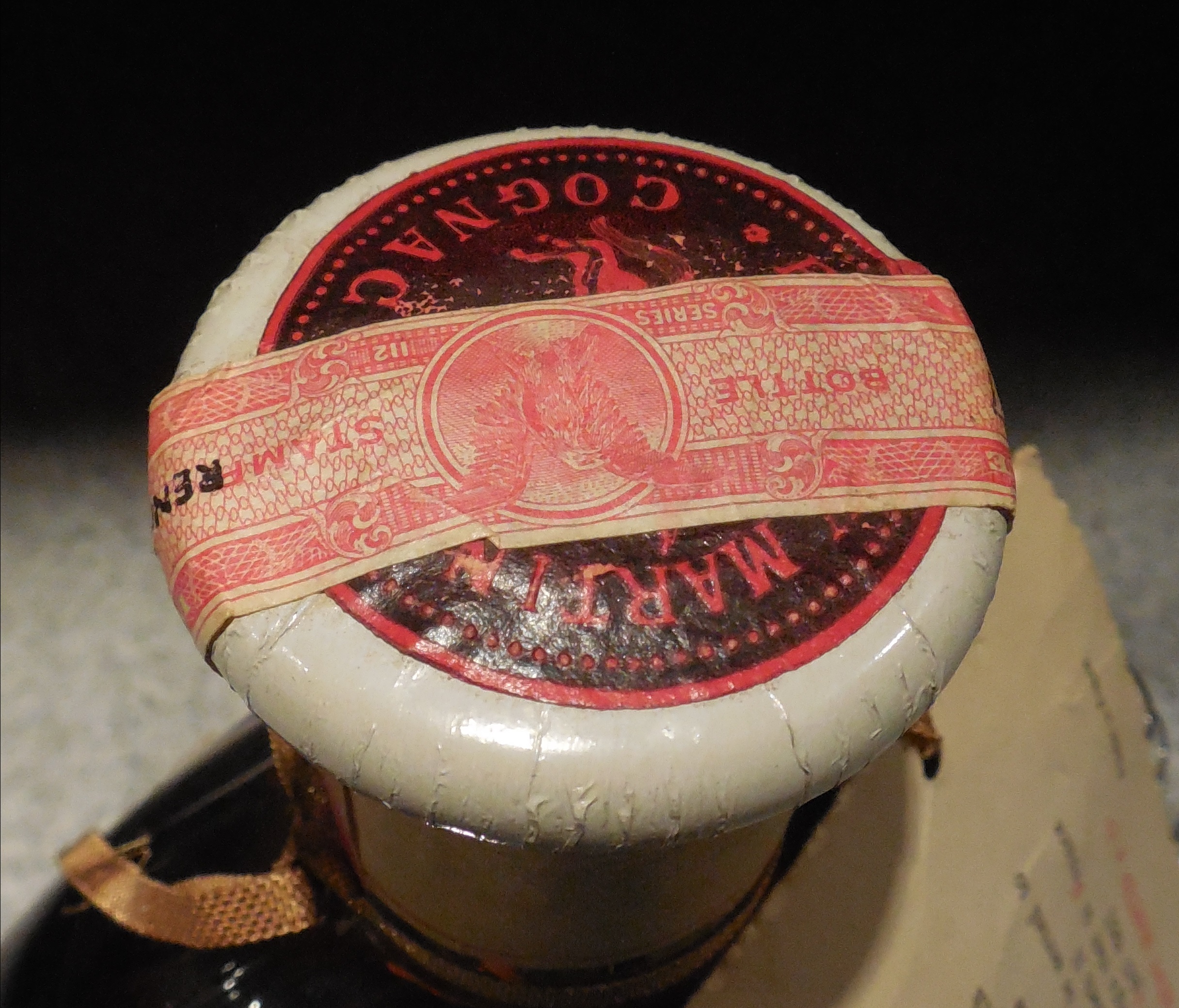 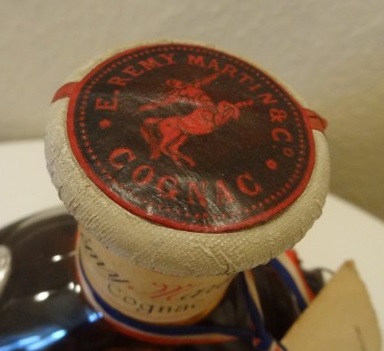 New Centaur with spear pointing up at the "R" of Martin |
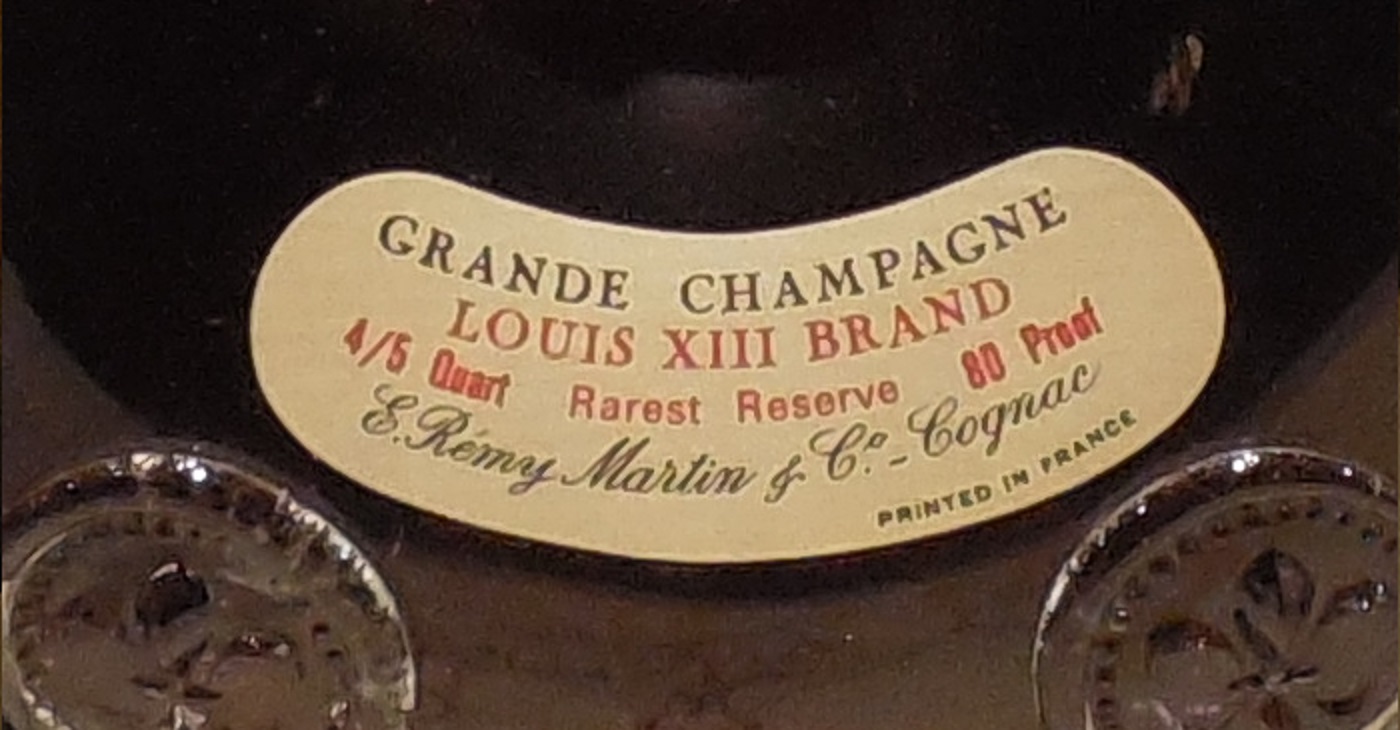 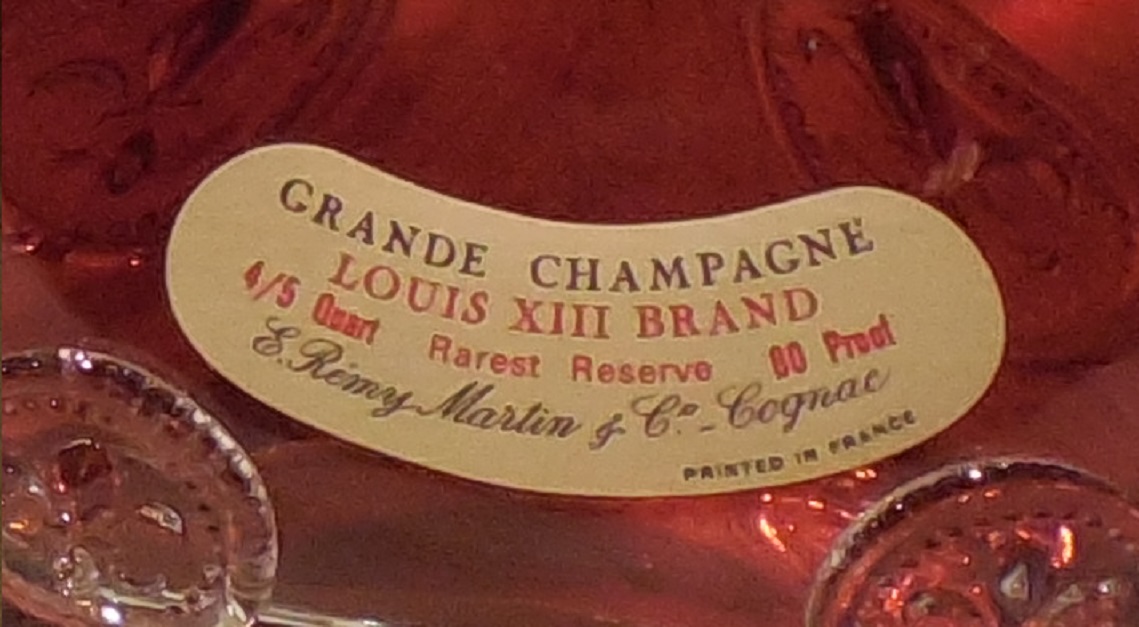 Bean-shaped "Louis XIII Brand" Label |
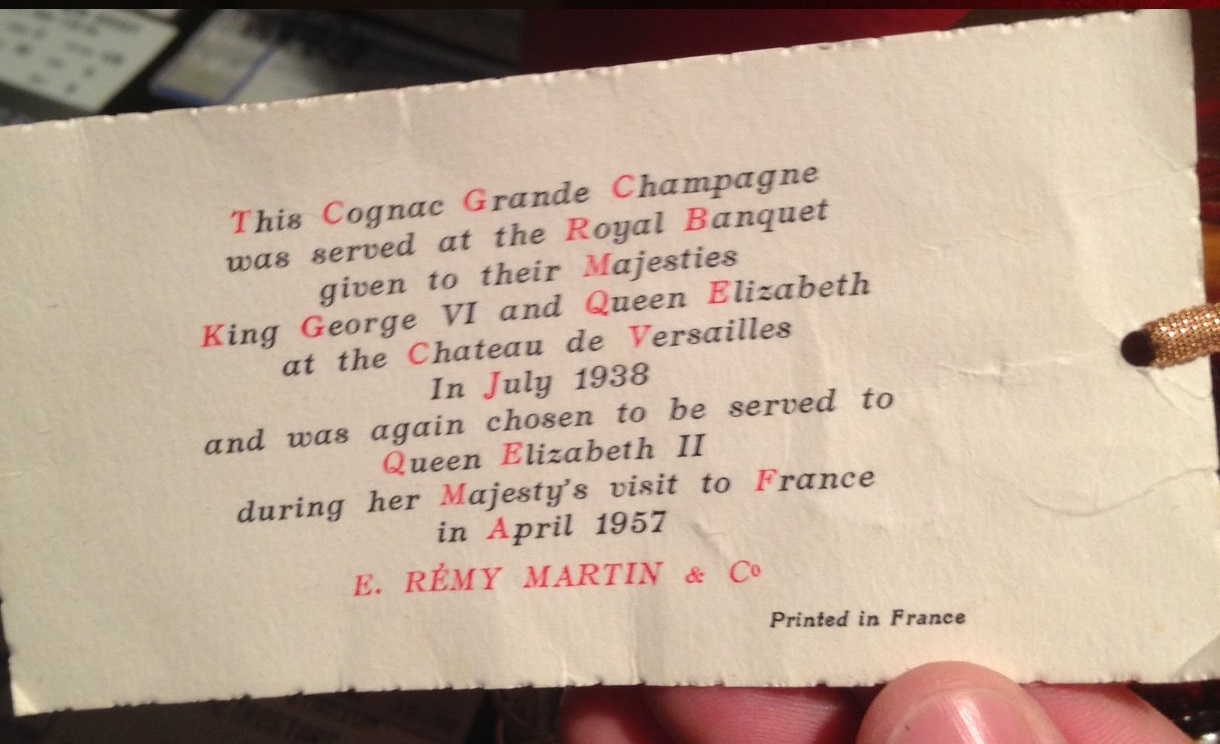 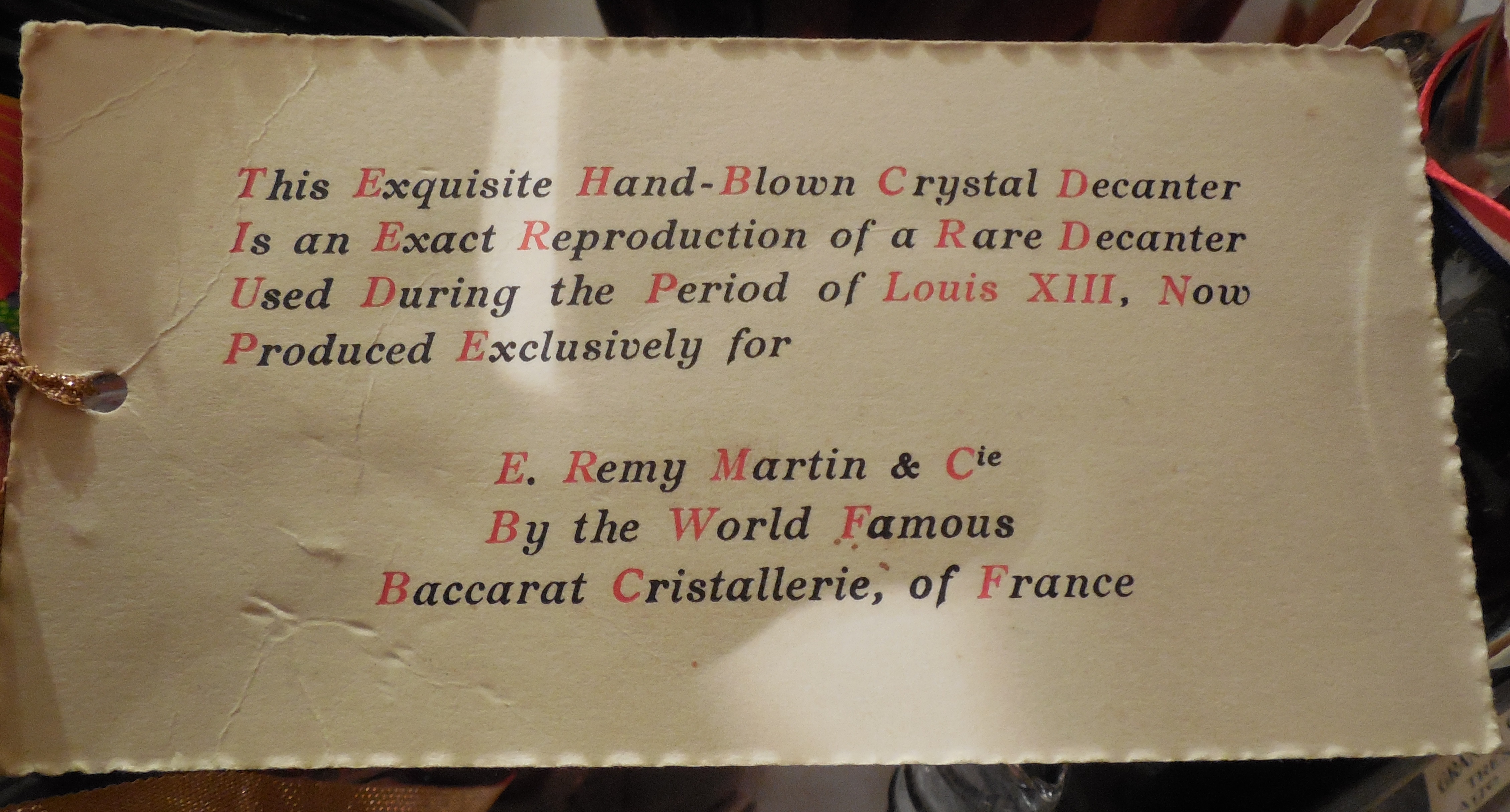 1938 & 1957 Royal Banquet Card |
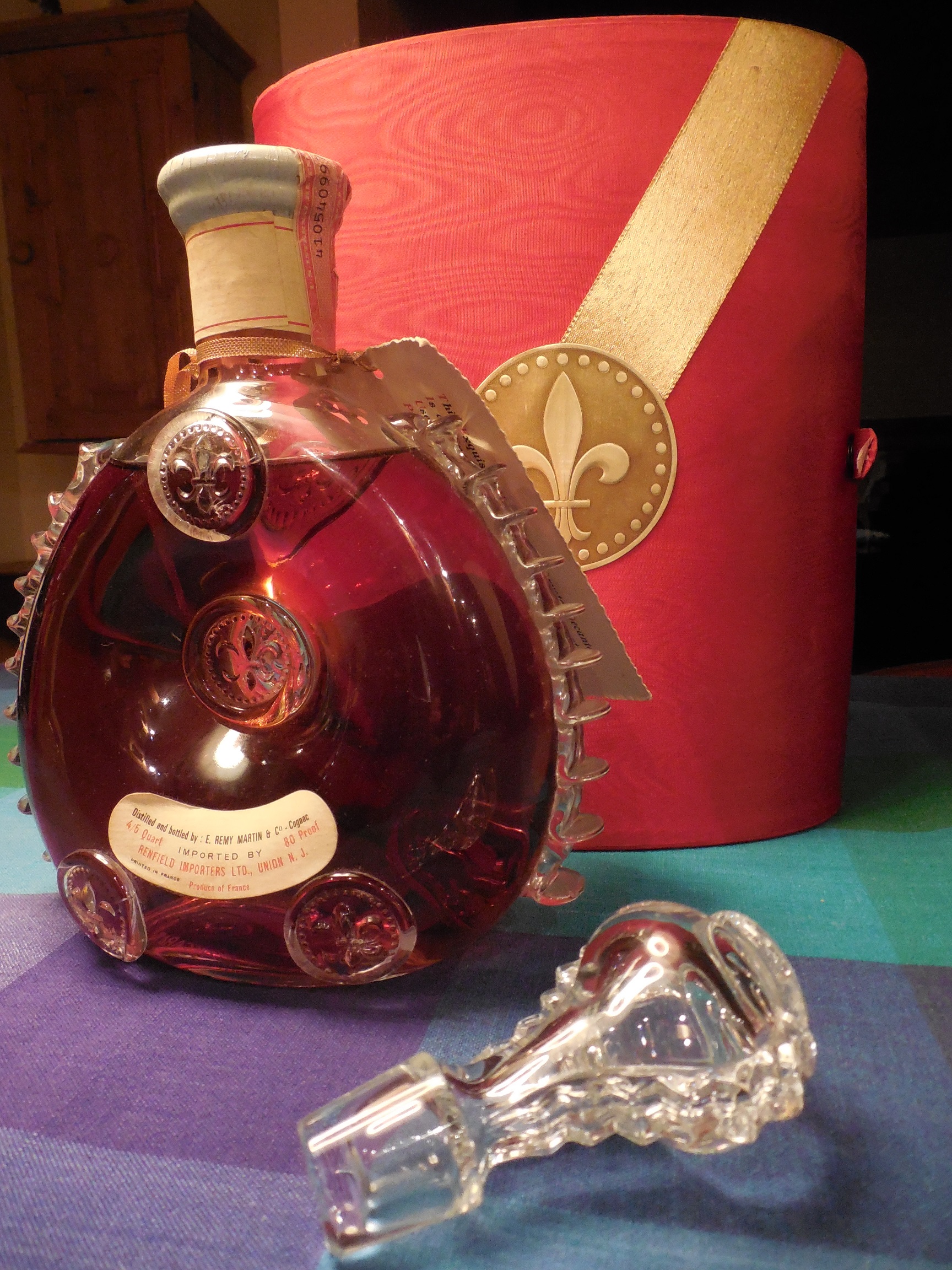 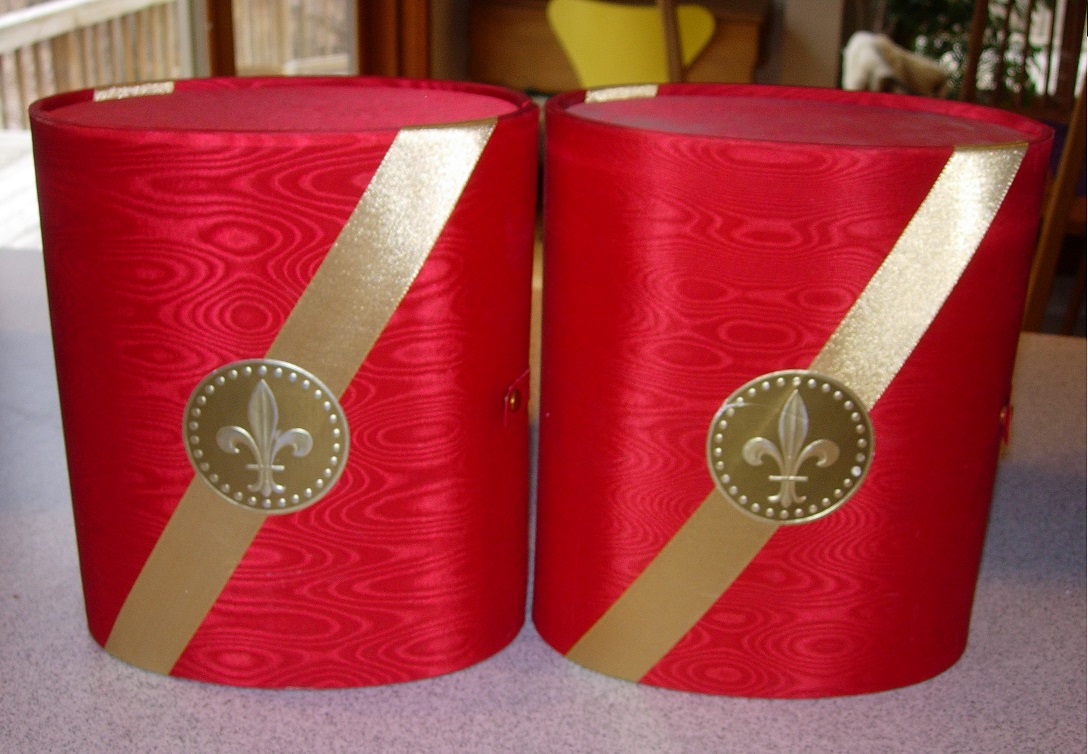 |
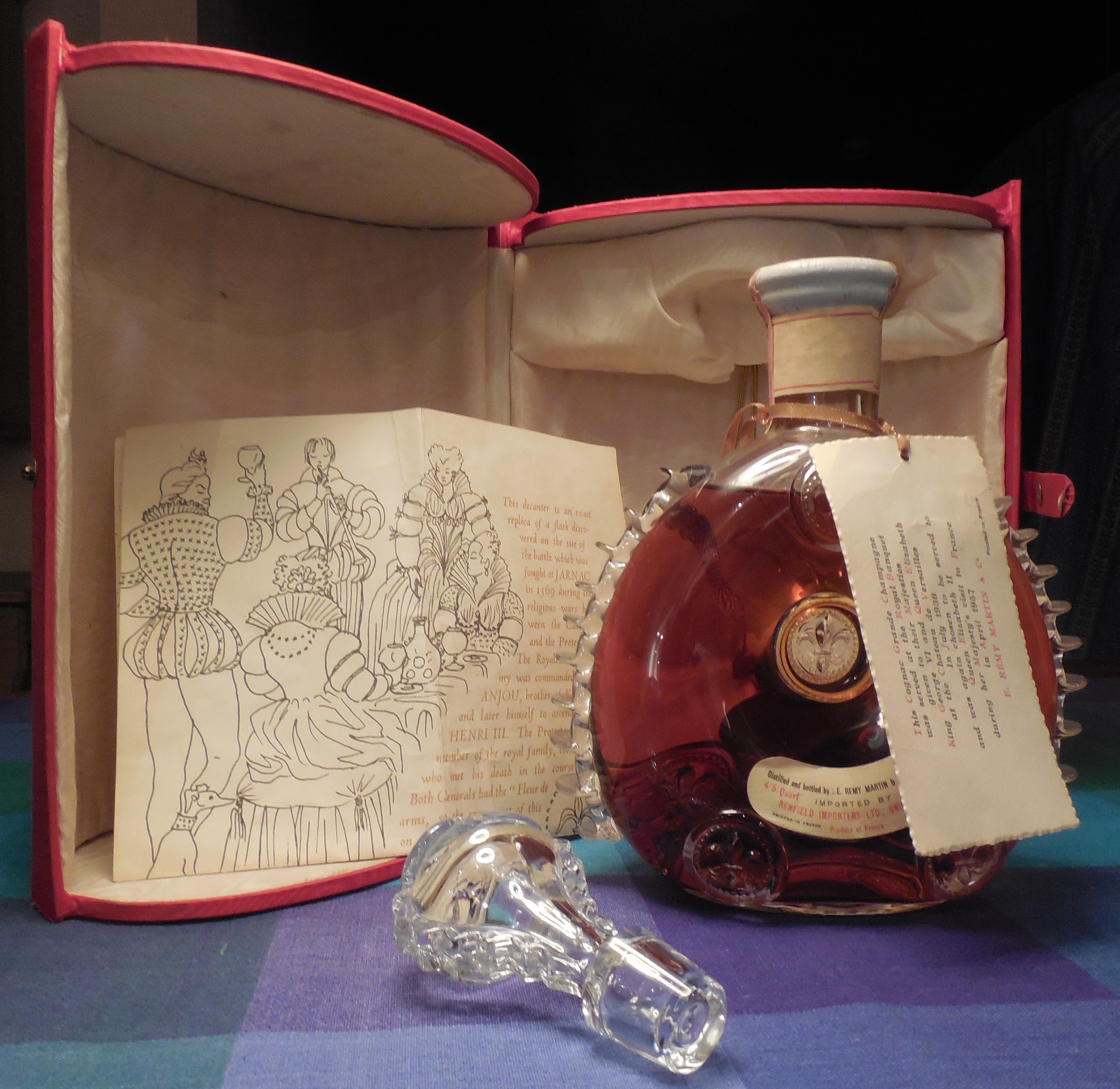 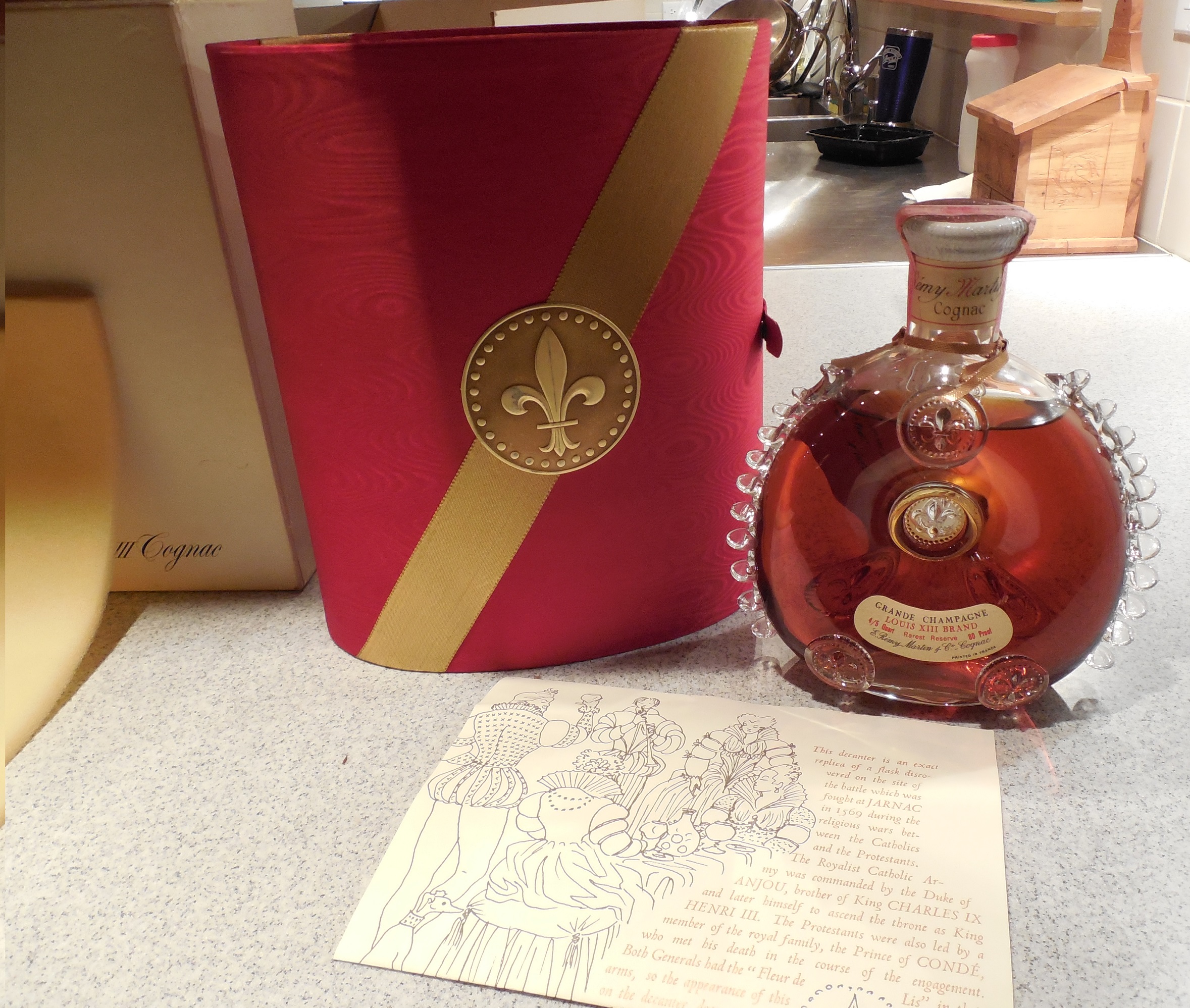 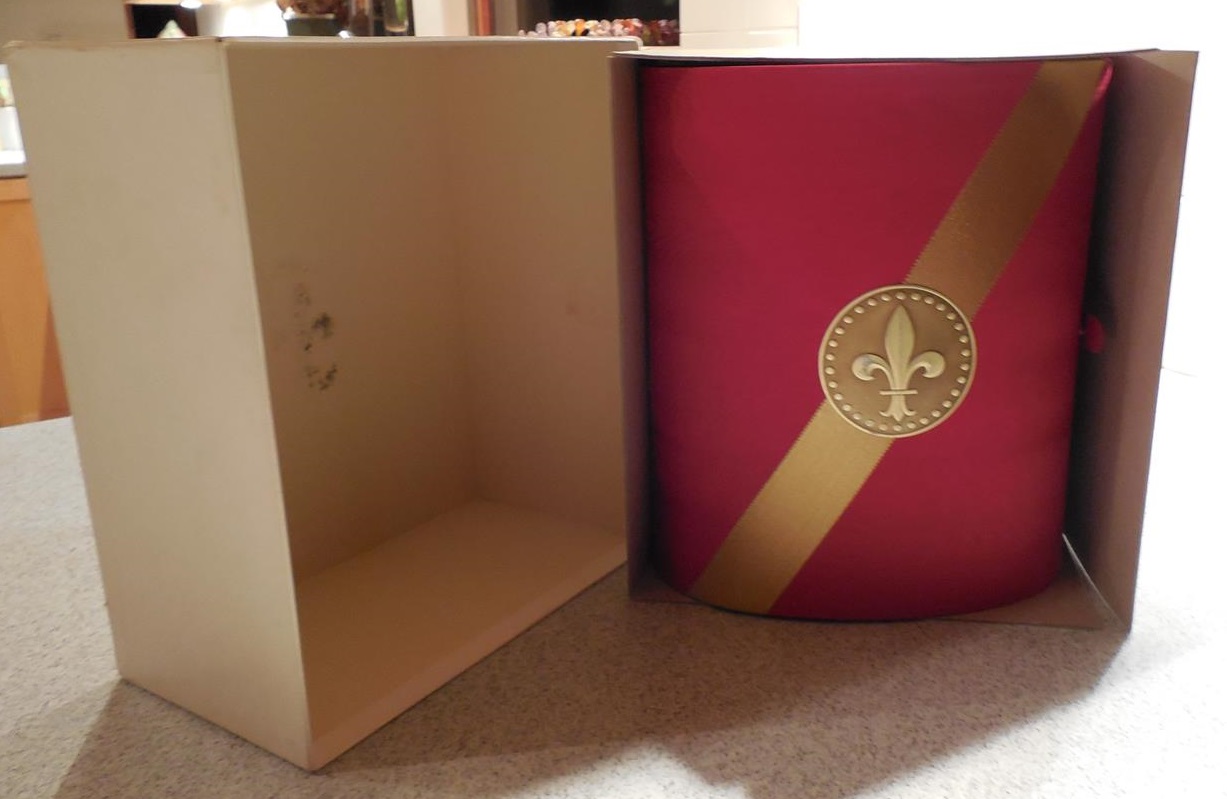 |
Red oval split "silk" box replaces rectangular cardboard presentation case. Fleur de Lys and gold diagonal on lid. This is the first set where none of the decanters are numbered. These sets were mostly (or exclusively) sold on the US market. It is very rare to find them anywhere else. |
| 1969 TO 1978 |
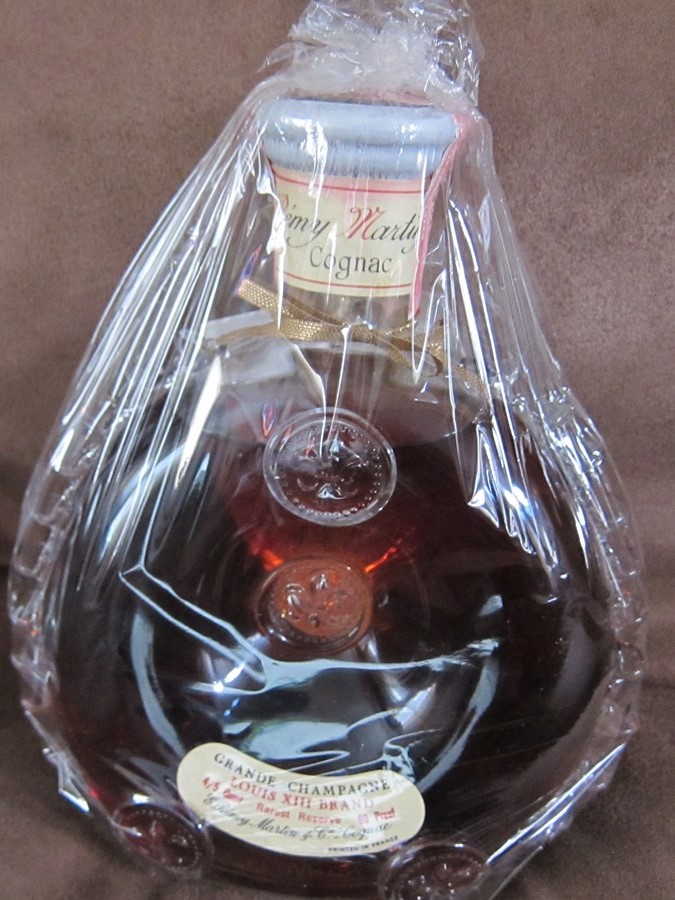 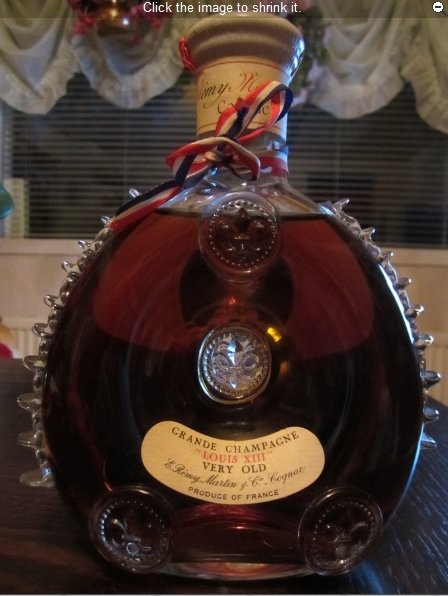 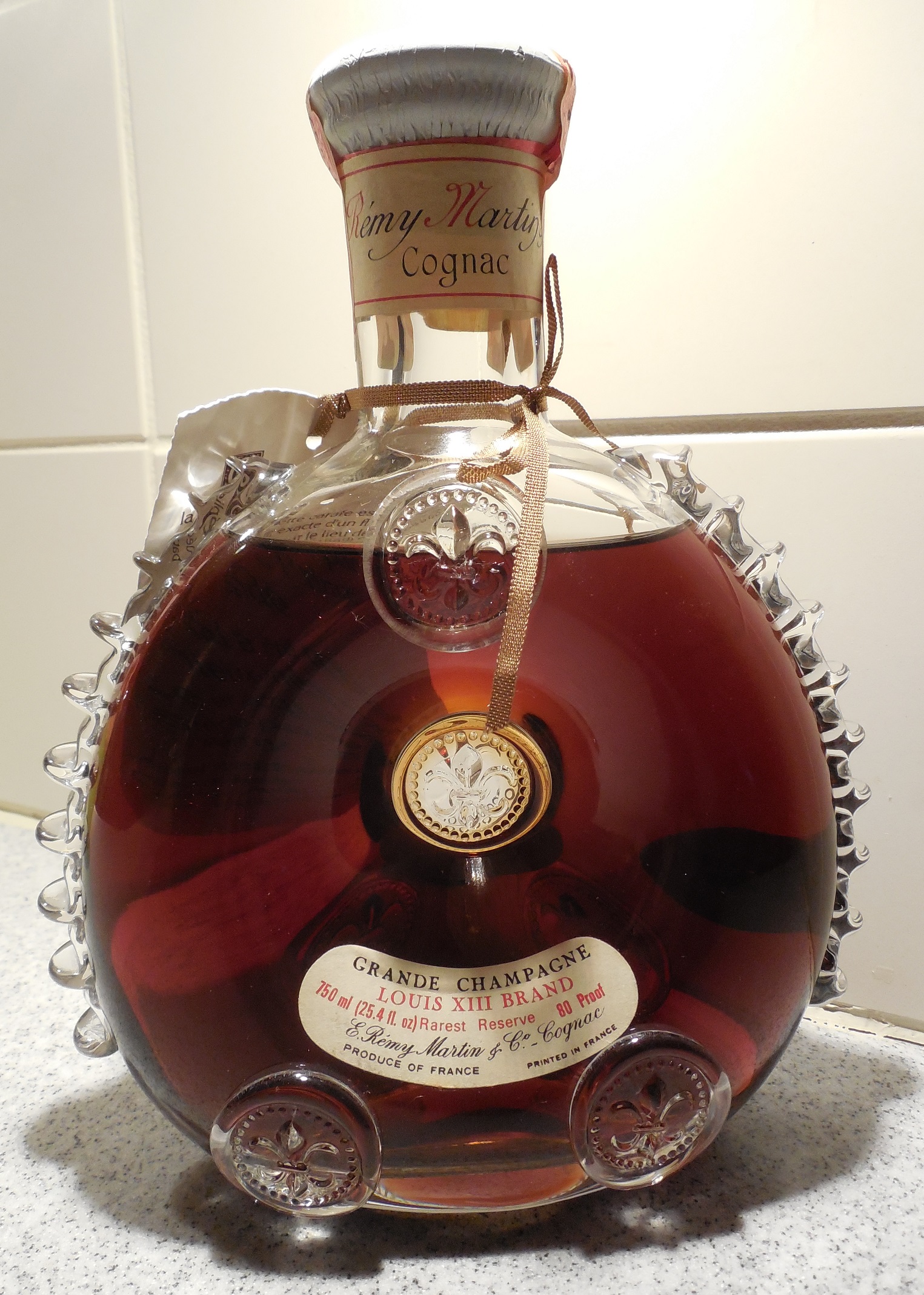 |
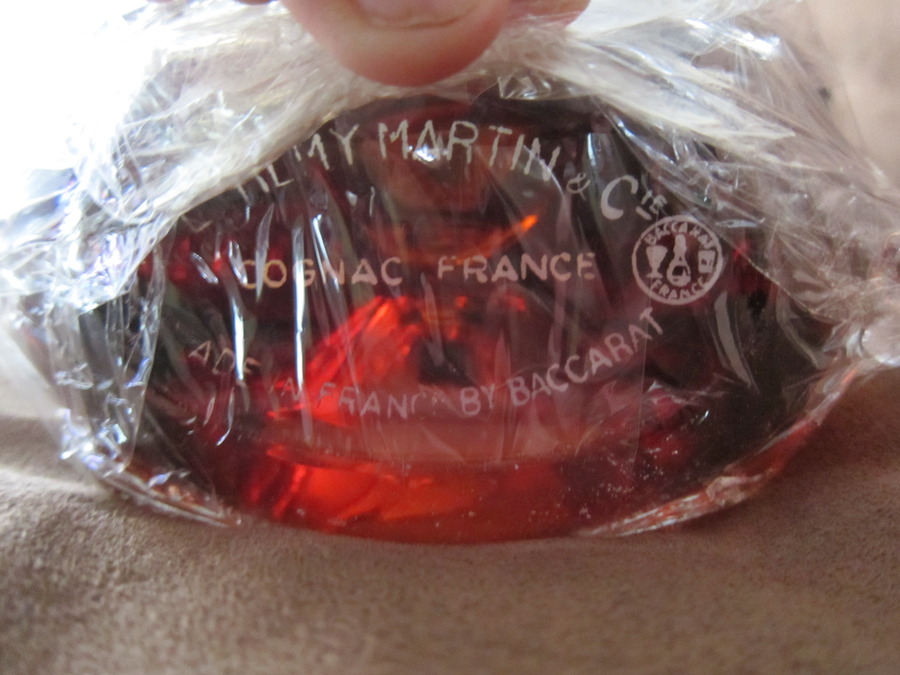 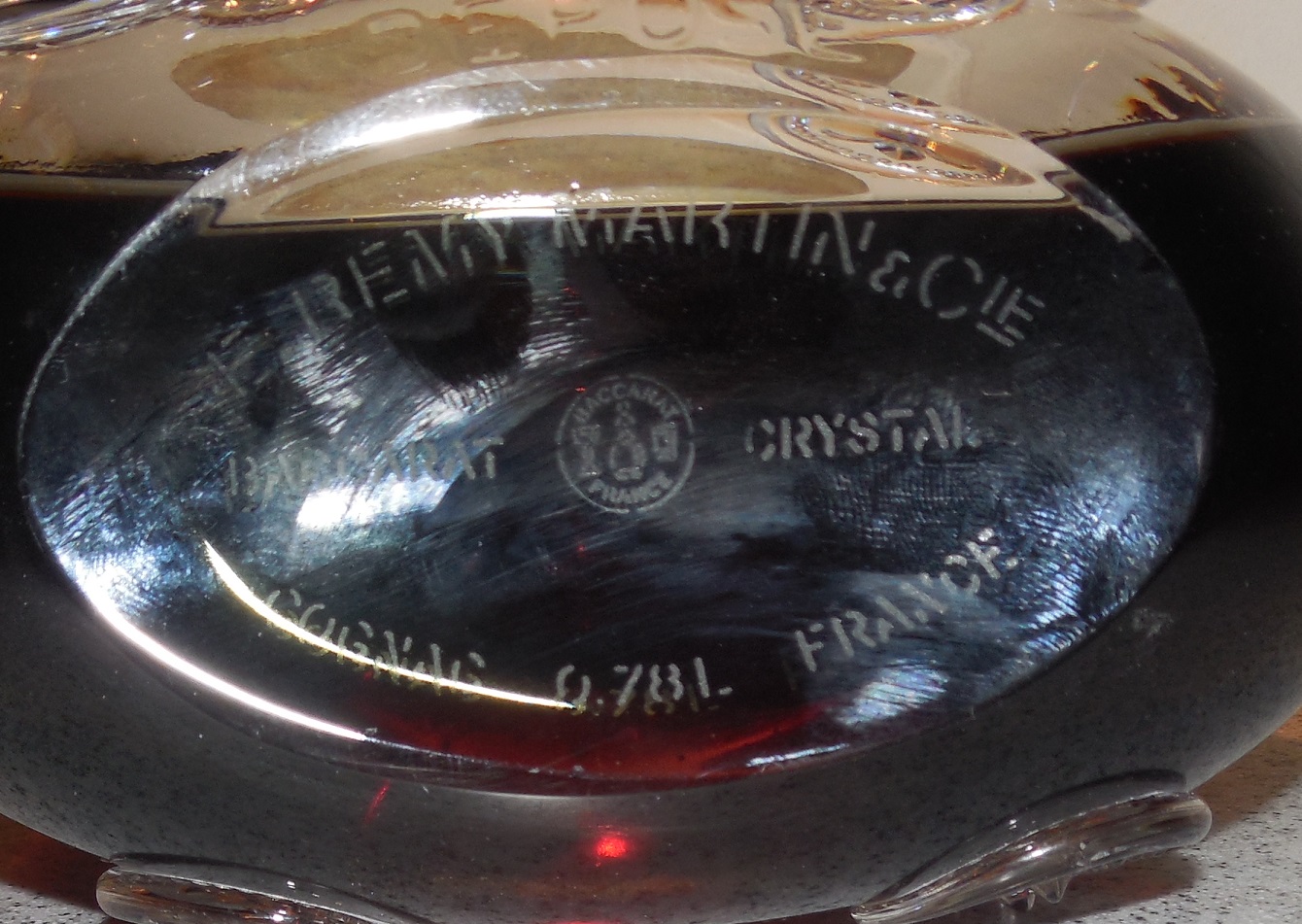 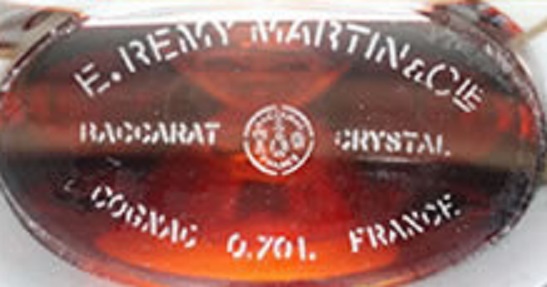 New layout under some bottles during this period: Logo in center. |
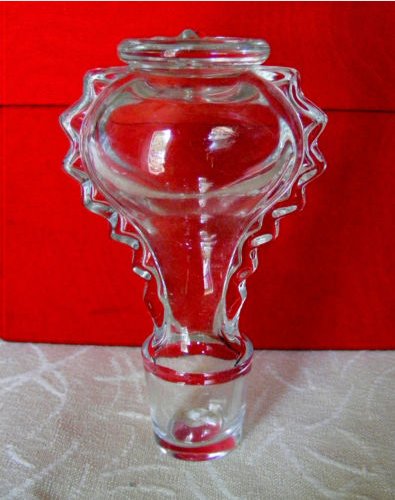 |
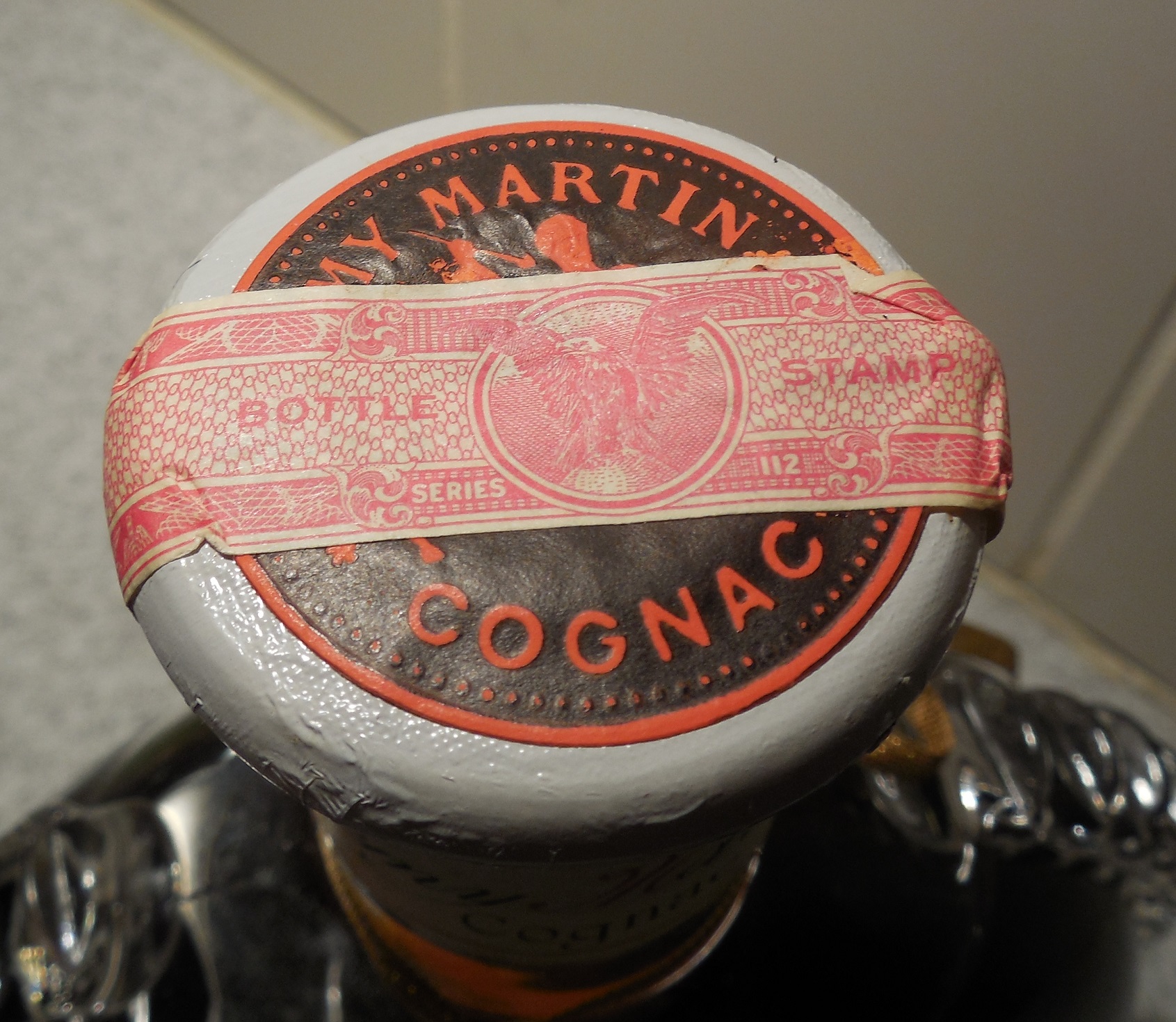 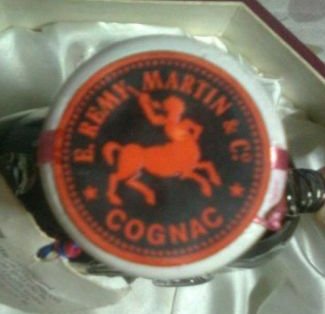 Return of the old style Centaur. |
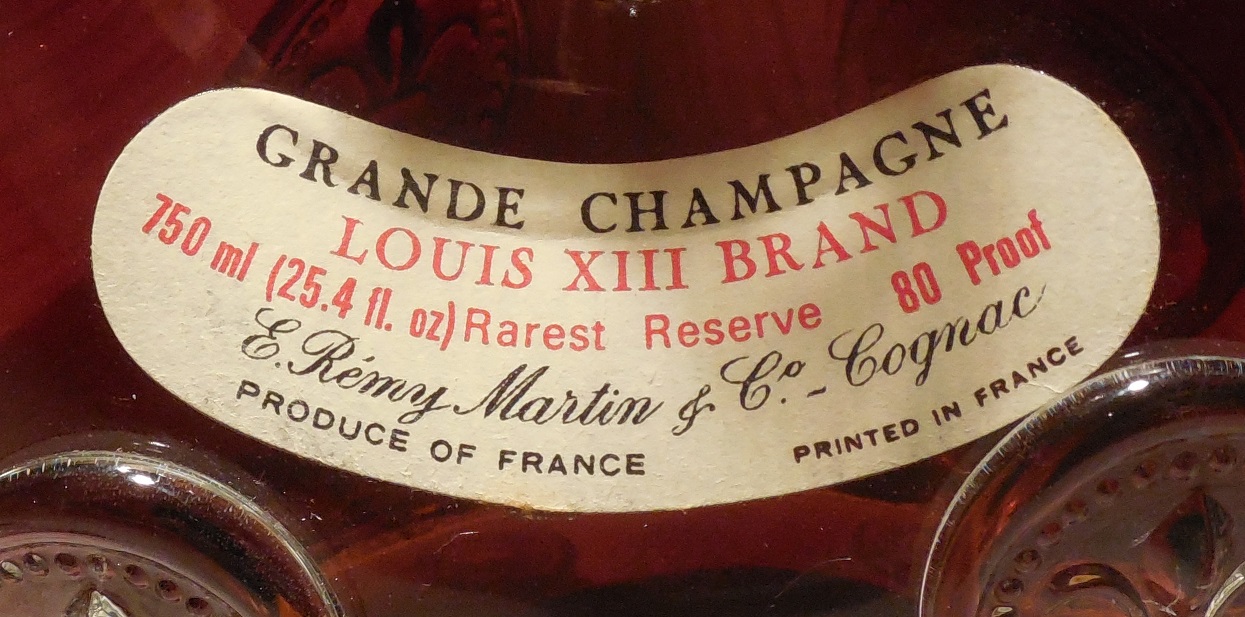 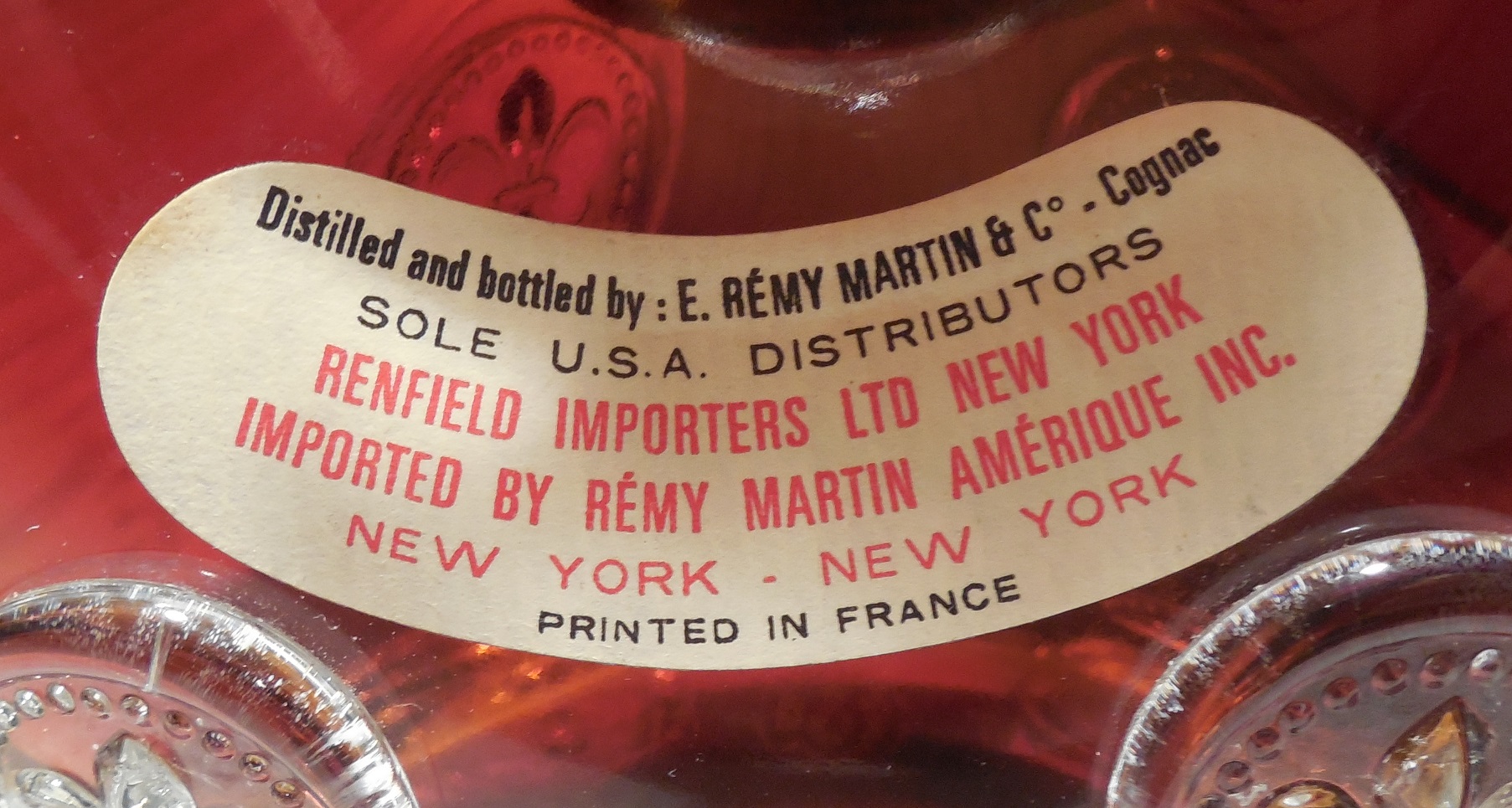 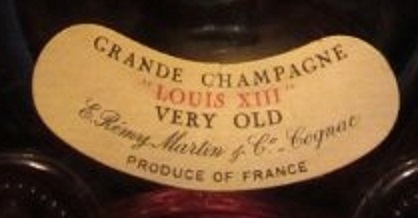 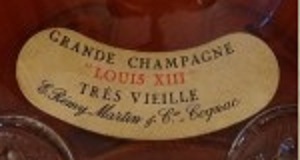 Bean-shaped Label with "Tres Vieille" "Very Old" or "Rarest Reserve" designation. |
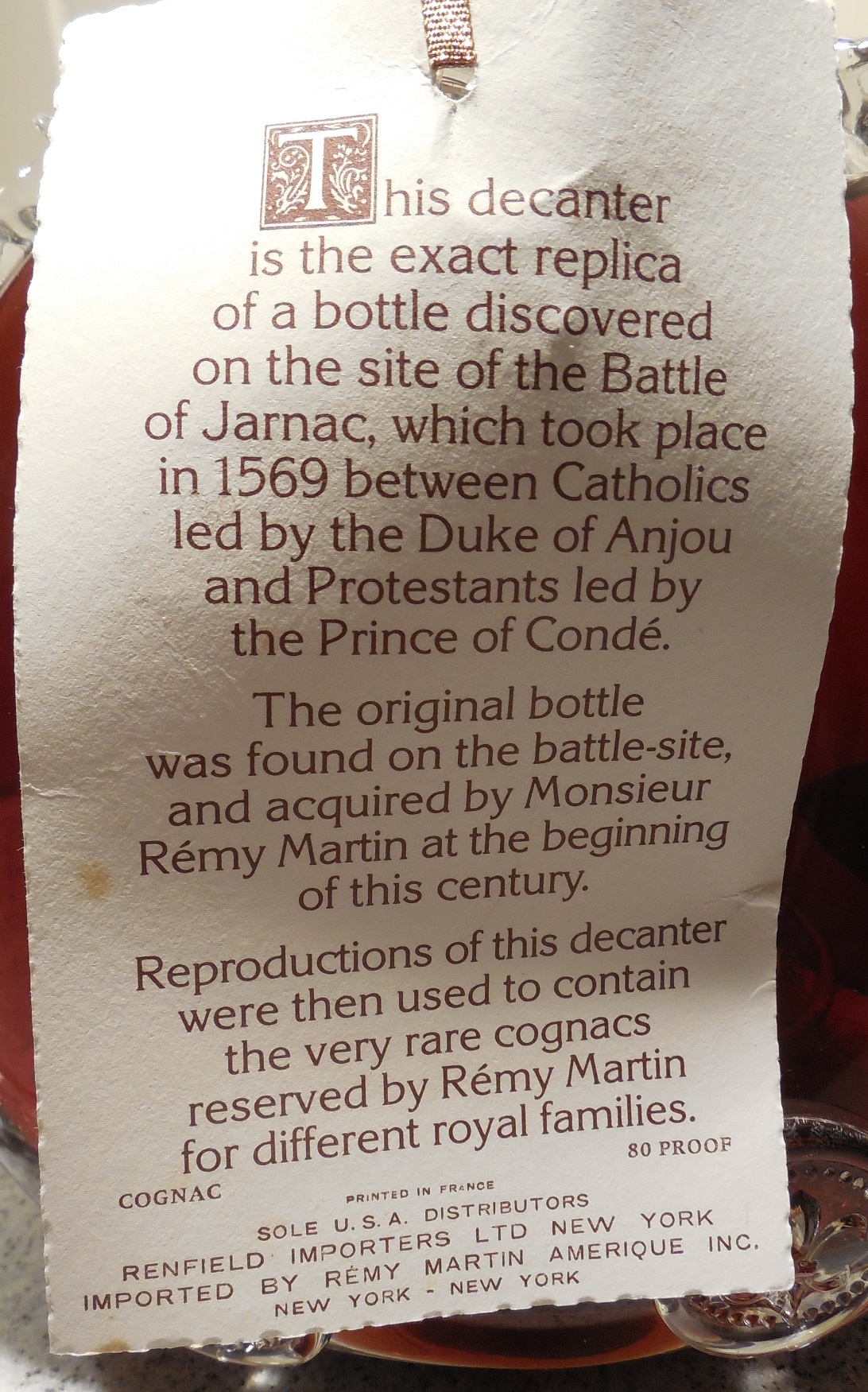 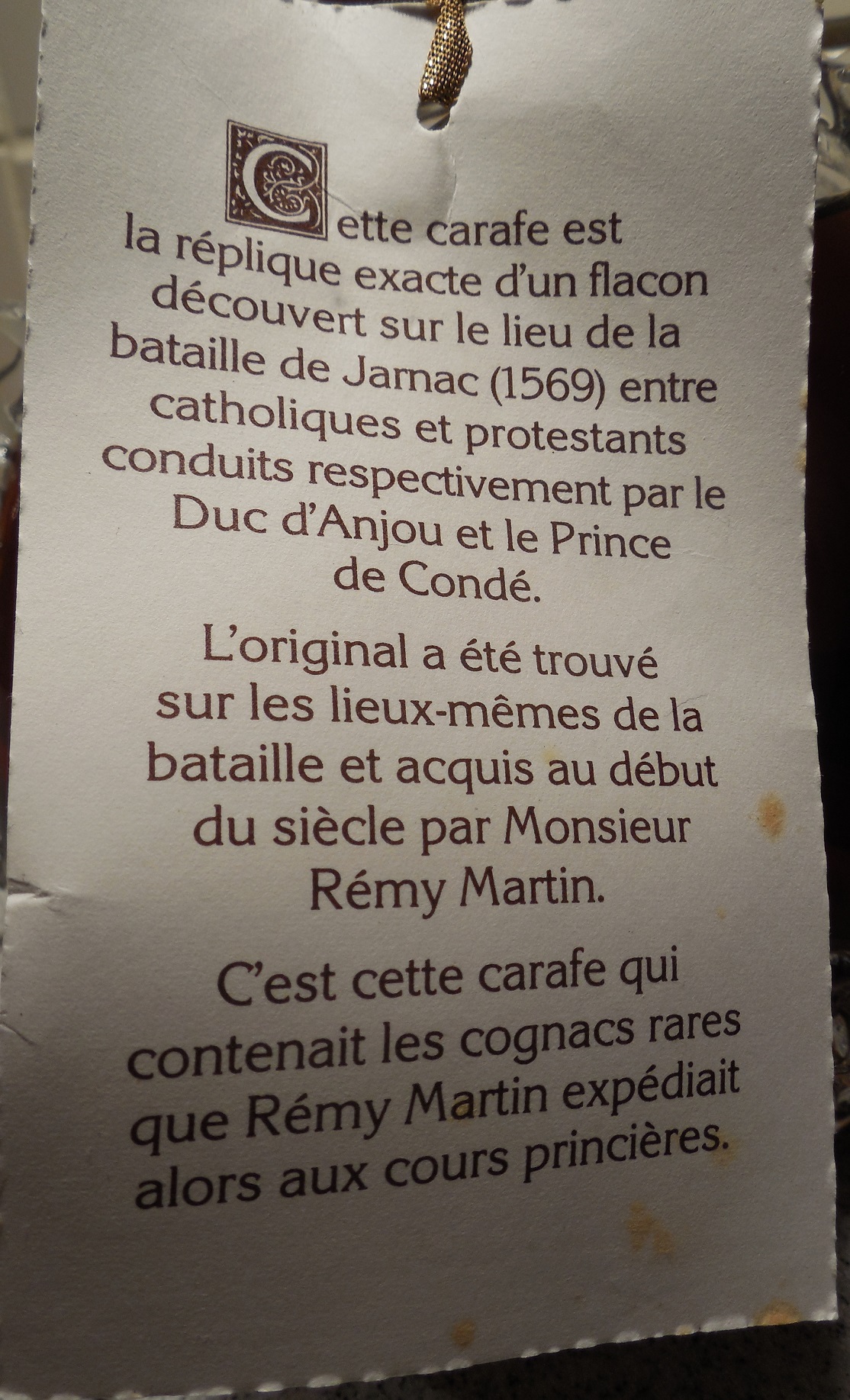 The new "Battle of Jarnac" card replaces the Royal Banquet Cards in use since 1938. |
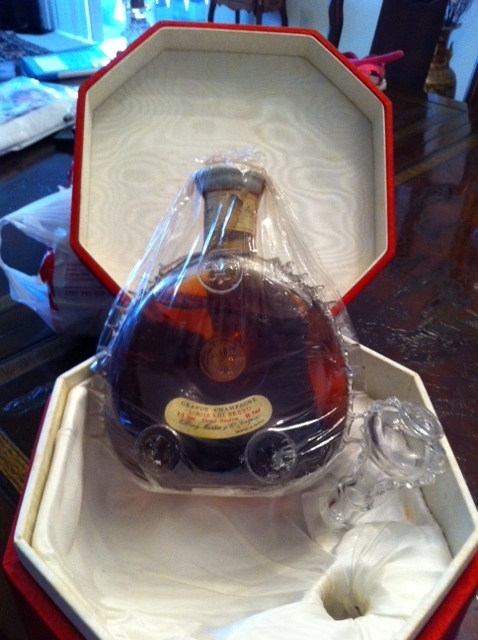 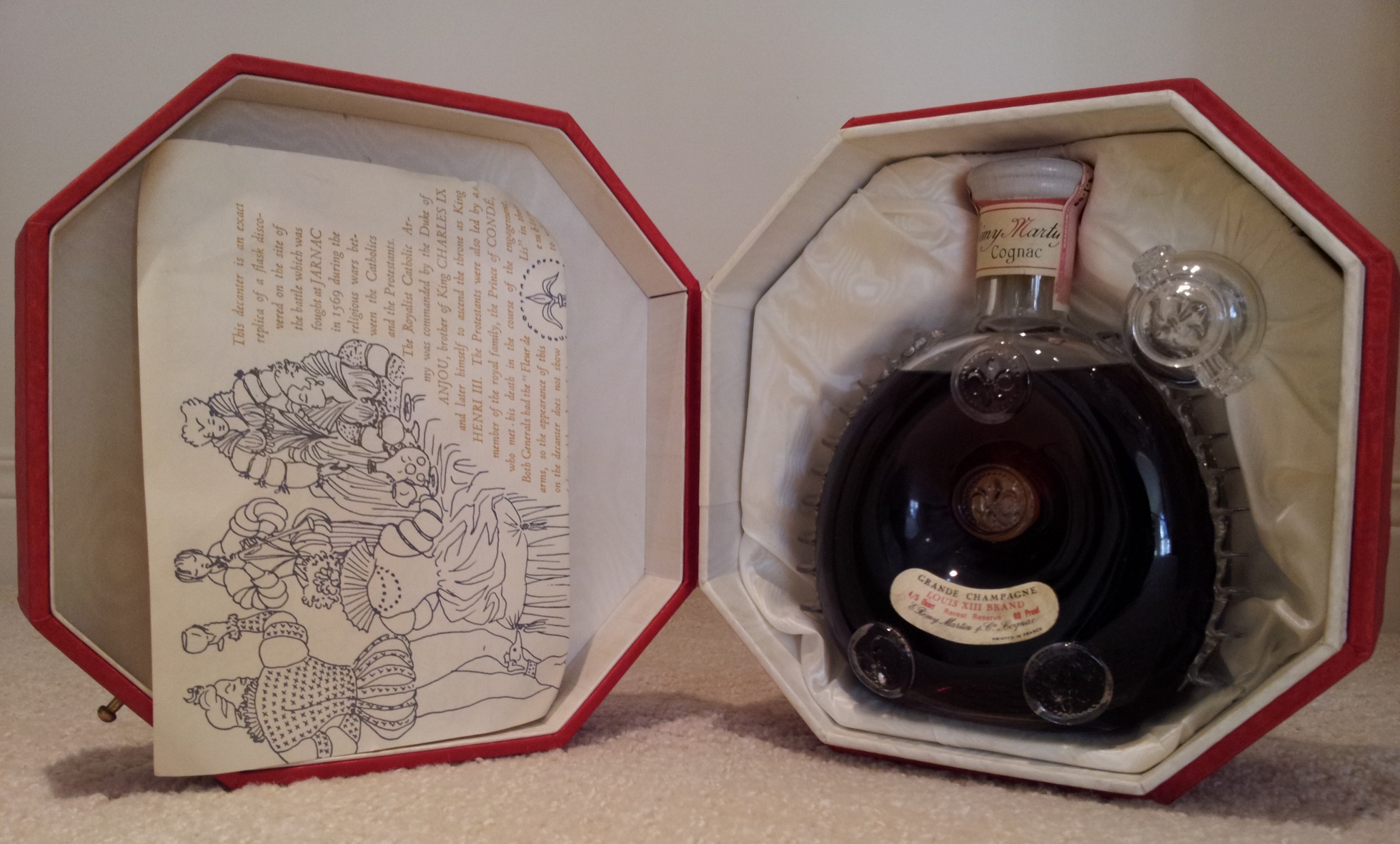 |
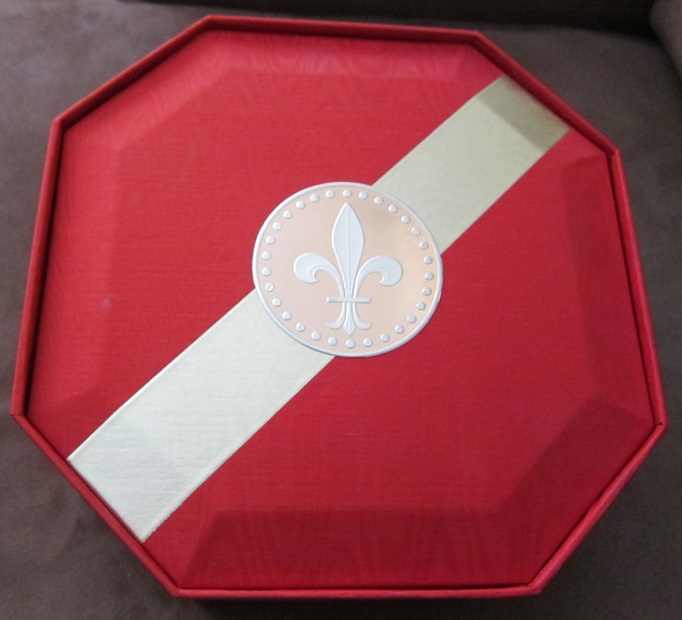 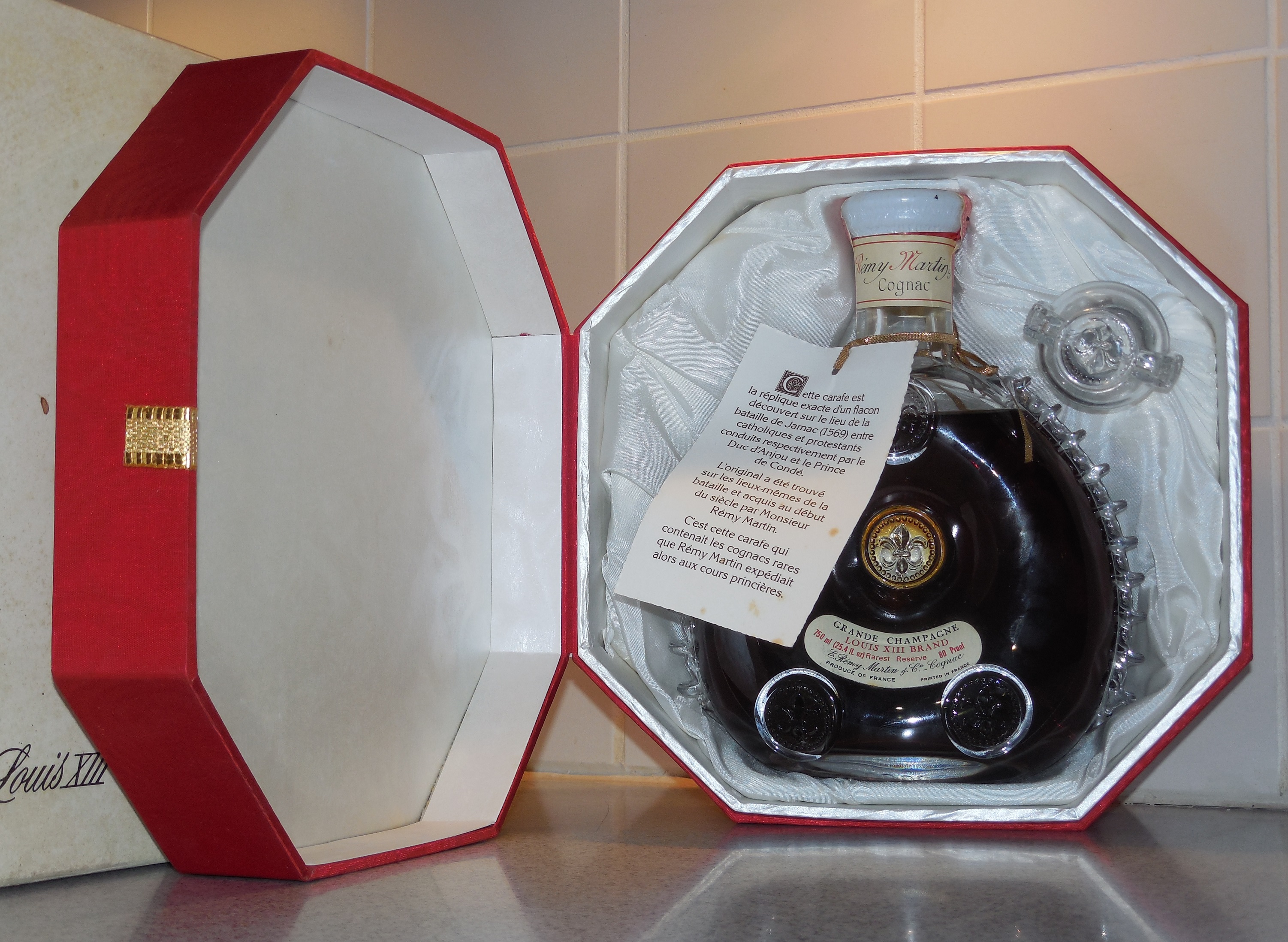 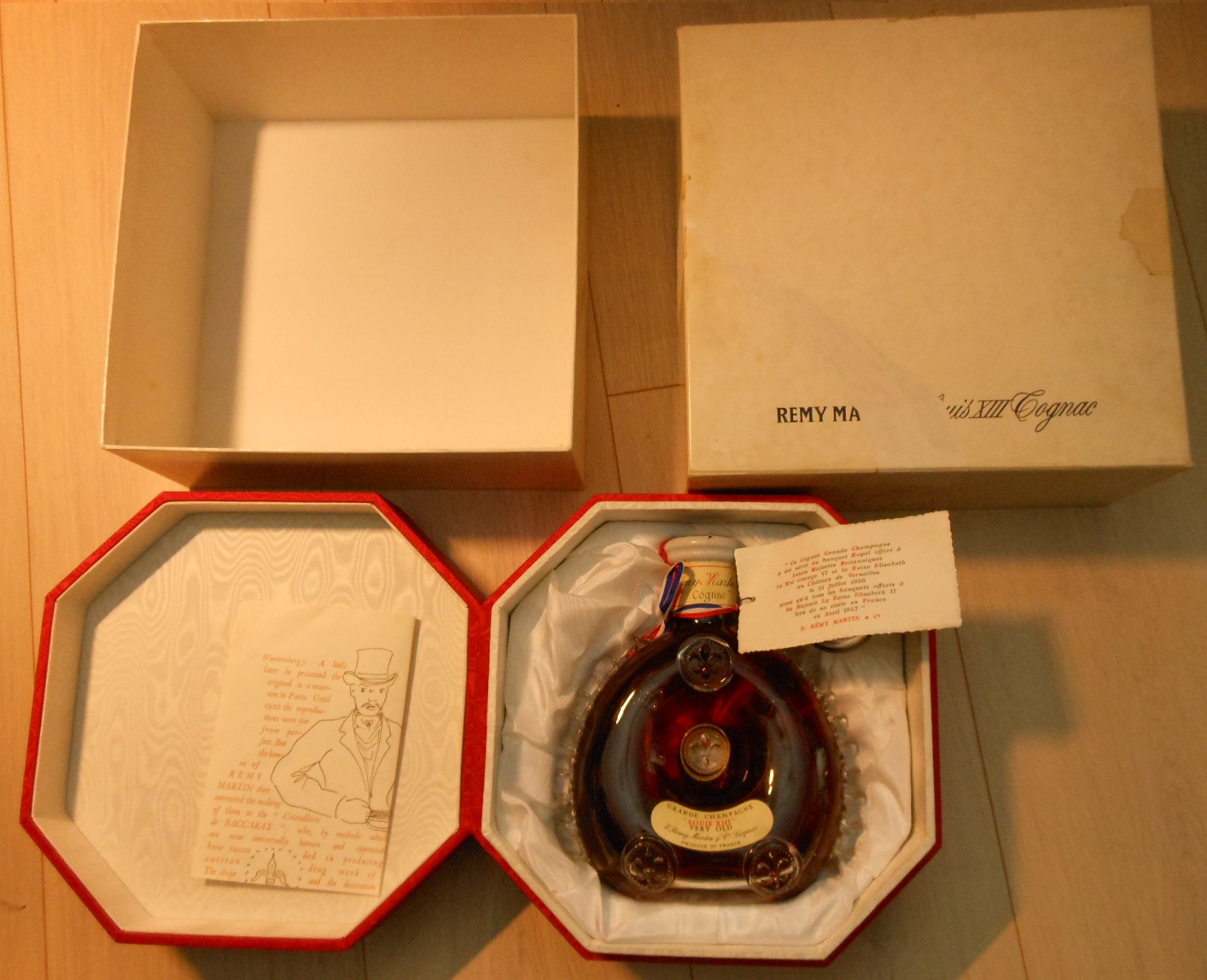 |
Octagonal Red "silk" box replaces oval box in 1969. New Label, card and cork seal revive 1930s bottle design around 1971. Bottles not numbered. Visible decrease in quality control on the decanters over this period. Later bottles from this era have painted markings instead of the etched lettering used on the older ones. Some bottles and stoppers have clearly visible mold ring markings indicating they were machine made not hand blown. |
| 1969? ASIA |
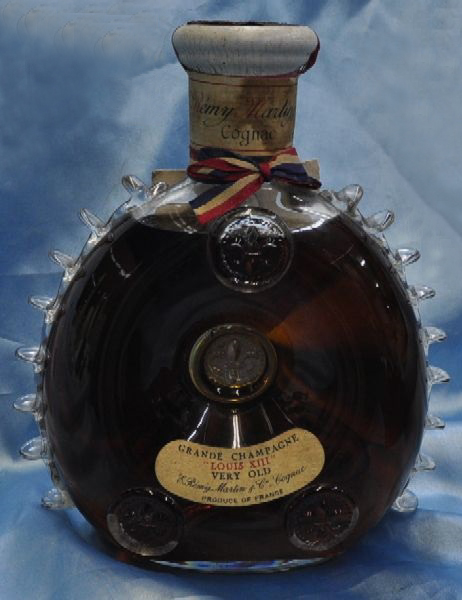 Only 9 fins per side |
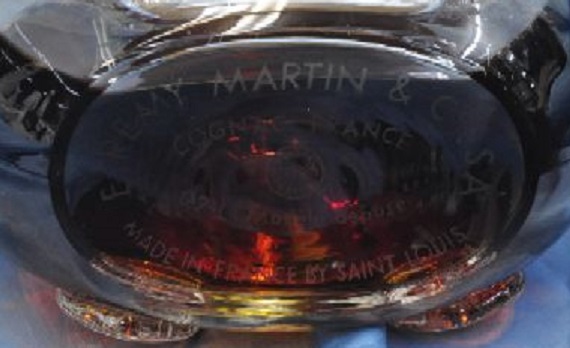 E.Remy Martin & Co. SA - Made in France by Saint Louis. No numbering. Clearly defined "ridge" around the base like on all other crystal bottles. |
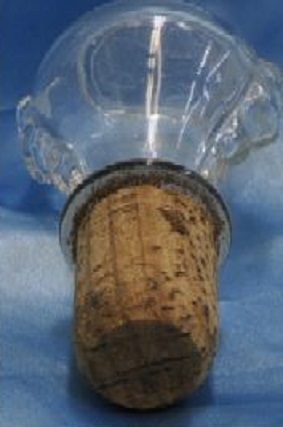 This cork/glass stopper is presented with the bottle. It was made for a 1980s Remy Martin Napoleon cognac and does not belong here. |
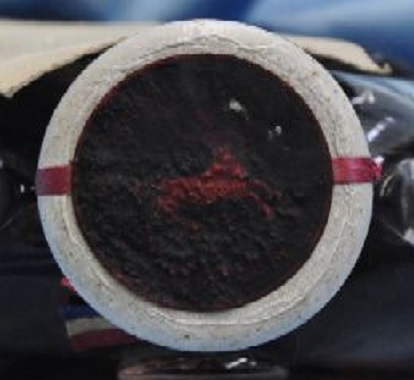 |
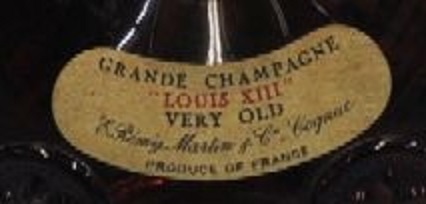 Bean-shaped. Rarest Reserve. |
Unknown | Unknown | Unknown | Debunking the "early Saint Louis bottle" featured by Finest & Rarest: This decanter is described as an "early 1900s Saint Louis", however it looks more like a 1960s bottle made for export to Japan. Note the name under the bottle: E.Remy Martin & Co.SA (SA=Societe Anonyme), not the official designation of the Company until the 1960s. If it was from the 1900s it would have stated "E.Remy Martin & Cie" the French abbreviation for "Compagnie" not the anglicized version "Co." and SA would have been omitted as such technicalities - as the type of Corporation - only were added to the name in the 1960s. Also volume indication under the bottle, a definite post-1965 addition. The 1969 date is a "best guess" but beside being a little dirtier and having 9 fins, the bottle is identical to the Saint Louis bottles mass-produced for the Japanese market from 1969 to 1979. |
| 1969 TO 1978 ASIA |
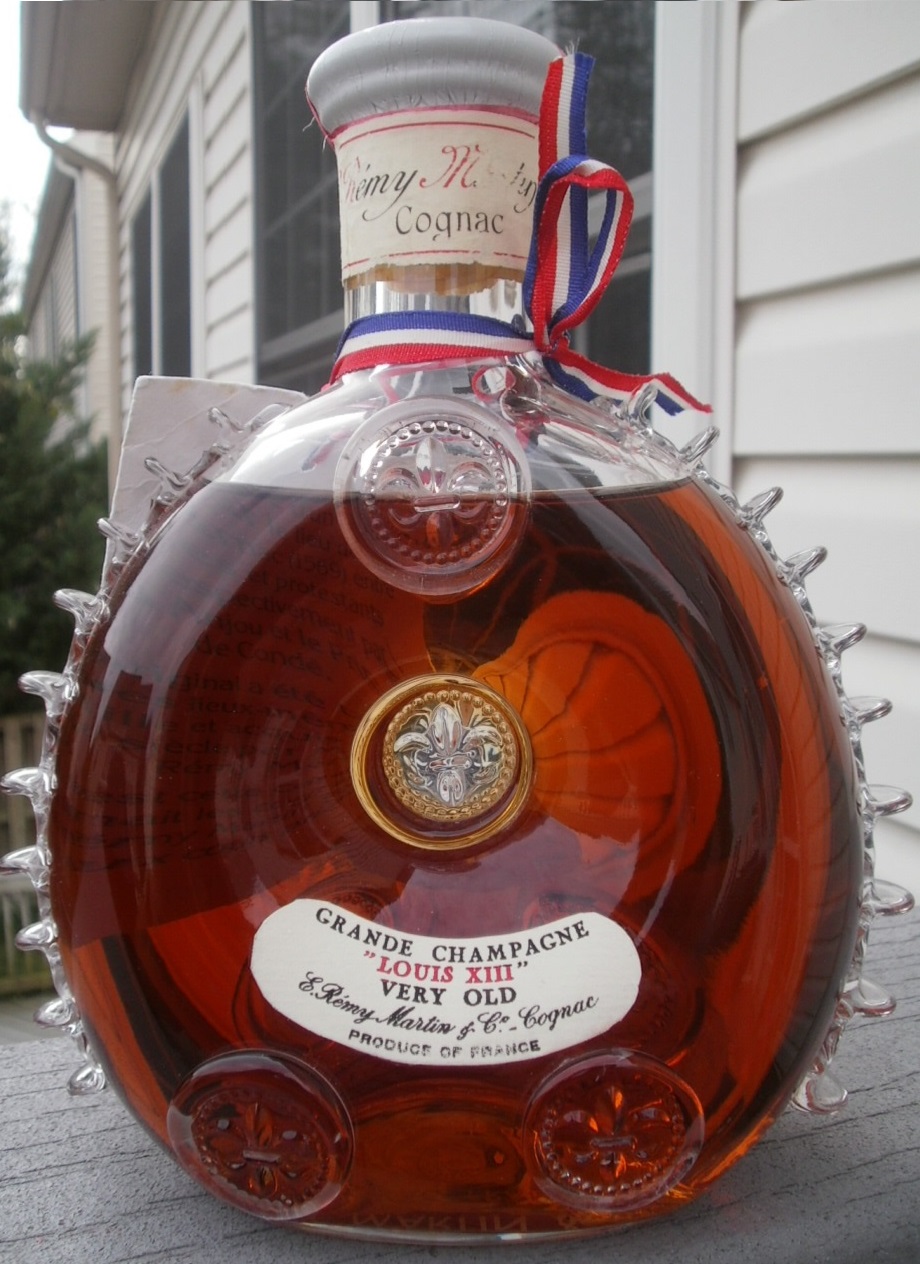 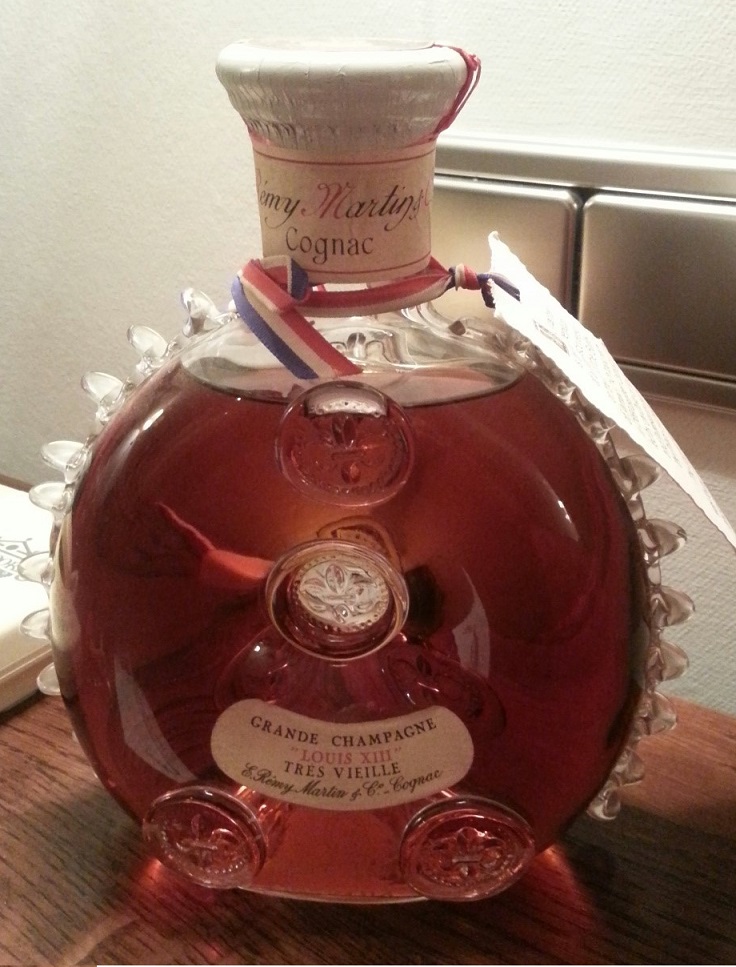 |
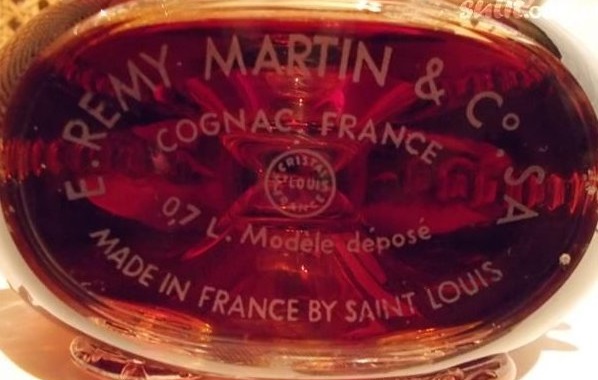 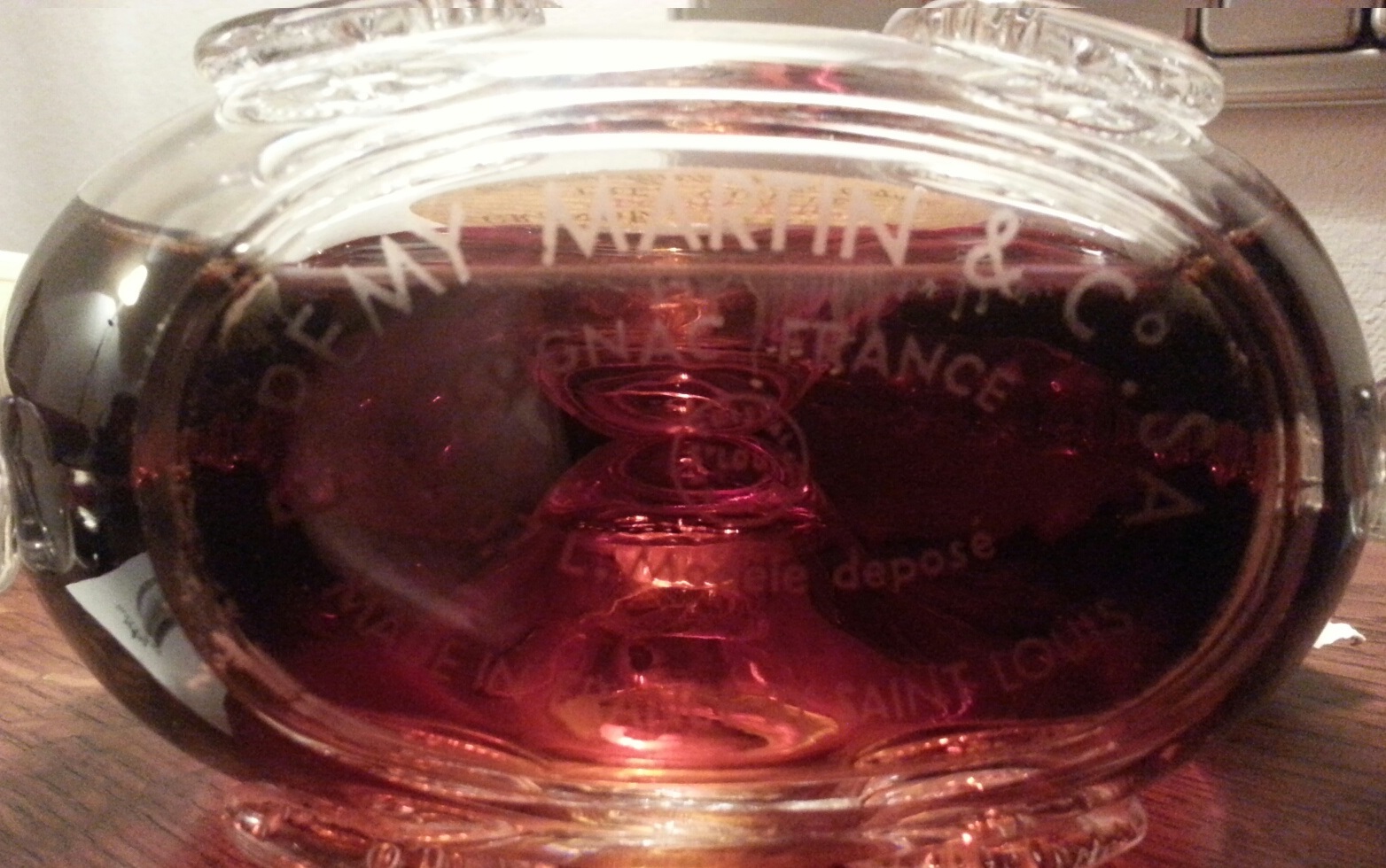 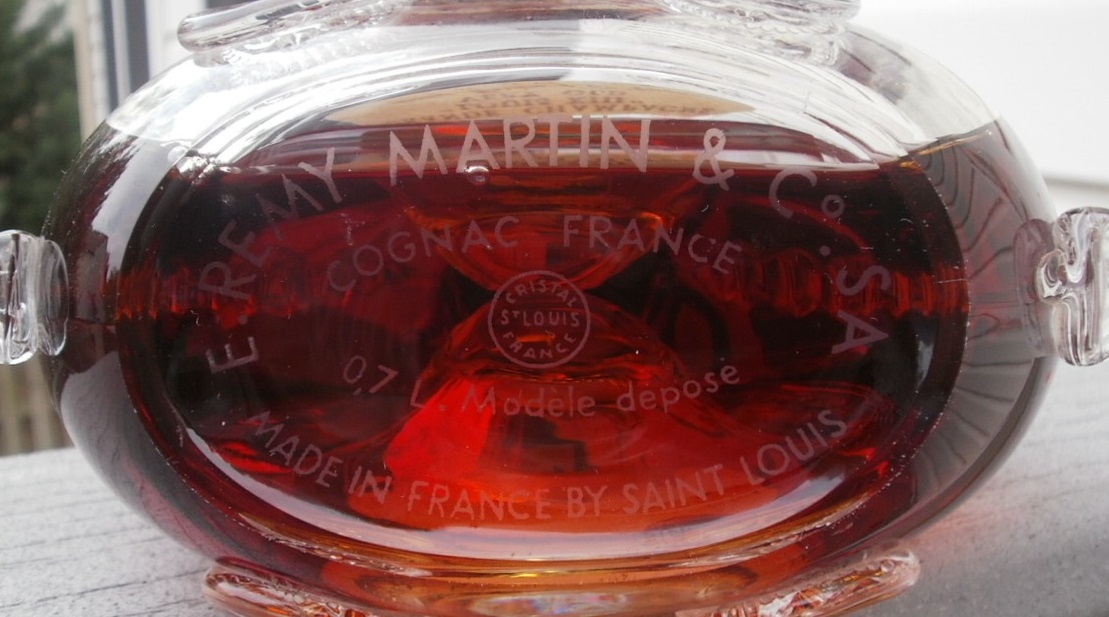 These bottles are crystal and have very modern engraving style. Made by Saint Louis, not Baccarat. |
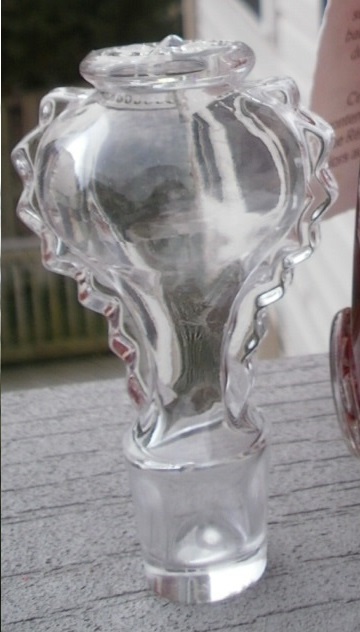 All-crystal stopper |
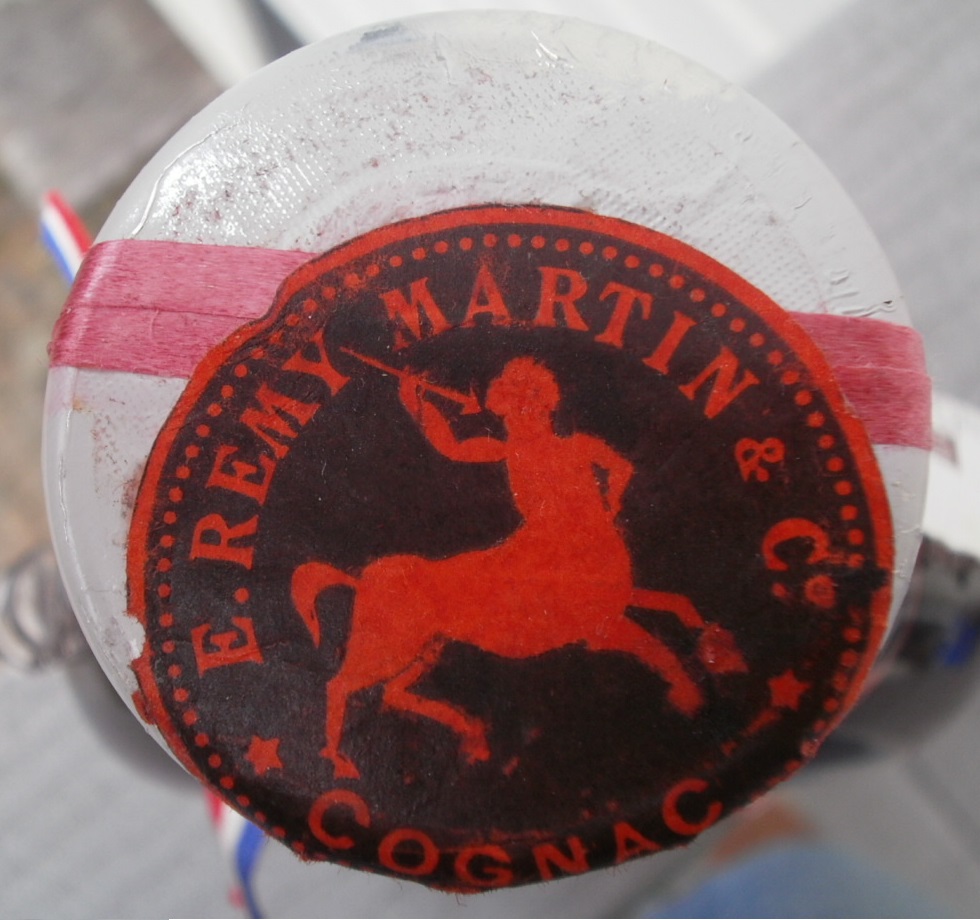 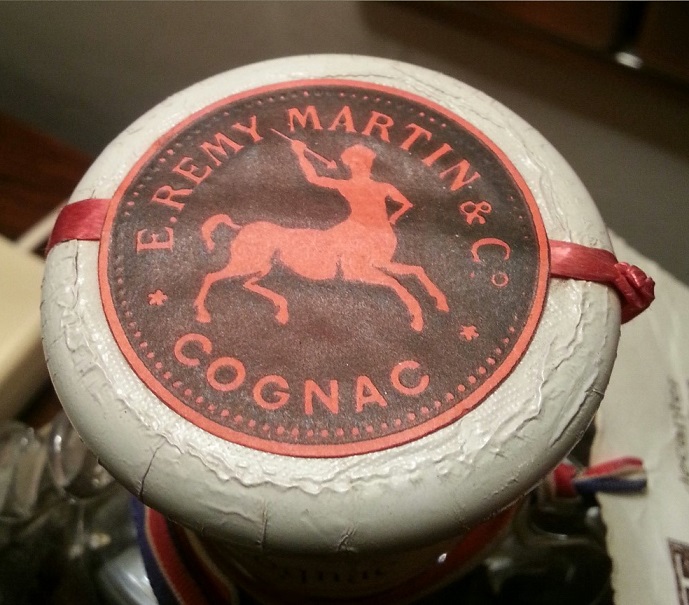 Old Logo - Fat Centaur with spear handle pointing at the "Y" of Remy |
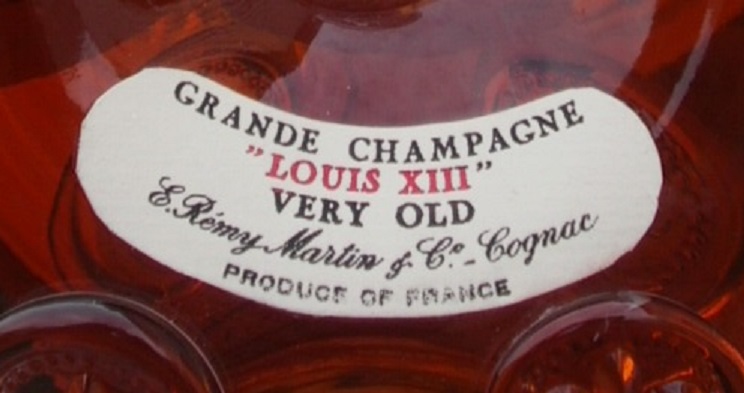 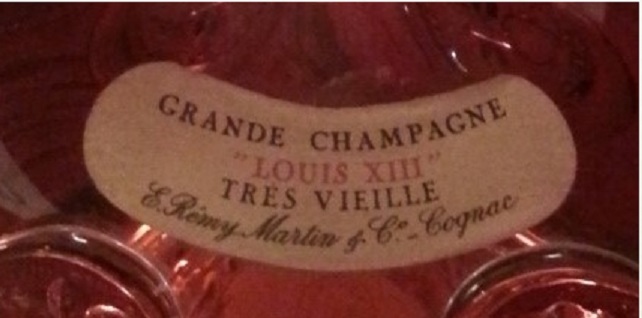 Bean-shaped Label with "Tres Vieille" designation |
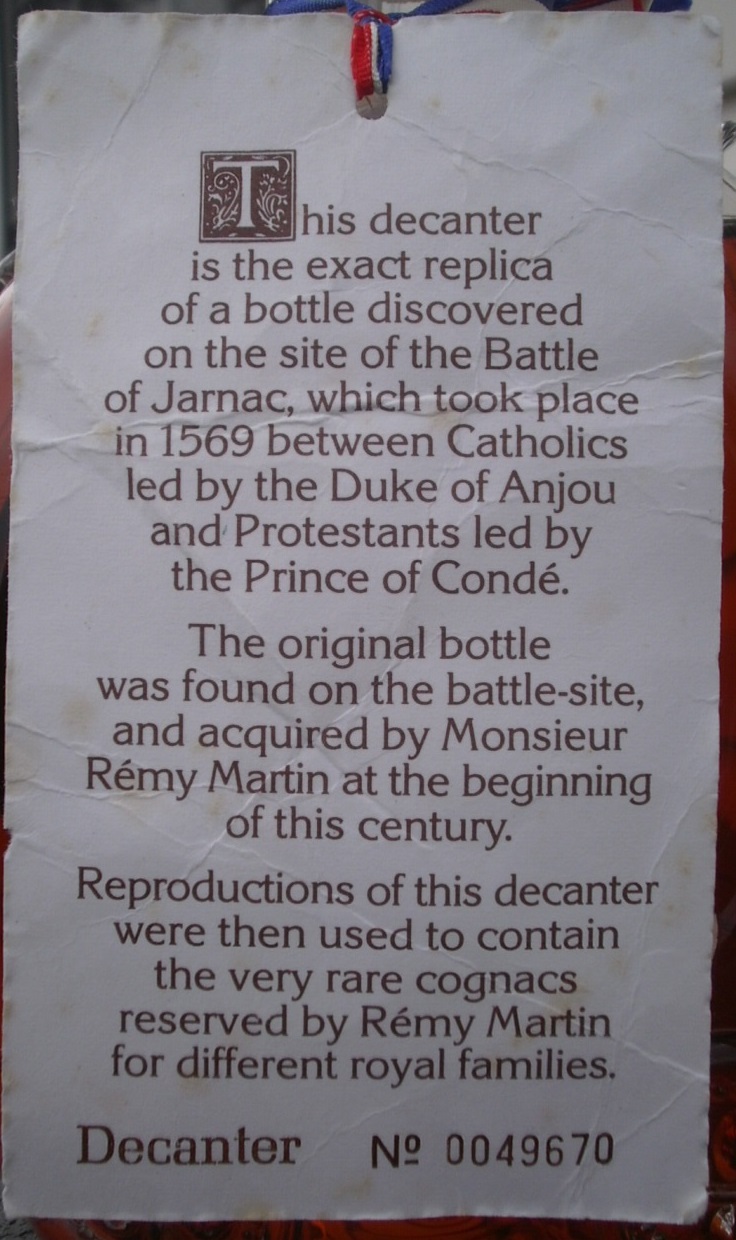 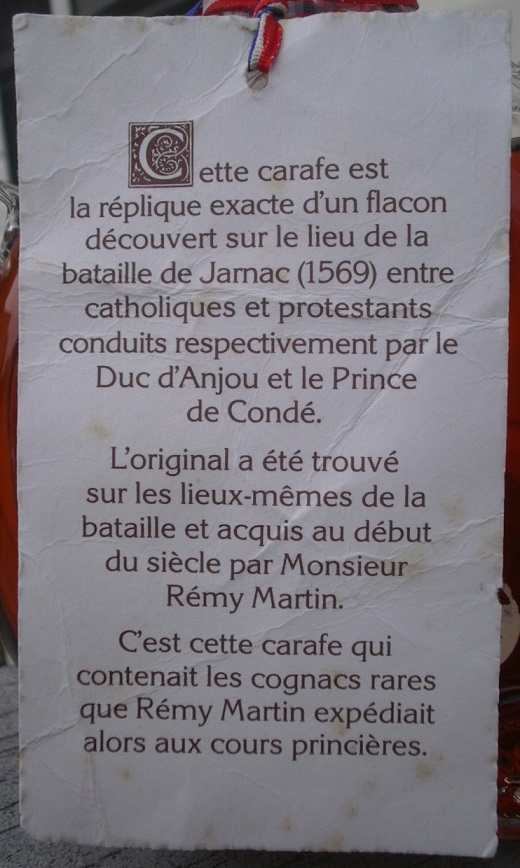 |
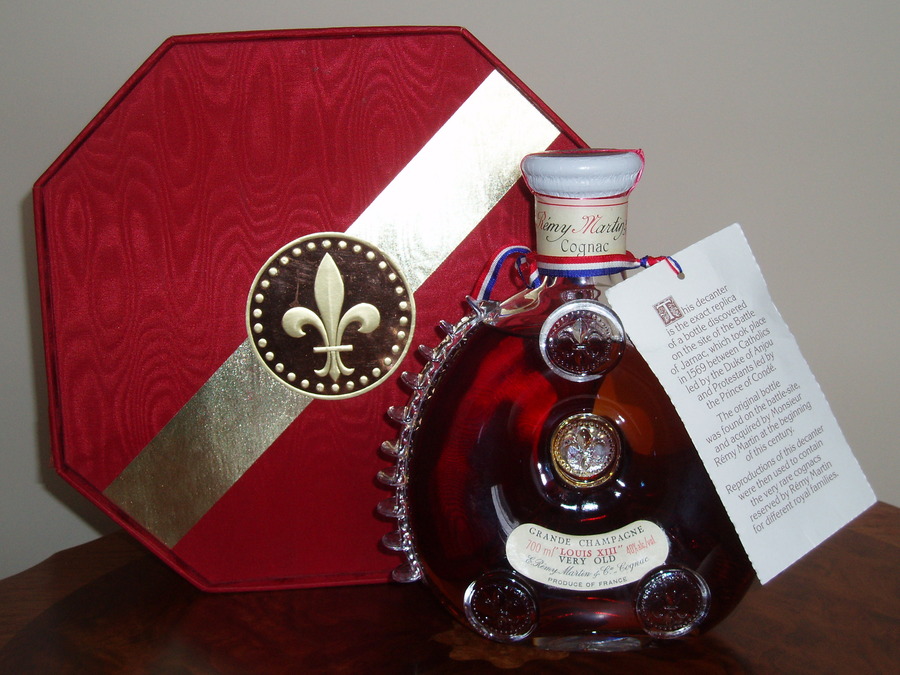 |
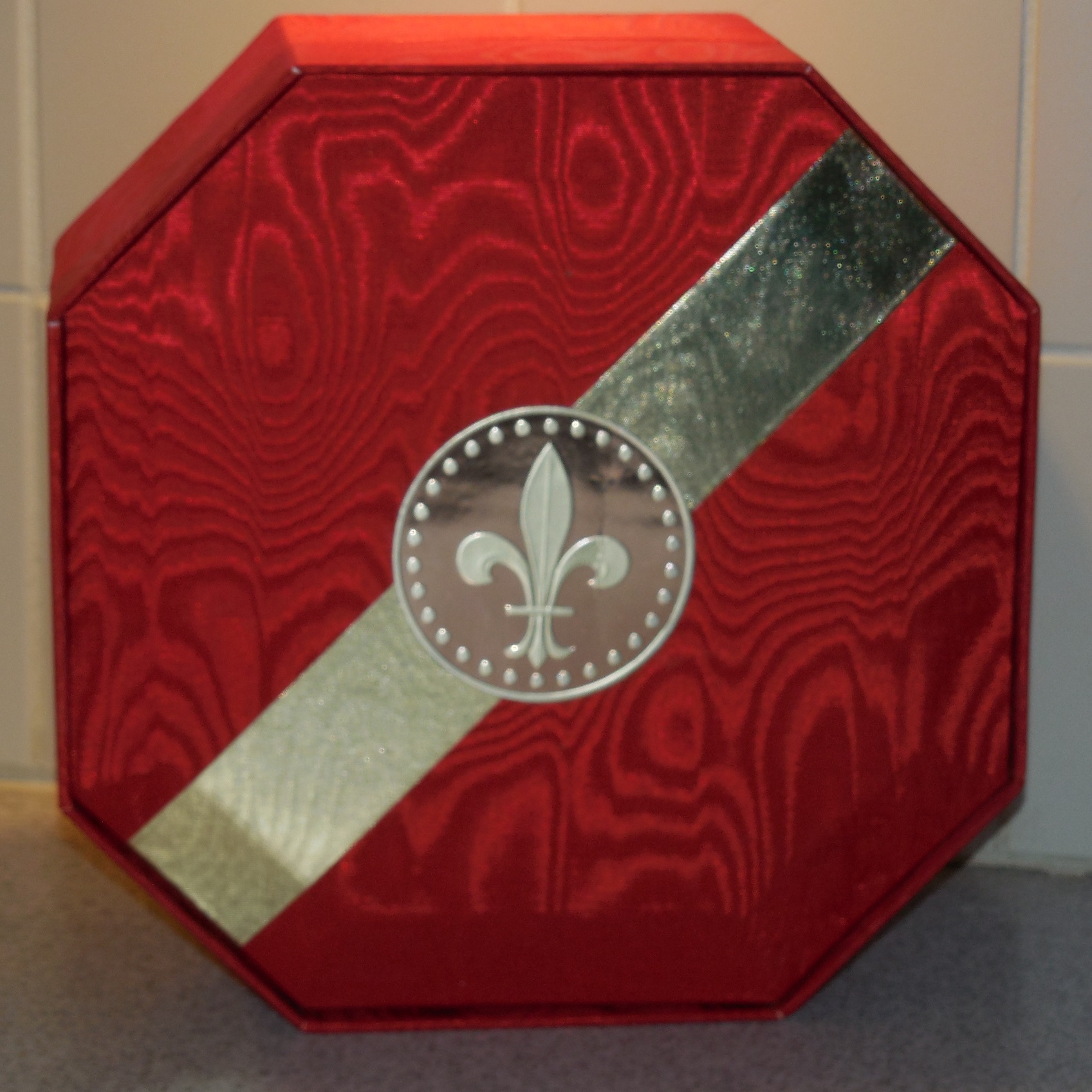 Box identical to the European/USA Baccarat version. |
Saint Louis crystal bottle. 10 fins per side, very regular shape. No numbering. Sold in Octagonal box on the Japanese market in 1970s. Remy Martin indicated that the high demand for Louis XIII cognac on the Asian market in the 1970s exceeded the Baccarat decanter production capacity and they elected to use Saint Louis Cristalleries to produce the bottles for Japan. According to crystal collectors these decanters are poor quality. Stopper does not fit properly. |
| 1981 ASIA |
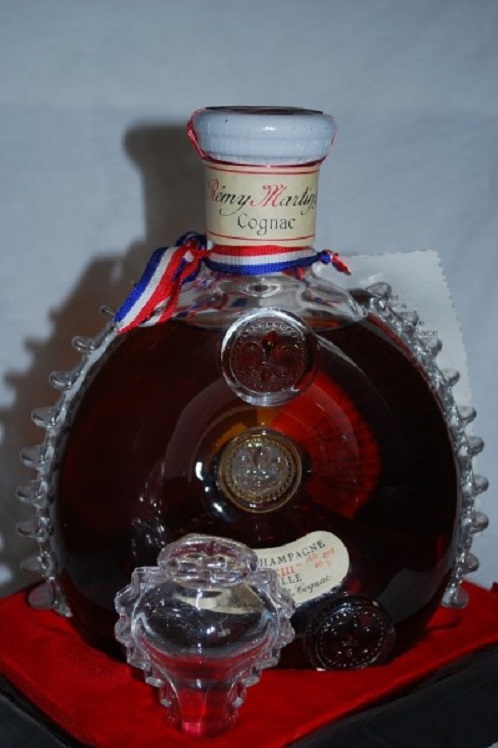 |
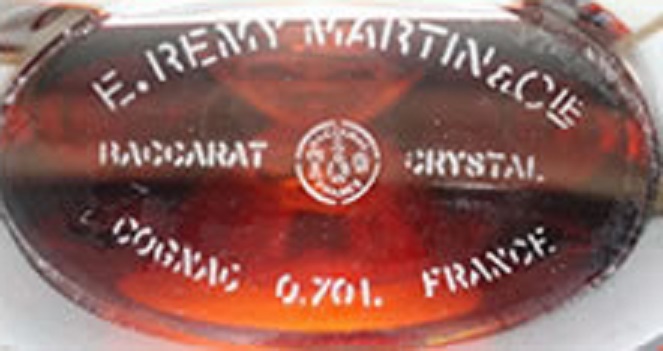 The newer layout is used under most of these bottles: Logo in center. |
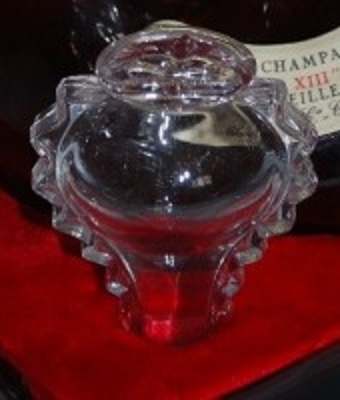 Standard hollow crystal stopper - Not numbered. |
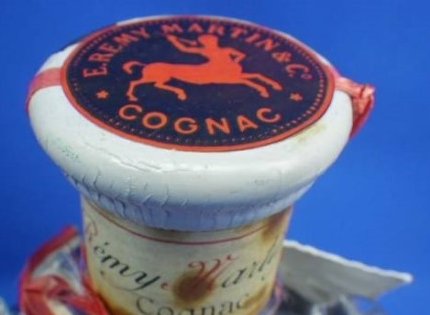 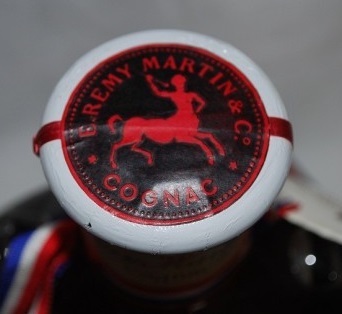 Classic Centaure seal label. |
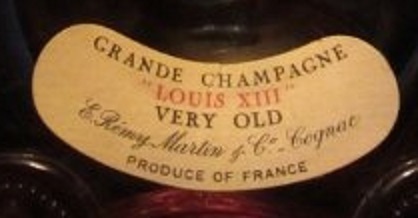 Bean-shaped Grand Champagne - Very Old Both French and English version exist. |
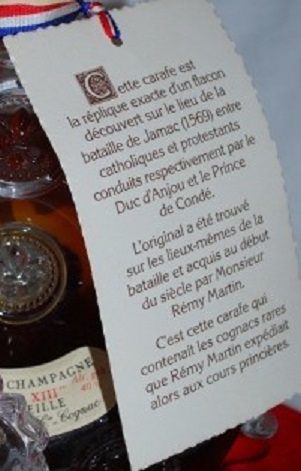 Battle of Jarnac Cards as on 1970s bottles. |
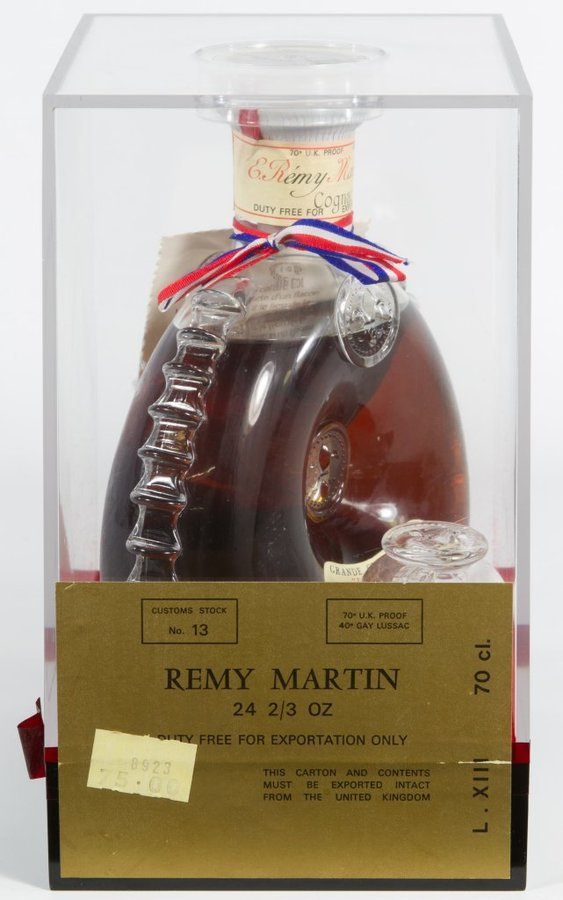 A lot of these bottles were sold in Duty-Free shops. |
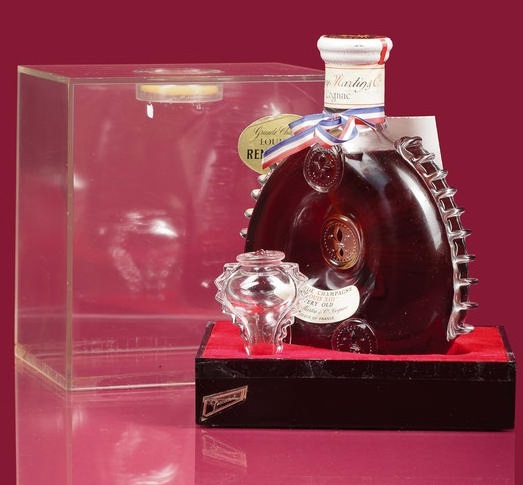 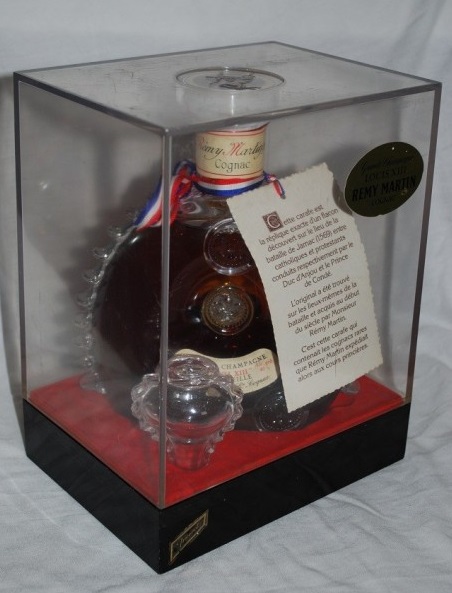 |
These plexiglass cases were produced for Remy Martin in the early 1980s to house the last remaining stock of "white-top" bottles after Remy Martin switched to the new gold-top design. The bottles are identical to the last ones sold in octagonal boxes in 1979. Some of the bottles may have been Saint Louis Crystal and a few had nine fins instead of ten. These were sold mostly in duty free shops throughout Asia. |
| 1979 TO 2002 |
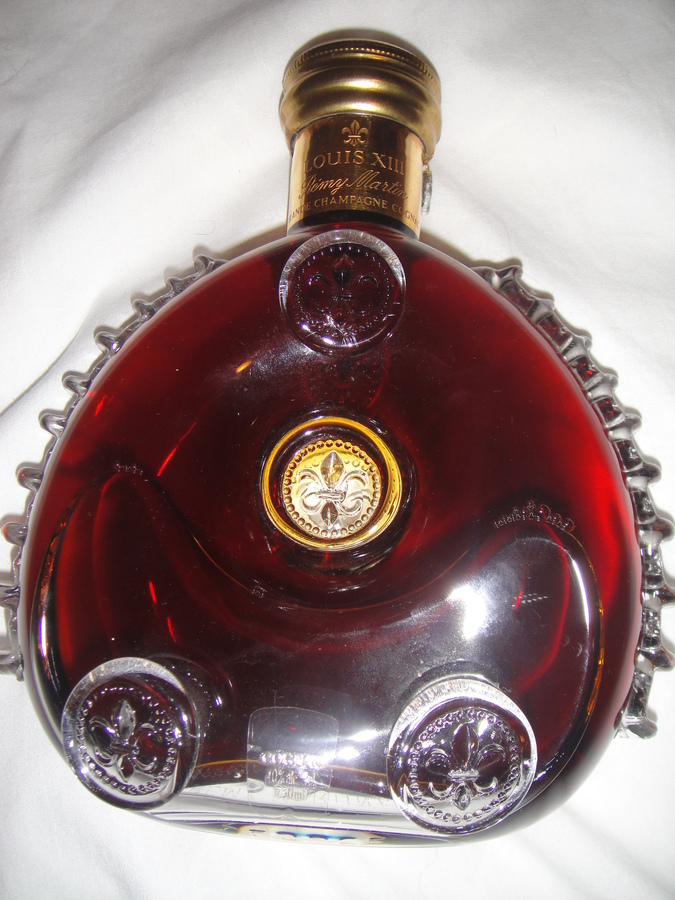 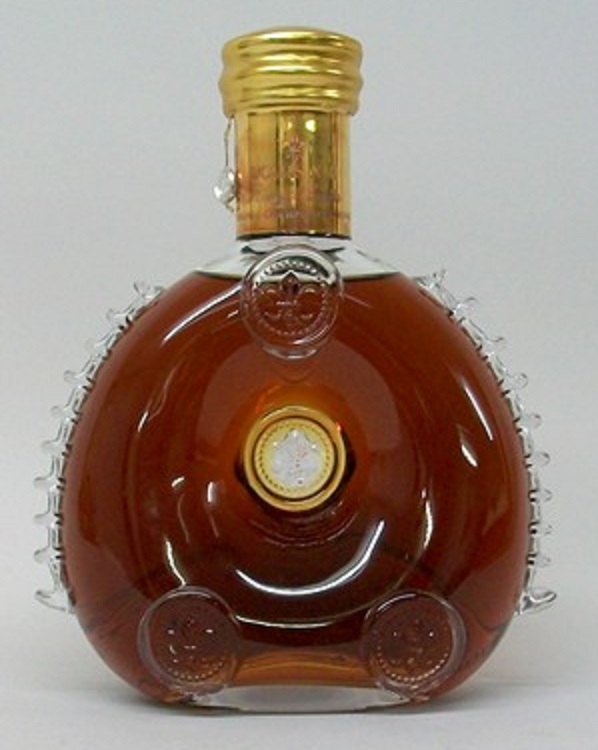 |
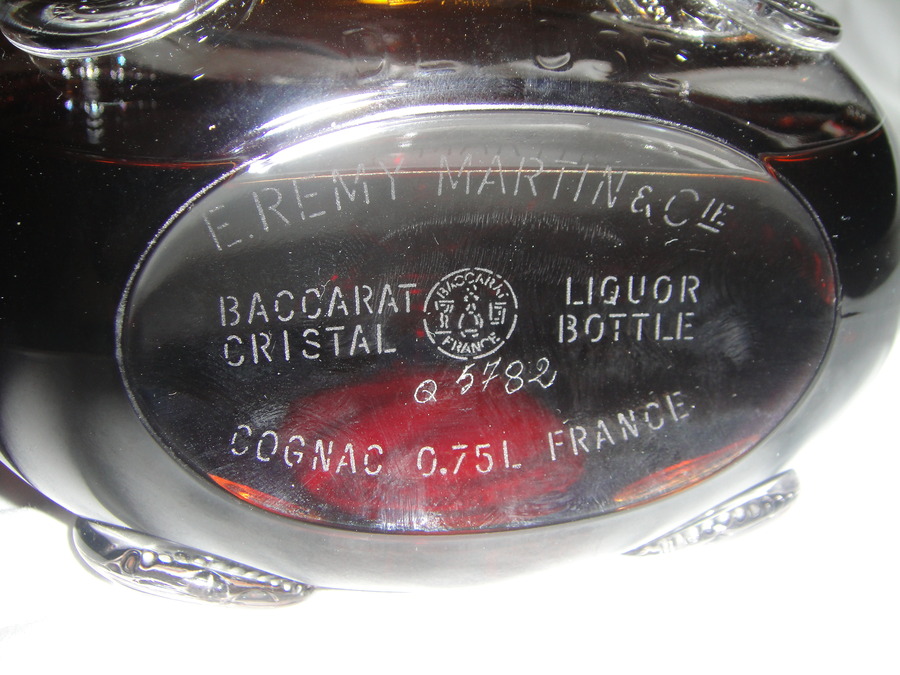 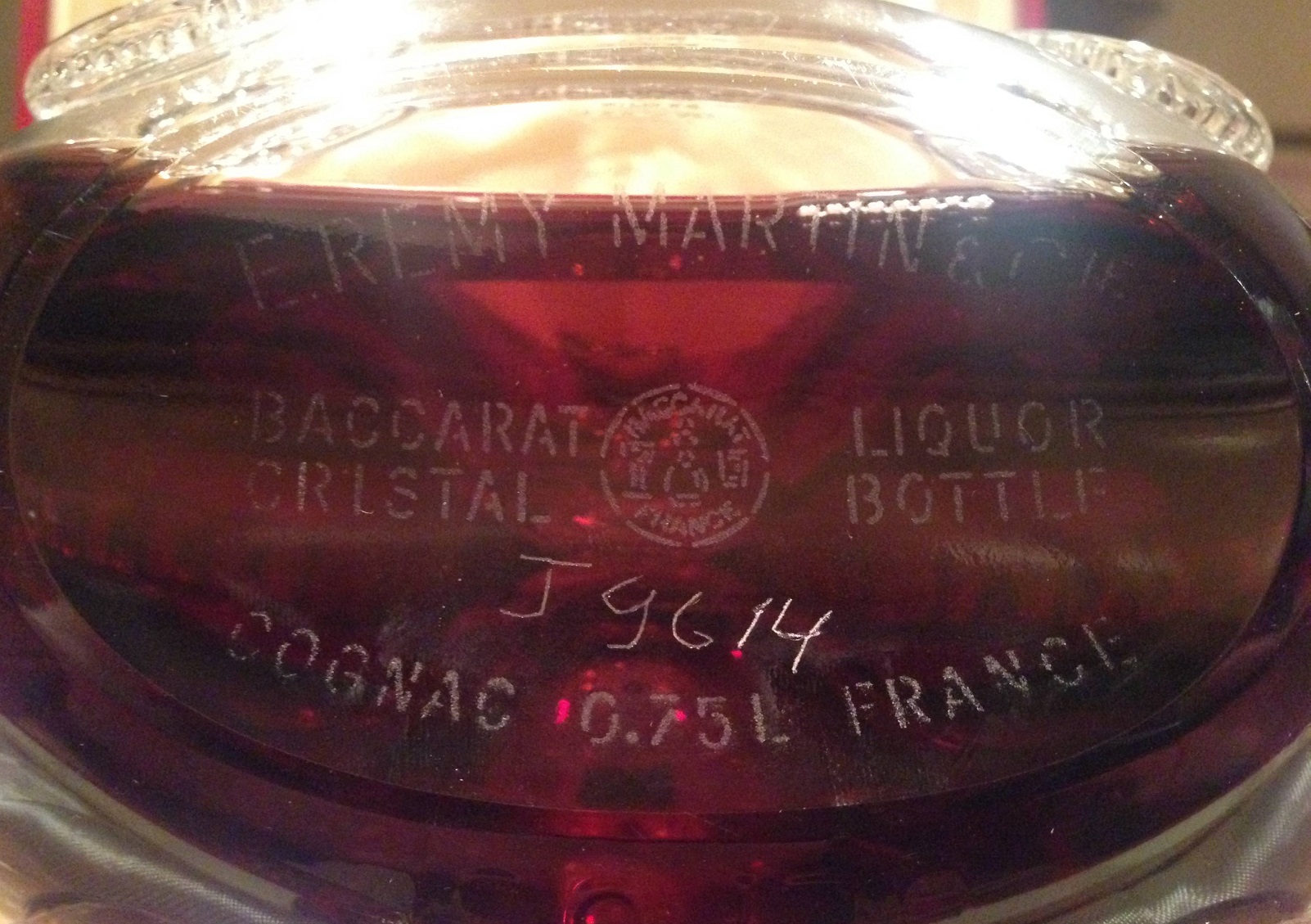 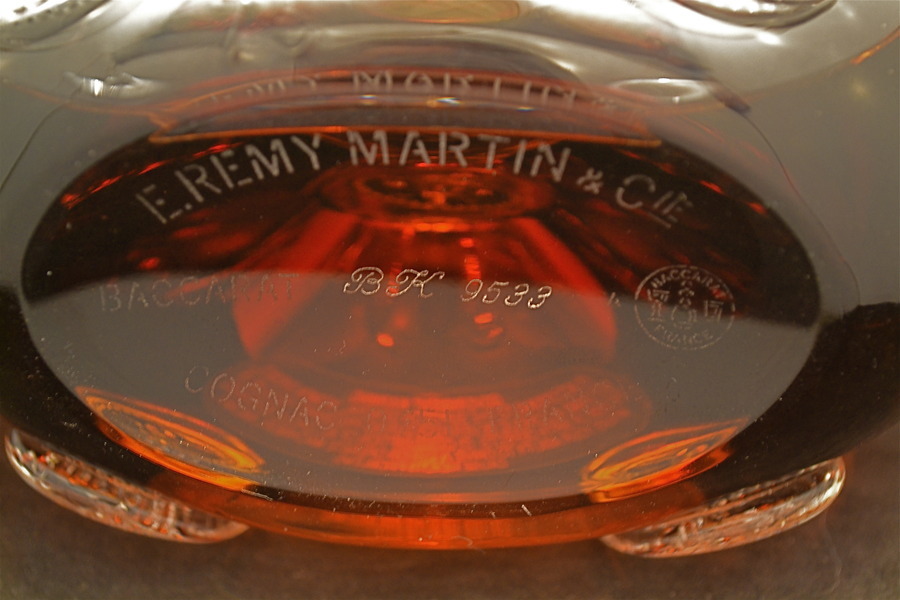 New design: Logo between "Baccarat Cristal" and "Liquor Bottle". Bottles are numbered again. Early bottles are hand engraved while later bottles are machine engraved. Numbering includes 1 or 2 letters + 4 digits. |
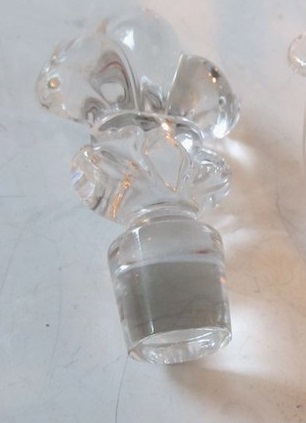 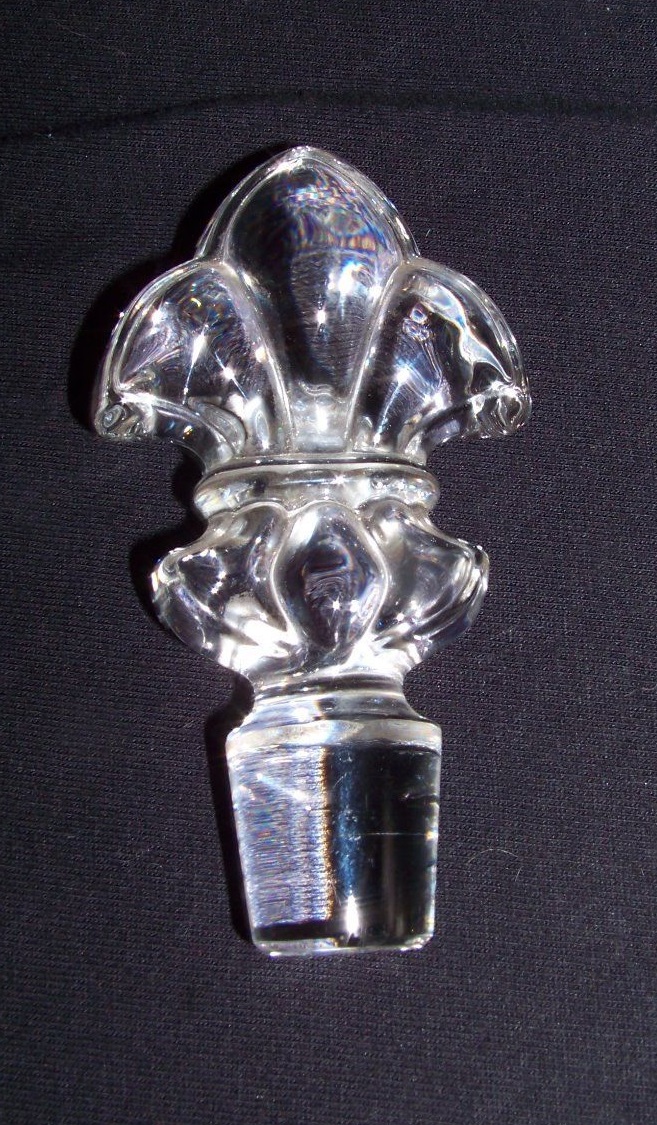 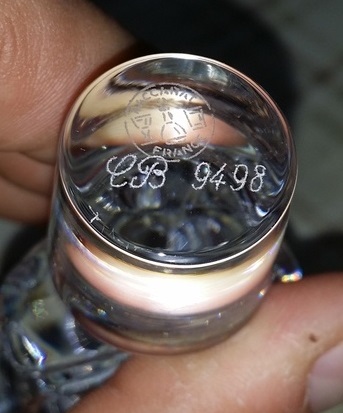 New "Fleur-de-Lys" solid core stopper. Numbered |
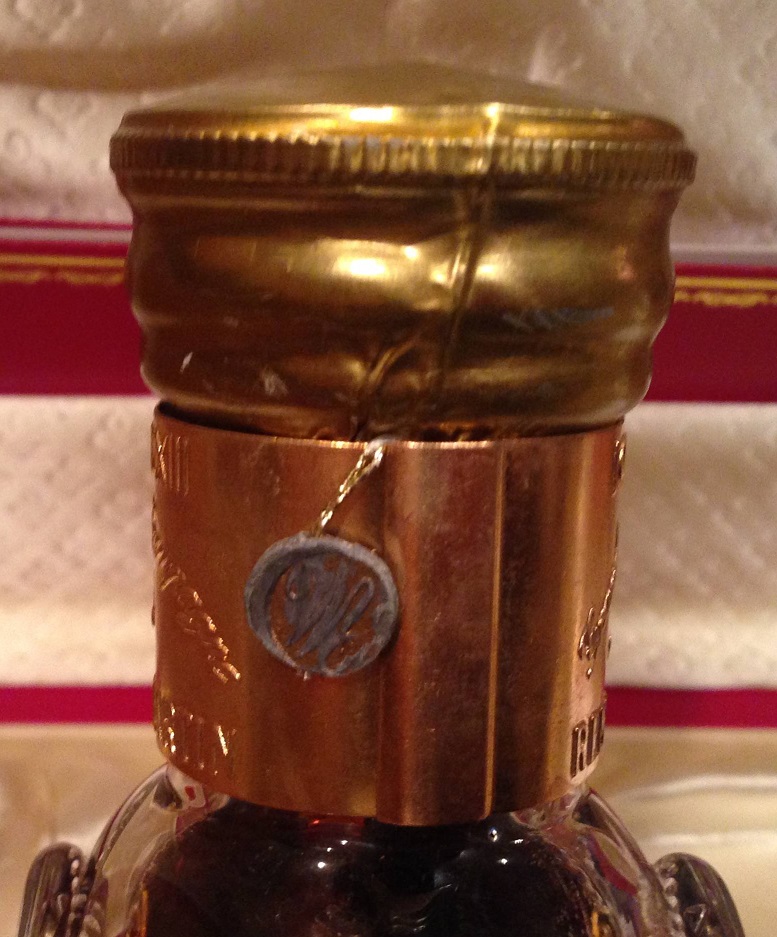 Older type gold seal 1980-1989 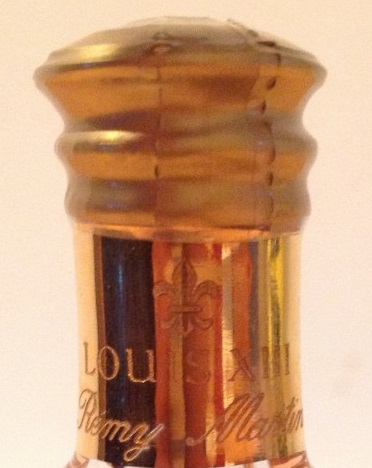 Newer type gold seal 1990 and later 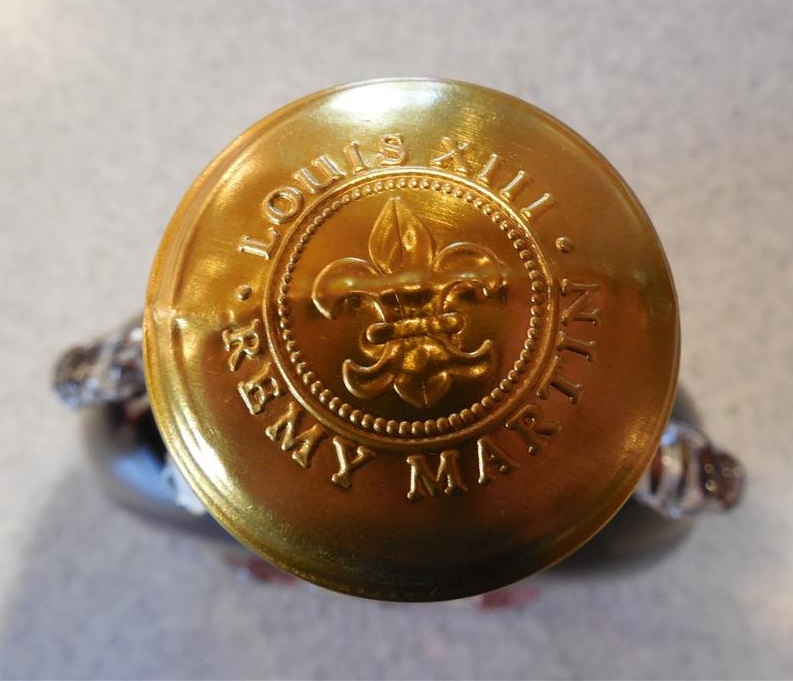 Gold capsule with stamped metal cap over cork. |
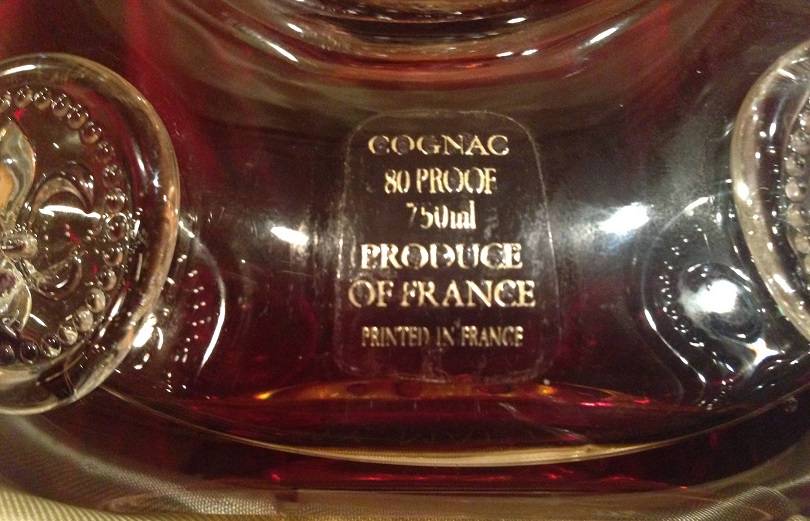 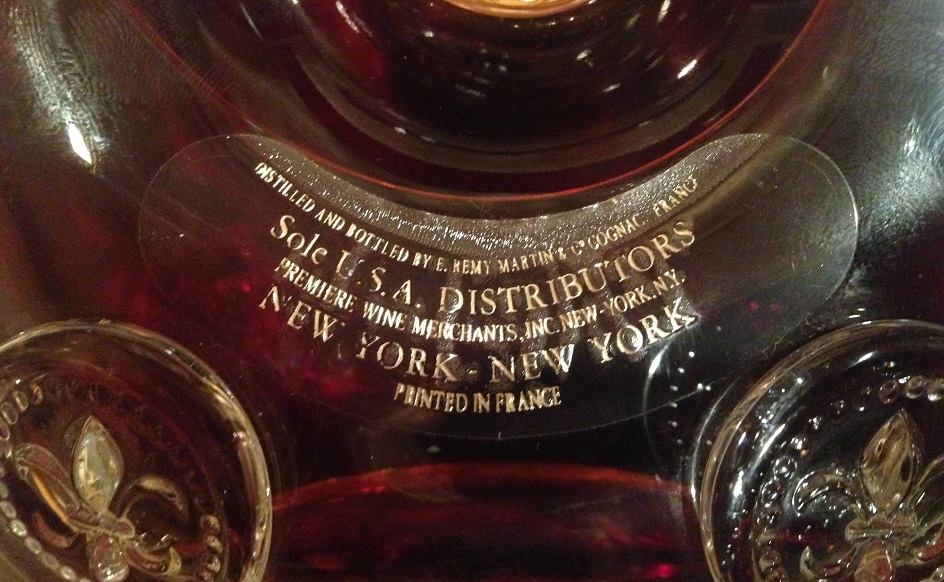 New style bottles no longer use paper labels but clear plastic decals with gold lettering for content and importer. |
There are no hanging tags or cards on these newer bottles | 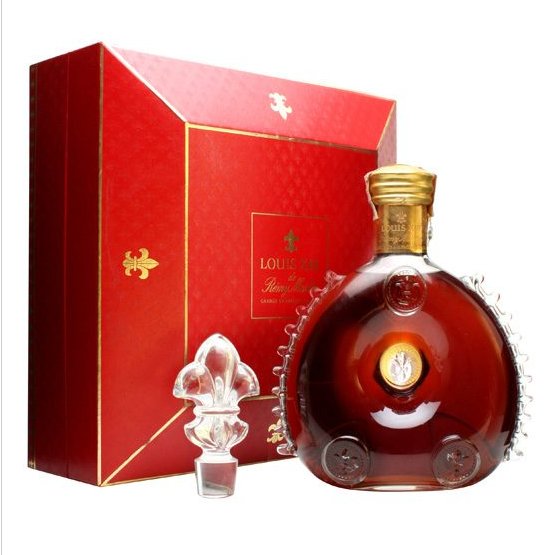 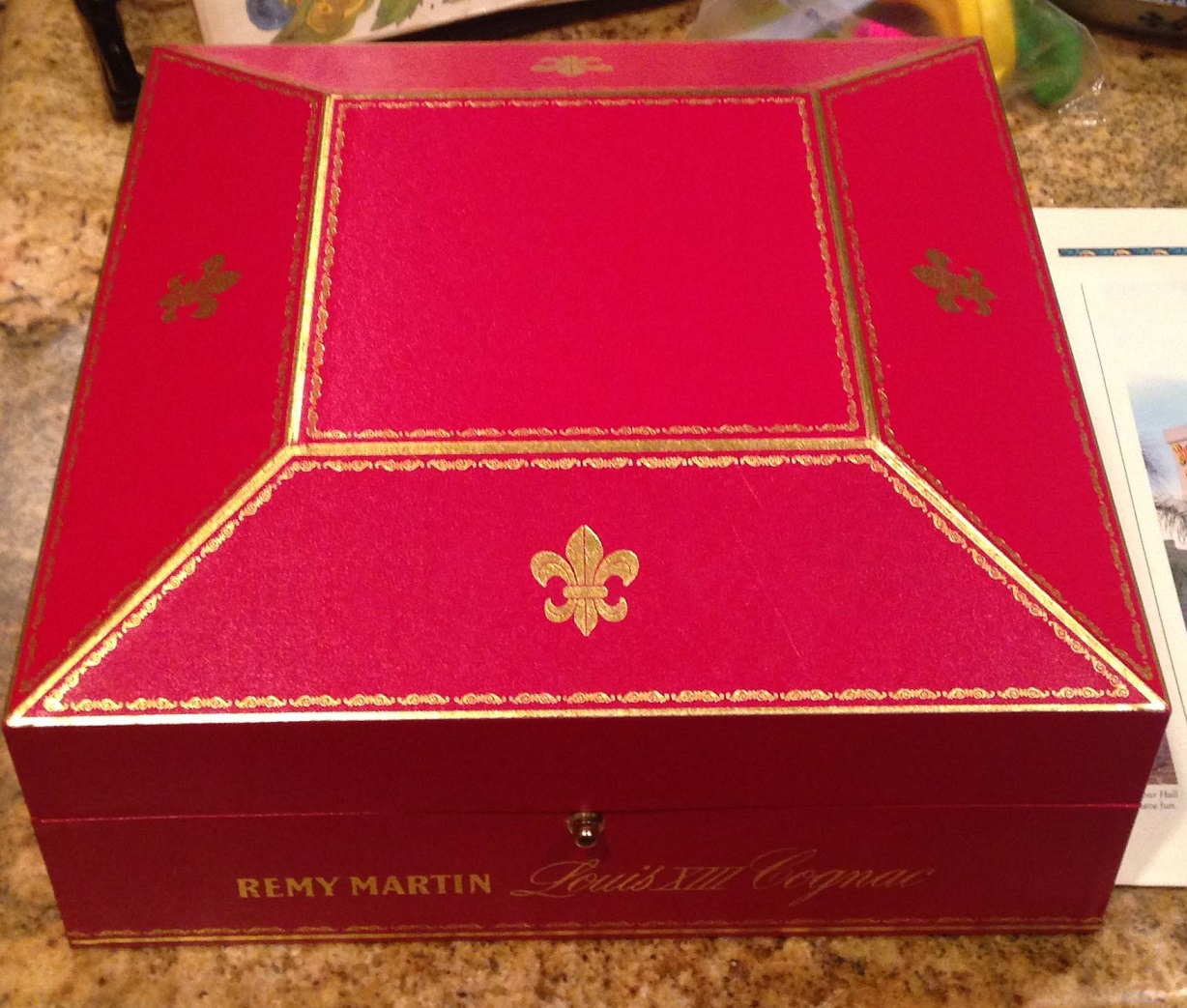 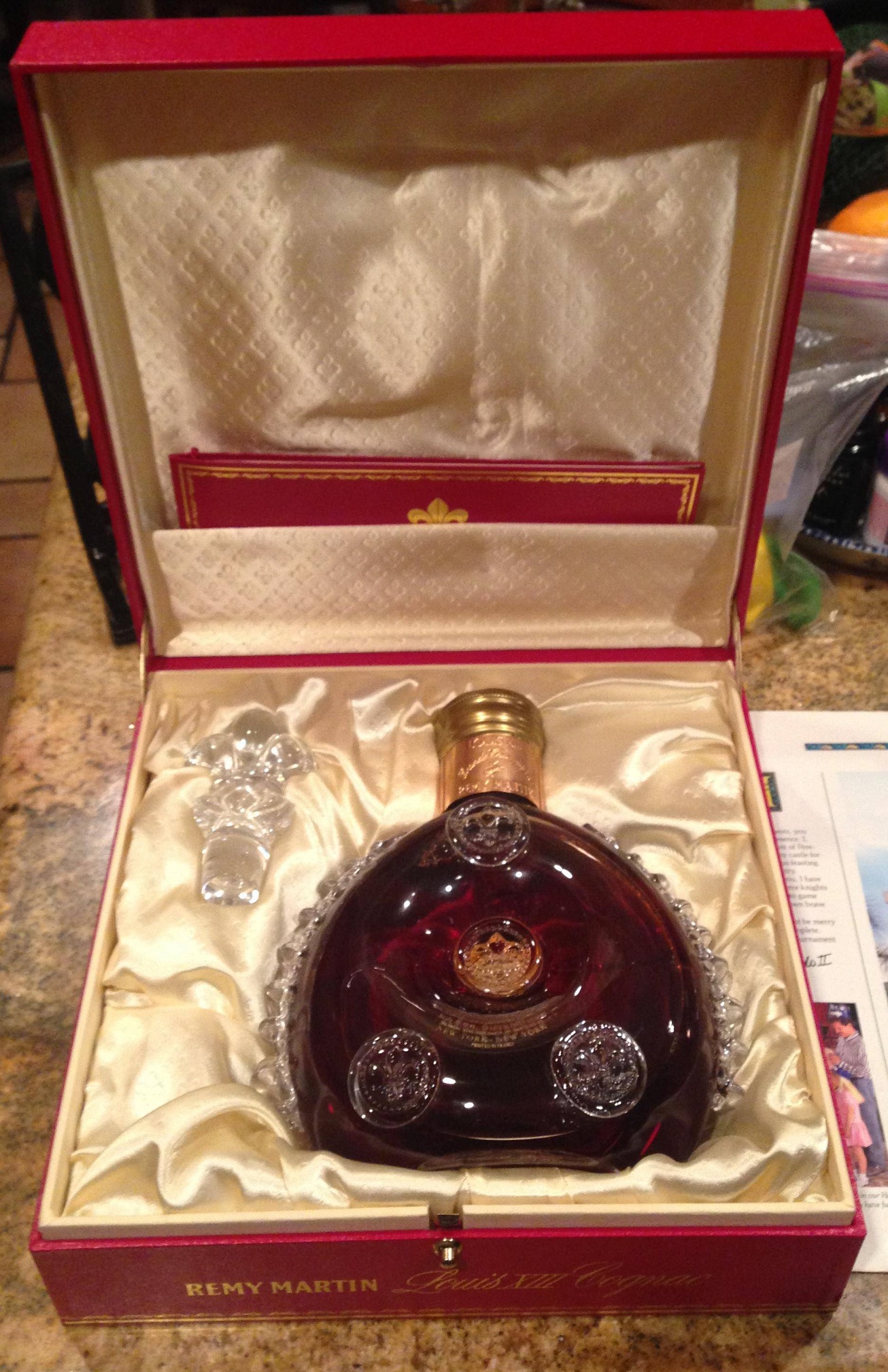 |
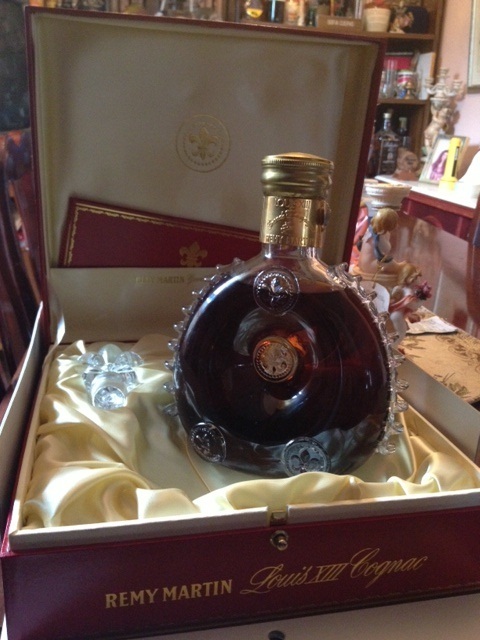 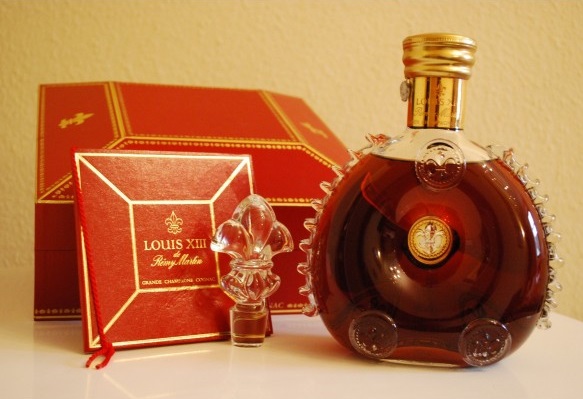 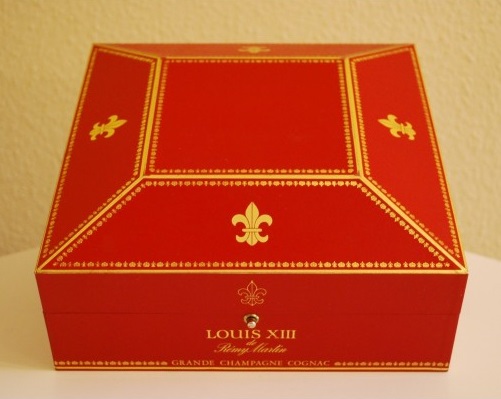 |
The "gold top" bottles replace the classic white seals bottle. The hanging tag cards have been dropped. Red square box with truncated pyramid lid and gold lettering replaces octagonal box. Bottles & stoppers are again numbered. This generation of bottles was produced by Baccarat and Saint Louis. The Saint Louis version is seldom seen on the US and European markets so it is likely an Asian Export market product but it does exist. This version of the Louis XIII cognac runs from 1980 to 2002 far eclipsing all other types in longevity. With only minor cosmetic alterations the 1999 "Rendez-Vous 2000" and the "Celebrate 2000" special editions are still the same design. |
| 1999 | 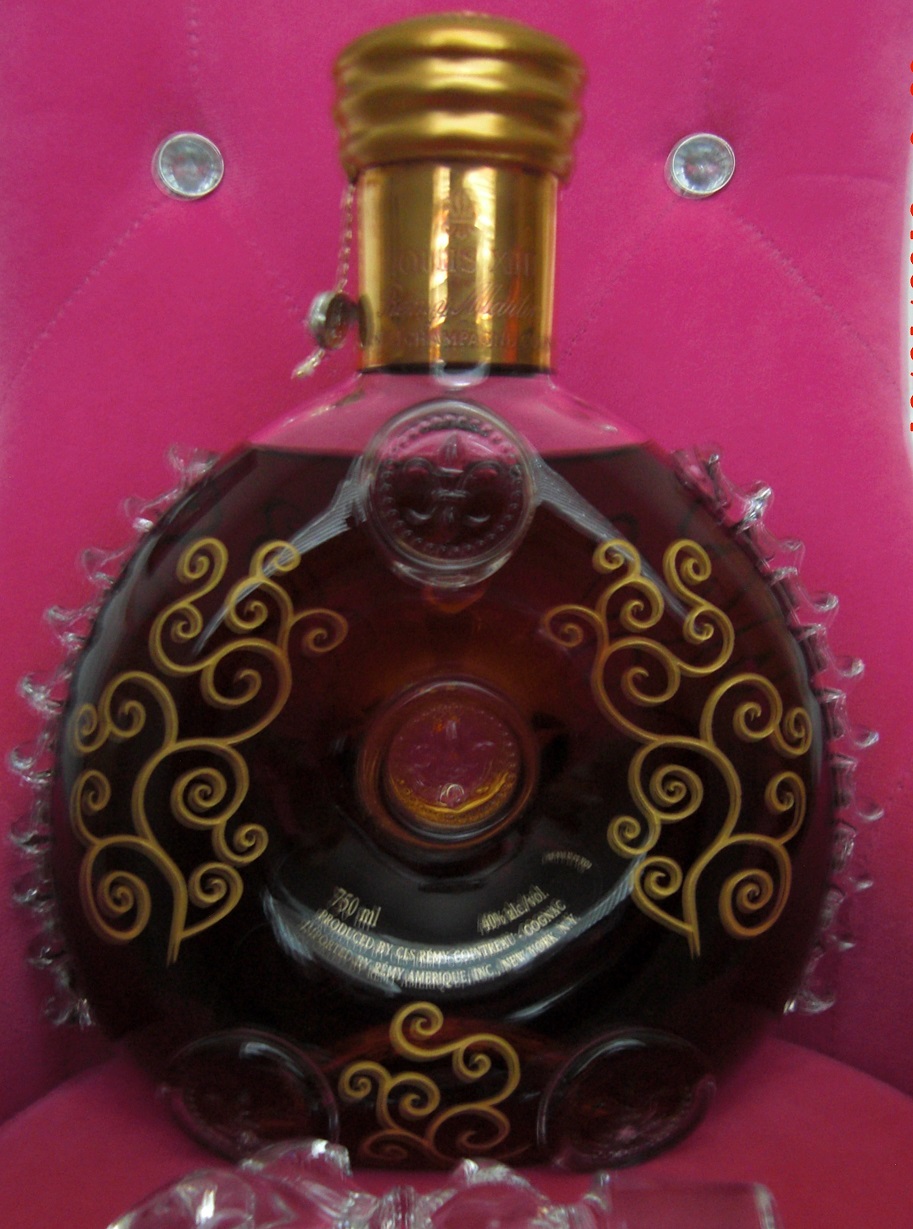 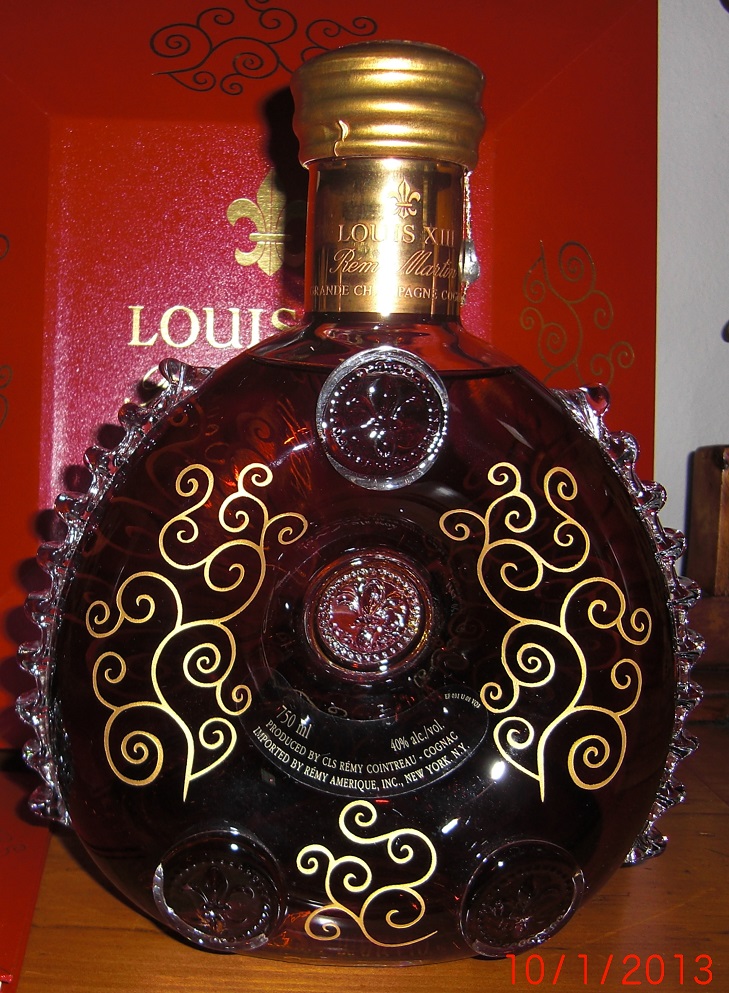 Special Edition RENDEZ VOUS 2000 |
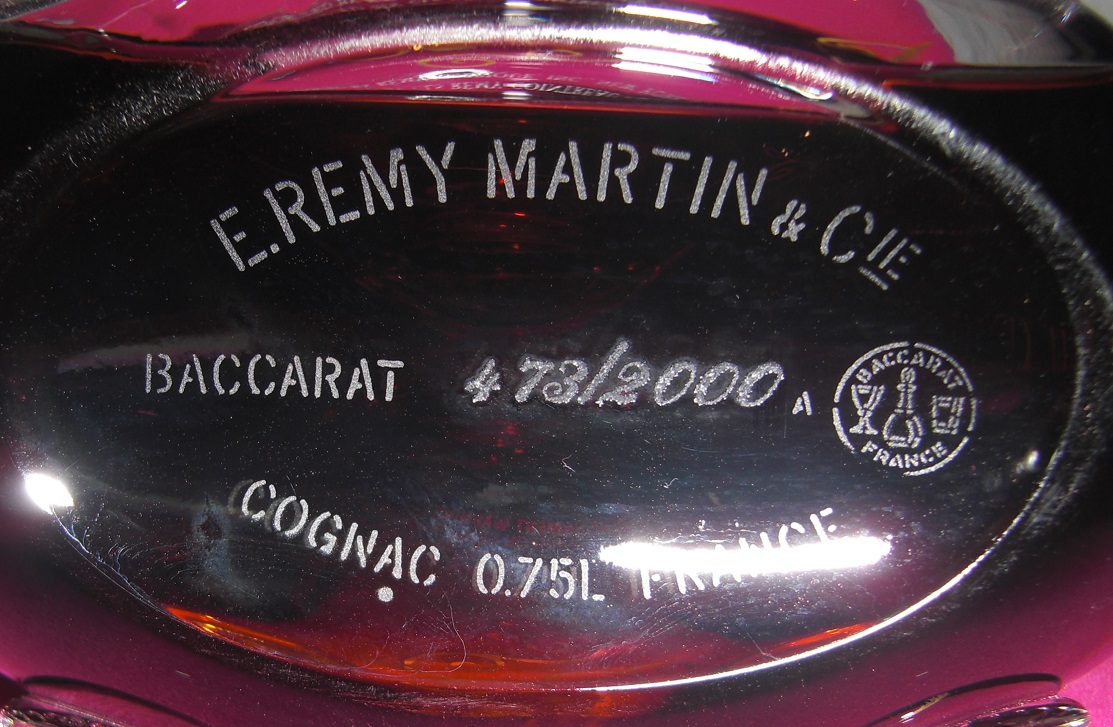 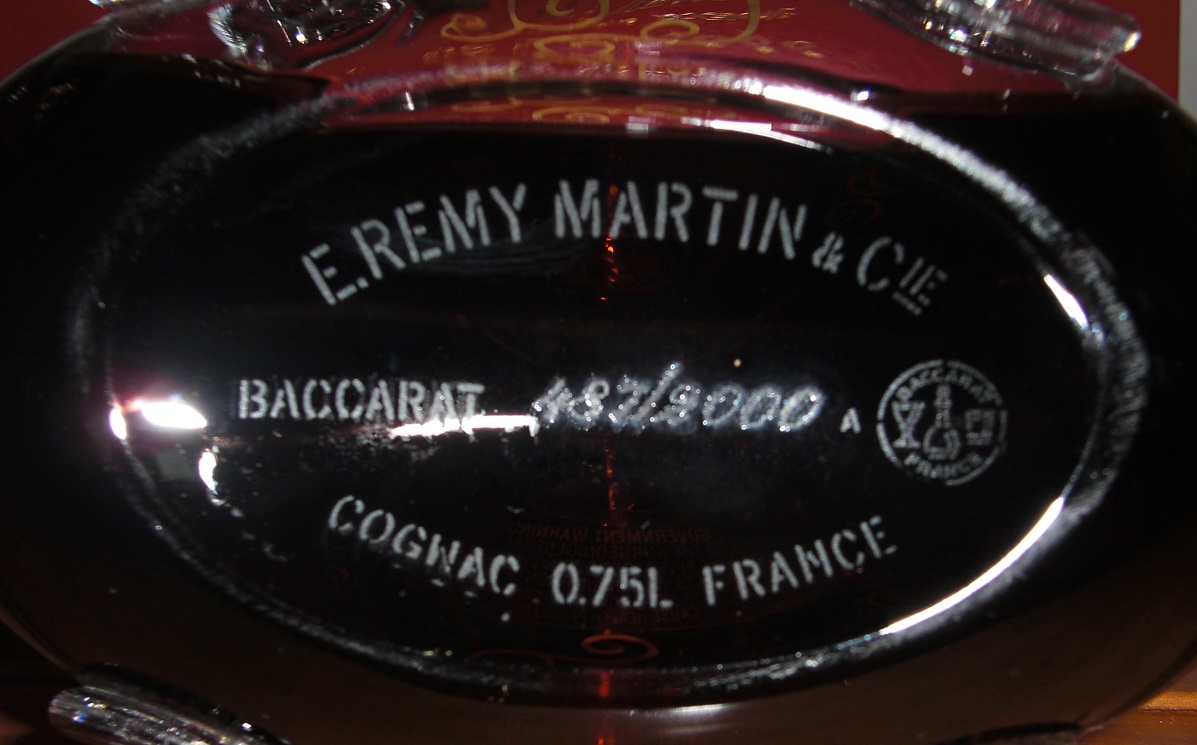 Special markings: Baccarat + Decanter number / 2000 A + Logo indicating a limited series of 2000 bottles - machine engraving. Bottle size 0.75 L also engraved. |
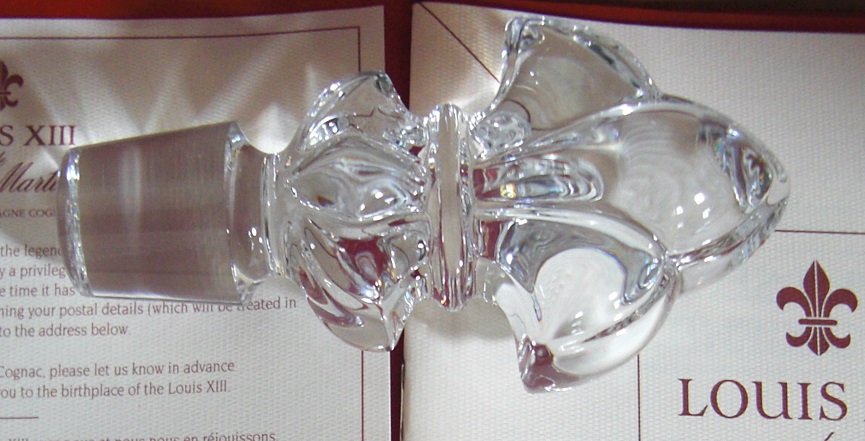 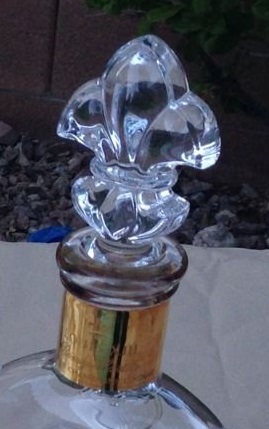 "Fleur-de-Lys" solid core stopper. This stopper IS NOT Numbered. |
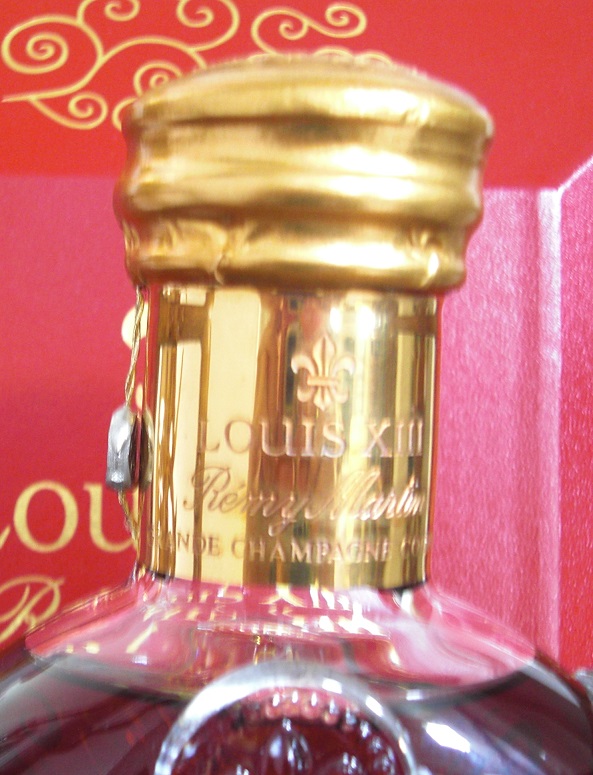 Gold capsule with stamped metal cap over cork |
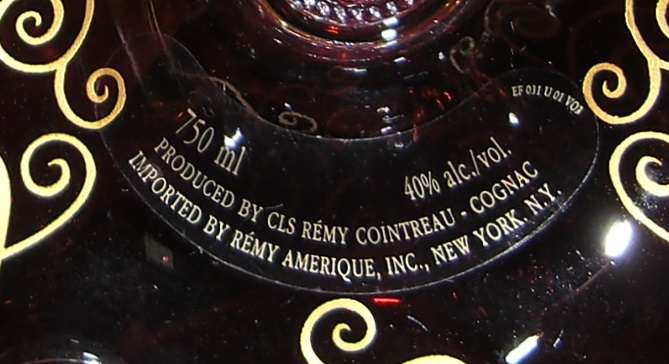 Clear plastic decal with gold lettering for importer - Remy-Cointreau now imports its own Cognac to the United States via Remy Amerique Inc. |
There are no hanging tags or cards on these newer bottles | 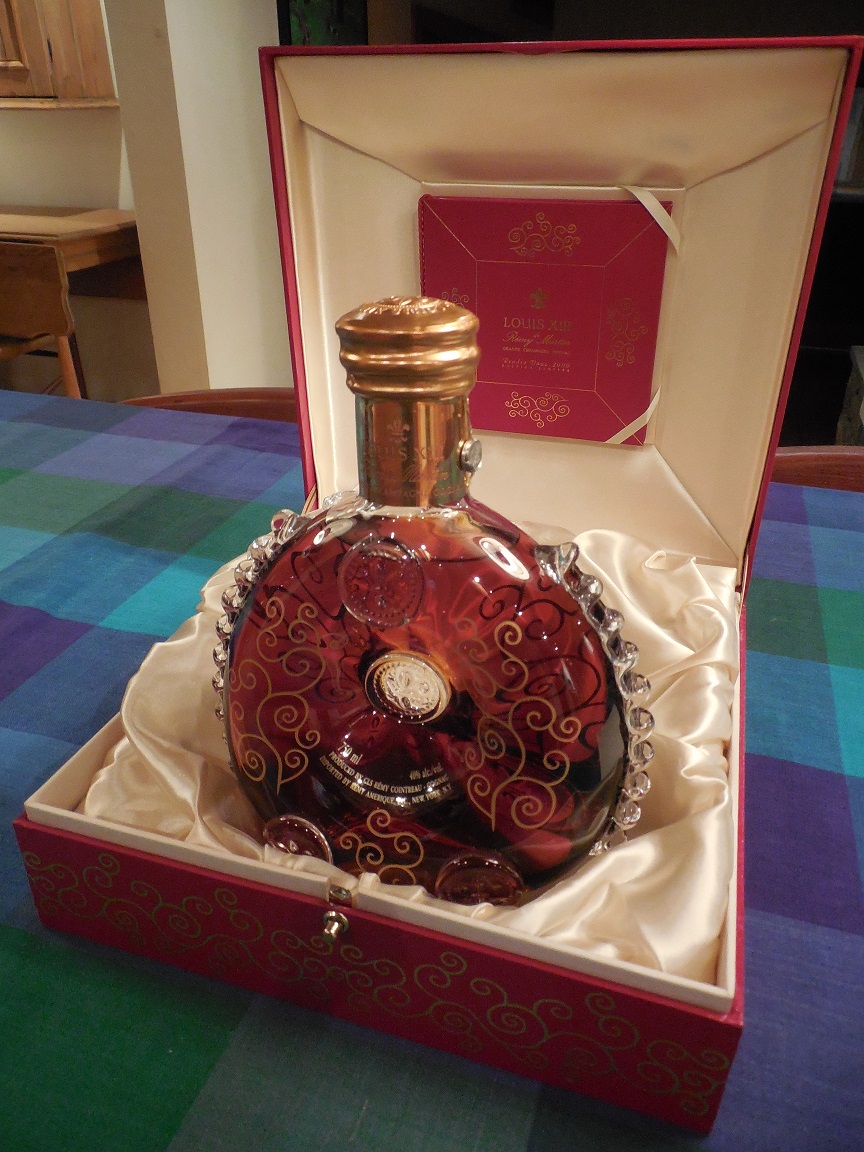 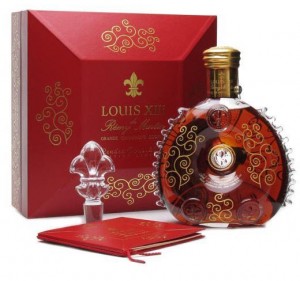 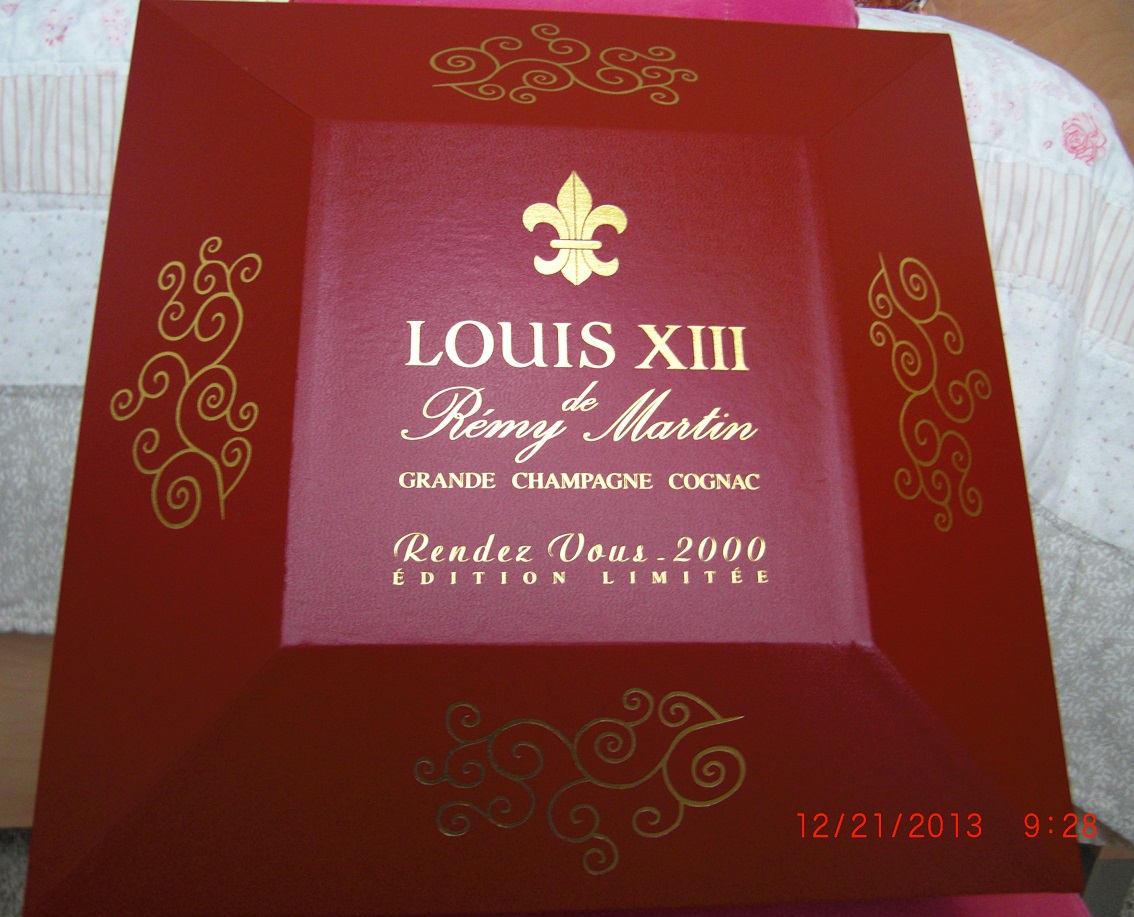 |
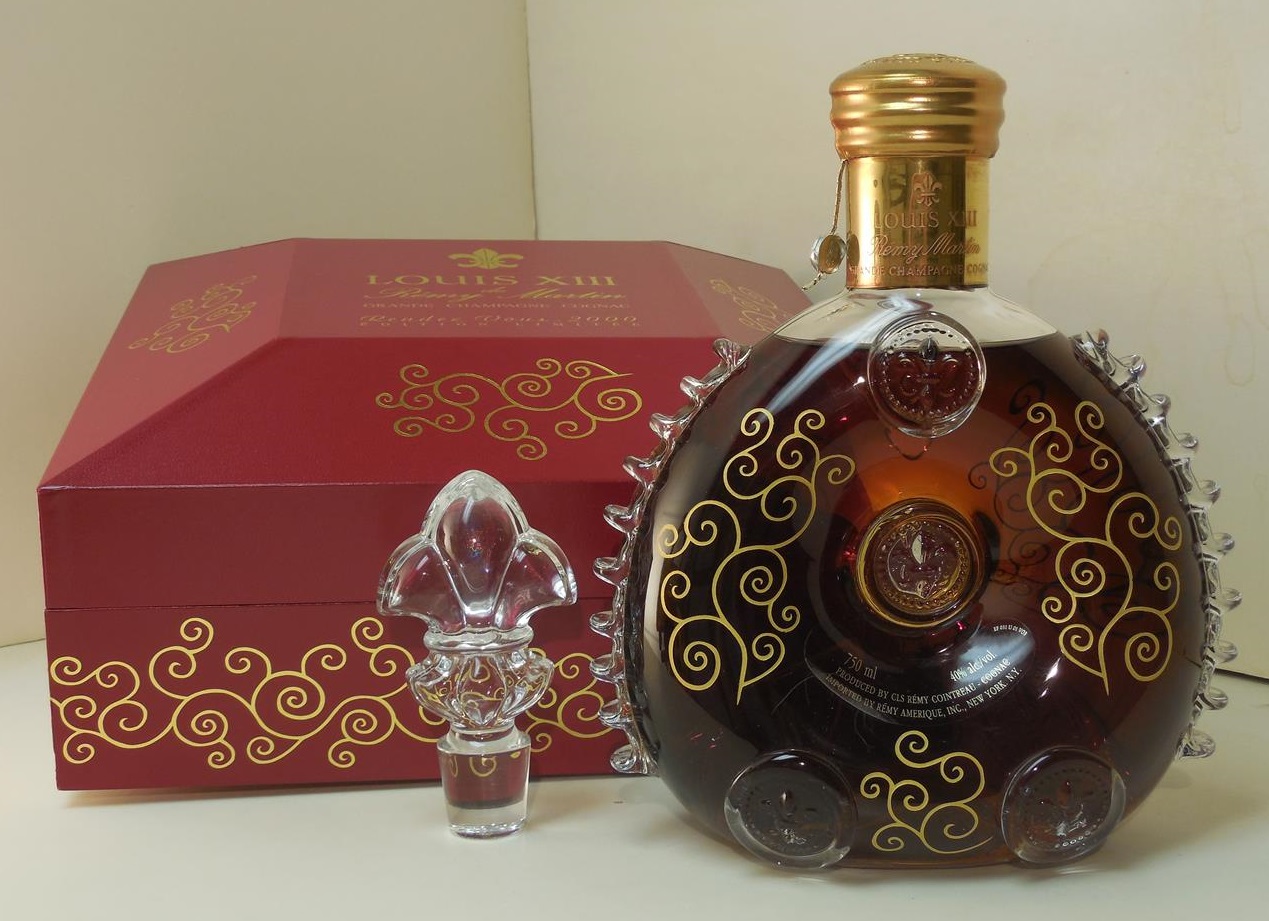 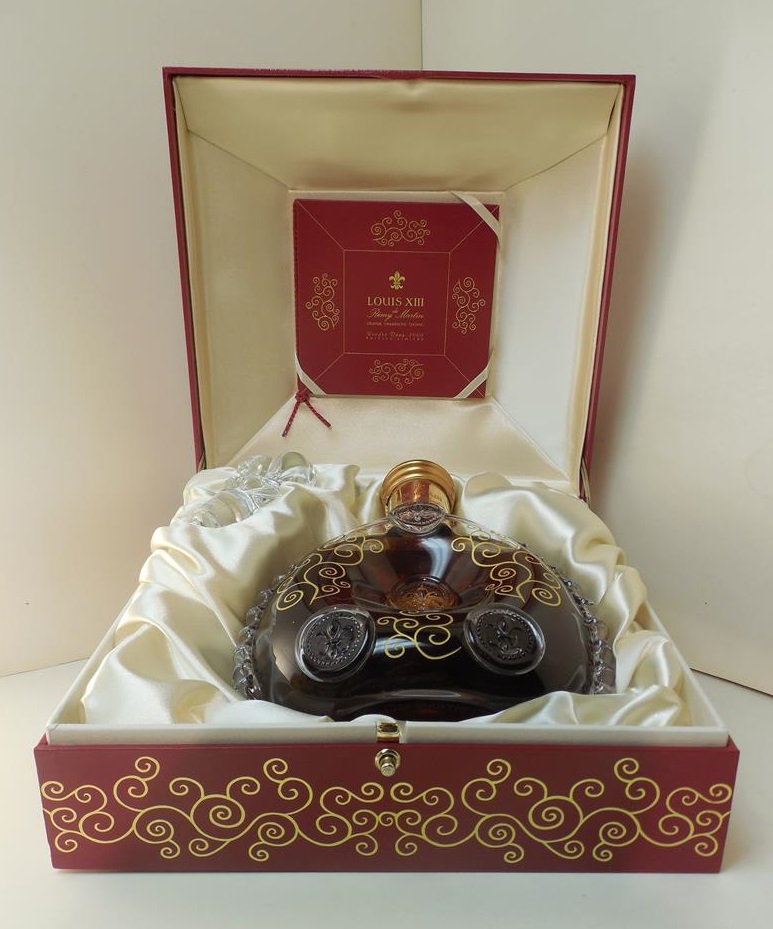 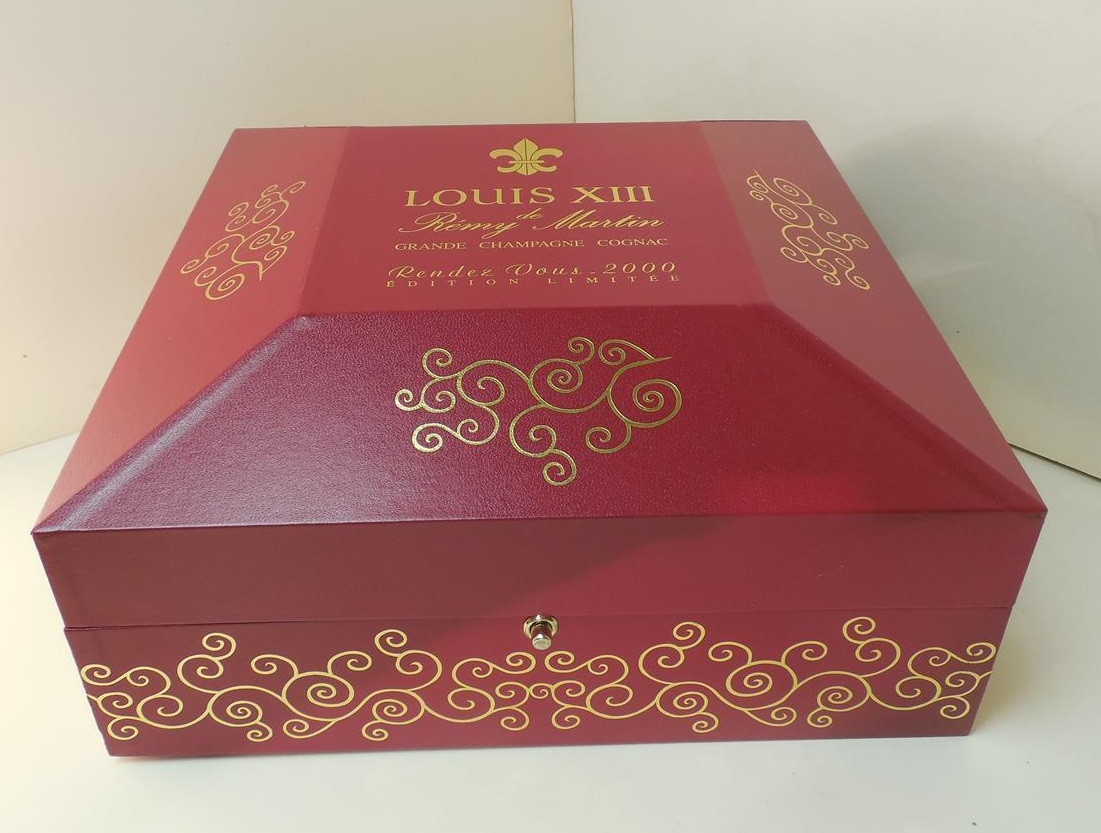 |
This special edition "gold top" bottle was produced in 1999 to "prepare" for the new millenium. The name urges us to make an appointment to meet again in year 2000. The content is "ordinary" Louis XIII cognac - if there is such a thing - but special artwork on the bottle and presentation case make it unique. |
